You are using an out of date browser. It may not display this or other websites correctly.
You should upgrade or use an alternative browser.
You should upgrade or use an alternative browser.
Reviews by Bosk
Filters
Show only:
Loading…
Bosk
1000+ Head-Fier
Pros: Boosts IEM performance impressively
Cons: Quite heavy
Let's talk about fetishes.
No, I'm not admitting to owning a waifu pillow... at least not yet. I mean audio fetishes, one of mine in particular being the benefits of solder joints vs friction-fit connections.
My audio pals are sick of me saying it, but I don't like friction-fit modular plugs or ConX type connectors.
Why? Because to my ears they sound worse than a solder joint in the same spot, and I know many audiophiles who agree. We've lacked hard data to validate our findings because everything's frustratingly subjective in this hobby, but at last a perfect test case has arrived.
Penon sent me their new ASOS+ cable in exchange for my thoughts which uses identical wire to the ASOS I reviewed (8 wires of 25AWG OCC copper litz & SPC) so only the connectors are different.
ASOS+ has a fixed "Purple Copper" 4.4mm plug, whereas ASOS uses a modular friction-fit 4.4mm plug.
Same wire, different connectors. Do they perform any different though?
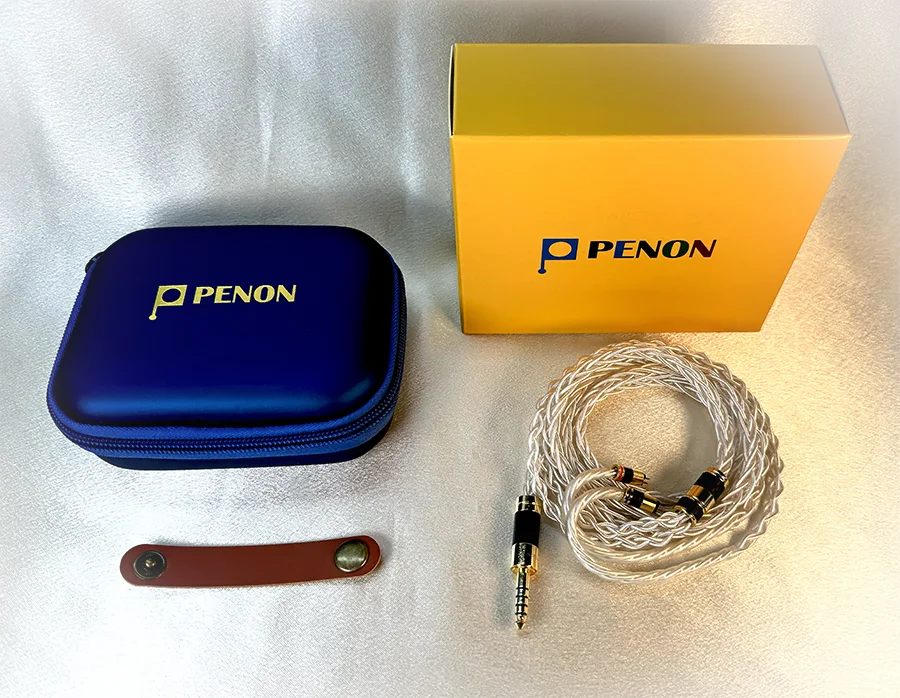
The USD $215 Penon ASOS+ arrives in a smallish cardboard box, inside is a medium-sized fabric carry case & leather cable holder.
The ASOS+ is available in your choice of 4.4mm or 3.5mm termination with 2pin connectors, interestingly there's no MMCX or modular-plug options. Instead, both the plug & 2pin connectors are high-end "Purple Copper" variants which apparently utilise palladium-plated copper.
You can also order the cable with or without clear heatshrink earhooks, which is a nice choice to have.

ASOS+ is supple by 8 wire cable standards thanks to its' soft PVC insulation, so stiffness isn't an issue. However at 53 grams this is a fairly chunky cable you'll notice more than slender 4 wire alternatives.
By larger cable standards ASOS+'s ergonomics are quite good, I do find the no-earhook version slightly more comfortable despite heatshrinked earhooks being the norm for larger cables.
The carbon-fiber "purple copper" plug, y-split & 2pin connectors are finished attractively, being fairly minimalist but with just enough bling to look premium.
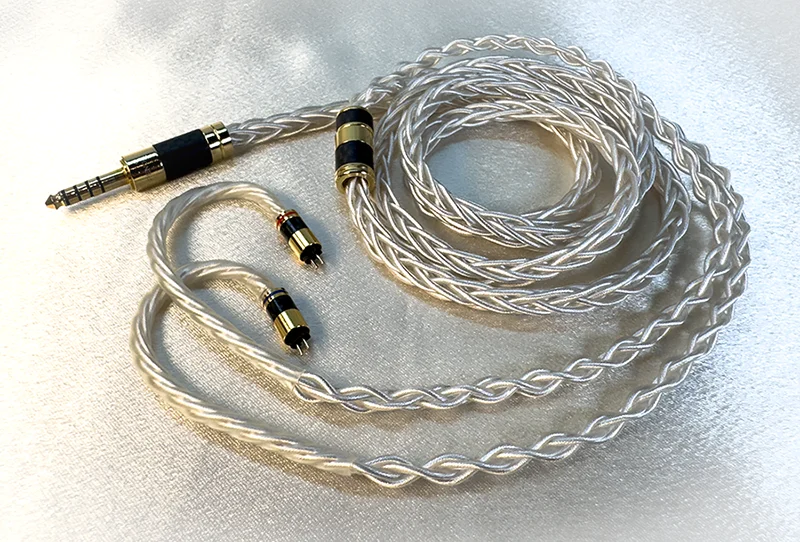
So how does ASOS+ perform? Very impressively by the standards of heavy 8 wire cables under $1000.
ASOS+ boosts IEM technical performance across the board. Soundstage width is typically the standout improvement with most IEMs, depth usually improves too.
Synergy is always crucial with cables so some IEMs will benefit more than others, generally you can expect slightly deeper bass, better dynamics, improved note weight, and a blacker background as well. Individual improvements are small, but cumulatively create a more open, refined & detailed presentation.
Treble is accentuated due to ASOS+ silver-plated conductors, so I'd be wary of pairing it with brighter IEMs unless you're a treblehead, but it doesn't sound etched like a lot of cheap SPC cables I've tried.
Tonality is actually quite good, the extra brightness is balanced out by a solid low end to deliver an open, clear sound that's transparent enough for the character of IEM you pair it with to shine through.
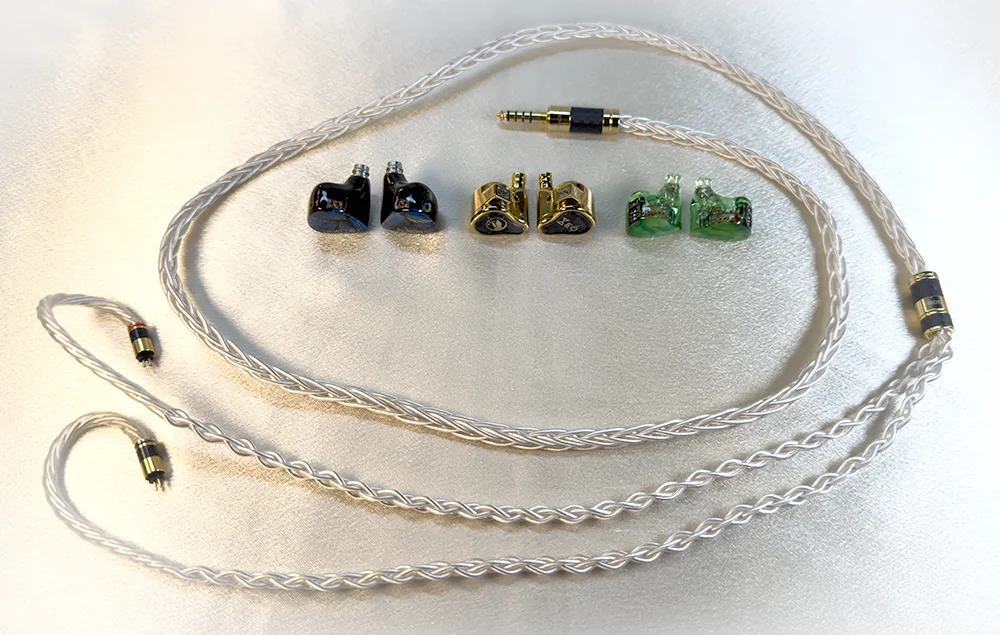
I tested the ASOS+ with several IEMs at hand to get a feel for how it altered their sound signatures.
Penon Quattro – 4xDD (USD $399)
The Quattros' soundstage isn't terribly wide on the stock cable and ASOS+ addresses this by deepening & widening it slightly, and with more space between instruments and a blacker background the presentation feels significantly more spacious.
ASOS+ is brighter than the stock cable which has greater midbass & lower midrange emphasis, but feels muffled whereas ASOS+ is more dynamic with deeper bass & improved note weight.
Penon Turbo - 6xBA (USD $549)
ASOS+ improves Turbo technical performance across the board. As with the Quattros the soundstage is deeper and especially wider, giving instruments more room to separation with blacker space around them. Dynamics, resolution & note weight also improve.
The Turbos' BA bass becomes tighter & shifts emphasis slightly towards midbass. Bass quantity on the stock cable is slightly higher, but the texture is mushier and I prefer the sonic balance of ASOS+.
Fir Audio XE6 – 1xEST 4xBA 1xDD (USD $3899)
XE6's stock 8 wire cable is no slouch, yet ASOS+ improves upon it in a number of areas. The soundstage is substantially wider and slightly deeper, with improved dynamics and a blacker background.
ASOS+ is much brighter, which aids the perception of clearer imaging and more effortless detail retrieval. The stock cable sounds much flatter, though potentially less fatiguing with muted lower treble.

I compared the ASOS+ to a number of other cables to get a better feel for its' characteristics & value.
Penon ASOS (USD $169)

ASOS uses identical wire to the ASOS+ - all that differs is the connectors, so we're comparing the ASOS+ fixed "purple copper" plug & 2pins to the ASOS' modular plug & lower grade 2pin connectors.
To my surprise the difference between the two cables isn't subtle, it's quite easy to hear. ASOS sounds less organic, with poorer dynamics, a narrower soundstage, and bass that doesn't go as deep.
ASOS+ sounds much less veiled with a wetter, more emotional midrange that feels less mechanical. I strongly recommend spending the extra on the ASOS+ if you're considering either cable.
NiceHCK DragonScale (USD $157)

Ergonomically DragonScale is lighter than ASOS+, but extremely stiff below the Y-split due to what I assume is added sheathing or shielding. ASOS+ is much more supple for practical use.
DragonScale's soundstage is noticeably flatter & narrower, with poorer dynamics, bass that doesn't go as deep and vaguer imaging.
DragonScale's background is slightly blacker, and the midrange is given particular emphasis with the illusion of higher resolution, though that may simply be because other frequencies are more attenuated.
Penon Renata (USD $269)
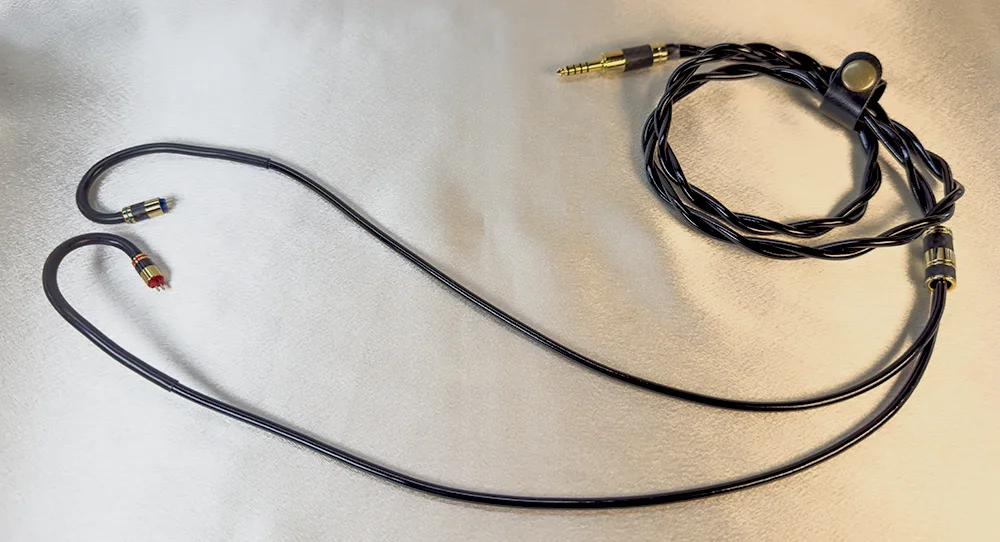
Renata is a cable I'm currently working on reviewing, so this is a sneak peek. Ergonomically it is thick & heavy, definitely less flexible than ASOS+ which I prefer ergonomically.
Renata's soundstage is narrower but deeper than ASOS+', imaging is a tad sharper, and dynamics are marginally better. Renata emphasises midbass more, whereas ASOS+ leans towards sub bass.
I find ASOS+ is brighter with a flatter but wider stage that can sound more spacious, whereas Renata more effortlessly resolves microdetails in a more 3D presentation with a blacker background.
Liquid Links Venom (USD $1089)
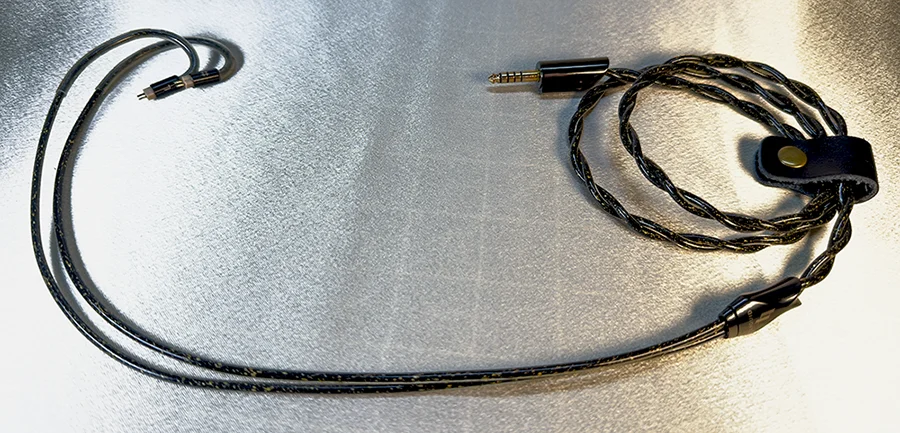
Venom weighs about as much as ASOS+ but is not as pliable so ergonomically I prefer the latter.
A very v-shaped cable, Venom emphasises sub bass which goes slightly deeper than ASOS+ but midbass is thinned out to such an extent bass feels leaner overall, with treble accentuated more strongly.
Venom also skews the midrange more towards the upper midrange with a tonality that can feel quite metallic, but the soundstage is slightly wider & deeper & imaging is definitely sharper. I'm skeptical that slightly improved technical performance is worth Venom's questionable tonality however.
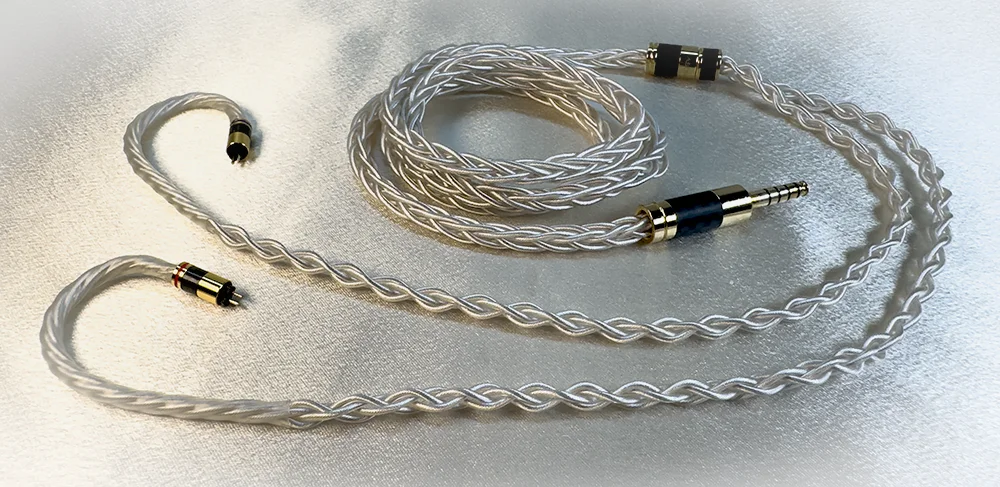
At USD $215 Penon ASOS+ isn't the most affordable cable, but it's seriously impressive.
It boosts IEM performance across the board without ruining tonality like cheaper silver-based cables.
It's been a big upgrade to the $3900 FiR XE6 stock cable, and will be right at home on high-end IEMs. Yes there's even higher-performing cables out there, but then you're spending close to $1000 or more.
What's pleased me most is comparing ASOS+ to ASOS - hearing the improvement connectors make.
The difference between them isn't subtle. It's massive.
ASOS sounds like a completely different cable even though the wire is the same. Which I take as proof that friction-fit modular plugs do indeed impair performance, as if there was ever any doubt.
Please guys, I beg you not to settle for sonically-inferior modular plugs on your cables. Yes the flexibility is handy, but with a quality fixed plug your ears will thank you!!
No, I'm not admitting to owning a waifu pillow... at least not yet. I mean audio fetishes, one of mine in particular being the benefits of solder joints vs friction-fit connections.
My audio pals are sick of me saying it, but I don't like friction-fit modular plugs or ConX type connectors.
Why? Because to my ears they sound worse than a solder joint in the same spot, and I know many audiophiles who agree. We've lacked hard data to validate our findings because everything's frustratingly subjective in this hobby, but at last a perfect test case has arrived.
Penon sent me their new ASOS+ cable in exchange for my thoughts which uses identical wire to the ASOS I reviewed (8 wires of 25AWG OCC copper litz & SPC) so only the connectors are different.
ASOS+ has a fixed "Purple Copper" 4.4mm plug, whereas ASOS uses a modular friction-fit 4.4mm plug.
Same wire, different connectors. Do they perform any different though?
Packaging

The USD $215 Penon ASOS+ arrives in a smallish cardboard box, inside is a medium-sized fabric carry case & leather cable holder.
The ASOS+ is available in your choice of 4.4mm or 3.5mm termination with 2pin connectors, interestingly there's no MMCX or modular-plug options. Instead, both the plug & 2pin connectors are high-end "Purple Copper" variants which apparently utilise palladium-plated copper.
You can also order the cable with or without clear heatshrink earhooks, which is a nice choice to have.
Ergonomics & Build Quality

ASOS+ is supple by 8 wire cable standards thanks to its' soft PVC insulation, so stiffness isn't an issue. However at 53 grams this is a fairly chunky cable you'll notice more than slender 4 wire alternatives.
By larger cable standards ASOS+'s ergonomics are quite good, I do find the no-earhook version slightly more comfortable despite heatshrinked earhooks being the norm for larger cables.
The carbon-fiber "purple copper" plug, y-split & 2pin connectors are finished attractively, being fairly minimalist but with just enough bling to look premium.
Sound Impressions

So how does ASOS+ perform? Very impressively by the standards of heavy 8 wire cables under $1000.
ASOS+ boosts IEM technical performance across the board. Soundstage width is typically the standout improvement with most IEMs, depth usually improves too.
Synergy is always crucial with cables so some IEMs will benefit more than others, generally you can expect slightly deeper bass, better dynamics, improved note weight, and a blacker background as well. Individual improvements are small, but cumulatively create a more open, refined & detailed presentation.
Treble is accentuated due to ASOS+ silver-plated conductors, so I'd be wary of pairing it with brighter IEMs unless you're a treblehead, but it doesn't sound etched like a lot of cheap SPC cables I've tried.
Tonality is actually quite good, the extra brightness is balanced out by a solid low end to deliver an open, clear sound that's transparent enough for the character of IEM you pair it with to shine through.
IEM Comparisons

I tested the ASOS+ with several IEMs at hand to get a feel for how it altered their sound signatures.
Penon Quattro – 4xDD (USD $399)
The Quattros' soundstage isn't terribly wide on the stock cable and ASOS+ addresses this by deepening & widening it slightly, and with more space between instruments and a blacker background the presentation feels significantly more spacious.
ASOS+ is brighter than the stock cable which has greater midbass & lower midrange emphasis, but feels muffled whereas ASOS+ is more dynamic with deeper bass & improved note weight.
Penon Turbo - 6xBA (USD $549)
ASOS+ improves Turbo technical performance across the board. As with the Quattros the soundstage is deeper and especially wider, giving instruments more room to separation with blacker space around them. Dynamics, resolution & note weight also improve.
The Turbos' BA bass becomes tighter & shifts emphasis slightly towards midbass. Bass quantity on the stock cable is slightly higher, but the texture is mushier and I prefer the sonic balance of ASOS+.
Fir Audio XE6 – 1xEST 4xBA 1xDD (USD $3899)
XE6's stock 8 wire cable is no slouch, yet ASOS+ improves upon it in a number of areas. The soundstage is substantially wider and slightly deeper, with improved dynamics and a blacker background.
ASOS+ is much brighter, which aids the perception of clearer imaging and more effortless detail retrieval. The stock cable sounds much flatter, though potentially less fatiguing with muted lower treble.
Cable Comparisons

I compared the ASOS+ to a number of other cables to get a better feel for its' characteristics & value.
Penon ASOS (USD $169)

ASOS uses identical wire to the ASOS+ - all that differs is the connectors, so we're comparing the ASOS+ fixed "purple copper" plug & 2pins to the ASOS' modular plug & lower grade 2pin connectors.
To my surprise the difference between the two cables isn't subtle, it's quite easy to hear. ASOS sounds less organic, with poorer dynamics, a narrower soundstage, and bass that doesn't go as deep.
ASOS+ sounds much less veiled with a wetter, more emotional midrange that feels less mechanical. I strongly recommend spending the extra on the ASOS+ if you're considering either cable.
NiceHCK DragonScale (USD $157)

Ergonomically DragonScale is lighter than ASOS+, but extremely stiff below the Y-split due to what I assume is added sheathing or shielding. ASOS+ is much more supple for practical use.
DragonScale's soundstage is noticeably flatter & narrower, with poorer dynamics, bass that doesn't go as deep and vaguer imaging.
DragonScale's background is slightly blacker, and the midrange is given particular emphasis with the illusion of higher resolution, though that may simply be because other frequencies are more attenuated.
Penon Renata (USD $269)

Renata is a cable I'm currently working on reviewing, so this is a sneak peek. Ergonomically it is thick & heavy, definitely less flexible than ASOS+ which I prefer ergonomically.
Renata's soundstage is narrower but deeper than ASOS+', imaging is a tad sharper, and dynamics are marginally better. Renata emphasises midbass more, whereas ASOS+ leans towards sub bass.
I find ASOS+ is brighter with a flatter but wider stage that can sound more spacious, whereas Renata more effortlessly resolves microdetails in a more 3D presentation with a blacker background.
Liquid Links Venom (USD $1089)

Venom weighs about as much as ASOS+ but is not as pliable so ergonomically I prefer the latter.
A very v-shaped cable, Venom emphasises sub bass which goes slightly deeper than ASOS+ but midbass is thinned out to such an extent bass feels leaner overall, with treble accentuated more strongly.
Venom also skews the midrange more towards the upper midrange with a tonality that can feel quite metallic, but the soundstage is slightly wider & deeper & imaging is definitely sharper. I'm skeptical that slightly improved technical performance is worth Venom's questionable tonality however.
Conclusion

At USD $215 Penon ASOS+ isn't the most affordable cable, but it's seriously impressive.
It boosts IEM performance across the board without ruining tonality like cheaper silver-based cables.
It's been a big upgrade to the $3900 FiR XE6 stock cable, and will be right at home on high-end IEMs. Yes there's even higher-performing cables out there, but then you're spending close to $1000 or more.
What's pleased me most is comparing ASOS+ to ASOS - hearing the improvement connectors make.
The difference between them isn't subtle. It's massive.
ASOS sounds like a completely different cable even though the wire is the same. Which I take as proof that friction-fit modular plugs do indeed impair performance, as if there was ever any doubt.
Please guys, I beg you not to settle for sonically-inferior modular plugs on your cables. Yes the flexibility is handy, but with a quality fixed plug your ears will thank you!!
Bosk
Thank you SteveK27! It's an absolute treat to see you taking an interest in one of my reviews - I know you're even more passionate about cables than I am. 

Bosk
1000+ Head-Fier
Pros: Superb tonality, rich midrange, punchy bass, exemplary cohesion
Cons: Dark treble, larger fit, thin cable
Do you listen to hear the music, or feel it?
Recently I reviewed Penon's 4xDD Quattros and was starstruck from first listen, in fact they've become my #1 choice under $500.
The Quattro magic lies in their tonality - effortlessly rendering instruments & voices in a way that feels right, but without sounding "correct" in audio parlance.
Fascinating how when we absorb music what we hear, as opposed to what we feel, can be so different. Perhaps that's why less & less I enjoy earphones that portray melodies coldly & clinically.
So when Penon sent me a pair of their new Fan2 IEMs in exchange for a my thoughts I had no idea they're much akin to the Quattros - born to magnify musical enjoyment through feel, rather than thought.
...and discovering this delighted me.
Yes, I'm ready to abandon the world of analysing every note to the nth degree, fixating on the minutia whilst losing sense of the whole. Are you prepared to embrace this path with me? Then read on.
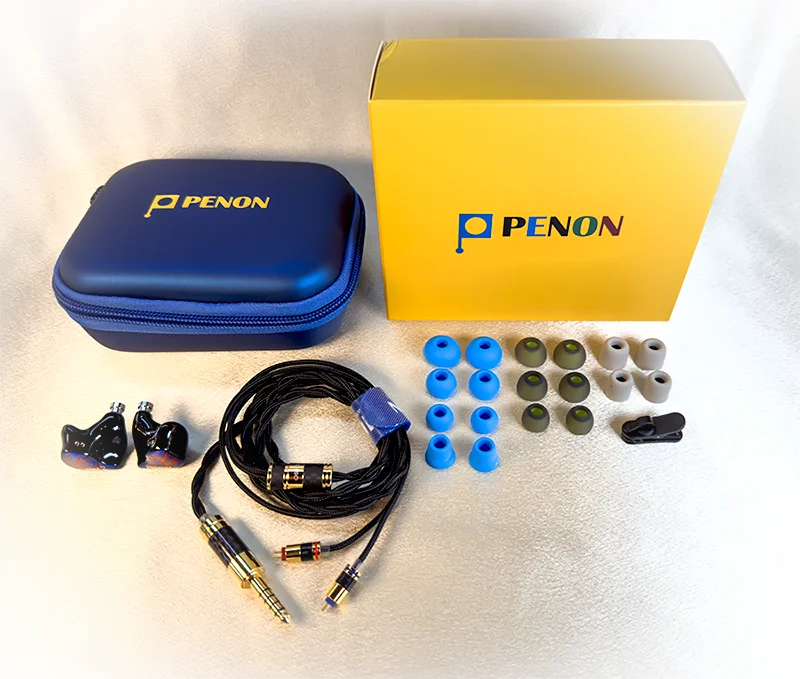
The USD $279 Penon Fan2s arrive in a small cardboard box, inside is a synthetic blue carry case large enough to comfortably house the earphones whilst remaining flat enough to fit in a jacket pocket.
The IEMs and cable, two sets of silicone & one set of foam eartips are included along with a shirt clip.
Speaking of the stock cable, Penon have included their 2pin black nylon-sheathed OS133 which uses OFC silver-plated conductors & sells separately for $99, with your choice of 4.4, 3.5 or 2.5mm plug.
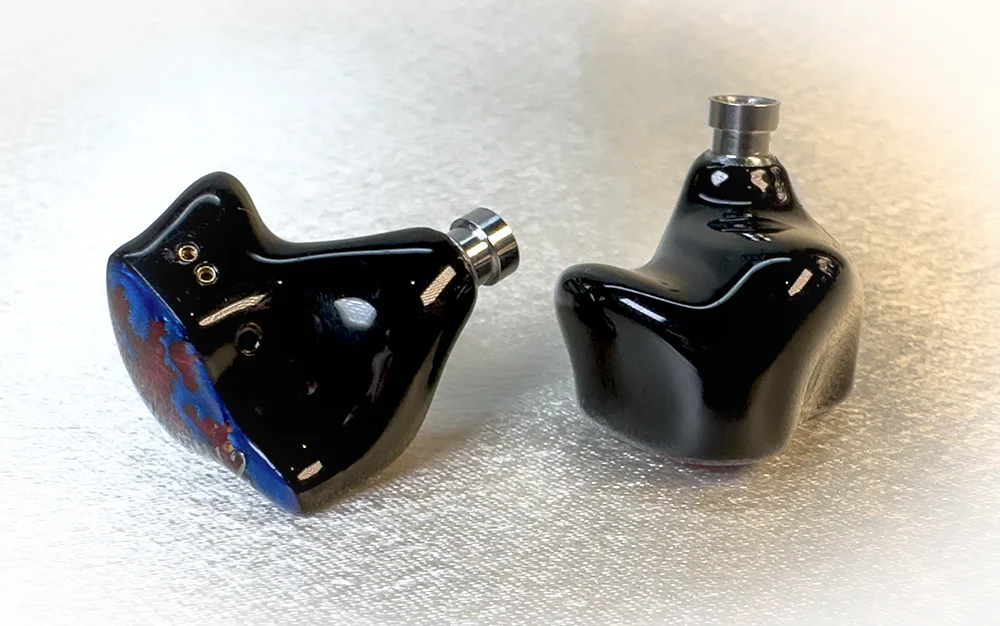
The Fan2s are 3D printed from medical grade resin and feel extremely smooth against the skin, fully vented for pressure relief.
They're on the larger side by the standards of IEMs with lower driver counts, without being enormous. Fit is a personal thing, and though I find them nicely sculpted to my ear geometry they do stick out quite far.
Comfort is reasonable and can keep them in my ears for hours without issue, but wouldn't say they're the most comfortable IEMs Penon have sent me with the DOMES being more shapely & Turbos smaller.
The stock OS133 cable is incredibly thin & light which aids comfort, in fact I almost wish it contained four rather than two wires but I do have a preference towards chunkier cables these days.
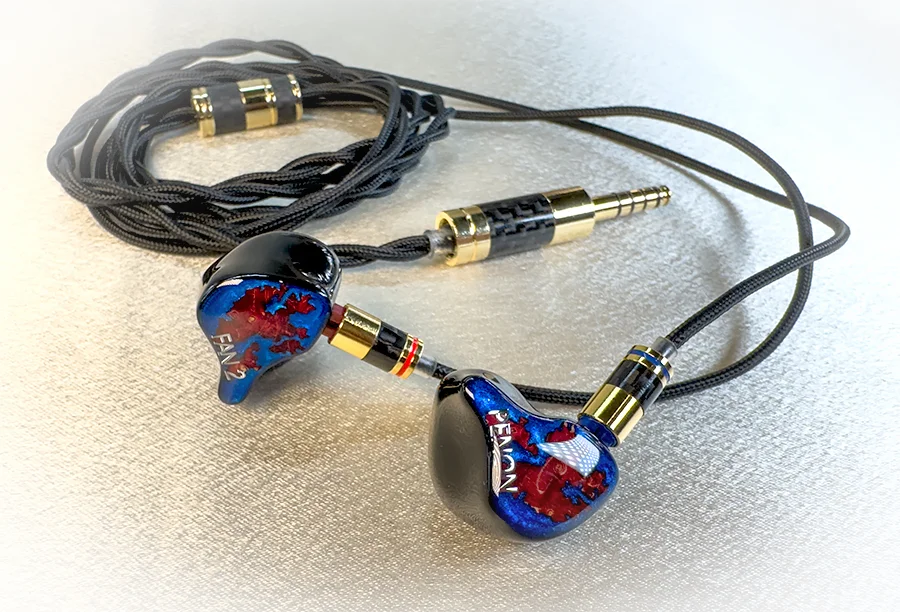
I used a Luxury & Precision P6 Pro set to hi-gain mode at 6/60 volume to evaluate the Fan2s. My taste consists largely of EDM, Orchestral, Film Scores & Vintage Rock and I listen at lower volumes.
The Fan2s use two 6mm 'crystal-plated biological diaphragm' DDs to deliver powerful sub bass, one Sonion BA for the midrange which is very smooth & rich, and a Knowles BA for treble which is quite dark.
Bass
The Fan2 dual-DDs deliver impressive bass with an emphasis on midbass, but sub bass isn't lacking. It isn't slow or bloated, but is kept in check to avoid overshadowing the midrange with excess warmth.
Bass texture is satisfyingly visceral with an impressive amount of thump - this is a real highlight where the Fan2s punch well above their weight, with punchy being an apt description.
However bassheads may be left wishing for greater bass quantity, as although there's sufficient low end for bass-driven genres to be satisfying, Penon have elected to keep things more neutral.
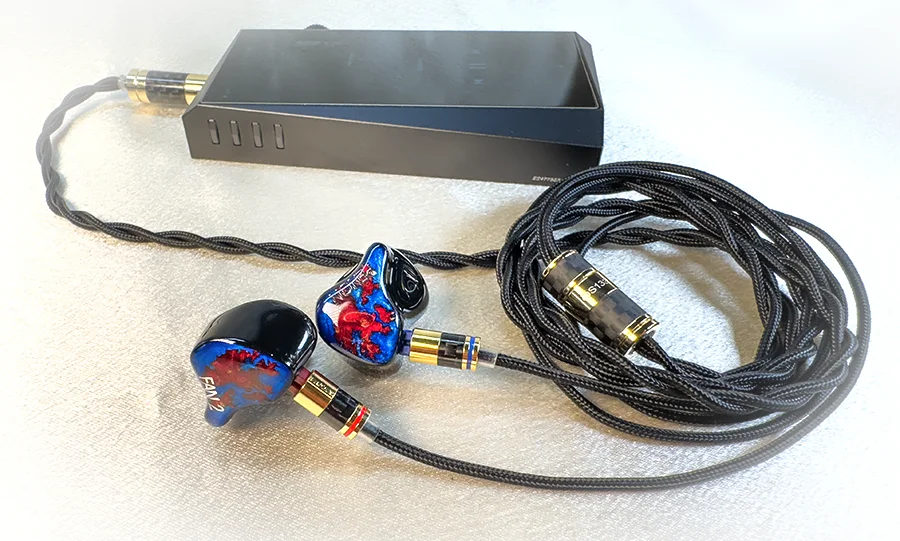
Midrange
The Fan2s' midrange is the star of the show, with a refined tonality befitting more expensive IEMs.
Vocals aren't shouty or excessively forward, with an even balance between the lower & upper midrange. Voices are rendered with pleasing warmth and smoothness and are capably resolving with superbly delicate texture.
Penon IEMs often deliver a superb midrange experience and the Fan2s carry on that tradition.
Treble
This is Fan2's weakest area, which Penon have wisely de-emphasised to focus attention on its' strengths.
The single Knowles BA does a capable job but upper treble sparkle is largely absent, resulting in fairly dark treble that's less likely to fatigue, cementing the presentation's feeling of smoothness & refinement.
The Fan2's aren't as dark as the Quattros I recently reviewed, but you may prefer slightly brighter IEMs for genres like classical where string instruments will benefit from more definition in this area.
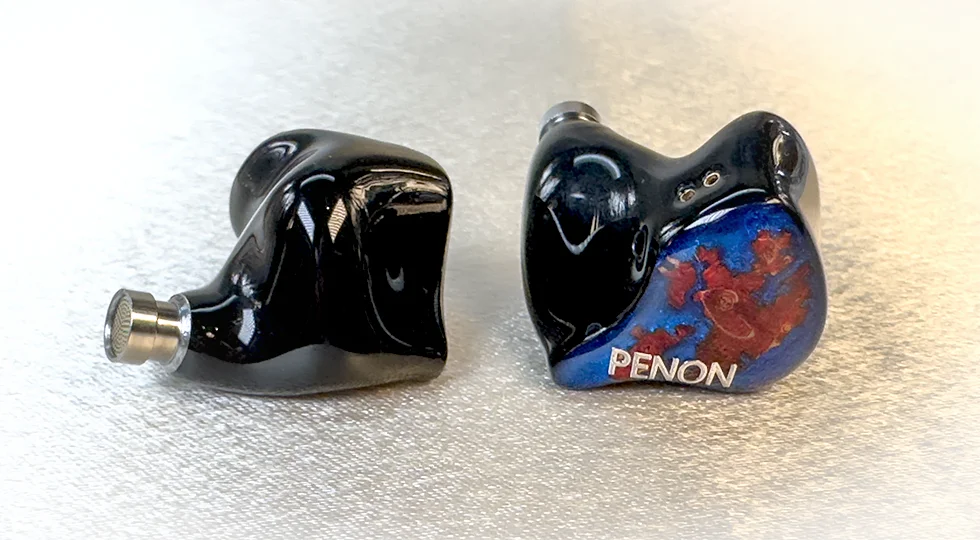
Fan2 technical performance is something of a mixed bag, so let's start with the good.
Coherency is excellent, contributing to the Fan2s being very non-fatiguing for longer listening sessions. By contrast dynamics are on the weaker side, perhaps a culprit of the smoother presentation.
Soundstage dimensions are nothing out of the ordinary for this price, width is fairly good without feeling artificially stretched, avoiding claustrophobia. Depth is decent without being exceptional, thankfully not completely flat like many budget IEMs.
Imaging is solid, though greater treble emphasis would've improved it further, and resolution is very impressive through the midrange where vocals are well articulated but weaker in the treble area.

I compared the Fan2s to other IEMs with a Luxury & Precision P6 Pro set to hi-gain at 6/60 volume.
NiceHCK F1 Pro – 1xPlanar (USD $99)

The F1 Pros are much brighter to the point some may find them slightly sibilant, and by comparison sound thin with a palpable lack of note weight.
F1 Pro vocals can be shouty but less resolving than those of the Fan2s, the NiceHCKs are also much less bassy with bass texture not as satisfying either.
The F1 Pros do boast better dynamics with a blacker background & better imaging, but the Fan2s feel more refined with greater midbass & lower midrange presence creating a smoother, darker sound.
Simgot EA1000 - 1xDD 1xPassive Radiator (USD $219) – used with Simgot LC7 Cable (USD $69)
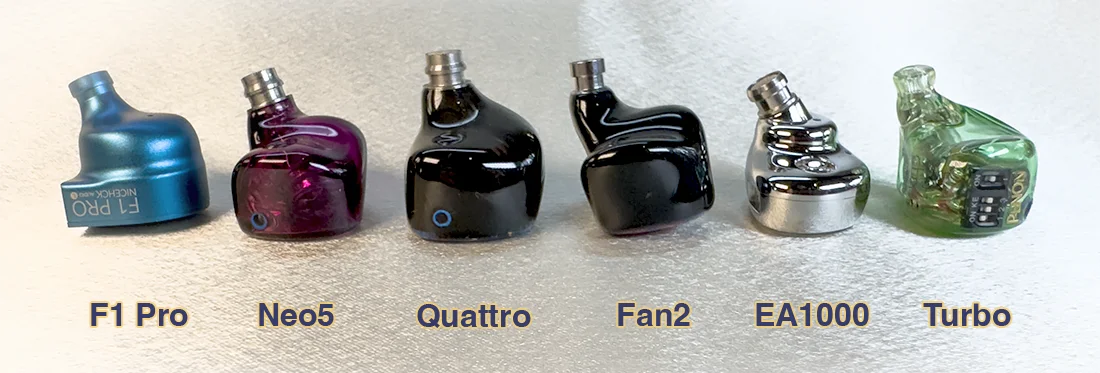
Simgot's LC7 cable elevates the EA1000s' technical performance substantially so I generally keep them paired, making this a tough matchup for the Fan2s.
The EA1000s have a much more fun & bouncy v-shaped sound which is significantly brighter than the Fan2s but less smooth & refined. The EA1000s possess deeper sub bass but slightly mushier bass texture, with better dynamics, a wider soundstage, and slightly improved resolution.
The EA1000s' DD driver also feels slightly faster, but tonality is a problem with excessive upper midrange leading to vocals that lack weight. Whereas the Fan2s possess much more midbass and a deeper soundstage, and generally sound far more earthy & natural but also significantly darker.
ISN Neo5 – 4xBA 1xDD (USD $289)

The Neo5s are much brighter, energetic & v-shaped with a thinner midrange than the warmer Fan2s, emphasising the upper midrange slightly more which result in vocals being occasionally shouty.
Neo5s are more bombastic with slower, more satisfying bass texture and more powerful sub bass making them a better choice for bassheads, and they're also far more dynamic.
However the Neo5s are more aggressive whereas the Fan2s are smoother & more coherent with a blacker background and slightly wider soundstage, painting a more refined but less excited picture.
Penon Quattro – 4xDD (USD $399)

The Quattros are similar to the Fan2s, but smoother & darker with an even thicker, warmer midrange.
Quattro sub bass goes deeper and bass quantity is higher in general, note weight is superb and dynamics are also a step up from Fan2, as is Quattro midrange resolution.
I find the Quattros' tonality is almost flawless since no BA drivers are used, but the Fan2's DDs feel slightly more nimble. I recommend purchasing the Quattros if you want to double down on that smooth, dark & refined sound whereas the Fan2s feel slightly more neutral & excited but less bodied.
Penon Turbo - 6xBA (USD $549)

The all-BA Turbos sound quite different, being much brighter with greater upper midrange emphasis, definitely more aggressive and occasionally shouty.
The Turbos' BA bass is very capable but lacks the texture of the Fan2s' twin DDs, though overall bass quantity may be higher and their bias is weighted towards midbass.
The all-BA Turbo configuration results in higher technical performance with greater resolution, a blacker background and sharper imaging, and instruments that stay separated during busy passages more easily. However the Fan2s have better note weight with a much smoother, warmer tonality I prefer.
NiceHCK Blacksoul (USD $50)

A surprisingly great pairing right off the bat, BlackSoul thickens the lower midrange even further, improves dynamics and slightly deepens the soundstage.
Vocals come forward & midrange resolution goes up a notch, note weight is also a bit better. I don't hear BlackSoul darkening the treble in this pair-up either, despite it being known for that.
NiceHCK FirstTouch (USD $89)
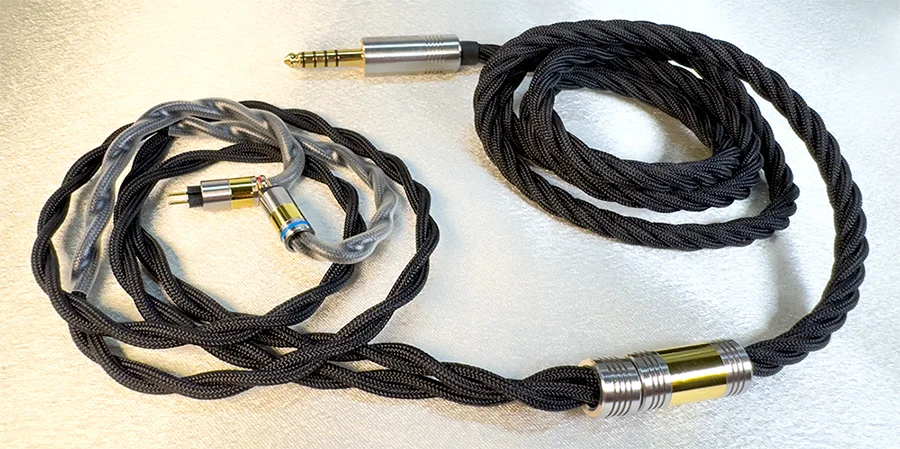
This is another satisfying pairing with FirstTouch widening the stage and improving note weight as BlackSoul did.
However FirstTouch's shielded (or at least heavily-sheathed) nature also creates a blacker background with resolution up across the board, along with sharper imaging.
Penon Obsidian (USD $149)
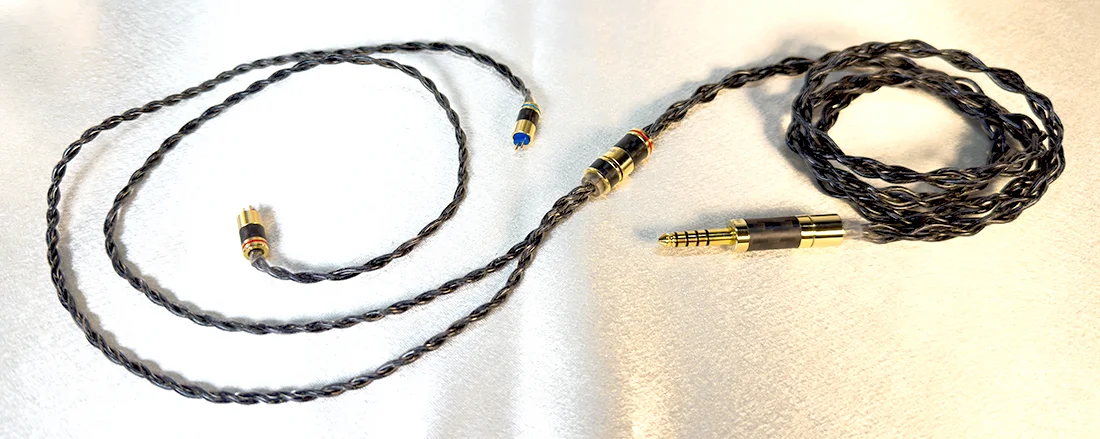
I'm using the 4.4mm Rhodium plug on the modular Obsidian cable in this pair up, and immediately notice higher midrange resolution with a blacker background & sharper imaging.
Note weight is also improved, as are dynamics, stage dimensions feel largely unchanged but treble seems slightly less prominent, though it doesn't negatively impact tonality.
Effect Audio Ares S 4 Wire (USD $179)

Ares S increases resolution across the board, improves note weight and dynamics in particular are improved substantially.
The entire presentation feels punchier and more bass driven, and the stage is also slightly deeper. This is a very impressive pairing for the excellent dynamics alone.
Penon ASOS+ (USD $215)
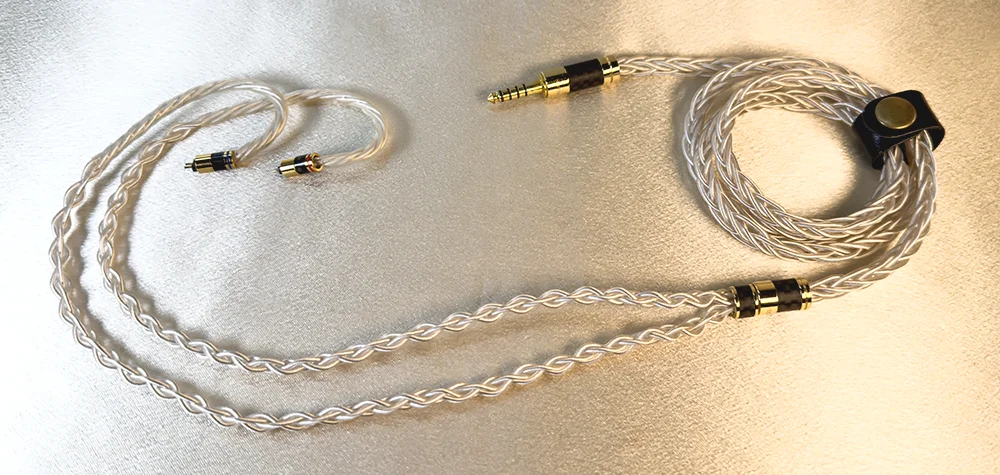
This is something of a sneak peek as I'm currently working on a review of this impressive new cable.
ASOS+ widens & deepens the stage more than other cables I tried, boosting the impression of space between each instrument substantially.
Bass is deeper though it's mostly midbass that benefits, resolution & dynamics are both improved and treble is a little brighter too. This is the sort of pairing that exemplifies the difference cables can make.
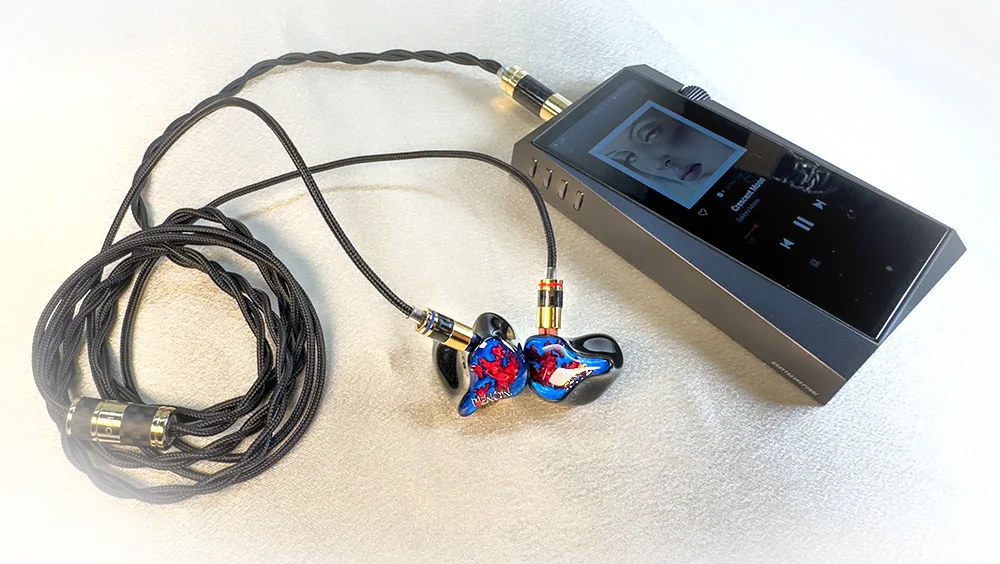
I've gravitated to a warmer sound over the last few months, so the Penon Fan2s have tickled my fancy.
They're capable all-rounders with a beautifully organic midrange & satisfying bass thump, plus great cohesiveness. All three of those traits I value highly in earphones, so it's no surprise I'm impressed.
Nitpicks? My experiments suggest the stock cable leaves much room for sonic improvement, the shells aren't as petit as some other Penon IEMs, and the Fan2s are quite dark in the treble which won't appeal to everyone. Oh, and dynamics could be better.
What they do have is a lovely smooth refinement one rarely encounters for $279, allowing us to sit back & listen for hours in complete security our ears won't be pestered by troublesome peaks.
The Fan2s remove those impediments to enjoyment, leaving behind sonic landscapes of richly emotional texture I will relish exploring.
Recently I reviewed Penon's 4xDD Quattros and was starstruck from first listen, in fact they've become my #1 choice under $500.
The Quattro magic lies in their tonality - effortlessly rendering instruments & voices in a way that feels right, but without sounding "correct" in audio parlance.
Fascinating how when we absorb music what we hear, as opposed to what we feel, can be so different. Perhaps that's why less & less I enjoy earphones that portray melodies coldly & clinically.
So when Penon sent me a pair of their new Fan2 IEMs in exchange for a my thoughts I had no idea they're much akin to the Quattros - born to magnify musical enjoyment through feel, rather than thought.
...and discovering this delighted me.
Yes, I'm ready to abandon the world of analysing every note to the nth degree, fixating on the minutia whilst losing sense of the whole. Are you prepared to embrace this path with me? Then read on.
Packaging

The USD $279 Penon Fan2s arrive in a small cardboard box, inside is a synthetic blue carry case large enough to comfortably house the earphones whilst remaining flat enough to fit in a jacket pocket.
The IEMs and cable, two sets of silicone & one set of foam eartips are included along with a shirt clip.
Speaking of the stock cable, Penon have included their 2pin black nylon-sheathed OS133 which uses OFC silver-plated conductors & sells separately for $99, with your choice of 4.4, 3.5 or 2.5mm plug.
Ergonomics

The Fan2s are 3D printed from medical grade resin and feel extremely smooth against the skin, fully vented for pressure relief.
They're on the larger side by the standards of IEMs with lower driver counts, without being enormous. Fit is a personal thing, and though I find them nicely sculpted to my ear geometry they do stick out quite far.
Comfort is reasonable and can keep them in my ears for hours without issue, but wouldn't say they're the most comfortable IEMs Penon have sent me with the DOMES being more shapely & Turbos smaller.
The stock OS133 cable is incredibly thin & light which aids comfort, in fact I almost wish it contained four rather than two wires but I do have a preference towards chunkier cables these days.
Sound Impressions

I used a Luxury & Precision P6 Pro set to hi-gain mode at 6/60 volume to evaluate the Fan2s. My taste consists largely of EDM, Orchestral, Film Scores & Vintage Rock and I listen at lower volumes.
The Fan2s use two 6mm 'crystal-plated biological diaphragm' DDs to deliver powerful sub bass, one Sonion BA for the midrange which is very smooth & rich, and a Knowles BA for treble which is quite dark.
Bass
The Fan2 dual-DDs deliver impressive bass with an emphasis on midbass, but sub bass isn't lacking. It isn't slow or bloated, but is kept in check to avoid overshadowing the midrange with excess warmth.
Bass texture is satisfyingly visceral with an impressive amount of thump - this is a real highlight where the Fan2s punch well above their weight, with punchy being an apt description.
However bassheads may be left wishing for greater bass quantity, as although there's sufficient low end for bass-driven genres to be satisfying, Penon have elected to keep things more neutral.

Midrange
The Fan2s' midrange is the star of the show, with a refined tonality befitting more expensive IEMs.
Vocals aren't shouty or excessively forward, with an even balance between the lower & upper midrange. Voices are rendered with pleasing warmth and smoothness and are capably resolving with superbly delicate texture.
Penon IEMs often deliver a superb midrange experience and the Fan2s carry on that tradition.
Treble
This is Fan2's weakest area, which Penon have wisely de-emphasised to focus attention on its' strengths.
The single Knowles BA does a capable job but upper treble sparkle is largely absent, resulting in fairly dark treble that's less likely to fatigue, cementing the presentation's feeling of smoothness & refinement.
The Fan2's aren't as dark as the Quattros I recently reviewed, but you may prefer slightly brighter IEMs for genres like classical where string instruments will benefit from more definition in this area.
Technical Performance

Fan2 technical performance is something of a mixed bag, so let's start with the good.
Coherency is excellent, contributing to the Fan2s being very non-fatiguing for longer listening sessions. By contrast dynamics are on the weaker side, perhaps a culprit of the smoother presentation.
Soundstage dimensions are nothing out of the ordinary for this price, width is fairly good without feeling artificially stretched, avoiding claustrophobia. Depth is decent without being exceptional, thankfully not completely flat like many budget IEMs.
Imaging is solid, though greater treble emphasis would've improved it further, and resolution is very impressive through the midrange where vocals are well articulated but weaker in the treble area.
IEM Comparisons

I compared the Fan2s to other IEMs with a Luxury & Precision P6 Pro set to hi-gain at 6/60 volume.
NiceHCK F1 Pro – 1xPlanar (USD $99)

The F1 Pros are much brighter to the point some may find them slightly sibilant, and by comparison sound thin with a palpable lack of note weight.
F1 Pro vocals can be shouty but less resolving than those of the Fan2s, the NiceHCKs are also much less bassy with bass texture not as satisfying either.
The F1 Pros do boast better dynamics with a blacker background & better imaging, but the Fan2s feel more refined with greater midbass & lower midrange presence creating a smoother, darker sound.
Simgot EA1000 - 1xDD 1xPassive Radiator (USD $219) – used with Simgot LC7 Cable (USD $69)

Simgot's LC7 cable elevates the EA1000s' technical performance substantially so I generally keep them paired, making this a tough matchup for the Fan2s.
The EA1000s have a much more fun & bouncy v-shaped sound which is significantly brighter than the Fan2s but less smooth & refined. The EA1000s possess deeper sub bass but slightly mushier bass texture, with better dynamics, a wider soundstage, and slightly improved resolution.
The EA1000s' DD driver also feels slightly faster, but tonality is a problem with excessive upper midrange leading to vocals that lack weight. Whereas the Fan2s possess much more midbass and a deeper soundstage, and generally sound far more earthy & natural but also significantly darker.
ISN Neo5 – 4xBA 1xDD (USD $289)

The Neo5s are much brighter, energetic & v-shaped with a thinner midrange than the warmer Fan2s, emphasising the upper midrange slightly more which result in vocals being occasionally shouty.
Neo5s are more bombastic with slower, more satisfying bass texture and more powerful sub bass making them a better choice for bassheads, and they're also far more dynamic.
However the Neo5s are more aggressive whereas the Fan2s are smoother & more coherent with a blacker background and slightly wider soundstage, painting a more refined but less excited picture.
Penon Quattro – 4xDD (USD $399)

The Quattros are similar to the Fan2s, but smoother & darker with an even thicker, warmer midrange.
Quattro sub bass goes deeper and bass quantity is higher in general, note weight is superb and dynamics are also a step up from Fan2, as is Quattro midrange resolution.
I find the Quattros' tonality is almost flawless since no BA drivers are used, but the Fan2's DDs feel slightly more nimble. I recommend purchasing the Quattros if you want to double down on that smooth, dark & refined sound whereas the Fan2s feel slightly more neutral & excited but less bodied.
Penon Turbo - 6xBA (USD $549)

The all-BA Turbos sound quite different, being much brighter with greater upper midrange emphasis, definitely more aggressive and occasionally shouty.
The Turbos' BA bass is very capable but lacks the texture of the Fan2s' twin DDs, though overall bass quantity may be higher and their bias is weighted towards midbass.
The all-BA Turbo configuration results in higher technical performance with greater resolution, a blacker background and sharper imaging, and instruments that stay separated during busy passages more easily. However the Fan2s have better note weight with a much smoother, warmer tonality I prefer.
Cable Comparisons
I tested the Fan2s with a number of aftermarket cables to gauge how effectively they scale.NiceHCK Blacksoul (USD $50)

A surprisingly great pairing right off the bat, BlackSoul thickens the lower midrange even further, improves dynamics and slightly deepens the soundstage.
Vocals come forward & midrange resolution goes up a notch, note weight is also a bit better. I don't hear BlackSoul darkening the treble in this pair-up either, despite it being known for that.
NiceHCK FirstTouch (USD $89)

This is another satisfying pairing with FirstTouch widening the stage and improving note weight as BlackSoul did.
However FirstTouch's shielded (or at least heavily-sheathed) nature also creates a blacker background with resolution up across the board, along with sharper imaging.
Penon Obsidian (USD $149)

I'm using the 4.4mm Rhodium plug on the modular Obsidian cable in this pair up, and immediately notice higher midrange resolution with a blacker background & sharper imaging.
Note weight is also improved, as are dynamics, stage dimensions feel largely unchanged but treble seems slightly less prominent, though it doesn't negatively impact tonality.
Effect Audio Ares S 4 Wire (USD $179)

Ares S increases resolution across the board, improves note weight and dynamics in particular are improved substantially.
The entire presentation feels punchier and more bass driven, and the stage is also slightly deeper. This is a very impressive pairing for the excellent dynamics alone.
Penon ASOS+ (USD $215)

This is something of a sneak peek as I'm currently working on a review of this impressive new cable.
ASOS+ widens & deepens the stage more than other cables I tried, boosting the impression of space between each instrument substantially.
Bass is deeper though it's mostly midbass that benefits, resolution & dynamics are both improved and treble is a little brighter too. This is the sort of pairing that exemplifies the difference cables can make.
Conclusion

I've gravitated to a warmer sound over the last few months, so the Penon Fan2s have tickled my fancy.
They're capable all-rounders with a beautifully organic midrange & satisfying bass thump, plus great cohesiveness. All three of those traits I value highly in earphones, so it's no surprise I'm impressed.
Nitpicks? My experiments suggest the stock cable leaves much room for sonic improvement, the shells aren't as petit as some other Penon IEMs, and the Fan2s are quite dark in the treble which won't appeal to everyone. Oh, and dynamics could be better.
What they do have is a lovely smooth refinement one rarely encounters for $279, allowing us to sit back & listen for hours in complete security our ears won't be pestered by troublesome peaks.
The Fan2s remove those impediments to enjoyment, leaving behind sonic landscapes of richly emotional texture I will relish exploring.
Bosk
1000+ Head-Fier
Pros: Smooth, bass-heavy sound with softened treble
Impressive build quality & tremendous value
Impressive build quality & tremendous value
Cons: Rolled-off treble & BA midrange tonality won't suit everyone
How heavily should price influence our expectations?
Recently NiceHCK were kind enough to send me a pair of F1 Pros which I reviewed & liked, along with another set of free earphones... the DB2s.
Upon arrival I was shocked that their extravagant appearance belied their USD $22.99 pricetag, and was surprised to learn they sport a 1xDD 1xBA configuration when single-DDs are the norm at this price.
Putting aside how they can even build them for so little, I pondered a philosophical question - how forgiving should we be of imperfection when price is so constraining?
As someone more used to being wowed by $5000 earphones I knew it wouldn't be fair to hold the DB2s to the same standards, but they should at least deliver musical enjoyment to be worth buying.
So do they? Glad you asked, because the answer lies ahead.

The USD $22.99 NiceHCK DB2s arrive in a small cardboard box, inside are the earphones & cable, three sets of silicone eartips, a small PU carry pouch and of course the all-important waifu card!
The stock 2pin cable is reputedly 'high purity OFC' but sadly is available in 3.5mm termination only, which seems like a missed opportunity in a world of DAPs with 4.4mm balanced jacks.
Considering the extremely modest purchase cost the entire package feels more than sufficient, indeed I'm surprised a carry pouch was included which is a nice surprise.

Physically the DB2s are extremely light and nicely sculpted to fit your canals.
The resin shells are superbly smooth against the skin, and the faceplates are subjectively quite attractive. At a distance the DB2s could easily pass for IEMs worth hundreds dollars.
They're quite comfortable, and despite their modest weight are sculpted well enough that isolation is impressive. The aluminium nozzles don't grip eartips terribly well nor am I a fan of their protruding 2pin sockets, but those are minor quibbles.

I tested the DB2s with my my Astell & Kern SR35 in high-gain mode, requiring a volume level of 35.
The DB2s are quite bass heavy and L-shaped, with a forward upper midrange & fairly subdued treble.
Bass
Bass is definitely the star of the show, being satisfyingly punchy with sub bass slightly emphasised over midbass, and I find the balance between them quite pleasing. Bass quantity verges on basshead levels, but is kept in check enough for the DB2 to pass as all-rounders for most genres.
Bass texture feels a little one-note & mushy with a lack of bite, though I've no complaints given the price nor does it compromise my enjoyment of the DB2 low end. Only when swapping to IEMs with better bass texture do I really notice the difference.
There's ample DD-fueled grunt to make bass-driven music like EDM very satisfying with the DB2s.

Midrange
The DB2 midrange can be a little uneven, this is where you'll occasionally notice the tonality of the single BA coming through - which can feel slightly disjointed from the rest of the presentation at times.
The upper midrange is given greater prominence which helps render female vocals with extra clarity, but the lack of lower midrange warmth leads to a mild sense of hollowness.
Treble
Treble is inoffensively smooth & rolled off which is great if you're particularly treble sensitive, but does mean instruments like cymbals won't have the bite & definition you'll hear from more expensive IEMs.
However given DB2 treble can be slightly grainy its a smart decision to emphasise other frequencies & allow treble to take a back seat.

The DB2s aren't really geared for technical performance, but generally out-perform most budget single-DD IEMs in this area.
Beginning with positives, DB2 note weight is very good and their BA-fueled midrange resolution is impressive for the price, but resolution at higher & lower frequencies is much less impressive.
The soundstage is quite narrow & feels claustrophobic at times, and there's little depth as expected from a budget IEM. Imaging's a bit fuzzy due to the cramped stage dimensions & rolled-off treble.
Dynamics are average, and though the single BA helps keep instruments separated during busy passages, IEMs with higher driver counts do this better.
ISN Neo1 – 1xDD (USD $39)

Even lighter than the DB2s & similarly shaped, the Neo1s ‘disappear’ in my ears even more but the difference is slight, they also isolate a bit better. Needing 35 volume on the SR35 they’re easy to drive.
The Neo1's DD is slightly faster & keeps up with fast music better, and their presentation is much warmer and less v-shaped with greater lower midrange emphasis and less upper midrange present.
Note weight is better on the Neo1s, their background is blacker, resolution is slightly higher and instruments are separated a touch better. Individual differences are fairly minor, but collectively they make the Neo1s feel more refined than the DB2s.
Truthear Zero – 2xDD (USD $49)

The Zeros are bulky but only slightly heavier than the DB2s, they stick out quite far and don’t isolate as effectively but comfort levels are similar. Requiring 55 volume on the SR35 they’re a lot harder to drive.
The most notable difference is how much wider the Zero's soundstage is than the DB2's, though it is equally shallow. The Zeros also possess deeper bass but bass texture isn't any more satisfying.
The Zeros also have an edge in resolution and image better by virtue of having a wider stage to work with, instruments sound larger and stay separated during complex passages better.
NiceHCK F1 Pro – 1xPlanar (USD $99)

The F1 Pros’ small metal shells weigh next to nothing and are very comfortable in the ear, but isolation suffers since there isn’t a lot of mass blocking the ear canal. Requiring 47 volume on the SR35 they need a bit more power to drive.
The F1 Pros are significantly brighter and more v-shaped, with a slightly cool tonality, whereas the DB2s are warmer and more bass driven with greater bass quantity.
However the F1 Pros sound far less congested, with substantially higher resolution, a wider & deeper soundstage and blacker background, and their planar driver is also a much faster.
Simgot EM6L – 4xBA 1xDD (USD $109)

The EM6Ls are heavy and I notice the weight at times, however their shape is quite ergonomic & comfort is similar to the DB2, isolation is decent. Needing 47 volume on the SR35 they’re harder to drive.
The EM6Ls sound far more refined with multiple BA drivers keeping instruments separated during busy passages much better. They're also far brighter with excessive upper midrange thanks to their questionable Harman tuning, and I greatly prefer the DB2s tonality & note weight.
However EM6L technical performance is undoubtedly on a much higher level, with a far wider soundstage, more precise imaging, and substantially higher resolution.
ISN S8 (USD $32.50)

The stage is wider & treble emphasises more, resolution feels slightly higher but note weight is lower.
Sub bass is slightly increased, but the tonality is much cooler and I much prefer the warmer & thicker sound of the stock cable which also projects more forward vocals.
NiceHCK BlackSoul (USD $50)

More midbass is added, vocals feel a bit more resolving and the background is slightly blacker.
The soundstage is slightly wider & deeper and dynamics are a touch better, leading to the DB2s feeling more refined in this impressive pairing.
Penon Vocal (USD $69)
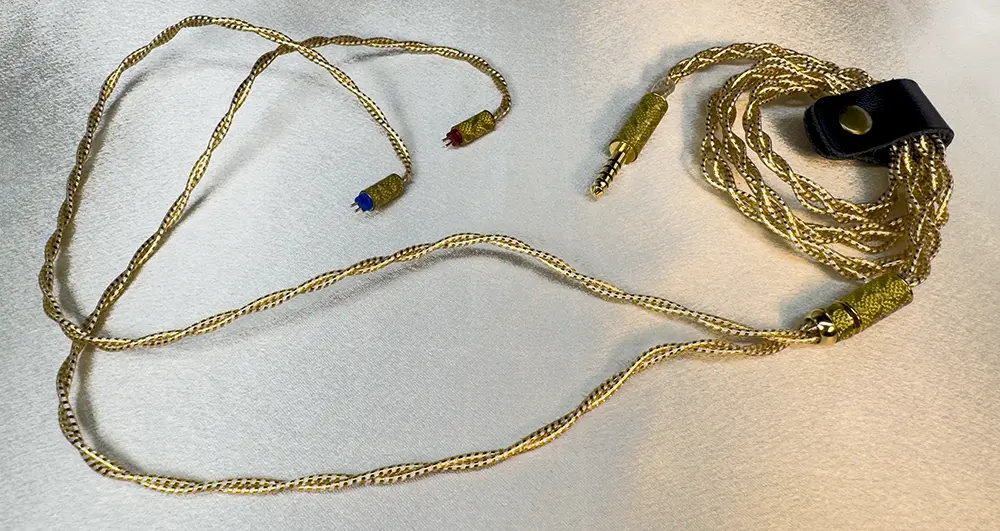
Dynamics improve, midrange resolution increases & the stage widens, with a slightly blacker background.
However the improvements are quite minor and the stock cable is satisfyingly warmer & more musical.
Simgot LC7 (USD $69)
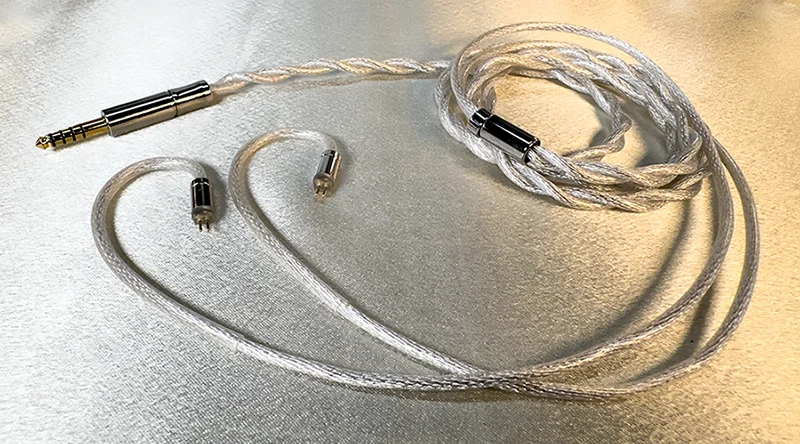
Dynamics are substantially improved, bass and particularly midbass is slightly deeper, and resolution improves very noticeably.
The soundstage is a little wider though no deeper, upper midrange is emphasised more and treble is also brighter. The tonality changes are fairly minor, but technical performance improvements are significant in this very impressive pairing which demonstrates the LC7's superb value.

It's a testament to the state of the market that I won't rave about the value of the NiceHCK DB2s.
There's so many great IEMs under $50 now that the DB2s are a great option, but one of many.
They're superbly comfortable, look way more expensive than they are & deliver a fun, bassy sound that's perfect for impressing newcomers to the hobby who are probably the intended audience.
Not everyone will love that their treble is rolled-off, but I prefer this approach for long listening sessions. Just know they aren't suitable for critical listening when you want to hear every tiny nuance & detail.
Pity the stock cable is 3.5mm only, their BA/DD implementation isn't the most coherent and I wish the soundstage was a bit wider, but at $22.99 am I willing to forgive those flaws? Yeah I think so.
The DB2s serve up my fill of musical enjoyment for less than the cost of a decent meal.
Recently NiceHCK were kind enough to send me a pair of F1 Pros which I reviewed & liked, along with another set of free earphones... the DB2s.
Upon arrival I was shocked that their extravagant appearance belied their USD $22.99 pricetag, and was surprised to learn they sport a 1xDD 1xBA configuration when single-DDs are the norm at this price.
Putting aside how they can even build them for so little, I pondered a philosophical question - how forgiving should we be of imperfection when price is so constraining?
As someone more used to being wowed by $5000 earphones I knew it wouldn't be fair to hold the DB2s to the same standards, but they should at least deliver musical enjoyment to be worth buying.
So do they? Glad you asked, because the answer lies ahead.
Packaging

The USD $22.99 NiceHCK DB2s arrive in a small cardboard box, inside are the earphones & cable, three sets of silicone eartips, a small PU carry pouch and of course the all-important waifu card!
The stock 2pin cable is reputedly 'high purity OFC' but sadly is available in 3.5mm termination only, which seems like a missed opportunity in a world of DAPs with 4.4mm balanced jacks.
Considering the extremely modest purchase cost the entire package feels more than sufficient, indeed I'm surprised a carry pouch was included which is a nice surprise.
Ergonomics

Physically the DB2s are extremely light and nicely sculpted to fit your canals.
The resin shells are superbly smooth against the skin, and the faceplates are subjectively quite attractive. At a distance the DB2s could easily pass for IEMs worth hundreds dollars.
They're quite comfortable, and despite their modest weight are sculpted well enough that isolation is impressive. The aluminium nozzles don't grip eartips terribly well nor am I a fan of their protruding 2pin sockets, but those are minor quibbles.
Sound Impressions

I tested the DB2s with my my Astell & Kern SR35 in high-gain mode, requiring a volume level of 35.
The DB2s are quite bass heavy and L-shaped, with a forward upper midrange & fairly subdued treble.
Bass
Bass is definitely the star of the show, being satisfyingly punchy with sub bass slightly emphasised over midbass, and I find the balance between them quite pleasing. Bass quantity verges on basshead levels, but is kept in check enough for the DB2 to pass as all-rounders for most genres.
Bass texture feels a little one-note & mushy with a lack of bite, though I've no complaints given the price nor does it compromise my enjoyment of the DB2 low end. Only when swapping to IEMs with better bass texture do I really notice the difference.
There's ample DD-fueled grunt to make bass-driven music like EDM very satisfying with the DB2s.

Midrange
The DB2 midrange can be a little uneven, this is where you'll occasionally notice the tonality of the single BA coming through - which can feel slightly disjointed from the rest of the presentation at times.
The upper midrange is given greater prominence which helps render female vocals with extra clarity, but the lack of lower midrange warmth leads to a mild sense of hollowness.
Treble
Treble is inoffensively smooth & rolled off which is great if you're particularly treble sensitive, but does mean instruments like cymbals won't have the bite & definition you'll hear from more expensive IEMs.
However given DB2 treble can be slightly grainy its a smart decision to emphasise other frequencies & allow treble to take a back seat.
Technical Performance

The DB2s aren't really geared for technical performance, but generally out-perform most budget single-DD IEMs in this area.
Beginning with positives, DB2 note weight is very good and their BA-fueled midrange resolution is impressive for the price, but resolution at higher & lower frequencies is much less impressive.
The soundstage is quite narrow & feels claustrophobic at times, and there's little depth as expected from a budget IEM. Imaging's a bit fuzzy due to the cramped stage dimensions & rolled-off treble.
Dynamics are average, and though the single BA helps keep instruments separated during busy passages, IEMs with higher driver counts do this better.
IEM Comparisons
I compared the DB2s with several IEMs using my Astell & Kern SR35 in high-gain, with a volume of 35.ISN Neo1 – 1xDD (USD $39)

Even lighter than the DB2s & similarly shaped, the Neo1s ‘disappear’ in my ears even more but the difference is slight, they also isolate a bit better. Needing 35 volume on the SR35 they’re easy to drive.
The Neo1's DD is slightly faster & keeps up with fast music better, and their presentation is much warmer and less v-shaped with greater lower midrange emphasis and less upper midrange present.
Note weight is better on the Neo1s, their background is blacker, resolution is slightly higher and instruments are separated a touch better. Individual differences are fairly minor, but collectively they make the Neo1s feel more refined than the DB2s.
Truthear Zero – 2xDD (USD $49)

The Zeros are bulky but only slightly heavier than the DB2s, they stick out quite far and don’t isolate as effectively but comfort levels are similar. Requiring 55 volume on the SR35 they’re a lot harder to drive.
The most notable difference is how much wider the Zero's soundstage is than the DB2's, though it is equally shallow. The Zeros also possess deeper bass but bass texture isn't any more satisfying.
The Zeros also have an edge in resolution and image better by virtue of having a wider stage to work with, instruments sound larger and stay separated during complex passages better.
NiceHCK F1 Pro – 1xPlanar (USD $99)

The F1 Pros’ small metal shells weigh next to nothing and are very comfortable in the ear, but isolation suffers since there isn’t a lot of mass blocking the ear canal. Requiring 47 volume on the SR35 they need a bit more power to drive.
The F1 Pros are significantly brighter and more v-shaped, with a slightly cool tonality, whereas the DB2s are warmer and more bass driven with greater bass quantity.
However the F1 Pros sound far less congested, with substantially higher resolution, a wider & deeper soundstage and blacker background, and their planar driver is also a much faster.
Simgot EM6L – 4xBA 1xDD (USD $109)

The EM6Ls are heavy and I notice the weight at times, however their shape is quite ergonomic & comfort is similar to the DB2, isolation is decent. Needing 47 volume on the SR35 they’re harder to drive.
The EM6Ls sound far more refined with multiple BA drivers keeping instruments separated during busy passages much better. They're also far brighter with excessive upper midrange thanks to their questionable Harman tuning, and I greatly prefer the DB2s tonality & note weight.
However EM6L technical performance is undoubtedly on a much higher level, with a far wider soundstage, more precise imaging, and substantially higher resolution.
Cable Comparisons
I tested the DB2s with a number of cables to see how effectively they respond to cable rolling.ISN S8 (USD $32.50)

The stage is wider & treble emphasises more, resolution feels slightly higher but note weight is lower.
Sub bass is slightly increased, but the tonality is much cooler and I much prefer the warmer & thicker sound of the stock cable which also projects more forward vocals.
NiceHCK BlackSoul (USD $50)

More midbass is added, vocals feel a bit more resolving and the background is slightly blacker.
The soundstage is slightly wider & deeper and dynamics are a touch better, leading to the DB2s feeling more refined in this impressive pairing.
Penon Vocal (USD $69)

Dynamics improve, midrange resolution increases & the stage widens, with a slightly blacker background.
However the improvements are quite minor and the stock cable is satisfyingly warmer & more musical.
Simgot LC7 (USD $69)

Dynamics are substantially improved, bass and particularly midbass is slightly deeper, and resolution improves very noticeably.
The soundstage is a little wider though no deeper, upper midrange is emphasised more and treble is also brighter. The tonality changes are fairly minor, but technical performance improvements are significant in this very impressive pairing which demonstrates the LC7's superb value.
Conclusion

It's a testament to the state of the market that I won't rave about the value of the NiceHCK DB2s.
There's so many great IEMs under $50 now that the DB2s are a great option, but one of many.
They're superbly comfortable, look way more expensive than they are & deliver a fun, bassy sound that's perfect for impressing newcomers to the hobby who are probably the intended audience.
Not everyone will love that their treble is rolled-off, but I prefer this approach for long listening sessions. Just know they aren't suitable for critical listening when you want to hear every tiny nuance & detail.
Pity the stock cable is 3.5mm only, their BA/DD implementation isn't the most coherent and I wish the soundstage was a bit wider, but at $22.99 am I willing to forgive those flaws? Yeah I think so.
The DB2s serve up my fill of musical enjoyment for less than the cost of a decent meal.
Bosk
1000+ Head-Fier
Pros: Minuscule form factor & price
Cons: Sacrifices sound for size
Does your dongle dangle daily?
I've been a Digital Audio Player user all the way back to the iPod days, but last year started using dongles with my Macbook & even conducted a dongle shootout recently.
So when Penon offered to send their new OS133 dongle in exchange for a review I agreed, and was surprised upon glancing the price - just $34.90.
The OS133 isn't the least inexpensive dongle but can't be far off, sitting at the opposite end of the spectrum from most sources I review. Its' shape is also a bit different, closer to a cable adapter than the usual rectangular dongle.
It'll be interesting to see how much bang-for-buck Penon crammed into this tiny gadget.. now let's get the show underway!

Penon's USD $34.90 OS133 USB-C DAC uses a Conexant CX31993 DAC chip with an Analog Devices MAX97220 amplifier to deliver PCM playback up to 32bit/384KHz - amazing for such a tiny device.
The USB-C connector and your choice of 4.4 or 3.5mm jack are linked with black nylon sheathed silver-plated OFC wire Penon use for their OS133 cable, with 133 cores per wire.
The OS133 is heavier than you'd expect thanks to its solid connectors, weighing similarly to fully-fledged dongles at 27 grams. What differentiates the OS133 is its' form factor - which feels like a heavy cable adapter, rather than a metal rectangle that dangles awkwardly from your phone.
That's one reason I've stuck with DAPs instead of dongles over the years: I don't like how they hang from my phone, always concerned they'll bump into it and scratch the glass. Whereas the OS133 feels more like a natural extension of the IEM cable.

Sonically the OS133 is quite v-shaped with an excited tuning that’s going to suit modern music. It isn't dramatically powerful so I wouldn't recommend it for headphones, but delivers ample volume with IEMs. Background noise levels are on the higher side by dongle standards, but not so loud as to be distracting during quiet passages of music.
The OS133 is quite bassy with sub bass in particular being satisfyingly elevated. Bass texture isn’t the most impressive I’ve heard but the extra quantity helps make up for it to generate a fun, bouncy sound that’ll suit modern Pop & EDM nicely.
Being a Penon product the midrange is fairly forward as you’d expect and decently engaging, definitely not recessed which is always a dealbreaker for me, though vocals can be a little dry at times.
Treble's quite elevated, but could use more refinement. I don’t find it distracting but treble notes are a bit one-note & lacking the smoothness you get from expensive DAPs, but this is a $34 dongle after all.

I find OS133 technical performance respectable for its' extremely modest price & form factor, just don't expect to be blown away here.
The soundstage is decently wide by dongle stands but doesn't have much depth. Resolution's better than expected from something so tiny, but lags well behind more expensive dongles & budget DAPs. It's not so fuzzy that it becomes distracting though, and everything vital for musical enjoyment comes through.
There's a bit of congestion particularly during busy passages when instruments can struggle to remain separated, you won't get much reverb & decay on individual notes nor are they rendered with the delicacy of a decent DAP, but that's no surprise either.
Dynamics are average which creates a smoother sound (which the v-shaped tuning helps 'wake up') and imaging is not the sharpest. Given the form factor I'm not sure how reasonable it'd be to expect more.

Using my M3 Macbook Air I compared the OS133 with other dongles to get a feel for how it stacks up.
Penon Tail (USD $74.90)

The Tail is vastly more powerful and even comes with a hi-gain switch, making it the better option if you use headphones. Even with IEMs the Tail delivers a far more dynamic, powerful sound.
Tail bass goes deeper and it feels more bass-driven, its' midrange is more forward with greater engagement, and its' stronger amplifier controls & separates instruments better during busy passages.
The Tail's soundstage is deeper and its' resolution especially through the midrange is higher, delivering performance closer to that of a full-fledged DAP. I recommend spending the extra on the Tail if you prioritise performance, but the OS133's form factor is still unbeatable in daily use.
Cayin RU7 (USD $289)
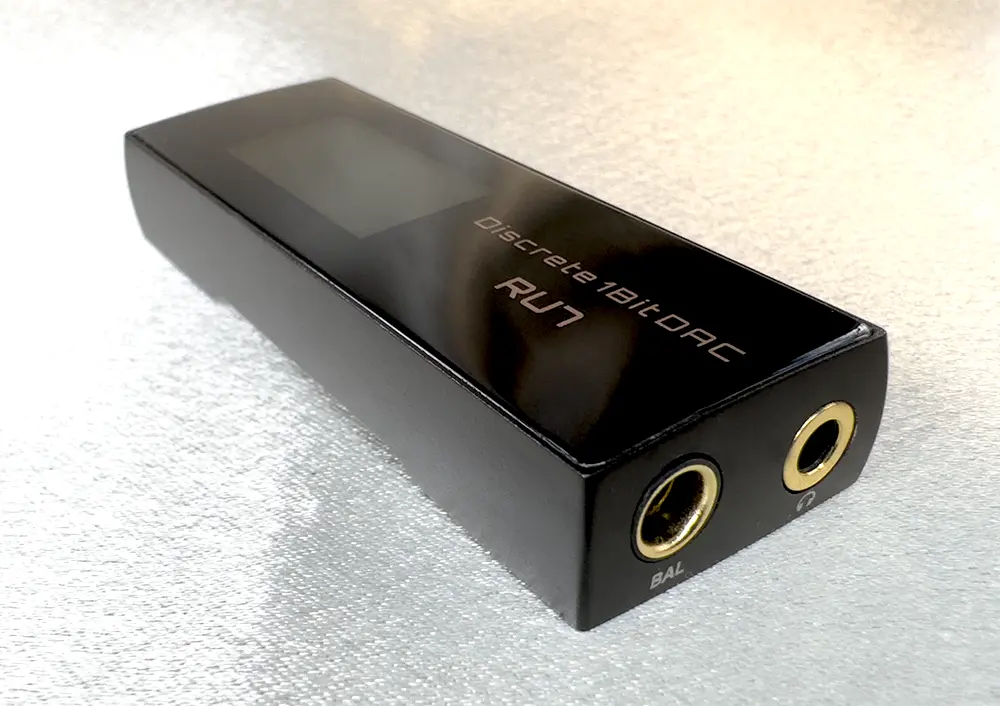
Sonically the RU7's superior refinement is reflected in its' vastly higher price.
The great strength of the RU7's 1bit DAC great is its' remarkably organic, vividly textured midrange which makes the OS133 sound quite digital. The OS133 is bassier in quantity but the RU7 has better bass texture, and is more musically engaging whereas the OS133 can feel flat & uninvolving by comparison.
The RU7 also features lower background noise, better dynamics and a blacker background, greater control during busy passages and a slightly wider stage, along with higher resolution delivered with greater nuance & delicacy.

For $34.90 the OS133 dongle sounds way better than listening straight out of a phone or laptop.
What really surprised me is the build quality - both wire & connectors wouldn't feel out of place on a cable worth a few hundred dollars. I have no idea how Penon can make them for this price.
Sonically the OS133 is probably good enough for a noisy train ride, and more convenient than a conventional dongle which will bang up against your phone. Using the OS133 feels like plugging IEMs directly into your phone through an adapter, ergonomically it's tough to beat and when price is taken into account is very easy to recommend.
I'd love to see Penon offer a few different wire choices as drop-down menu options, perhaps allowing a downgrade to cheaper wire or upgrading to pure silver for a different flavour.
The OS133 is perfect for max portability without the hassle of carrying & charging a separate device.
I've been a Digital Audio Player user all the way back to the iPod days, but last year started using dongles with my Macbook & even conducted a dongle shootout recently.
So when Penon offered to send their new OS133 dongle in exchange for a review I agreed, and was surprised upon glancing the price - just $34.90.
The OS133 isn't the least inexpensive dongle but can't be far off, sitting at the opposite end of the spectrum from most sources I review. Its' shape is also a bit different, closer to a cable adapter than the usual rectangular dongle.
It'll be interesting to see how much bang-for-buck Penon crammed into this tiny gadget.. now let's get the show underway!
Tech Specs & Ergonomics

Penon's USD $34.90 OS133 USB-C DAC uses a Conexant CX31993 DAC chip with an Analog Devices MAX97220 amplifier to deliver PCM playback up to 32bit/384KHz - amazing for such a tiny device.
The USB-C connector and your choice of 4.4 or 3.5mm jack are linked with black nylon sheathed silver-plated OFC wire Penon use for their OS133 cable, with 133 cores per wire.
The OS133 is heavier than you'd expect thanks to its solid connectors, weighing similarly to fully-fledged dongles at 27 grams. What differentiates the OS133 is its' form factor - which feels like a heavy cable adapter, rather than a metal rectangle that dangles awkwardly from your phone.
That's one reason I've stuck with DAPs instead of dongles over the years: I don't like how they hang from my phone, always concerned they'll bump into it and scratch the glass. Whereas the OS133 feels more like a natural extension of the IEM cable.
Sound Impressions

Sonically the OS133 is quite v-shaped with an excited tuning that’s going to suit modern music. It isn't dramatically powerful so I wouldn't recommend it for headphones, but delivers ample volume with IEMs. Background noise levels are on the higher side by dongle standards, but not so loud as to be distracting during quiet passages of music.
The OS133 is quite bassy with sub bass in particular being satisfyingly elevated. Bass texture isn’t the most impressive I’ve heard but the extra quantity helps make up for it to generate a fun, bouncy sound that’ll suit modern Pop & EDM nicely.
Being a Penon product the midrange is fairly forward as you’d expect and decently engaging, definitely not recessed which is always a dealbreaker for me, though vocals can be a little dry at times.
Treble's quite elevated, but could use more refinement. I don’t find it distracting but treble notes are a bit one-note & lacking the smoothness you get from expensive DAPs, but this is a $34 dongle after all.
Technical Performance

I find OS133 technical performance respectable for its' extremely modest price & form factor, just don't expect to be blown away here.
The soundstage is decently wide by dongle stands but doesn't have much depth. Resolution's better than expected from something so tiny, but lags well behind more expensive dongles & budget DAPs. It's not so fuzzy that it becomes distracting though, and everything vital for musical enjoyment comes through.
There's a bit of congestion particularly during busy passages when instruments can struggle to remain separated, you won't get much reverb & decay on individual notes nor are they rendered with the delicacy of a decent DAP, but that's no surprise either.
Dynamics are average which creates a smoother sound (which the v-shaped tuning helps 'wake up') and imaging is not the sharpest. Given the form factor I'm not sure how reasonable it'd be to expect more.
Dongle Comparisons

Using my M3 Macbook Air I compared the OS133 with other dongles to get a feel for how it stacks up.
Penon Tail (USD $74.90)

The Tail is vastly more powerful and even comes with a hi-gain switch, making it the better option if you use headphones. Even with IEMs the Tail delivers a far more dynamic, powerful sound.
Tail bass goes deeper and it feels more bass-driven, its' midrange is more forward with greater engagement, and its' stronger amplifier controls & separates instruments better during busy passages.
The Tail's soundstage is deeper and its' resolution especially through the midrange is higher, delivering performance closer to that of a full-fledged DAP. I recommend spending the extra on the Tail if you prioritise performance, but the OS133's form factor is still unbeatable in daily use.
Cayin RU7 (USD $289)

Sonically the RU7's superior refinement is reflected in its' vastly higher price.
The great strength of the RU7's 1bit DAC great is its' remarkably organic, vividly textured midrange which makes the OS133 sound quite digital. The OS133 is bassier in quantity but the RU7 has better bass texture, and is more musically engaging whereas the OS133 can feel flat & uninvolving by comparison.
The RU7 also features lower background noise, better dynamics and a blacker background, greater control during busy passages and a slightly wider stage, along with higher resolution delivered with greater nuance & delicacy.
Conclusion

For $34.90 the OS133 dongle sounds way better than listening straight out of a phone or laptop.
What really surprised me is the build quality - both wire & connectors wouldn't feel out of place on a cable worth a few hundred dollars. I have no idea how Penon can make them for this price.
Sonically the OS133 is probably good enough for a noisy train ride, and more convenient than a conventional dongle which will bang up against your phone. Using the OS133 feels like plugging IEMs directly into your phone through an adapter, ergonomically it's tough to beat and when price is taken into account is very easy to recommend.
I'd love to see Penon offer a few different wire choices as drop-down menu options, perhaps allowing a downgrade to cheaper wire or upgrading to pure silver for a different flavour.
The OS133 is perfect for max portability without the hassle of carrying & charging a separate device.
Bosk
1000+ Head-Fier
Pros: Terrific bass, timbre & coherence
Cons: Technical performance takes a backstage to tonality
The path of innovation is a trek through the dark unknown, into the light of discovery.
Years ago Campfire Audio released the Supermoon which captured attention for using a planar driver.
Planars work differently than the usual dynamic drivers, and like balanced armatures respond faster than DDs but without the unsatisfying bass decay of BAs. Suddenly planars were perceived as the hot new innovation destined to permeate the market, yet predictions of planar supremacy proved unfounded.
So when offered a set of the new ISN Neo3s that use a 1x Planar 2x DD configuration in exchange for a review, I immediately wondered if they'd suffer the usual planar drawback...
Metallic tonality - every planar earphone I've heard has had questionable timbre, and hybrid IEMs mixing planars with other drivers have had coherence issues too.
So I'm approaching this review with trepidation, concerned adding a planar may create more problems for the Neo3s than it solves. Let's discover out how successfully ISN have made this approach work.

The USD $199 ISN Neo3s arrive in a small cardboard box, inside is a leather carry case which closes magnetically.
Inside are the earphones & stock cable, three sets of silicone eartips in 3 sizes, a shirt clip, IEM cleaning tool, and a small plastic accessories case.
The included ISN C8 cable arrives in your choice of 2.5mm, 3.5mm or 4.4mm termination, utilises OCC conductors and retails for $32.50 when sold separately. It's extremely supple & flexible, and gives the impression of being more solidly built than most IEM stock cables at this pricepoint.

The Neo3s' distinctively orange medical-grade resin shells are fully vented & decently large, which is explained by their driver configuration - all three drivers in each earpiece are quite chunky, and you can see them clearly through the resin.
Luckily the shells are very smooth and fairly ergonomic. Their weight is slightly above the norm for hybrid IEMs with lower driver counts but nothing too dramatic and I wouldn't label them heavy.
They're are a little on the larger side, so though I find them decently comfortable can't nominate comfort as one of their outstanding attributes. The larger shells do isolate very effectively however.

I tested the Neo3s with my my Astell & Kern SR35 in high-gain mode, requiring a volume level of 35. They're very cohesive & fairly midrange centric with satisfying bass output & very dark treble.
Bass
Bass is punchy & slightly north of neutral as expected from an ISN earphone, with higher bass quantity than the ISN Neo1s but less than the Neo5s. Midbass is emphasised over sub bass with a fairly even balance between them, and bass texture is quite good -not pillowy- though I'd love a bit more rumble.
There's sufficient bass here to capture bassheads' attention, but not quite enough that bass is truly dominant at the expense of other areas.

Midrange
The Neo3s deliver an impressive sense of fullness with terrific note weight for the price, thanks to a generous lower midrange emphasis that infuses male & female vocals with plenty of body. There's also enough midrange resolution to articulate lyrics with impressive clarity.
The tuning emphasises tonality over technicality, and the inclusion of a copper rather than silver-plated cable accentuates this. Aided by cohesiveness the Neo3s are warm & musical, and the omission of BA drivers has resulted in a superb tonality, with none of the metallic timbre associated with planar drivers.
Treble
Though not quite as dark as the Penon Quattros I recently reviewed, the Neo3s are on the darker side of the spectrum with treble being quite subdued. This makes them smoother & less fatiguing if you're treble sensitive, but does compromise their technical performance.
This encourages you to focus on the midrange & bass in a way that suits many genres, but perhaps not those like classical where string instruments benefit from treble with a bit more bite & zing.

Due to their tuning it's fair to say technical performance isn't what the Neo3s are optimised for.
They're superbly cohesive, which is a pleasant surprise as I was concerned ISN may have issues integrating a planar driver successfully - instead this is a real strength.
However the presence of those two other DDs means means the Neo3s aren't as nimble as a BA-based hybrid might be, so they'll occasionally having minor difficulty keeping instruments separated during busy passages - thankfully a minor quibble, as they don't struggle as dramatically as many budget IEMs.
Note weight is superb for their price range, though dynamics aren't quite up to the same level being middling, as is imaging which lacks pinpoint accuracy. Soundstage depth is very impressive, though width is merely average as is resolution which is best through the midrange but poorer elsewhere.

I compared the Neo3’s with several IEMs at hand, using my Astell & Kern SR35 in high-gain mode, with the Neo3s requiring a volume level of 35.
ISN Neo1 – 1xDD (USD $39)

Despite being only slightly smaller the Neo1 shells are significantly lighter, and also tend to be more slender in the areas that contact directly with my canals so I find them much more comfortable than the Neo3s. Needing 35 volume on the SR35 they’re similarly easy to drive.
The Neo1s are budget single-driver IEMs and that’s immediately apparent with their lower resolution, narrower & flatter stage, and inability to render individual instruments as distinctly during busy passages of music as effectively as the multi-driver Neo3s can.
The Neo1s are very coherent, but possess less bass quantity than the Neo3s and bass texture isn’t as satisfying either. Note weight is lower and dynamics are poorer, they’re actually more neutral with less warmth than the Neo3s and feel a little brighter but less like bonafide basshead IEMs than the Neo3s do.
NiceHCK F1 Pro – 1xPlanar (USD $99)

The F1 Pros are slightly smaller than the Neo3s with similar weight, and feel a bit less snug in my ears which improves comfort. Needing 47 volume on the SR35 they’re a bit harder to drive.
Far more V-shaped, the F1 Pros are much brighter and I find their treble jumps out from the rest of the frequency spectrum quite a bit. The Neo3s have a lot more lower midrange warmth whereas the F1 Pros can sound quite cool & clinical.
The F1 Pros’ soundstage is wider but flatter, bass does not go as deep and I find their bass texture a little pillowy. The Neo3s are much thicker with better note weight, are smoother & more relaxed and more bass dominant. Imaging feels a touch clearer on the Neo3s and resolution between the two is fairly similar.
Simgot EA1000 - 1xDD 1xPR (USD $219)

The EA1000s are smaller but quite a bit heavier due to their stainless steel shells, but I do find their shape more comfortable. Requiring 28 volume on the SR35 they’re very easy to drive.
The EA1000s have a more excited v-shaped tuning that’s much brighter than the Neo3s, with a thinner & cooler sound that emphasises the upper midrange more. EA1000 bass quantity is lower and bass texture isn’t as satisfying, vocals don’t have as much weight behind them but do feel more articulate.
Resolution & dynamics are slightly higher on the EA1000s and their drivers seem slightly quicker to respond, but the Neo3s are more musical & less fatiguing.
ISN Neo5 – 4xBA 1xDD (USD $289)

The Neo5 shells are similarly sized but thinner in the parts that make contact with the canals so I find them significantly more comfortable. Needing 30 volume on the SR35 they’re easy to drive.
The Neo5s’ DD is more sluggish which has the benefit of making bass decay slower & more satisfying, but means they have more trouble keeping up with faster music than the Neo3s. Bass quantity is even higher on the Neo5s and bass texture is better, and they’re more v-shaped & brighter overall.
Neo5s dynamics are much more apparent, their soundstage is slightly deeper but similarly wide, and they’re a bit more resolving. The Neo5s are more exciting but possibly too much so if you’re treble sensitive whereas the Neo3s are smoother, more politely tuned and warmer.
Penon Quattro – 4xDD (USD $399)

They’re similarly sized but the Quattros are a little bit heavier and stick out more, but I find comfort of the two IEMs is similar. Needing 50 volume on SR35 the Quattros are more difficult to drive.
To my surprise the Quattros are actually less warm & relaxed than the Neo3s, but boast higher bass quantity and their bass texture is also more satisfying. The Quattros’ midrange is more forward & aggressive but also more resolving and refined, and upper treble also feels more prominent.
The Quattros are more dynamic, have a blacker background with sharper imaging and a far deeper soundstage, though it is narrower than the Neo3’s.
NiceHCK BlackSoul (USD $50)

BlackSoul increases midbass to create more satisfying note weight with a darker background.
Unfortunately the stage feels narrower than with the stock cable, and treble has been rendered darker so I don’t care for this pairing.
Penon Vocal (USD $69)

Vocal emphasises the lower midrange to create a warmer, smoother sound.
Imaging feels a bit sharper, but dynamics seem better with the stock cable who’s stage is also a little wider and treble emphasised more, so I'm not impressed with this pairing.
NiceHCK FirstTouch (USD $89)

In this decent pairing the Neo3’s dynamics improve, the background feels a little blacker with slightly more defined imaging and resolution improves a little.
Unfortunately treble feels darker which I don’t particularly care for, creating a tonality that’s more relaxed and less v-shaped. Sub bass also feels slightly more powerful.
Penon ASOS (USD $169)

The ASOS creates the widest stage of any of the cables tested, though stage depth feels similar. Tonality seems a little smoothed out and more refined, with better note weight and dynamics.
Resolution is also higher in this impressive pairing that makes the Neo3s feel more spacious & detailed.
Effect Audio Ares S 4 Wire (USD $179)

Midbass feels deeper and more impactful, and imaging is a bit sharper with treble slightly elevated against a darker background.
Dynamics have also improved, but overall the pairing feels merely decent as the magnitude of each change is quite modest.

The ISN Neo3s have been a surprise, definitely not what I was expected!
They're incredibly coherent with fantastic tonality, almost as if ISN challenged themselves to produce the least planar-sounding planar possible.
These are a solid choice if you're looking for a set of dark, bassy IEMs under $200.
However ISN set a very high bar for themselves, so if you're basshead I recommend spending the extra $90 on the Neo5s which remain my favourite IEMs under $300.
ISN did a great job implementing a planar driver without the usual timbre or coherence issues, and I'm very keen to see what they can do with these drivers in future.
Years ago Campfire Audio released the Supermoon which captured attention for using a planar driver.
Planars work differently than the usual dynamic drivers, and like balanced armatures respond faster than DDs but without the unsatisfying bass decay of BAs. Suddenly planars were perceived as the hot new innovation destined to permeate the market, yet predictions of planar supremacy proved unfounded.
So when offered a set of the new ISN Neo3s that use a 1x Planar 2x DD configuration in exchange for a review, I immediately wondered if they'd suffer the usual planar drawback...
Metallic tonality - every planar earphone I've heard has had questionable timbre, and hybrid IEMs mixing planars with other drivers have had coherence issues too.
So I'm approaching this review with trepidation, concerned adding a planar may create more problems for the Neo3s than it solves. Let's discover out how successfully ISN have made this approach work.
Packaging

The USD $199 ISN Neo3s arrive in a small cardboard box, inside is a leather carry case which closes magnetically.
Inside are the earphones & stock cable, three sets of silicone eartips in 3 sizes, a shirt clip, IEM cleaning tool, and a small plastic accessories case.
The included ISN C8 cable arrives in your choice of 2.5mm, 3.5mm or 4.4mm termination, utilises OCC conductors and retails for $32.50 when sold separately. It's extremely supple & flexible, and gives the impression of being more solidly built than most IEM stock cables at this pricepoint.
Ergonomics

The Neo3s' distinctively orange medical-grade resin shells are fully vented & decently large, which is explained by their driver configuration - all three drivers in each earpiece are quite chunky, and you can see them clearly through the resin.
Luckily the shells are very smooth and fairly ergonomic. Their weight is slightly above the norm for hybrid IEMs with lower driver counts but nothing too dramatic and I wouldn't label them heavy.
They're are a little on the larger side, so though I find them decently comfortable can't nominate comfort as one of their outstanding attributes. The larger shells do isolate very effectively however.
Sound Impressions

I tested the Neo3s with my my Astell & Kern SR35 in high-gain mode, requiring a volume level of 35. They're very cohesive & fairly midrange centric with satisfying bass output & very dark treble.
Bass
Bass is punchy & slightly north of neutral as expected from an ISN earphone, with higher bass quantity than the ISN Neo1s but less than the Neo5s. Midbass is emphasised over sub bass with a fairly even balance between them, and bass texture is quite good -not pillowy- though I'd love a bit more rumble.
There's sufficient bass here to capture bassheads' attention, but not quite enough that bass is truly dominant at the expense of other areas.

Midrange
The Neo3s deliver an impressive sense of fullness with terrific note weight for the price, thanks to a generous lower midrange emphasis that infuses male & female vocals with plenty of body. There's also enough midrange resolution to articulate lyrics with impressive clarity.
The tuning emphasises tonality over technicality, and the inclusion of a copper rather than silver-plated cable accentuates this. Aided by cohesiveness the Neo3s are warm & musical, and the omission of BA drivers has resulted in a superb tonality, with none of the metallic timbre associated with planar drivers.
Treble
Though not quite as dark as the Penon Quattros I recently reviewed, the Neo3s are on the darker side of the spectrum with treble being quite subdued. This makes them smoother & less fatiguing if you're treble sensitive, but does compromise their technical performance.
This encourages you to focus on the midrange & bass in a way that suits many genres, but perhaps not those like classical where string instruments benefit from treble with a bit more bite & zing.
Technical Performance

Due to their tuning it's fair to say technical performance isn't what the Neo3s are optimised for.
They're superbly cohesive, which is a pleasant surprise as I was concerned ISN may have issues integrating a planar driver successfully - instead this is a real strength.
However the presence of those two other DDs means means the Neo3s aren't as nimble as a BA-based hybrid might be, so they'll occasionally having minor difficulty keeping instruments separated during busy passages - thankfully a minor quibble, as they don't struggle as dramatically as many budget IEMs.
Note weight is superb for their price range, though dynamics aren't quite up to the same level being middling, as is imaging which lacks pinpoint accuracy. Soundstage depth is very impressive, though width is merely average as is resolution which is best through the midrange but poorer elsewhere.
IEM Comparisons

I compared the Neo3’s with several IEMs at hand, using my Astell & Kern SR35 in high-gain mode, with the Neo3s requiring a volume level of 35.
ISN Neo1 – 1xDD (USD $39)

Despite being only slightly smaller the Neo1 shells are significantly lighter, and also tend to be more slender in the areas that contact directly with my canals so I find them much more comfortable than the Neo3s. Needing 35 volume on the SR35 they’re similarly easy to drive.
The Neo1s are budget single-driver IEMs and that’s immediately apparent with their lower resolution, narrower & flatter stage, and inability to render individual instruments as distinctly during busy passages of music as effectively as the multi-driver Neo3s can.
The Neo1s are very coherent, but possess less bass quantity than the Neo3s and bass texture isn’t as satisfying either. Note weight is lower and dynamics are poorer, they’re actually more neutral with less warmth than the Neo3s and feel a little brighter but less like bonafide basshead IEMs than the Neo3s do.
NiceHCK F1 Pro – 1xPlanar (USD $99)

The F1 Pros are slightly smaller than the Neo3s with similar weight, and feel a bit less snug in my ears which improves comfort. Needing 47 volume on the SR35 they’re a bit harder to drive.
Far more V-shaped, the F1 Pros are much brighter and I find their treble jumps out from the rest of the frequency spectrum quite a bit. The Neo3s have a lot more lower midrange warmth whereas the F1 Pros can sound quite cool & clinical.
The F1 Pros’ soundstage is wider but flatter, bass does not go as deep and I find their bass texture a little pillowy. The Neo3s are much thicker with better note weight, are smoother & more relaxed and more bass dominant. Imaging feels a touch clearer on the Neo3s and resolution between the two is fairly similar.
Simgot EA1000 - 1xDD 1xPR (USD $219)

The EA1000s are smaller but quite a bit heavier due to their stainless steel shells, but I do find their shape more comfortable. Requiring 28 volume on the SR35 they’re very easy to drive.
The EA1000s have a more excited v-shaped tuning that’s much brighter than the Neo3s, with a thinner & cooler sound that emphasises the upper midrange more. EA1000 bass quantity is lower and bass texture isn’t as satisfying, vocals don’t have as much weight behind them but do feel more articulate.
Resolution & dynamics are slightly higher on the EA1000s and their drivers seem slightly quicker to respond, but the Neo3s are more musical & less fatiguing.
ISN Neo5 – 4xBA 1xDD (USD $289)

The Neo5 shells are similarly sized but thinner in the parts that make contact with the canals so I find them significantly more comfortable. Needing 30 volume on the SR35 they’re easy to drive.
The Neo5s’ DD is more sluggish which has the benefit of making bass decay slower & more satisfying, but means they have more trouble keeping up with faster music than the Neo3s. Bass quantity is even higher on the Neo5s and bass texture is better, and they’re more v-shaped & brighter overall.
Neo5s dynamics are much more apparent, their soundstage is slightly deeper but similarly wide, and they’re a bit more resolving. The Neo5s are more exciting but possibly too much so if you’re treble sensitive whereas the Neo3s are smoother, more politely tuned and warmer.
Penon Quattro – 4xDD (USD $399)

They’re similarly sized but the Quattros are a little bit heavier and stick out more, but I find comfort of the two IEMs is similar. Needing 50 volume on SR35 the Quattros are more difficult to drive.
To my surprise the Quattros are actually less warm & relaxed than the Neo3s, but boast higher bass quantity and their bass texture is also more satisfying. The Quattros’ midrange is more forward & aggressive but also more resolving and refined, and upper treble also feels more prominent.
The Quattros are more dynamic, have a blacker background with sharper imaging and a far deeper soundstage, though it is narrower than the Neo3’s.
Cable Comparisons
I tested the Neo3s with a number of cables to gauge how effectively they respond to cable rolling.NiceHCK BlackSoul (USD $50)

BlackSoul increases midbass to create more satisfying note weight with a darker background.
Unfortunately the stage feels narrower than with the stock cable, and treble has been rendered darker so I don’t care for this pairing.
Penon Vocal (USD $69)

Vocal emphasises the lower midrange to create a warmer, smoother sound.
Imaging feels a bit sharper, but dynamics seem better with the stock cable who’s stage is also a little wider and treble emphasised more, so I'm not impressed with this pairing.
NiceHCK FirstTouch (USD $89)

In this decent pairing the Neo3’s dynamics improve, the background feels a little blacker with slightly more defined imaging and resolution improves a little.
Unfortunately treble feels darker which I don’t particularly care for, creating a tonality that’s more relaxed and less v-shaped. Sub bass also feels slightly more powerful.
Penon ASOS (USD $169)

The ASOS creates the widest stage of any of the cables tested, though stage depth feels similar. Tonality seems a little smoothed out and more refined, with better note weight and dynamics.
Resolution is also higher in this impressive pairing that makes the Neo3s feel more spacious & detailed.
Effect Audio Ares S 4 Wire (USD $179)

Midbass feels deeper and more impactful, and imaging is a bit sharper with treble slightly elevated against a darker background.
Dynamics have also improved, but overall the pairing feels merely decent as the magnitude of each change is quite modest.
Conclusion

The ISN Neo3s have been a surprise, definitely not what I was expected!
They're incredibly coherent with fantastic tonality, almost as if ISN challenged themselves to produce the least planar-sounding planar possible.
These are a solid choice if you're looking for a set of dark, bassy IEMs under $200.
However ISN set a very high bar for themselves, so if you're basshead I recommend spending the extra $90 on the Neo5s which remain my favourite IEMs under $300.
ISN did a great job implementing a planar driver without the usual timbre or coherence issues, and I'm very keen to see what they can do with these drivers in future.
Redcarmoose
@sofastreamer,
Sentences start with a capital letter X2, you learn that in 2nd grade. 2nd cables are measured with our ears. You can doubt all you want (plus you can not believe) except 1/2 of Head-Fi believe there are differences. Cheers!
Sentences start with a capital letter X2, you learn that in 2nd grade. 2nd cables are measured with our ears. You can doubt all you want (plus you can not believe) except 1/2 of Head-Fi believe there are differences. Cheers!
sofastreamer
@Redcarmoose  ridiculous, not even one proper argument. thanks for remembering me why i stopped reading your spam in the early 2010ths. and only because half headfi are "believers" like you doesnt mean you are right at all. 80% here are beginners, onetimers or fanboys and pure psychoacoustics and you would know that if you would have tried to develop, but you do you..
ridiculous, not even one proper argument. thanks for remembering me why i stopped reading your spam in the early 2010ths. and only because half headfi are "believers" like you doesnt mean you are right at all. 80% here are beginners, onetimers or fanboys and pure psychoacoustics and you would know that if you would have tried to develop, but you do you..
 ridiculous, not even one proper argument. thanks for remembering me why i stopped reading your spam in the early 2010ths. and only because half headfi are "believers" like you doesnt mean you are right at all. 80% here are beginners, onetimers or fanboys and pure psychoacoustics and you would know that if you would have tried to develop, but you do you..
ridiculous, not even one proper argument. thanks for remembering me why i stopped reading your spam in the early 2010ths. and only because half headfi are "believers" like you doesnt mean you are right at all. 80% here are beginners, onetimers or fanboys and pure psychoacoustics and you would know that if you would have tried to develop, but you do you..
Redcarmoose
@sofastreamer,
So your device doesn’t have capital letters?
So your device doesn’t have capital letters?
Bosk
1000+ Head-Fier
Pros: Superb isolation & very reasonably priced
Cons: Comfortable, but softer alternatives exist
Earphone fit & comfort is critical for listening enjoyment – but you probably knew that already.
What you mightn't know is how many brands of eartips are out there, how wildly they vary in shape, material and construction, and how dramatically those differences can affect what you hear!
Being in the hobby for ages means you’ll probably wind up with a large eartip collection - they’re cheap enough to be great impulse buys with minimal post-purchase guilt, yet their sonic benefits can be huge.
I’ve tried all the popular brands, but for the past year have settled on Spinfit W1s as my tips of choice. So I was keen when Penon offered to send me their new Liqueur eartips in exchange for a review but sceptical they’d replace W1s as my favourites.
However upon arrival the Liqueurs at once stood out as being different... read on to learn how.

Penon Liqueur eartips come in two varieties – orange and black. Both are similarly shaped but the black ones have thicker walls. Which means the Black Liqueurs provide a stronger seal and better noise isolation, at the cost of being more rigid & slightly less comfortable.
There’s four sizes, and the largest is massive. If you’re someone who struggles to find tips large enough the Size XL Liqueurs may be the solution, given they’re way bigger than the largest tips of most brands.
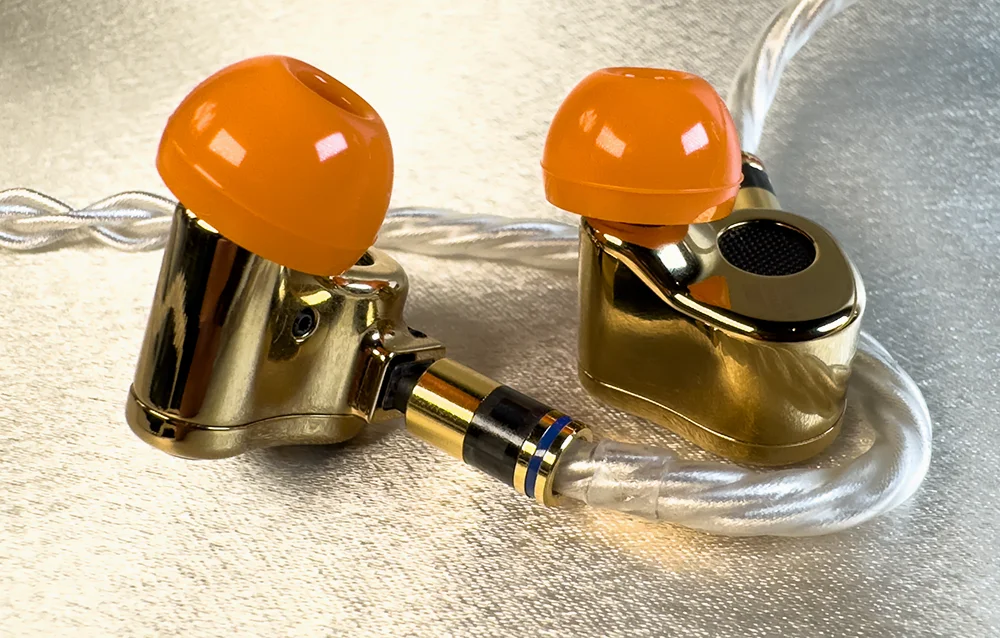
The Liqueurs' secret sauce is their slightly tacky/sticky texture which helps form a stronger seal. If you’ve tried Azla Sedna Xelastec tips you know the kind I mean, but thankfully the Liqueurs dial down the effect – adding just enough tackiness to seal strongly without impacting comfort as much as the Xelastecs do.
Eartip fit is very personal, I find the Liqueurs comfortable for extended listening with fairly soft & yielding silicone. The Orange tips are slightly squishier than the Blacks but the difference is quite minor.
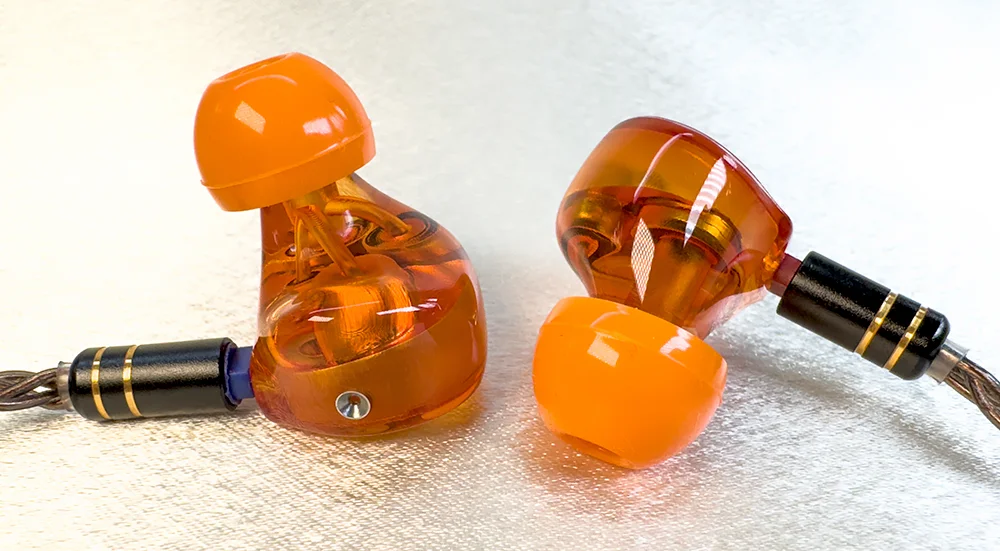
The Liqueurs' spacious open bores project airy high frequencies, and particularly the larger size tips are quite wide at the base to create a strong seal that gives low frequencies plenty of rumble.
The Orange Liqueurs are sonically well balanced, with a strong seal creating a wide soundstage & good perception of imaging. Midbass and upper midrange are emphasised, with treble quite extended. However the Liqueurs seal too tightly to sound as open & airy as other eartips, if that's what you prefer.
The Black Liqueurs seal even more strongly for very powerful isolation, but aren’t as comfortable. Their soundstage isn't as wide due to the stronger seal, instead they sound darker with emphasised lower midrange. Midbass is also strong, and they feel more bass dominant than the Orange tips.

Spinfit W1 (USD $8.99 per pair)
The W1s project the deepest sub bass of any tips I’ve tried, but despite sealing well sound very open with airy treble - sonically they're quite V-shaped, and close to the most comfortable tips I’ve tried.
The Orange Liqueurs are slightly firmer with comfort a small step down, with a similarly wide stage but less emphasised sub bass & treble. The Black Liqueurs seal more tightly and isolate better than the W1s, leading to a more intimate stage with greater midbass but less sub bass rumble.
Divinus Velvet (USD $18.99 for 3 pairs)
The Velvets seal slightly stronger than the W1s but aren’t quite as soft or comfortable, with a more intimate soundstage, less sub bass & treble emphasis but more lower midrange presence.
They’re reminiscent of the Black Liqueurs but are slightly more comfortable as they aren’t quite as thick, yet they don’t seal as strongly so isolation is lower but they sound slightly more open.
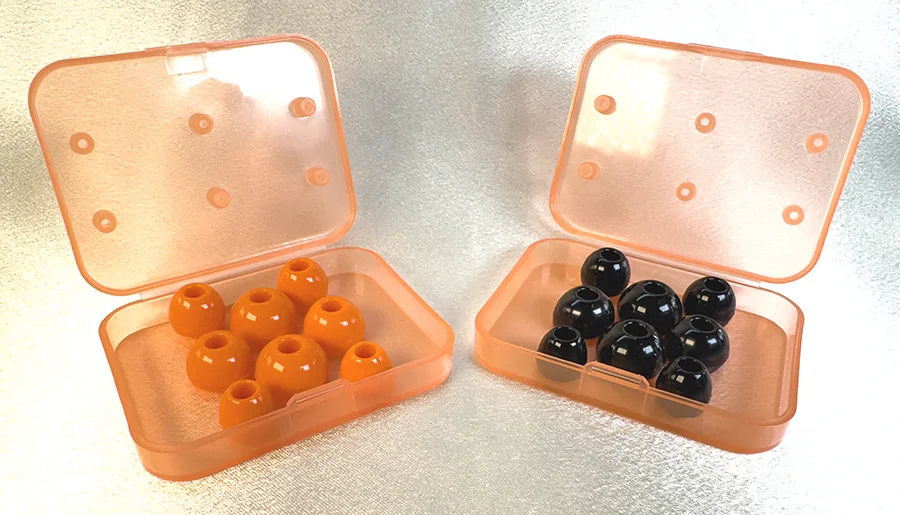
At $9.90 for 3 pairs the Penon Liqueur eartips are a no-brainer for earphone fanatics.
Especially the Black versions.
The Orange tips are slightly softer and for $9.90 it’s probably worth trying both… but the Black Liqueurs provide superb isolation, as good as any tips I’ve tried – without being as uncomfortable as Xelastecs.
For long plane & train trips the Black Liqueurs are now my first choice.
Eartips are like cables, you can never have too many and synergy is key. W1s remain my preference at home for their peerless comfort, the Black Liqueurs let me sacrifice some of that softness to block out extra noise when it bothers me. The Oranges are softer but I prefer max comfort or max isolation.
I love how spoiled for choice we are these days - it makes being super picky feel completely justified!
What you mightn't know is how many brands of eartips are out there, how wildly they vary in shape, material and construction, and how dramatically those differences can affect what you hear!
Being in the hobby for ages means you’ll probably wind up with a large eartip collection - they’re cheap enough to be great impulse buys with minimal post-purchase guilt, yet their sonic benefits can be huge.
I’ve tried all the popular brands, but for the past year have settled on Spinfit W1s as my tips of choice. So I was keen when Penon offered to send me their new Liqueur eartips in exchange for a review but sceptical they’d replace W1s as my favourites.
However upon arrival the Liqueurs at once stood out as being different... read on to learn how.
Ergonomics

Penon Liqueur eartips come in two varieties – orange and black. Both are similarly shaped but the black ones have thicker walls. Which means the Black Liqueurs provide a stronger seal and better noise isolation, at the cost of being more rigid & slightly less comfortable.
There’s four sizes, and the largest is massive. If you’re someone who struggles to find tips large enough the Size XL Liqueurs may be the solution, given they’re way bigger than the largest tips of most brands.

The Liqueurs' secret sauce is their slightly tacky/sticky texture which helps form a stronger seal. If you’ve tried Azla Sedna Xelastec tips you know the kind I mean, but thankfully the Liqueurs dial down the effect – adding just enough tackiness to seal strongly without impacting comfort as much as the Xelastecs do.
Eartip fit is very personal, I find the Liqueurs comfortable for extended listening with fairly soft & yielding silicone. The Orange tips are slightly squishier than the Blacks but the difference is quite minor.
Sound Impressions

The Liqueurs' spacious open bores project airy high frequencies, and particularly the larger size tips are quite wide at the base to create a strong seal that gives low frequencies plenty of rumble.
The Orange Liqueurs are sonically well balanced, with a strong seal creating a wide soundstage & good perception of imaging. Midbass and upper midrange are emphasised, with treble quite extended. However the Liqueurs seal too tightly to sound as open & airy as other eartips, if that's what you prefer.
The Black Liqueurs seal even more strongly for very powerful isolation, but aren’t as comfortable. Their soundstage isn't as wide due to the stronger seal, instead they sound darker with emphasised lower midrange. Midbass is also strong, and they feel more bass dominant than the Orange tips.
Eartip Comparisons

Spinfit W1 (USD $8.99 per pair)
The W1s project the deepest sub bass of any tips I’ve tried, but despite sealing well sound very open with airy treble - sonically they're quite V-shaped, and close to the most comfortable tips I’ve tried.
The Orange Liqueurs are slightly firmer with comfort a small step down, with a similarly wide stage but less emphasised sub bass & treble. The Black Liqueurs seal more tightly and isolate better than the W1s, leading to a more intimate stage with greater midbass but less sub bass rumble.
Divinus Velvet (USD $18.99 for 3 pairs)
The Velvets seal slightly stronger than the W1s but aren’t quite as soft or comfortable, with a more intimate soundstage, less sub bass & treble emphasis but more lower midrange presence.
They’re reminiscent of the Black Liqueurs but are slightly more comfortable as they aren’t quite as thick, yet they don’t seal as strongly so isolation is lower but they sound slightly more open.
Conclusion

At $9.90 for 3 pairs the Penon Liqueur eartips are a no-brainer for earphone fanatics.
Especially the Black versions.
The Orange tips are slightly softer and for $9.90 it’s probably worth trying both… but the Black Liqueurs provide superb isolation, as good as any tips I’ve tried – without being as uncomfortable as Xelastecs.
For long plane & train trips the Black Liqueurs are now my first choice.
Eartips are like cables, you can never have too many and synergy is key. W1s remain my preference at home for their peerless comfort, the Black Liqueurs let me sacrifice some of that softness to block out extra noise when it bothers me. The Oranges are softer but I prefer max comfort or max isolation.
I love how spoiled for choice we are these days - it makes being super picky feel completely justified!
Bosk
1000+ Head-Fier
Pros: Smooth, dark & rich sound that's superb value for money
Cons: Very warm with fairly subdued treble
Occasionally something comes along that shifts your perspective, and nothing's quite the same again.
I recently had such an experience I'd like to share with you.
Since demoing Campfire Audio's USD $3375 Trifecta last year I found myself embroiled in controversy, and worse yet of my own making! Let me explain.
Upon first hearing Trifecta at my local dealer they were terrible - nothing but a wall of bass, with no treble to speak of and drivers so slow I wondered if they were faulty. Repeated Trifecta demos with different sources over the following months yielded similar impressions.
Naturally I did what anyone would - sharing my candid Trifecta thoughts online to what I assumed would be measured and constructive feedback.... you can probably guess how that went!
Having since detached the last of the pitchforks from my behind I've deconstructed what made Trifecta so disagreeable; In a world of BA driver dominance the notion of an IEM with three dynamic drivers felt a bit like a P.T. Barnum novelty I wondered if the world really needed.
Fast forward to earlier this year when Penon Audio announced the release of their new Quattro IEMs which boast not three, but four DDs and my eyebrows shot up, as I kept an eye on the forums as ownership impressions trickled in.
Much like Trifecta, Quattros have generated polar reactions - many owners adore them, others complain they're not what they expected. So when Penon offered to send a pair in exchange for a review I agreed, knowing this is one evaluation that'll probably end in triumph.... or disaster.
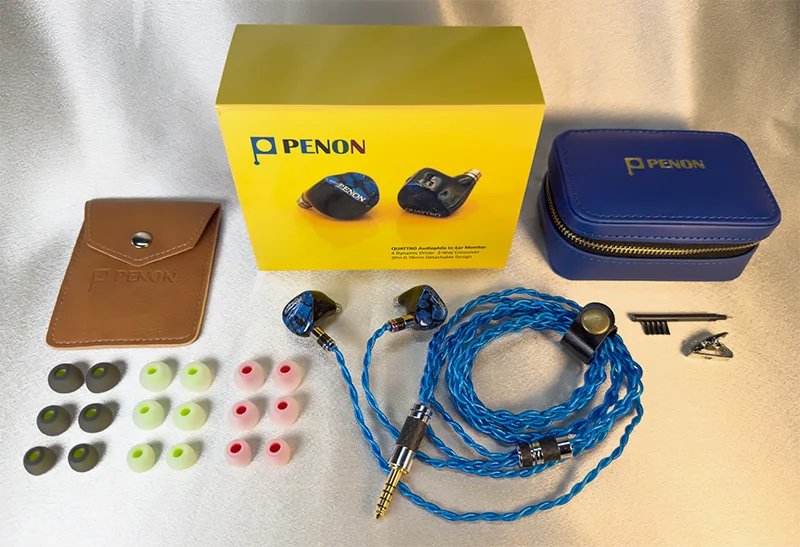
The USD $399 Penon Quattros arrive in the usual small yellow Penon cardboard box, inside of which is a fairly plush & well-made leather carry case that strikes a nice balance between being small enough to pocket but roomy enough to house the IEMs with a large 8 wire cable.
There’s also a small leather accessories case, inside of which are three sets of silicone eartips in 3 sizes along with a shirt clip & cleaning tool.
The Quattros come bundled with a seriously impressive blue 2pin silver-plated & graphene cable, in your choice of 4.4mm, 3.5mm or 2.5mm terminations.
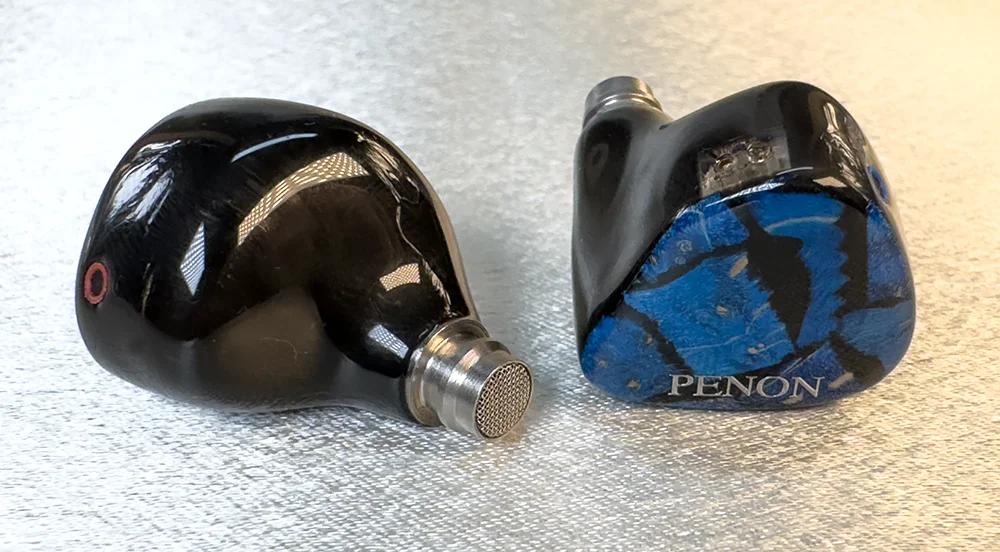
The Quattros' medical-grade resin shells are vented for pressure relief and are on the chunkier side of the spectrum, which is understandable given each earpiece houses 4 dynamic drivers.
Earphone fit is a personal thing. I find the Quattros are solidly comfortable even for long listening sessions, though smaller hybrids IEMs with only a single DD can be better. There's a moderate amount of heft to the Quattros & they stick out a bit, but given there's 4 DDs in there I've no complaints.
I'd prefer resin rather than metal nozzles which tend to grip eartips more firmly, but that's a minor quibble. Ergonomically the stock cable has given me no complaints, being very pliable & draping nicely.
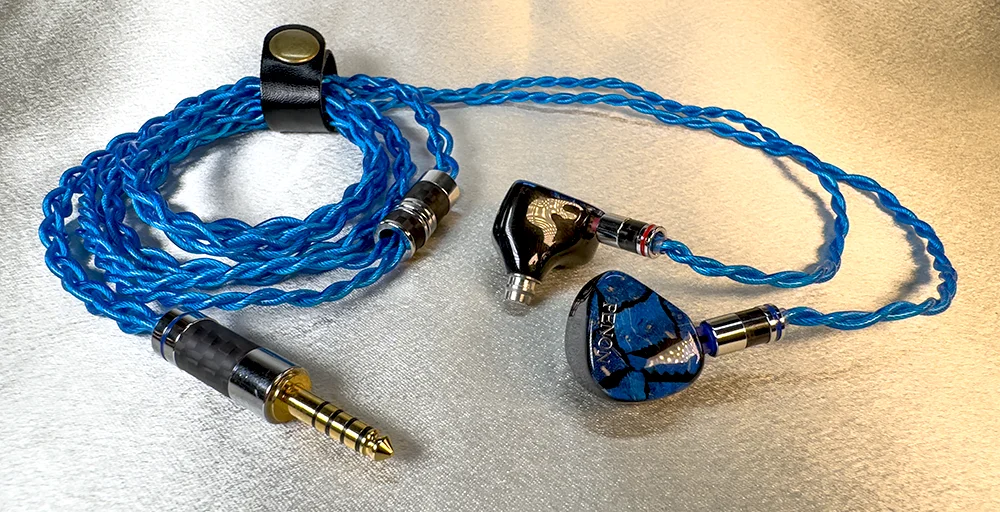
I tested the Quattros with my Hiby R6 Pro II set to hi-gain in AB mode, at a volume level of 28.
The Quattros are bass-driven with a thick, rich midrange & dark treble that strongly emphasises their smooth tonality & dense note weight.
Bass
It would be unfair to label the Quattros basshead IEMs since doing would imply bass dominates their presentation, yet they deliver as much as possible without crossing the threshold - remaining well balanced, but with enough power down low to provide a massively satisfying sense of fullness.
With dual 10mm DDs for the lows, midbass is emphasised over sub and there's enough midbass in particular to infuse the presentation with a huge amount of warmth and body. If you prefer lean sound I strongly recommend looking elsewhere!
There's plenty of thump and rumble for electronic music, and bass texture is reasonably gratifying without being the best I've heard. Bass decay is believably prolonged, without those two DD's being too slow to keep up during fast-paced music.
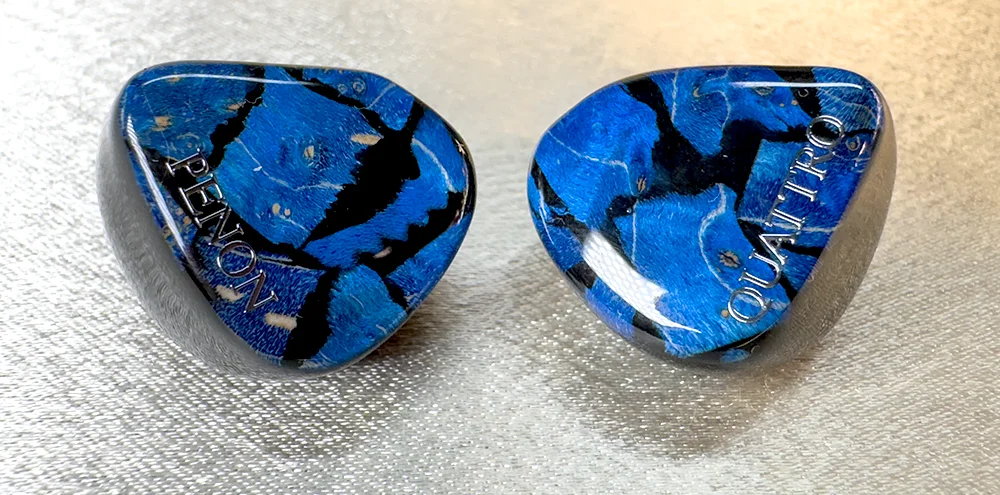
Midrange
If you want a meaty, full-bodied midrange you can sink your teeth into the Quattros have you covered, and this is where a lot of your attention will be riveted.
What most impresses me about the Quattro midrange isn't the impressively hefty note weight -easily the best I've heard under $1000- nor their remarkable coherence which is absolutely NOT what I expected from an IEM with four DDs (if anything I feared the opposite!) but rather their sublime smoothness.
This is an IEM you can listen to for days without ever hearing jarring peaks. Music just flows in a manner that makes you want to keep listening for hour after hour, and their strongly lower-midrange emphasised tonality is once again unquestionably the most satisfying I've heard under $1000.
Treble
The Quattros are unashamedly dark, and this is where some may have issue with them. Though treble quality is quite good, avoiding the grain we see in entry-level IEMs, Penon have tuned the Quattros conservatively in this area to avoid any nasty peaks or sibilance.
Instruments like cymbals, snares & bells do not feel rolled off but are represented less prominently, and though the Quattros' treble never stands out as deficient, they aren't my first choice for rendering instruments like violins as too much of my attention is focused around the lows & mids.
The upside of the Quattros' safer treble is the total absence of fatigue, inviting longer listening sessions.
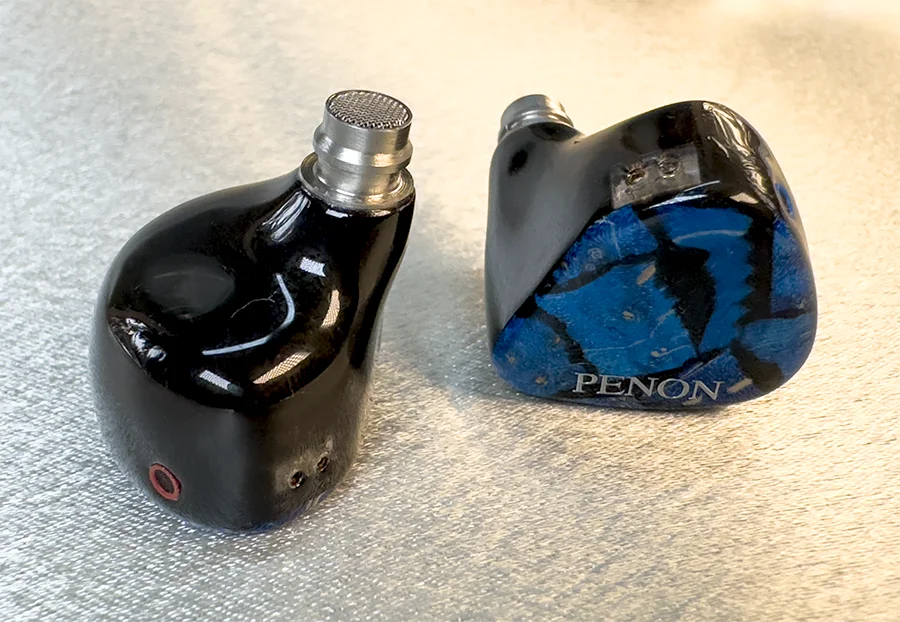
The Quattros expertly straddle a fine line of clearly prioritising tonality over technical performance, without starving technicalities of capability to the point they become distracting weaknesses - Penon have been tuning IEMs for years and clearly know what they're doing here.
The soundstage is moderately wide & surprisingly deep for an IEM of this price, never feeling artificially stretched nor claustrophobic. I wouldn't call it a strength however, as there's so much warmth with instruments rendered quite large, so the stage can feel more intimate than it really is.
Resolution is quite good for this price, though they definitely aren't detail monsters given their more safely-tuned treble. However vocal nuances come through with satisfying prominence, embellished by their decadently warm tonality & delicious smoothness.
Imaging and separation are solid without calling massive attention to themselves, and most importantly all four DDs are remarkably coherent & fast enough to keep up even with modern EDM music. Dynamics are also very good, an attribute I value strongly.

I compared the Quattros with EMs at hand, using the Hiby R6 Pro II set to hi-gain in AB mode with the Quattros requiring a volume level of 28.
Simgot EA1000 - 1xDD 1xPR (USD $219)

The EA1000 are much smaller but heavier thanks to their stainless steel shells, yet slightly more comfortable due to the size difference. Requiring 19 volume on the R6P2 they’re easy to drive.
EA1000s are vastly leaner than the Quattros, with a far brighter & more neutral sound. EA1000 bass is very impressive & stands out from the rest of the presentation more than Quattros' does, which you may see as a positive or negative. The EA1000s are more sub bass oriented whereas the Quattros have far more midbass, and greater overall bass quantity.
The EA1000s lack of midbass helps maintain a cooler tonality, along with less lower midrange than the Quattros - a symptom of the EA1000 being tuned closer to the Harman target. I find the Quattros' more full-bodied midrange much more convincing, whereas the EA1000s emphasise the upper midrange more.
The soundstages of both IEMs are similarly wide but Quattros' is deeper. The EA1000s lag slightly behind in resolution & imaging sharpness, and both IEMs feel equally coherent.
ISN Neo5 – 4xBA 1xDD (USD $289)
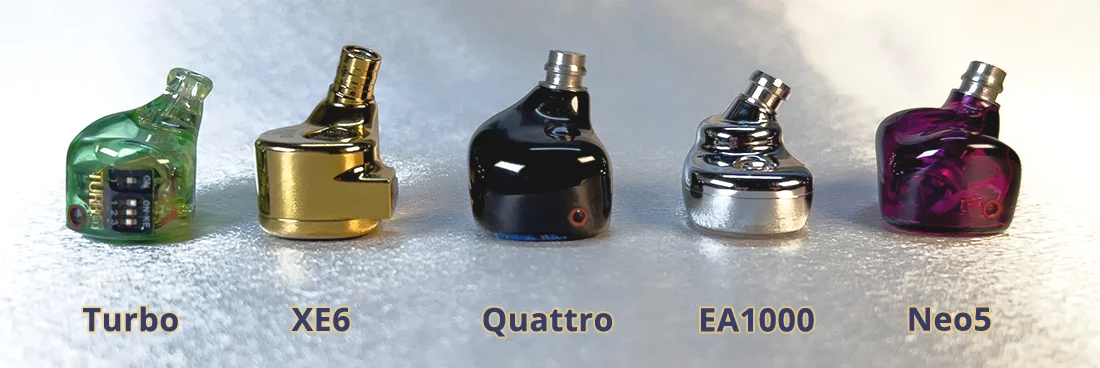
The Neo5s are physically smaller & lighter than the Quattros, and feel like they’re sculpted to my ears almost perfectly - comfort is close to the best of any universal IEM I’ve tried. Requiring just 19 volume on the R6P2 they’re easy to drive.
The Neo5s are much more v-shaped with a thinner tonality than the Quattros. I find the Neo5's DD slower to respond to fast music, and am surprised to find Neo5s bass quantity slightly lower & bass texture more pillowy than that of the Quattros.
The Neo5 soundstage is narrower & shallower, resolution feels a notch lower and they're less coherent perhaps because their DD can struggle to keep up. The Quattros boast better dynamics & note weight, treble feels smoother & higher quality on the Quattros though the actual amount of treble quantity is higher on the v-shaped Neo5s which come across as more excited but far less smooth & refined.
Penon Turbo - 6xBA (USD $549)

Turbos’ shells are much smaller, yet only slightly more comfortable than the Quattros as the areas that make direct contact with my canals fit more snugly. Needing 23 volume on the R6P2 they're easier to drive.
Turbos' tuning switches I keep in their stock positions, and unsurprisingly the biggest difference lies with bass as the Turbos' BA bass is no match for the Quattros. Turbo have lower bass quantity, bass decay & texture are commendable by BA standards but poor compared with the Quattros' dual DDs.
The Turbos feature a similarly dark tonality but they're far less full-bodied than Quattro, with less impressive note weight & dynamics. Turbos emphasise the upper midrange much more which I don't care for, instead I find the Quattro's meatier midrange far more engaging.
Though the Turbos' soundstage is slightly wider, imaging is marginally sharper & they feel slightly more resolving, to me those improvements don't compensate for their inferior tonality, and though their BA drivers separate instruments during busy passages better that difference is also quite minor.
Fir Audio XE6 – 4xBA 1xEST 1xDD (USD $3899)
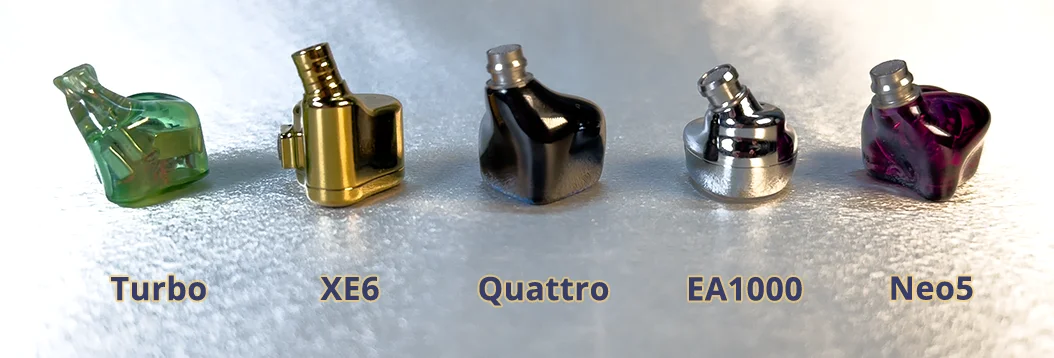
The stainless steel XE6s are much heavier, which I notice occasionally during long listening sessions. However they're sculpted to my canals decently and comfort levels are similar to the Quattros. Needing just 17 volume on the R6P2 they're easy to drive.
The XE6s feel like the Quattros taken to the next level with an even bolder, more coloured presentation with far more warmth & midbass that can take time to adjust to. Instruments sound much larger on the XE6s, with an even thicker & denser sound with massive note weight few (if any) other IEMs can match.
XE6s boast superior dynamics, a deeper & wider soundstage, deeper & more impactful bass, higher resolution across the board, and smoother, more prominent & higher quality treble thanks to their EST drivers. The Quattros feel more neutral & less coloured by comparison, and may eclipse the XE6s for sheer musicality but trail in other areas.
Dunu Kima – 1xDD (USD $109)
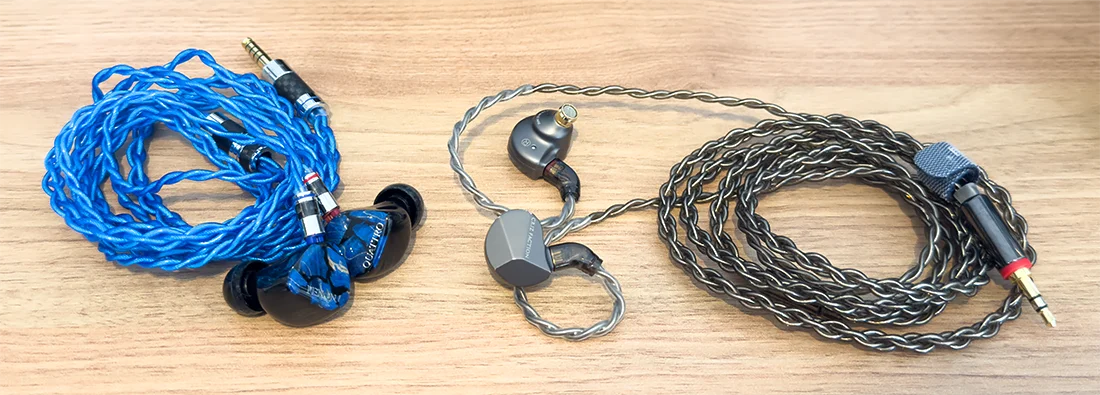
Physically the Kimas are tremendously light and small, and comfort levels are exceptionally good. Requiring 30 volume on the R6P2's 3.5mm jack I'm surprised by how much power they need.
Significantly brighter which a much thinner presentation, the Kimas feature much more upper midrange emphasis with far less midbass & lower midrange prominence than the Quattros.
The Kimas sound a little shouty & ethereal with a tonality reminiscent of Harman-tuned IEMs, imaging can be a little vague and note weight is far inferior to that of the Quattros, so overall they feel very outclassed.
Noble Audio Stage 3 – 2xBA 1xDD (USD $600)
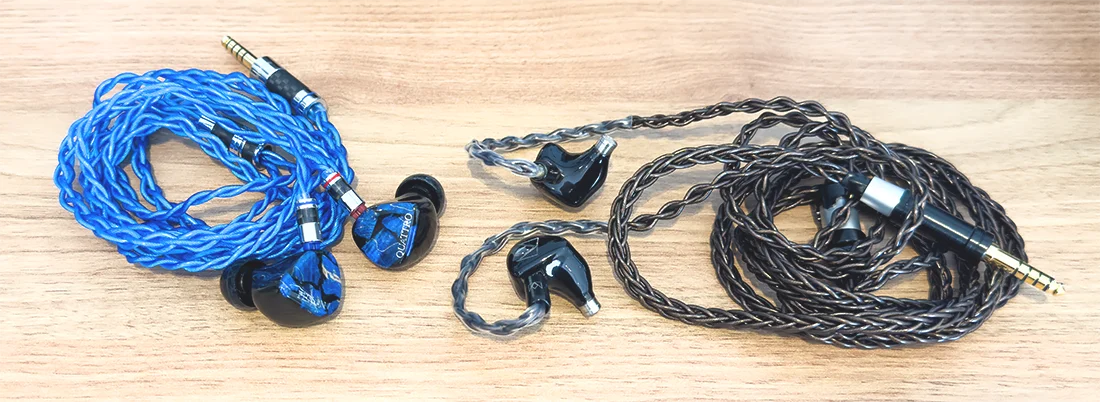
The Stage 3s are physically similar to the Quattros albeit slightly smaller. Comfort levels are comparable, but the Stage 3s isolate slightly better. Needing 22 volume on the R6P2 they're fairly easy to drive.
I find the Stage 3s a little shouty with more upper midrange emphasis, vocals can feel somewhat distant with a touch of hollowness compared to the Quattros. The stage 3s also emphasise midbass more than the Quattros, but are similarly dark in the treble.
By contrast the Quattros are much smoother especially in the midrange, with a wider soundstage though the Stage 3s' stage is slightly deeper and they're more dynamic. Resolution feels similar between them, the Stage 3 DD driver feel noticeably slower and I much prefer the Quattros' tonality.
64 Audio U4s – 3xBA 1xDD (USD $1099)
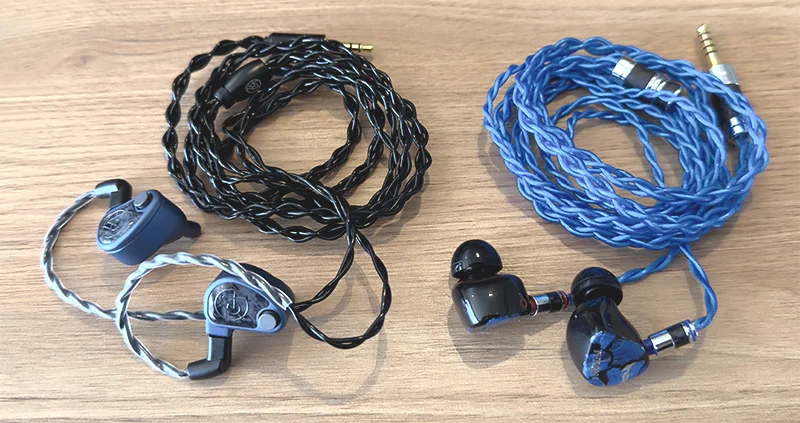
To my surprise the U4s seem physically larger than the Quattros and stick out quite a bit, but are perfectly sculpted to my canals and are slightly more comfortable. Needing 24 volume on the R6P2 3.5mm jack they're easy to drive.
The U4s are much brighter & thinner sounding than the Quattros, nor as bass dominant but I find their bass texture to be more satisfying. They're ]more neutral but not as smooth, with vocals tilted slightly towards the upper midrange with what feels like the occasional treble peak present.
The U4s have a narrower soundstage surprisingly, but their background is blacker and imaging is sharper, though note weight is unsurprisingly diminished compared to the Quattros.
64 Audio Volür – 8xBA 2xDD (USD $2499)
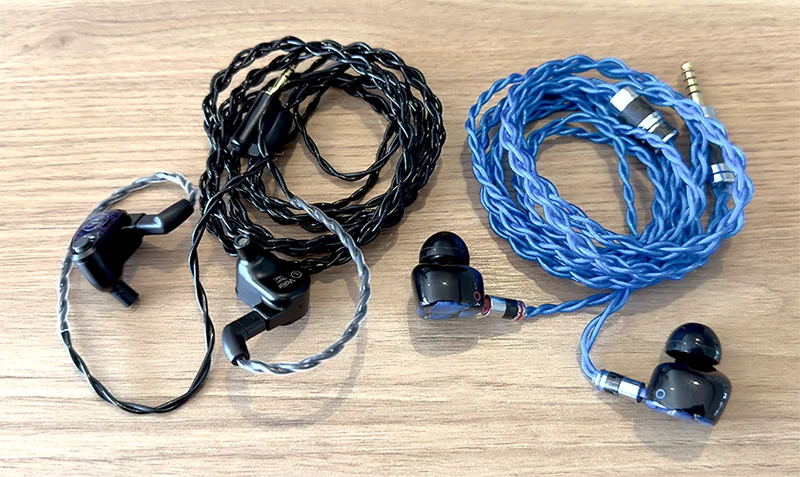
Physically Volur seem identical to the U4s, so though they're quite large comfort is excellent. Again they require only 24 on the R6P2's 3.5mm jack so they're easy to drive.
Volur are extremely well balanced & coherent to the point where nothing immediately jumps out about them - they're great at getting out of the way of the music. They're smoother than the U4s with treble that's much tamer, in fact of all the IEMs I've A/Bed the Quattros against Volur are the closest match.
Vocals on the Volur feel quite forward but their bass texture doesn't impress as much as U4s' does, however they're much thicker & smoother though still lagging behind the Quattros there. Volur are more resolving with sharper imaging though, with impressive effortlessness in the way they present detail, and their soundstage is deeper.
Campfire Audio Trifecta – 3xDD (USD $3375)
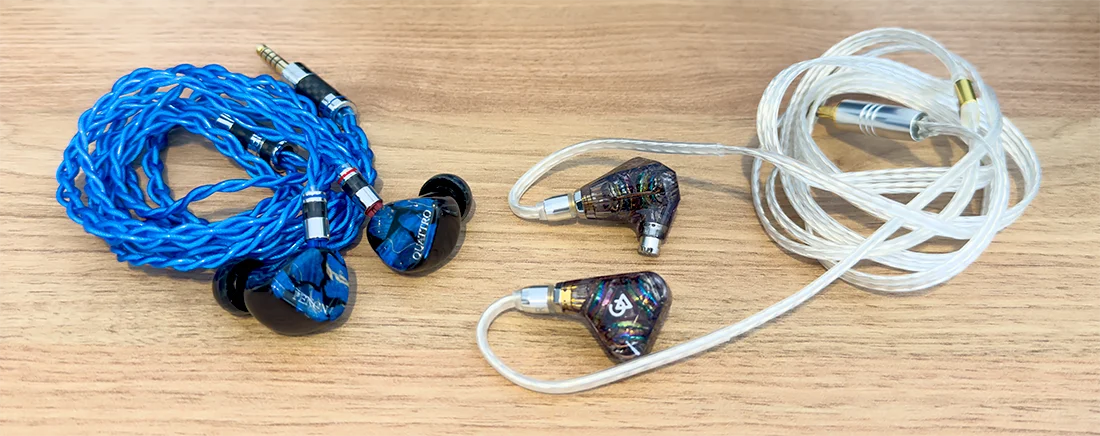
The Trifectas' shape is rather unusual. They're heavier than the Quattros and stick out quite a bit, but comfort & isolation levels are similar between the two. Requiring just 23 on the R6P2's 3.5mm jack they're incredibly easy to drive.
There's distinct similarities here, both Trifecta & Quattro are very bass dominant with Trifecta bass being even more prominent, going deeper and possessing greater rumble & more satisfying texture, but is also much slower - Trifectas possess some of the slowest drivers of any flagship IEM I've heard which makes them problematic for faster-paced music.
Trifecta are considerably brighter and I notice potentially troublesome treble peaks, but are much more dynamic with even better note weight. They're also more resolving with a larger soundstage, whereas the Quattros are smoother, warmer & more midrange-centric but less impactful and darker.
Simgot LC7 (USD $69)

The LC7 adds a bit more treble emphasis so the Quattros don't feel quite as dark, and I notice the upper midrange coming through a bit more.
Though the soundstage is a little deeper and midrange resolution is slightly higher, I can't notice much improvement to soundstage width, dynamics or bass impact either. Since I prefer the tonality of the stock cable the LC7 feels like a side-grade.
NiceHCK DragonScale (USD $157)
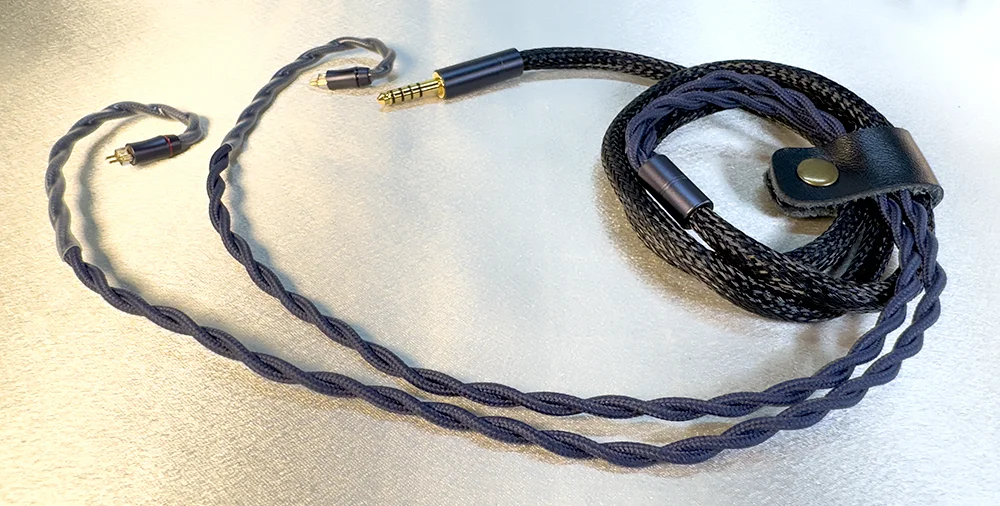
DragonScale expands the stage slightly wider, adds a blacker background & sharper imaging, with vocals in particular being easier to distinguish from instruments around them.
There's a slight treble boost, but midbass & lower midrange are more prominent with the stock cable which I miss. DragonScale is so stiff below the Y-split that I'd rather stick with the stock cable for its' superior ergonomics.
Penon ASOS (USD $169)

The ASOS expands the stage in all directions and makes the overall presentation feel like it has a lot more room to breathe. Midrange resolution is higher, and it's much easier to distinguish individual instruments from one another. Treble is also slightly brighter.
ASOS is a very good pairing, though I prefer the tonality of the stock cable despite its' more intimate soundstage - musicality feels higher and I tend to toe-tap more.
Effect Audio Code 23 (USD $599)
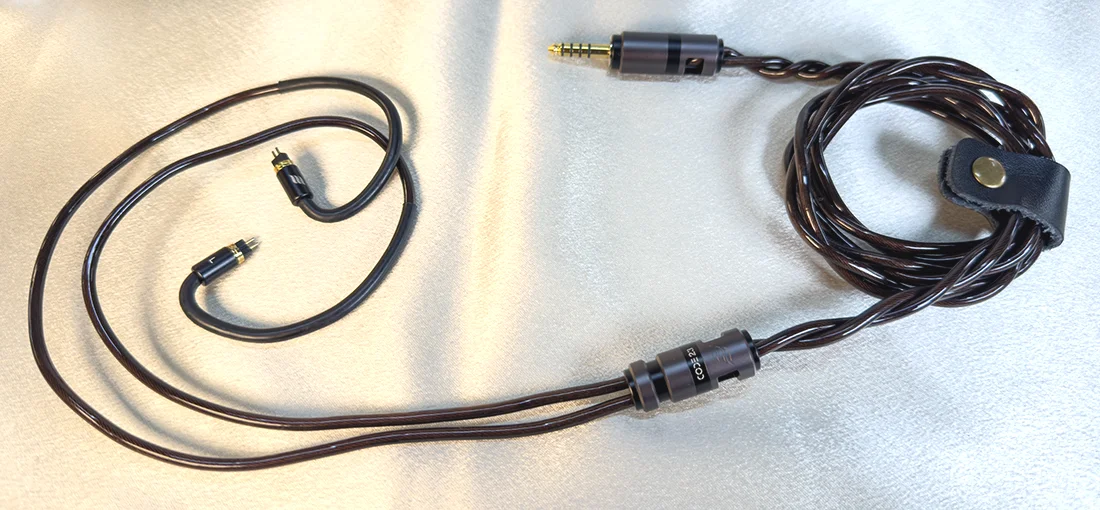
In this very impressive pairing Code23 makes instruments sound larger, the stage expands in all directions, resolution increases, and treble is brightened but not as much as ASOS does.
Sonically Code23 feels like a direct upgrade from the stock cable since tonality is similar but technicalities are boosted significantly, though Code23's horrid ergonomics need to be suffered to enjoy them.
Liquid Links Venom (USD $1089)

Venom increases resolution across all frequencies far more than other cables in a way that's very noticeable, delivers a blacker background with sharper imaging & brightens treble significantly.
The stage is deeper but surprisingly no wider than the stock cable. I prefer the Code23 pairing simply because Venom imparts a metallic tonality on vocals in particular which robs the Quattros too much of what makes them special. A great lesson here that cable synergy with your IEM always trumps price.
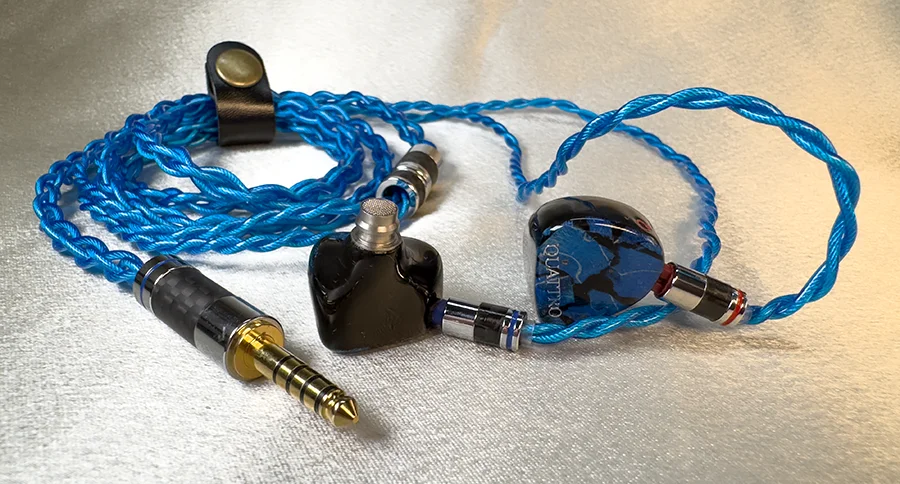
Let me put it simply. For $399 if you want sound that's smooth, rich & warm it doesn't get better than this.
Even if you're used to spending ten times that much on earphones, if I just described the kind of sound you love then I strongly suggest demoing the Quattros.
When you've been an audiophile forever you learn each type of sound has it's place. I can just as easily enjoy basshead IEMs as I can a reference-tuned set, but sound that's deliciously smooth without instruments sounding excessively smoothed over.... that's perfect for new music discovery.
The Penon Quattros make me want to listen to album after album which is precisely what I've been doing since they arrived.
I can't recommend them universally because they won't please everyone - some folks prefer a thinner, leaner sound with loads of treble which is exactly what the Quattros aren't. Instead they're warm & bassy with impeccably full-bodied timbre many of us find intoxicating.
I finally get it - nothing replicates lifelike tonality like dynamic drivers, which is why the Quattros exist. They're a brilliantly tuned set of IEMs, an absolute pleasure if you enjoy this kind of sound.
I recently had such an experience I'd like to share with you.
Since demoing Campfire Audio's USD $3375 Trifecta last year I found myself embroiled in controversy, and worse yet of my own making! Let me explain.
Upon first hearing Trifecta at my local dealer they were terrible - nothing but a wall of bass, with no treble to speak of and drivers so slow I wondered if they were faulty. Repeated Trifecta demos with different sources over the following months yielded similar impressions.
Naturally I did what anyone would - sharing my candid Trifecta thoughts online to what I assumed would be measured and constructive feedback.... you can probably guess how that went!
Having since detached the last of the pitchforks from my behind I've deconstructed what made Trifecta so disagreeable; In a world of BA driver dominance the notion of an IEM with three dynamic drivers felt a bit like a P.T. Barnum novelty I wondered if the world really needed.
Fast forward to earlier this year when Penon Audio announced the release of their new Quattro IEMs which boast not three, but four DDs and my eyebrows shot up, as I kept an eye on the forums as ownership impressions trickled in.
Much like Trifecta, Quattros have generated polar reactions - many owners adore them, others complain they're not what they expected. So when Penon offered to send a pair in exchange for a review I agreed, knowing this is one evaluation that'll probably end in triumph.... or disaster.
Packaging

The USD $399 Penon Quattros arrive in the usual small yellow Penon cardboard box, inside of which is a fairly plush & well-made leather carry case that strikes a nice balance between being small enough to pocket but roomy enough to house the IEMs with a large 8 wire cable.
There’s also a small leather accessories case, inside of which are three sets of silicone eartips in 3 sizes along with a shirt clip & cleaning tool.
The Quattros come bundled with a seriously impressive blue 2pin silver-plated & graphene cable, in your choice of 4.4mm, 3.5mm or 2.5mm terminations.
Ergonomics

The Quattros' medical-grade resin shells are vented for pressure relief and are on the chunkier side of the spectrum, which is understandable given each earpiece houses 4 dynamic drivers.
Earphone fit is a personal thing. I find the Quattros are solidly comfortable even for long listening sessions, though smaller hybrids IEMs with only a single DD can be better. There's a moderate amount of heft to the Quattros & they stick out a bit, but given there's 4 DDs in there I've no complaints.
I'd prefer resin rather than metal nozzles which tend to grip eartips more firmly, but that's a minor quibble. Ergonomically the stock cable has given me no complaints, being very pliable & draping nicely.
Sound Impressions

I tested the Quattros with my Hiby R6 Pro II set to hi-gain in AB mode, at a volume level of 28.
The Quattros are bass-driven with a thick, rich midrange & dark treble that strongly emphasises their smooth tonality & dense note weight.
Bass
It would be unfair to label the Quattros basshead IEMs since doing would imply bass dominates their presentation, yet they deliver as much as possible without crossing the threshold - remaining well balanced, but with enough power down low to provide a massively satisfying sense of fullness.
With dual 10mm DDs for the lows, midbass is emphasised over sub and there's enough midbass in particular to infuse the presentation with a huge amount of warmth and body. If you prefer lean sound I strongly recommend looking elsewhere!
There's plenty of thump and rumble for electronic music, and bass texture is reasonably gratifying without being the best I've heard. Bass decay is believably prolonged, without those two DD's being too slow to keep up during fast-paced music.

Midrange
If you want a meaty, full-bodied midrange you can sink your teeth into the Quattros have you covered, and this is where a lot of your attention will be riveted.
What most impresses me about the Quattro midrange isn't the impressively hefty note weight -easily the best I've heard under $1000- nor their remarkable coherence which is absolutely NOT what I expected from an IEM with four DDs (if anything I feared the opposite!) but rather their sublime smoothness.
This is an IEM you can listen to for days without ever hearing jarring peaks. Music just flows in a manner that makes you want to keep listening for hour after hour, and their strongly lower-midrange emphasised tonality is once again unquestionably the most satisfying I've heard under $1000.
Treble
The Quattros are unashamedly dark, and this is where some may have issue with them. Though treble quality is quite good, avoiding the grain we see in entry-level IEMs, Penon have tuned the Quattros conservatively in this area to avoid any nasty peaks or sibilance.
Instruments like cymbals, snares & bells do not feel rolled off but are represented less prominently, and though the Quattros' treble never stands out as deficient, they aren't my first choice for rendering instruments like violins as too much of my attention is focused around the lows & mids.
The upside of the Quattros' safer treble is the total absence of fatigue, inviting longer listening sessions.
Technical Performance

The Quattros expertly straddle a fine line of clearly prioritising tonality over technical performance, without starving technicalities of capability to the point they become distracting weaknesses - Penon have been tuning IEMs for years and clearly know what they're doing here.
The soundstage is moderately wide & surprisingly deep for an IEM of this price, never feeling artificially stretched nor claustrophobic. I wouldn't call it a strength however, as there's so much warmth with instruments rendered quite large, so the stage can feel more intimate than it really is.
Resolution is quite good for this price, though they definitely aren't detail monsters given their more safely-tuned treble. However vocal nuances come through with satisfying prominence, embellished by their decadently warm tonality & delicious smoothness.
Imaging and separation are solid without calling massive attention to themselves, and most importantly all four DDs are remarkably coherent & fast enough to keep up even with modern EDM music. Dynamics are also very good, an attribute I value strongly.
IEM Comparisons

I compared the Quattros with EMs at hand, using the Hiby R6 Pro II set to hi-gain in AB mode with the Quattros requiring a volume level of 28.
Simgot EA1000 - 1xDD 1xPR (USD $219)

The EA1000 are much smaller but heavier thanks to their stainless steel shells, yet slightly more comfortable due to the size difference. Requiring 19 volume on the R6P2 they’re easy to drive.
EA1000s are vastly leaner than the Quattros, with a far brighter & more neutral sound. EA1000 bass is very impressive & stands out from the rest of the presentation more than Quattros' does, which you may see as a positive or negative. The EA1000s are more sub bass oriented whereas the Quattros have far more midbass, and greater overall bass quantity.
The EA1000s lack of midbass helps maintain a cooler tonality, along with less lower midrange than the Quattros - a symptom of the EA1000 being tuned closer to the Harman target. I find the Quattros' more full-bodied midrange much more convincing, whereas the EA1000s emphasise the upper midrange more.
The soundstages of both IEMs are similarly wide but Quattros' is deeper. The EA1000s lag slightly behind in resolution & imaging sharpness, and both IEMs feel equally coherent.
ISN Neo5 – 4xBA 1xDD (USD $289)

The Neo5s are physically smaller & lighter than the Quattros, and feel like they’re sculpted to my ears almost perfectly - comfort is close to the best of any universal IEM I’ve tried. Requiring just 19 volume on the R6P2 they’re easy to drive.
The Neo5s are much more v-shaped with a thinner tonality than the Quattros. I find the Neo5's DD slower to respond to fast music, and am surprised to find Neo5s bass quantity slightly lower & bass texture more pillowy than that of the Quattros.
The Neo5 soundstage is narrower & shallower, resolution feels a notch lower and they're less coherent perhaps because their DD can struggle to keep up. The Quattros boast better dynamics & note weight, treble feels smoother & higher quality on the Quattros though the actual amount of treble quantity is higher on the v-shaped Neo5s which come across as more excited but far less smooth & refined.
Penon Turbo - 6xBA (USD $549)

Turbos’ shells are much smaller, yet only slightly more comfortable than the Quattros as the areas that make direct contact with my canals fit more snugly. Needing 23 volume on the R6P2 they're easier to drive.
Turbos' tuning switches I keep in their stock positions, and unsurprisingly the biggest difference lies with bass as the Turbos' BA bass is no match for the Quattros. Turbo have lower bass quantity, bass decay & texture are commendable by BA standards but poor compared with the Quattros' dual DDs.
The Turbos feature a similarly dark tonality but they're far less full-bodied than Quattro, with less impressive note weight & dynamics. Turbos emphasise the upper midrange much more which I don't care for, instead I find the Quattro's meatier midrange far more engaging.
Though the Turbos' soundstage is slightly wider, imaging is marginally sharper & they feel slightly more resolving, to me those improvements don't compensate for their inferior tonality, and though their BA drivers separate instruments during busy passages better that difference is also quite minor.
Fir Audio XE6 – 4xBA 1xEST 1xDD (USD $3899)

The stainless steel XE6s are much heavier, which I notice occasionally during long listening sessions. However they're sculpted to my canals decently and comfort levels are similar to the Quattros. Needing just 17 volume on the R6P2 they're easy to drive.
The XE6s feel like the Quattros taken to the next level with an even bolder, more coloured presentation with far more warmth & midbass that can take time to adjust to. Instruments sound much larger on the XE6s, with an even thicker & denser sound with massive note weight few (if any) other IEMs can match.
XE6s boast superior dynamics, a deeper & wider soundstage, deeper & more impactful bass, higher resolution across the board, and smoother, more prominent & higher quality treble thanks to their EST drivers. The Quattros feel more neutral & less coloured by comparison, and may eclipse the XE6s for sheer musicality but trail in other areas.
More IEM Comparisons
I was able to compare the Quattros with some additional IEMs at my local audio dealer, Addicted to Audio in Melbourne. The Hiby R6 Pro II was used, with the Quattros set at a volume of 28.Dunu Kima – 1xDD (USD $109)

Physically the Kimas are tremendously light and small, and comfort levels are exceptionally good. Requiring 30 volume on the R6P2's 3.5mm jack I'm surprised by how much power they need.
Significantly brighter which a much thinner presentation, the Kimas feature much more upper midrange emphasis with far less midbass & lower midrange prominence than the Quattros.
The Kimas sound a little shouty & ethereal with a tonality reminiscent of Harman-tuned IEMs, imaging can be a little vague and note weight is far inferior to that of the Quattros, so overall they feel very outclassed.
Noble Audio Stage 3 – 2xBA 1xDD (USD $600)

The Stage 3s are physically similar to the Quattros albeit slightly smaller. Comfort levels are comparable, but the Stage 3s isolate slightly better. Needing 22 volume on the R6P2 they're fairly easy to drive.
I find the Stage 3s a little shouty with more upper midrange emphasis, vocals can feel somewhat distant with a touch of hollowness compared to the Quattros. The stage 3s also emphasise midbass more than the Quattros, but are similarly dark in the treble.
By contrast the Quattros are much smoother especially in the midrange, with a wider soundstage though the Stage 3s' stage is slightly deeper and they're more dynamic. Resolution feels similar between them, the Stage 3 DD driver feel noticeably slower and I much prefer the Quattros' tonality.
64 Audio U4s – 3xBA 1xDD (USD $1099)

To my surprise the U4s seem physically larger than the Quattros and stick out quite a bit, but are perfectly sculpted to my canals and are slightly more comfortable. Needing 24 volume on the R6P2 3.5mm jack they're easy to drive.
The U4s are much brighter & thinner sounding than the Quattros, nor as bass dominant but I find their bass texture to be more satisfying. They're ]more neutral but not as smooth, with vocals tilted slightly towards the upper midrange with what feels like the occasional treble peak present.
The U4s have a narrower soundstage surprisingly, but their background is blacker and imaging is sharper, though note weight is unsurprisingly diminished compared to the Quattros.
64 Audio Volür – 8xBA 2xDD (USD $2499)

Physically Volur seem identical to the U4s, so though they're quite large comfort is excellent. Again they require only 24 on the R6P2's 3.5mm jack so they're easy to drive.
Volur are extremely well balanced & coherent to the point where nothing immediately jumps out about them - they're great at getting out of the way of the music. They're smoother than the U4s with treble that's much tamer, in fact of all the IEMs I've A/Bed the Quattros against Volur are the closest match.
Vocals on the Volur feel quite forward but their bass texture doesn't impress as much as U4s' does, however they're much thicker & smoother though still lagging behind the Quattros there. Volur are more resolving with sharper imaging though, with impressive effortlessness in the way they present detail, and their soundstage is deeper.
Campfire Audio Trifecta – 3xDD (USD $3375)

The Trifectas' shape is rather unusual. They're heavier than the Quattros and stick out quite a bit, but comfort & isolation levels are similar between the two. Requiring just 23 on the R6P2's 3.5mm jack they're incredibly easy to drive.
There's distinct similarities here, both Trifecta & Quattro are very bass dominant with Trifecta bass being even more prominent, going deeper and possessing greater rumble & more satisfying texture, but is also much slower - Trifectas possess some of the slowest drivers of any flagship IEM I've heard which makes them problematic for faster-paced music.
Trifecta are considerably brighter and I notice potentially troublesome treble peaks, but are much more dynamic with even better note weight. They're also more resolving with a larger soundstage, whereas the Quattros are smoother, warmer & more midrange-centric but less impactful and darker.
Cable Comparisons
As always I tested the Quattros with a number of different cables to get a feeling for how well they scale.Simgot LC7 (USD $69)

The LC7 adds a bit more treble emphasis so the Quattros don't feel quite as dark, and I notice the upper midrange coming through a bit more.
Though the soundstage is a little deeper and midrange resolution is slightly higher, I can't notice much improvement to soundstage width, dynamics or bass impact either. Since I prefer the tonality of the stock cable the LC7 feels like a side-grade.
NiceHCK DragonScale (USD $157)

DragonScale expands the stage slightly wider, adds a blacker background & sharper imaging, with vocals in particular being easier to distinguish from instruments around them.
There's a slight treble boost, but midbass & lower midrange are more prominent with the stock cable which I miss. DragonScale is so stiff below the Y-split that I'd rather stick with the stock cable for its' superior ergonomics.
Penon ASOS (USD $169)

The ASOS expands the stage in all directions and makes the overall presentation feel like it has a lot more room to breathe. Midrange resolution is higher, and it's much easier to distinguish individual instruments from one another. Treble is also slightly brighter.
ASOS is a very good pairing, though I prefer the tonality of the stock cable despite its' more intimate soundstage - musicality feels higher and I tend to toe-tap more.
Effect Audio Code 23 (USD $599)

In this very impressive pairing Code23 makes instruments sound larger, the stage expands in all directions, resolution increases, and treble is brightened but not as much as ASOS does.
Sonically Code23 feels like a direct upgrade from the stock cable since tonality is similar but technicalities are boosted significantly, though Code23's horrid ergonomics need to be suffered to enjoy them.
Liquid Links Venom (USD $1089)

Venom increases resolution across all frequencies far more than other cables in a way that's very noticeable, delivers a blacker background with sharper imaging & brightens treble significantly.
The stage is deeper but surprisingly no wider than the stock cable. I prefer the Code23 pairing simply because Venom imparts a metallic tonality on vocals in particular which robs the Quattros too much of what makes them special. A great lesson here that cable synergy with your IEM always trumps price.
Conclusion

Let me put it simply. For $399 if you want sound that's smooth, rich & warm it doesn't get better than this.
Even if you're used to spending ten times that much on earphones, if I just described the kind of sound you love then I strongly suggest demoing the Quattros.
When you've been an audiophile forever you learn each type of sound has it's place. I can just as easily enjoy basshead IEMs as I can a reference-tuned set, but sound that's deliciously smooth without instruments sounding excessively smoothed over.... that's perfect for new music discovery.
The Penon Quattros make me want to listen to album after album which is precisely what I've been doing since they arrived.
I can't recommend them universally because they won't please everyone - some folks prefer a thinner, leaner sound with loads of treble which is exactly what the Quattros aren't. Instead they're warm & bassy with impeccably full-bodied timbre many of us find intoxicating.
I finally get it - nothing replicates lifelike tonality like dynamic drivers, which is why the Quattros exist. They're a brilliantly tuned set of IEMs, an absolute pleasure if you enjoy this kind of sound.
OhmsClaw
You have the best trifecta color way so jealous! XE6 owner too! Great review, I just found out about these and love that they exist. The EST50 from ISN is another sleeper evolution of the H40 that was also a Penon stocked unit in the bassy but has no business being this good territory.
szore
Perhaps the Quattro would have benefitted with a single BA for the highs?
Bosk
1000+ Head-Fier
Pros: Superb comfort & isolation, solid bass-driven sound, incredible value
Cons: Treble is fairly prominent, underwhelming stock cable only available in 3.5mm termination
How much do you need to pay for good sound?
Depending on who you ask answers will vary, and the pace of technological improvement is making us revise our answers every year.
Five years ago a few hundred spent on earphones didn't go far, and five years before that spending several hundred could land you IEMs that were objectively terrible.
Fast forward to the present - ISN offered to send me a pair of their new USD $39 ISN Neo1 IEMs in exchange for a review, and if you read me gushing over their Neo5s (my favourite 2023 IEM under $500) you won't be surprised I jumped at the chance.
I've become a bit of a basshead lately -partly thanks to the Neo5s- and bass is ISN's forte. So I expected they'd be bassy, and reading they sport a 10mm carbon nanotube DD suggested they could perform beyond the norm for IEMs in this bracket.
So how much performance can we expect under $50 from a single driver?

The ISN Neo1s arrive in a very small cardboard box, inside is a fabric carry case which is well-shaped to occupy a pants pocket.
Inside are the earphones & stock cable, two sets of silicone eartips in three sizes, a shirt clip and three sets of acoustic filters I'll discuss later.
The stock OFC silver-plated 2pin cable is unfortunately only available in a 3.5mm termination, and is as flimsy as you'd expect for an IEM in this price range - I'd be inclined to spend a few dollars replacing it with a higher quality quality 4.4mm cable. The entire package is fairly minimal, but for $39 it's impressive they've included as many accessories as they have.
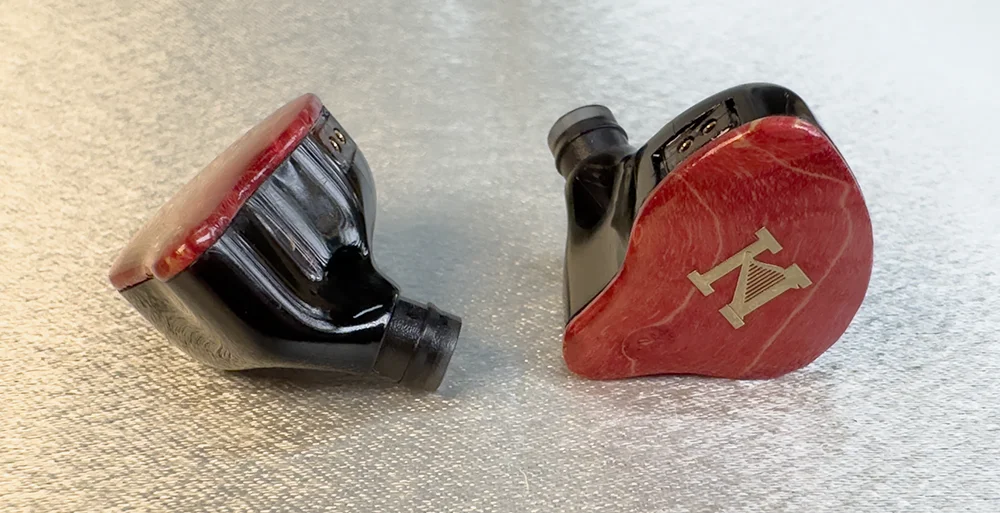
The Neo1s are ergonomically superb. For starters they weigh next to nothing, even compared to many budget hybrid IEMs they're unbelievably light and the shells feel smooth against the skin. They're also highly sculpted to match one's ear geometry and feel right at home in mine.
Furthermore despite their weight they isolate far more impressively than expected from ultralight IEMs thanks to how effectively their shape blocks the ear canal, making them ideal for public transport use.
The stock cable isn't going to win any awards for aesthetics or performance, but feels sturdy at the connectors where cables most commonly break. It'll get the job done I suppose, but can easily be improved upon if you're willing to spend a bit extra.
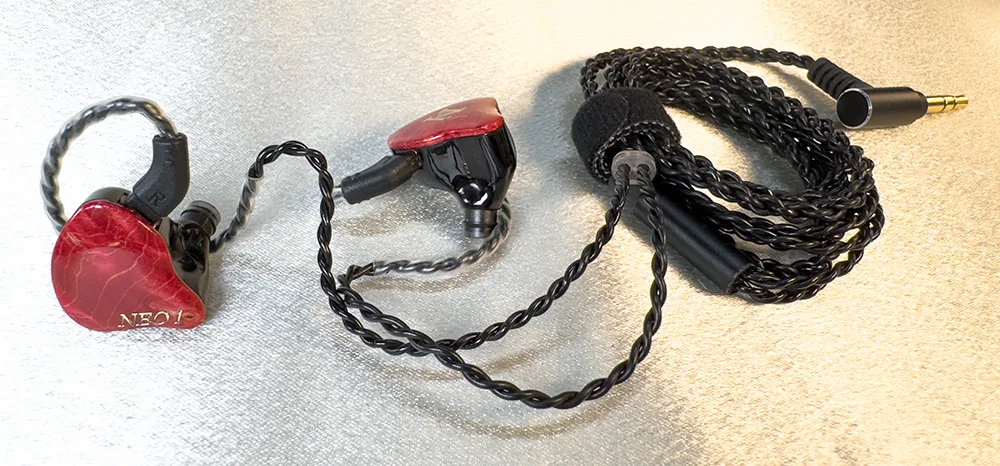
I tested the Neo1s with my Hiby R6 Pro II set to hi-gain in AB mode with a volume level of 17.
They immediately come across as slightly v-shaped with deep, boosted sub bass and very prominent treble, yet the more I listen the more I notice the forward presence of their midrange.
Sub bass is boosted slightly north of neutral & certainly won't feel deficient with bass-driven electronic music, but midbass is more restrained. That prevents the midrange being overwhelmed, but also means the Neo1s don't throb enough down low to be considered basshead IEMs - they're too well balanced.
Shifting to the midrange, vocals are positioned quite forward in the soundstage and have a decent amount of weight behind them. There's a fairly even-handed balance between the lower and upper midrange, so I'd struggle to label the Neo1s as tonally warm or cool... but rather quite neutral.
If anything I'd prefer a little more lower midrange boost, but given we have a single driver covering the entire frequency range that might result in a sacrifice being made elsewhere - for $39 they do a terrific job of covering the entire spectrum without any obvious gaping holes.
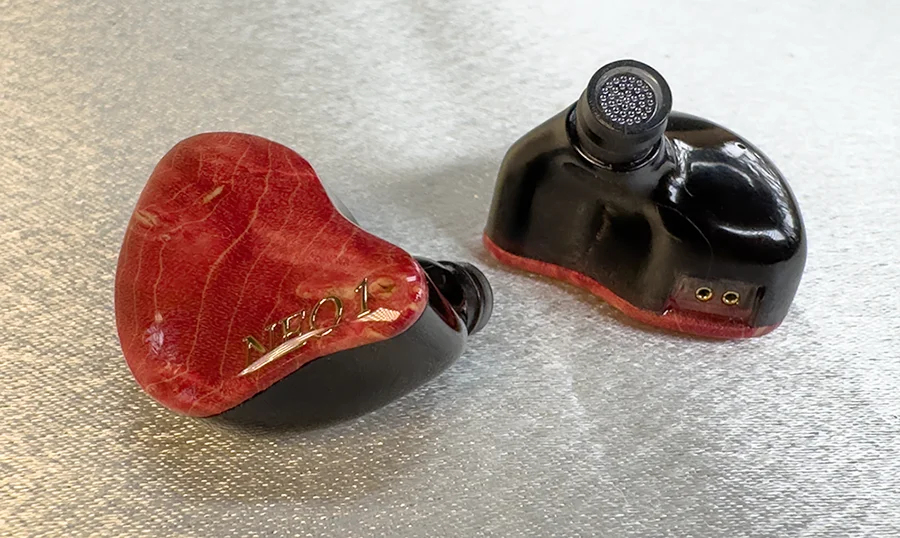
Treble is fairly bright on the Neo1s, which has perhaps been boosted to increase the perception of detail. Treble's well within my levels of tolerance, but as this is a very personal thing ISN have included a number acoustic filters to dampen treble should you require it.
Regrettably treble quality is an issue - it tends to be rather wispy & indistinct, lacking the smooth effortlessness & body often heard in IEMs with vastly higher prices. For $39 however the Neo1s don't feel dark, nor do I find treble screechy or piercing. I would nominate treble as their weakest area however.
The Neo1s feature a 4.5khz peak which some listeners will like less than others. If you want it dampened, three sets of acoustic filters (4 each) are included - stock metal grilles which block it least, dampening mesh filters that lower it slightly & cotton mesh filters which tame it more. The peak doesn't bother me even with the stock filters, but those options are handy and you can even stack filters.
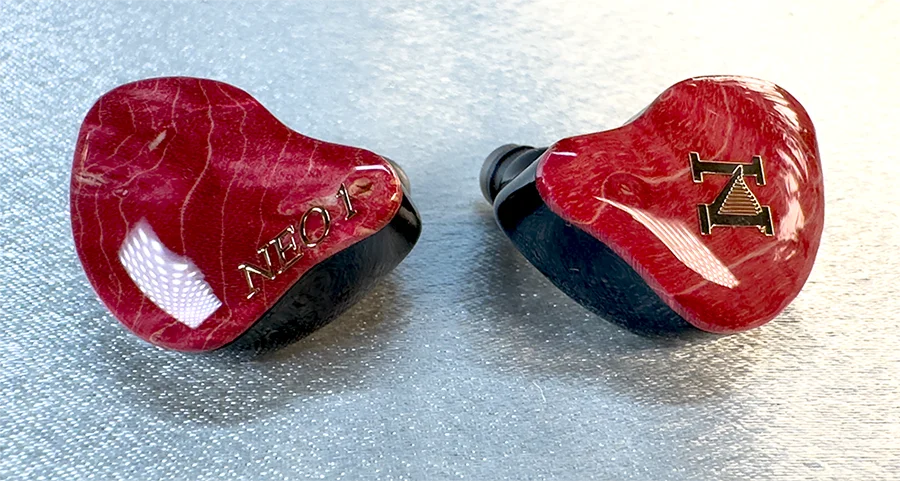
As a budget single-driver IEM, expectations for Neo1 technical performance must be kept reasonable to avoid disappointment. Within that context they perform quite well, though budget multi-driver hybrids can reach greater technical heights at the cost of coherency & tonality.
The Neo1s are extremely coherent as you'd expect from a single-DD, but the positives don't end there. Their soundstage is impressively wide by budget standards, successfully avoiding feeling claustrophobic despite the stage being quite shallow - which is fairly typical for low cost IEMs. My ears aren't tricked into believing multiple-BAs are creating the stage I'm hearing, but nor is it distractingly tiny either.
Resolution is a similar story - it won't blow away anyone who's sampled expensive IEMs, but considering the Neo1s' cost & single driver feels acceptable. You'll miss out on hearing notes trailing off into nothingness with pristine clarity, nor are instruments separated with ample blackness around them. However I don't get the impression notes are being smeared together in a single blob as was often the case with budget DDs of the past - how far driver tech has come!
Which brings me to the question of speed. No, these aren't the absolute fastest DD's I've heard, but they're perfectly decent at keeping up with fast-paced electronic & classical music I can't get enough of. Multi-BA IEMs will perform even better in that regard, but the difference feels modest.
One thing I don't particularly like is that as with a lot of budget earphones, individual instruments & voices can sound quite small on the Neo1s, which is mostly noticeable after swapping to more expensive IEMs.
NiceHCK DB2 – 1xDD (USD $22)

Extremely light & highly sculpted to ear geometry, DB2 comfort is decent but not quite as amazing as I would’ve guessed as they feel than bigger than they look when worn. Needing only 17 volume on the R6P2 they’re extremely easy to drive.
I like to present the pros & cons of each IEM when comparing them, but am struggling to think of areas where the DB2s eclipse the Neo1s. The DB2 soundstage is narrower & shallower, resolution is lower, they do have a little bit more midbass though less sub bass & lower bass quantity overall.
The DB2 background isn't as black, they may be a tad more coherent but that could just be a perception resulting from smaller stage dimensions, and overall they sound flatter with poorer dynamics & less note weight, and individual instruments sound smaller.
Truthear Zero – 2xDD (USD $49)

Despite being very bulky the Zeros are extremely light, and fit better than you’d think by looking at them. Isolation is merely average as they don’t seal off the ear canal as well as some of the more sculpted IEMs. Requiring 25 volume on the R6P2 they’re a bit harder to drive.
The Zeros' present a thinner tonality, with more upper midrange emphasis that can lead to vocals sounding a bit clearer but at the cost of a more natural tonality. Their soundstage is wider but also flatter, I find their bass texture is very disappointing and sub bass in particular just isn't there.
Compared to the Neo1s they're more relaxed with a more neutral & less v-shaped tuning some may prefer. However not only is their DD slower, but their background isn't as black, and they don't sound as refined especially in the treble where things can be quite grainy, and dynamics are lower.
NiceHCK F1 Pro – 1xPlanar (USD $99)

The F1 Pros’ small metal shells feel like they weigh next to nothing, and are extremely comfortable. Isolation however suffers because there isn’t a lot of mass blocking the ear canal. Requiring 24 volume on the R6P2 they need a bit more power to drive.
The planar drivers of the F1 Pro are much more technically capable than the Neo1's DDs and as such deliver far higher resolution across most frequencies, with a wider & deeper soundstage, a blacker background, and can keep up with complex passages of music even better.
However the F1 Pros are much brighter & more neutral whereas the Neo1s are more bass-driven with more midbass in particular, and I find Neo1 vocals have a little bit more weight behind them due to more lower midrange presence, the Neo1s are also quite a lot darker.
Simgot EM6L – 4xBA 1xDD (USD $109)

The EM6L shells are very heavy and I do notice their weight even during short listening sessions, however their shape is fairly comfortable and isolation is quite good thanks to all that mass. Needing 23 vol on the R6P2 they’re a bit harder to drive.
The EM6Ls deliver a much thinner, Harman-tuned sound with much more upper midrange focus that I don't particularly care for. However on the technical front their hyrid configuration let's them deliver a wider & deeper soundstage, slightly higher resolution, and a blacker background.
The Neo1s by contrast sound much less refined & feel more congested, though their tonality is more believable and they're slightly more coherent, with a more fun bass-driven sound that isn't as polite.
NiceHCK Blacksoul (USD $50)

In this fairly impressive pairing BlackSoul makes the Neo1s sound flatter and smoother, with a slightly wider soundstage that's also a touch deeper.
I also hear a slightly more detailed midrange which I didn't expect, note weight is a bit more prevalent and even bass has slightly more impact. Treble feels a tad muted which is typical for BlackSoul, but doesn't negatively impact the pairing for my taste.
ISN S4 (USD $55)

The S4 has always been great for boosting sub bass, and I do hear a slight uptick in that department with the Neo1s. The soundstage is also a little wider, and overall the presentation is brighter which helps make imaging feel a touch clearer.
However overall I don't feel the improvements to technicalities are worth the S4 imparting a thinner & cooler tonality that I don't really care for.
Penon Vocal (USD $69)

Vocal performs in accordance with its' name by bringing the midrange forward, adding more gravitas & note weight to vocals and increasing their resolution.
Dynamics are also slightly improved, the background is a little blacker and there's a slight uptick in midbass in this decent cable pairing.
Simgot LC7 (USD $69)

LC7 improves Neo1 dynamics substantially, widens the stage, improves note weight, delivers a blacker background & increases midrange resolution.
This cable does impart a metallic tonality I don't particularly like, but the technical improvements feel dramatic enough to be worth it.
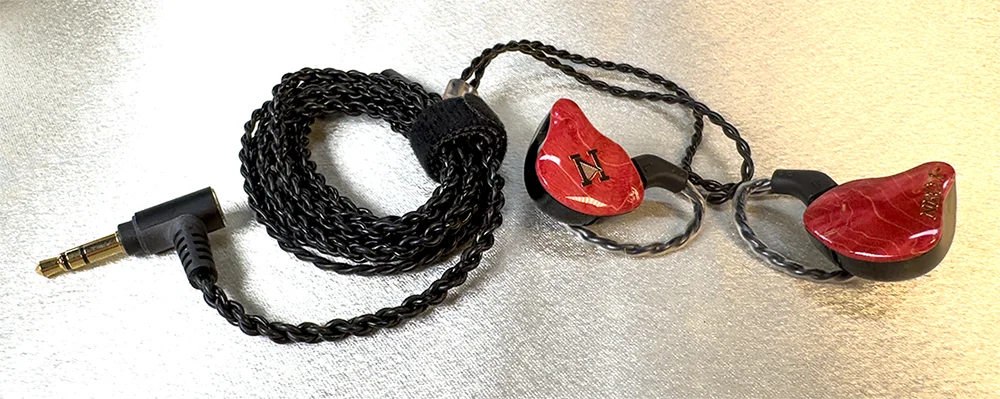
The ISN Neo1s are a prime example of how little you need to spend on a decent pair of IEMs these days.
They're insanely light, comfortable, isolation is terrific, they look great & sound good by budget standards.
For USD $39 they're the perfect backup pair of IEMs in case your more expensive set breaks, or just to throw in a gym bag without worrying if they get scratched.
Sonically bass is the highlight, vocals are quite impressive, they don't sound claustrophobic and the drivers are fast enough to keep up. Treble's a bit grainy, technical chops like resolution & imaging aren't amazing but for $39 I have no complaints.
I'm a bit surprised bass isn't even more dominant (they're an ISN IEM after all!) but assume that was decided to keep them more neutral, so they work better as all-rounders. Treble prominence could be an issue if you're sensitive, but they include swappable filters to tone it down.
I still recommend stretching your budget to the Neo5s if you can afford them, but it's pretty amazing how much of their performance you get from the Neo1s for 13% of the cost.
Depending on who you ask answers will vary, and the pace of technological improvement is making us revise our answers every year.
Five years ago a few hundred spent on earphones didn't go far, and five years before that spending several hundred could land you IEMs that were objectively terrible.
Fast forward to the present - ISN offered to send me a pair of their new USD $39 ISN Neo1 IEMs in exchange for a review, and if you read me gushing over their Neo5s (my favourite 2023 IEM under $500) you won't be surprised I jumped at the chance.
I've become a bit of a basshead lately -partly thanks to the Neo5s- and bass is ISN's forte. So I expected they'd be bassy, and reading they sport a 10mm carbon nanotube DD suggested they could perform beyond the norm for IEMs in this bracket.
So how much performance can we expect under $50 from a single driver?
Packaging

The ISN Neo1s arrive in a very small cardboard box, inside is a fabric carry case which is well-shaped to occupy a pants pocket.
Inside are the earphones & stock cable, two sets of silicone eartips in three sizes, a shirt clip and three sets of acoustic filters I'll discuss later.
The stock OFC silver-plated 2pin cable is unfortunately only available in a 3.5mm termination, and is as flimsy as you'd expect for an IEM in this price range - I'd be inclined to spend a few dollars replacing it with a higher quality quality 4.4mm cable. The entire package is fairly minimal, but for $39 it's impressive they've included as many accessories as they have.
Ergonomics

The Neo1s are ergonomically superb. For starters they weigh next to nothing, even compared to many budget hybrid IEMs they're unbelievably light and the shells feel smooth against the skin. They're also highly sculpted to match one's ear geometry and feel right at home in mine.
Furthermore despite their weight they isolate far more impressively than expected from ultralight IEMs thanks to how effectively their shape blocks the ear canal, making them ideal for public transport use.
The stock cable isn't going to win any awards for aesthetics or performance, but feels sturdy at the connectors where cables most commonly break. It'll get the job done I suppose, but can easily be improved upon if you're willing to spend a bit extra.
Sound Impressions

I tested the Neo1s with my Hiby R6 Pro II set to hi-gain in AB mode with a volume level of 17.
They immediately come across as slightly v-shaped with deep, boosted sub bass and very prominent treble, yet the more I listen the more I notice the forward presence of their midrange.
Sub bass is boosted slightly north of neutral & certainly won't feel deficient with bass-driven electronic music, but midbass is more restrained. That prevents the midrange being overwhelmed, but also means the Neo1s don't throb enough down low to be considered basshead IEMs - they're too well balanced.
Shifting to the midrange, vocals are positioned quite forward in the soundstage and have a decent amount of weight behind them. There's a fairly even-handed balance between the lower and upper midrange, so I'd struggle to label the Neo1s as tonally warm or cool... but rather quite neutral.
If anything I'd prefer a little more lower midrange boost, but given we have a single driver covering the entire frequency range that might result in a sacrifice being made elsewhere - for $39 they do a terrific job of covering the entire spectrum without any obvious gaping holes.

Treble is fairly bright on the Neo1s, which has perhaps been boosted to increase the perception of detail. Treble's well within my levels of tolerance, but as this is a very personal thing ISN have included a number acoustic filters to dampen treble should you require it.
Regrettably treble quality is an issue - it tends to be rather wispy & indistinct, lacking the smooth effortlessness & body often heard in IEMs with vastly higher prices. For $39 however the Neo1s don't feel dark, nor do I find treble screechy or piercing. I would nominate treble as their weakest area however.
The Neo1s feature a 4.5khz peak which some listeners will like less than others. If you want it dampened, three sets of acoustic filters (4 each) are included - stock metal grilles which block it least, dampening mesh filters that lower it slightly & cotton mesh filters which tame it more. The peak doesn't bother me even with the stock filters, but those options are handy and you can even stack filters.
Technical Performance

As a budget single-driver IEM, expectations for Neo1 technical performance must be kept reasonable to avoid disappointment. Within that context they perform quite well, though budget multi-driver hybrids can reach greater technical heights at the cost of coherency & tonality.
The Neo1s are extremely coherent as you'd expect from a single-DD, but the positives don't end there. Their soundstage is impressively wide by budget standards, successfully avoiding feeling claustrophobic despite the stage being quite shallow - which is fairly typical for low cost IEMs. My ears aren't tricked into believing multiple-BAs are creating the stage I'm hearing, but nor is it distractingly tiny either.
Resolution is a similar story - it won't blow away anyone who's sampled expensive IEMs, but considering the Neo1s' cost & single driver feels acceptable. You'll miss out on hearing notes trailing off into nothingness with pristine clarity, nor are instruments separated with ample blackness around them. However I don't get the impression notes are being smeared together in a single blob as was often the case with budget DDs of the past - how far driver tech has come!
Which brings me to the question of speed. No, these aren't the absolute fastest DD's I've heard, but they're perfectly decent at keeping up with fast-paced electronic & classical music I can't get enough of. Multi-BA IEMs will perform even better in that regard, but the difference feels modest.
One thing I don't particularly like is that as with a lot of budget earphones, individual instruments & voices can sound quite small on the Neo1s, which is mostly noticeable after swapping to more expensive IEMs.
IEM Comparisons
I compared the Neo1s to similarly-priced IEMs on the Hiby R6 Pro II set to hi-gain in AB mode, with the Neo1s requiring a volume of 17.NiceHCK DB2 – 1xDD (USD $22)

Extremely light & highly sculpted to ear geometry, DB2 comfort is decent but not quite as amazing as I would’ve guessed as they feel than bigger than they look when worn. Needing only 17 volume on the R6P2 they’re extremely easy to drive.
I like to present the pros & cons of each IEM when comparing them, but am struggling to think of areas where the DB2s eclipse the Neo1s. The DB2 soundstage is narrower & shallower, resolution is lower, they do have a little bit more midbass though less sub bass & lower bass quantity overall.
The DB2 background isn't as black, they may be a tad more coherent but that could just be a perception resulting from smaller stage dimensions, and overall they sound flatter with poorer dynamics & less note weight, and individual instruments sound smaller.
Truthear Zero – 2xDD (USD $49)

Despite being very bulky the Zeros are extremely light, and fit better than you’d think by looking at them. Isolation is merely average as they don’t seal off the ear canal as well as some of the more sculpted IEMs. Requiring 25 volume on the R6P2 they’re a bit harder to drive.
The Zeros' present a thinner tonality, with more upper midrange emphasis that can lead to vocals sounding a bit clearer but at the cost of a more natural tonality. Their soundstage is wider but also flatter, I find their bass texture is very disappointing and sub bass in particular just isn't there.
Compared to the Neo1s they're more relaxed with a more neutral & less v-shaped tuning some may prefer. However not only is their DD slower, but their background isn't as black, and they don't sound as refined especially in the treble where things can be quite grainy, and dynamics are lower.
NiceHCK F1 Pro – 1xPlanar (USD $99)

The F1 Pros’ small metal shells feel like they weigh next to nothing, and are extremely comfortable. Isolation however suffers because there isn’t a lot of mass blocking the ear canal. Requiring 24 volume on the R6P2 they need a bit more power to drive.
The planar drivers of the F1 Pro are much more technically capable than the Neo1's DDs and as such deliver far higher resolution across most frequencies, with a wider & deeper soundstage, a blacker background, and can keep up with complex passages of music even better.
However the F1 Pros are much brighter & more neutral whereas the Neo1s are more bass-driven with more midbass in particular, and I find Neo1 vocals have a little bit more weight behind them due to more lower midrange presence, the Neo1s are also quite a lot darker.
Simgot EM6L – 4xBA 1xDD (USD $109)

The EM6L shells are very heavy and I do notice their weight even during short listening sessions, however their shape is fairly comfortable and isolation is quite good thanks to all that mass. Needing 23 vol on the R6P2 they’re a bit harder to drive.
The EM6Ls deliver a much thinner, Harman-tuned sound with much more upper midrange focus that I don't particularly care for. However on the technical front their hyrid configuration let's them deliver a wider & deeper soundstage, slightly higher resolution, and a blacker background.
The Neo1s by contrast sound much less refined & feel more congested, though their tonality is more believable and they're slightly more coherent, with a more fun bass-driven sound that isn't as polite.
Cable Comparisons
I tested the Neo1s with a number of budget cables to gauge how effectively they respond to cable rolling.NiceHCK Blacksoul (USD $50)

In this fairly impressive pairing BlackSoul makes the Neo1s sound flatter and smoother, with a slightly wider soundstage that's also a touch deeper.
I also hear a slightly more detailed midrange which I didn't expect, note weight is a bit more prevalent and even bass has slightly more impact. Treble feels a tad muted which is typical for BlackSoul, but doesn't negatively impact the pairing for my taste.
ISN S4 (USD $55)

The S4 has always been great for boosting sub bass, and I do hear a slight uptick in that department with the Neo1s. The soundstage is also a little wider, and overall the presentation is brighter which helps make imaging feel a touch clearer.
However overall I don't feel the improvements to technicalities are worth the S4 imparting a thinner & cooler tonality that I don't really care for.
Penon Vocal (USD $69)

Vocal performs in accordance with its' name by bringing the midrange forward, adding more gravitas & note weight to vocals and increasing their resolution.
Dynamics are also slightly improved, the background is a little blacker and there's a slight uptick in midbass in this decent cable pairing.
Simgot LC7 (USD $69)

LC7 improves Neo1 dynamics substantially, widens the stage, improves note weight, delivers a blacker background & increases midrange resolution.
This cable does impart a metallic tonality I don't particularly like, but the technical improvements feel dramatic enough to be worth it.
Conclusion

The ISN Neo1s are a prime example of how little you need to spend on a decent pair of IEMs these days.
They're insanely light, comfortable, isolation is terrific, they look great & sound good by budget standards.
For USD $39 they're the perfect backup pair of IEMs in case your more expensive set breaks, or just to throw in a gym bag without worrying if they get scratched.
Sonically bass is the highlight, vocals are quite impressive, they don't sound claustrophobic and the drivers are fast enough to keep up. Treble's a bit grainy, technical chops like resolution & imaging aren't amazing but for $39 I have no complaints.
I'm a bit surprised bass isn't even more dominant (they're an ISN IEM after all!) but assume that was decided to keep them more neutral, so they work better as all-rounders. Treble prominence could be an issue if you're sensitive, but they include swappable filters to tone it down.
I still recommend stretching your budget to the Neo5s if you can afford them, but it's pretty amazing how much of their performance you get from the Neo1s for 13% of the cost.
Bosk
1000+ Head-Fier
Pros: Superb technical performance, great bass & treble and impressive build quality
Cons: Planar driver tonality
Tonality vs Technicality - which camp are you in?
Is it really a binary equation though? Sure, some listeners swear by transducers with supremely natural tonality even if technical performance is poor, and of course you'll find others who feel the opposite.
However I suspect most of us fall somewhere in the middle of the spectrum, perhaps preferring IEMs that sound natural but accepting of those that don't if the technical performance tradeoff feels worth it.
Which brings me to the F1 Pros NiceHCK sent in exchange for a review - equipped with a single 14.2mm planar driver my thoughts immediately race back to the other planar IEMs I've tried, which frequently offer superb technical performance at the cost of lousy tonality.
It'll be fascinating to see if the F1 Pros sound similar... but hang on, don't NiceHCK make cables??
Their cables tend to be great bang for buck, but I didn't even know they made IEMs.
This one could get interesting... or ugly. You've been warned!
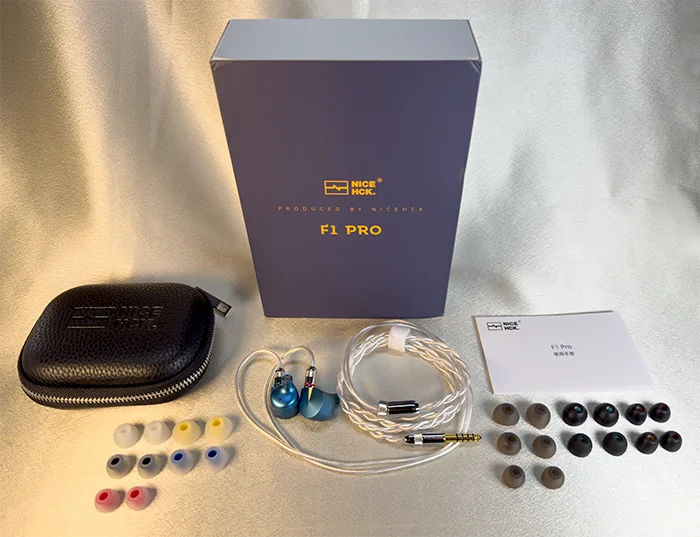
The F1 Pros arrive in a small cardboard box containing a leather carry case that's small enough to be practical, a warranty card, three sets of silicone eartips and the IEMs & stock cable.
You can order the F1 Pros with your choice of 3.5mm or 4.4mm-terminated 2pin stock cable which boasts OCC copper & silver-plated copper conductors, feels pleasantly supple & looks quite premium.
In my cable tests the stock cable actually performs surprisingly well, but given NiceHCK's audio cable heritage perhaps that's no surprise!
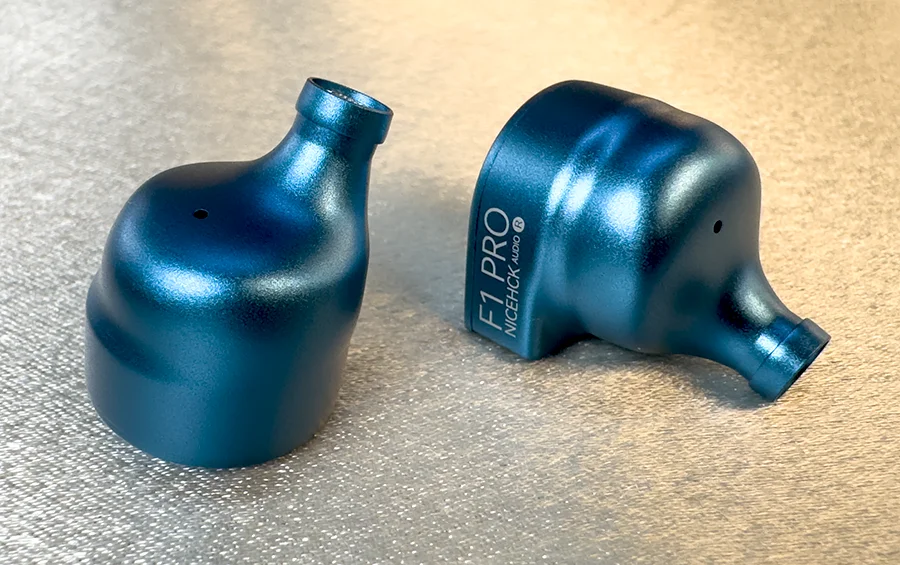
The F1 Pros’ small aluminium alloy shells are extremely light, and thanks to their smoothly sculpted form are extremely comfortable in the ear - IEMs I can wear for hours with no discomfort.
Fully vented for pressure relief, they're beautifully machined and feel very smooth to the touch. Indeed their finish & aesthetic qualities are such I wouldn't baulk if their price were considerably higher.
Isolation levels are decent, but suffer because there isn’t a lot of mass blocking the ear canal compared to larger, multi-driver IEMs. They're OK for noisy public transport trips, just not ideal.
The stock cable aids comfort by being extremely pliable & light. I'm a big fan of two-wire cables which look neater than braided alternatives, visually I find that minimalism so appealing.

I tested the F1 Pros with my Hiby R6 Pro II set to hi-gain in AB mode, at a volume level of 24.
It's at once noticeable they're fairly V-shaped with very airy treble and a surprisingly wide soundstage, and thanks to their planar drivers technical performance is excellent for this price bracket.
Bass
Sub bass goes very deep on the F1 Pros. Although there’s a decent amount of heft, bass texture can be a little pillowy but there’s a fair amount of rumble and slam. Music which tends to focus on sub bass rather than midbass tends to sound more satisfying on the F1 Pros.
Bassheads may be disappointed by the insubstantial bass texture & may yearn for even greater quantity, but there’s enough bass present to really enjoy bass-driven genres whilst preserving a feeling of clarity.
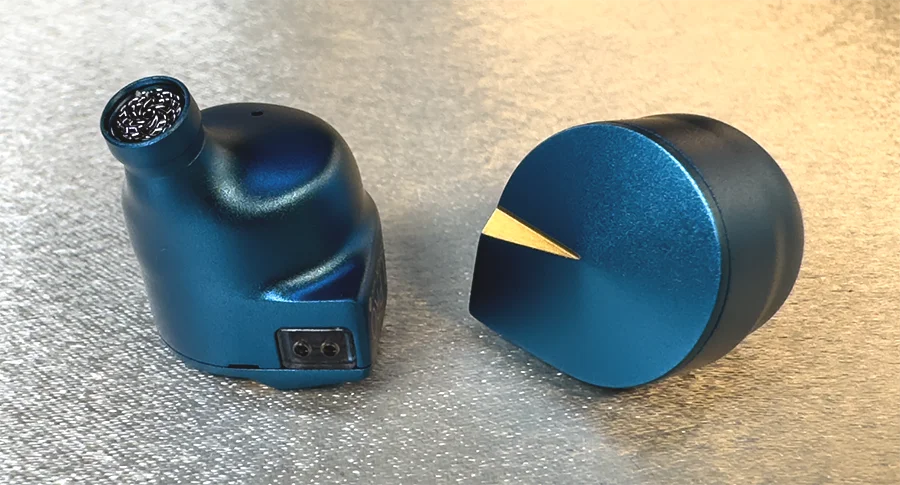
Midrange
This is where the key drawback of a planar driver is felt - the F1 Pro midrange suffers from the same slightly unnatural tonality plaguing other planar driver IEMs.
NiceHCK have managed to curb the worst planar tendencies so it’s not as metallic as other planer IEMs I’ve heard, but there's a feeling of hollowness to male & female vocals which tend to lack body, though they have the virtue of being very resolving.
Treble
Treble is quite emphasised, which is where the F1 Pros really excel & differentiate themselves from the competition. Low-cost IEMs typically deliver very simplified treble that can often be quite grainy, but that’s not the case here.
Instead F1 Pro treble is refined & effortless with an abundance of detail, with quantity tastefully boosted so it gets more of your attention. Treble isn't excessively bright to my ears but I wouldn’t want it any more intense either, so you if you're treble sensitive the F1 Pros may push your tolerance levels.

The first thing to jump out is the F1 Pro’s soundstage. It’s not only enviably wide, even by the standards of earphones worth hundreds of dollars, but demonstrates a surprising amount of depth. There’s a feeling of spaciousness conveyed we rarely see at this price.
Resolution is excellent considering its a single driver doing all the work - another strength of planar drivers. I really don’t get the sense one driver is struggling to cover the entire frequency spectrum here the way I do with most single-DD IEMs, particularly budget variants. In fact resolution feels impressively spread throughout the frequency spectrum, not just concentrated in the midrange.
Then there’s the impressive speed of planar drivers which is definitely evident – the F1 Pros have no issues keeping up with complex passages of music in a way many single-DD’s struggle with.
Dynamics and imaging are both very solid without jumping out as strong attributes. From an overall technical perspective the F1 Pros do a commendable job of imitating multi-driver hybrid performance with just a single planar driver.
NiceHCK DB2 – 1xDD (USD $22)

I'm busy working on a review of the DB2s, and ergonomically they've impressed with insanely light shells in a nicely sculpted form factor, though for some reason feel bigger in the ears than they look. Requiring only 17 volume on the R6P2 they're extremely easy to drive.
It feels awkward being critical of an IEM worth just $22, so instead I'll say this - if you're thinking of buying a NiceHCK IEM... please do yourself a favour and just spend the $77 more on the F1 Pro instead.
The DB2's DD-fuelled midrange tonality is a little more natural than the F1 Pro's planar driver, but the F1 Pro's are vastly higher in resolution, with a wider & deeper soundstage, much stronger & more impactful bass, feel far less-congested & can keep up with fast-paced music much better.
ISN Neo1 – 1xDD (USD $39)

Another IEM I'll be reviewing soon, the Neo1s are extremely light & well-sculpted to my ear geometry, as such they're superbly comfortable. Even isolation is brilliant particularly given how light they are, making them a perfect for commuting. Needing just 19 volume on the R6P2 they’re easy to drive.
The Neo1s definitely have more midbass but a bit less sub bass, and with greater lower midrange output they sound much more tonally satisfying. However like the DB2’s their single-DD isn’t as fast as the F1 Pro’s planar driver, nor does it cover the entire frequency spectrum as effortlessly.
Neo1 resolution isn't as high nor do they feel remotely as refined, with F1 Pro treble in particular being a big step up. By comparison the Neo1s come across as raw & slightly congested, they're tuned to feel a little punchier with greater midbass output which definitely suits genres like Rock music, but the F1 Pros are performing at a higher technical level across the board.
Truthear Zero – 2xDD (USD $49)

Despite being bulky the Zeros are very light, and fit far better than you’d think by looking at them. Isolation however is merely average as they don’t seem to seal off the ear canal quite as well as some of the more sculpted IEMs out there. Requiring 25 volume on the R6P2 they need a bit of power to drive.
The Zeroes sound more open simply because they don’t seal as well, so their soundstage has the illusion of greater width but is distractingly flat with no depth whatsoever. Note weight is also lower, dynamics are worse, bass is much less impactful and bass texture is very mushy.
Midrange tonality is slightly more appealing on the Zeros which is the one area they pull ahead of the F1 Pros, but treble is much lower in both quantity & quality and resolution is also far inferior.
Simgot EM6L – 4xBA 1xDD (USD $109)

The EM6L shells are very heavy and I do notice this weight even during short listening sessions, however their shape is fairly comfortable & isolation is impressive thanks to all that mass. Requiring 24 volume on the R6P2 they require a bit of power to drive.
I can tell the EM6Ls are multi-driver hybrids as they allow instruments to remain distinct during complex passages even better than the F1 Pros, though they're not quite as coherent. They have a smoother, less excited presentation but sound flatter and less dynamic. Nor does the EM6L midrange tonality impress me thanks to their Harman-target tuning, in fact I almost prefer the F1 Pros' tonally.
Vocals are set further back on the EM6Ls and at times feel annoyingly distant, treble is a bit more prominent on the F1 Pros but treble quality feels similar between the two IEMs, though bass is definitely less impactful & lower in quantity on the EM6Ls and their soundstage is narrower.
NiceHCK Blacksoul (USD $50)

Blacksoul is a cable that's useful for rolling off excessive treble to create a darker sound, though it doesn't seem to blunt the F1 Pros' treble terribly much in this somewhat disappointing pairing.
Vocals come forward and dynamics improve slightly, and there's a bit more note weight. However there's more upper-midrange presence why may explain why I actually prefer the stock cable's tonality.
Penon Vocal (USD $69)

In this decent pairing the F1 Pro midrange tonality does improve slightly, perhaps as the result of more midbass being added which also seems to result in slightly better note weight.
The soundstage is a little narrower but a touch deeper, the presentation is a little flatter & less excited, which would be nice for long listening sessions but I do miss the extra treble sparkle of the stock cable.
NiceHCK FirstTouch (USD $89)

FirstTouch tones down the treble down as expected, but also delivers a blacker background that results in sharper imaging & improved midrange resolution - the trait I most associate with this cable.
The soundstage is deeper but slightly narrower, and the overall tonality feels a bit smoother & more natural making this quite a good cable pairing.
Effect Audio Ares S 4 Wire (USD $179)

If you like midbass then Ares S is always a solid bet, so it's no surprise the F1 Pro's midbass is boosted which helps make bass feel a bit punchier, and the tonality also becomes a bit earthier & more natural.
Vocals also feel a bit more defined & spotlit against instruments around them, treble feels muted but only slightly and not to the extent it's reduced by some of the other cables. Soundstage dimensions feel largely unchanged, but on the basis of tonality & bass improvements this is an impressive pairing.
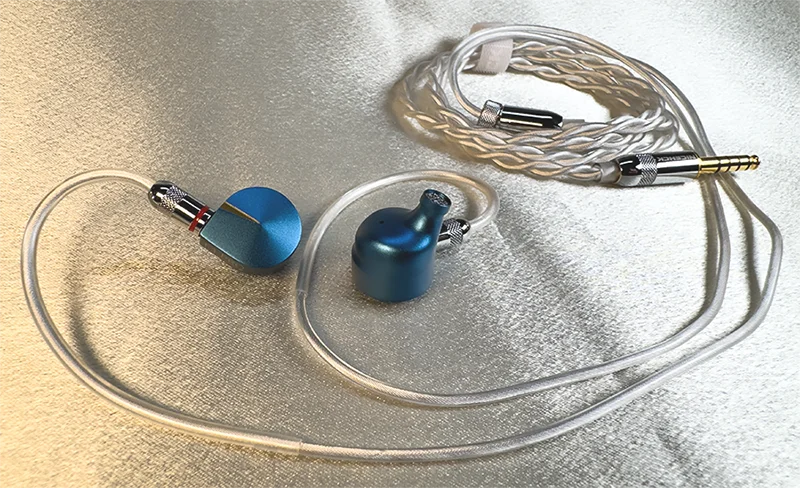
As my first opportunity to try a NiceHCK IEM and listen to a planar IEM for longer than a few minutes I wasn't sure what to expect from the F1 Pros.
For just $99 these are exceedingly easy to recommend if you're a "technicality over tonality" kind of listener like I am. Now don't get me wrong, believable & naturalistic tonality is something I value highly, particularly for vocal-centric genres.
Unfortunately the world of audio is one of compromises, where you're forced to choose which shortcomings you can live with regardless of how much you spend - I'm sorry folks, but perfection does not exist even at the highest echelons of expenditure despite our fantasies whispering otherwise!
Which brings me back to the F1 Pros. If you can live with their weaker tonality & fairly prominent treble, the resolution, coherency & technical performance they deliver for $99 is stunning.
Minor quibble? None of the cables I tried seemed to upgrade their performance as much as I hoped, which could just mean the stock cable is great & you shouldn't feel obliged to change it.
The F1 Pros really demonstrate the potential of planar drivers. I'm still waiting for the explosion of Planar/BA/EST hybrids onto the market many predicted two years ago, but this level of performance for under $100 gets me very excited for the next generation of planar IEMs around the corner.
Is it really a binary equation though? Sure, some listeners swear by transducers with supremely natural tonality even if technical performance is poor, and of course you'll find others who feel the opposite.
However I suspect most of us fall somewhere in the middle of the spectrum, perhaps preferring IEMs that sound natural but accepting of those that don't if the technical performance tradeoff feels worth it.
Which brings me to the F1 Pros NiceHCK sent in exchange for a review - equipped with a single 14.2mm planar driver my thoughts immediately race back to the other planar IEMs I've tried, which frequently offer superb technical performance at the cost of lousy tonality.
It'll be fascinating to see if the F1 Pros sound similar... but hang on, don't NiceHCK make cables??
Their cables tend to be great bang for buck, but I didn't even know they made IEMs.
This one could get interesting... or ugly. You've been warned!
Packaging

The F1 Pros arrive in a small cardboard box containing a leather carry case that's small enough to be practical, a warranty card, three sets of silicone eartips and the IEMs & stock cable.
You can order the F1 Pros with your choice of 3.5mm or 4.4mm-terminated 2pin stock cable which boasts OCC copper & silver-plated copper conductors, feels pleasantly supple & looks quite premium.
In my cable tests the stock cable actually performs surprisingly well, but given NiceHCK's audio cable heritage perhaps that's no surprise!
Ergonomics

The F1 Pros’ small aluminium alloy shells are extremely light, and thanks to their smoothly sculpted form are extremely comfortable in the ear - IEMs I can wear for hours with no discomfort.
Fully vented for pressure relief, they're beautifully machined and feel very smooth to the touch. Indeed their finish & aesthetic qualities are such I wouldn't baulk if their price were considerably higher.
Isolation levels are decent, but suffer because there isn’t a lot of mass blocking the ear canal compared to larger, multi-driver IEMs. They're OK for noisy public transport trips, just not ideal.
The stock cable aids comfort by being extremely pliable & light. I'm a big fan of two-wire cables which look neater than braided alternatives, visually I find that minimalism so appealing.
Sound Impressions

I tested the F1 Pros with my Hiby R6 Pro II set to hi-gain in AB mode, at a volume level of 24.
It's at once noticeable they're fairly V-shaped with very airy treble and a surprisingly wide soundstage, and thanks to their planar drivers technical performance is excellent for this price bracket.
Bass
Sub bass goes very deep on the F1 Pros. Although there’s a decent amount of heft, bass texture can be a little pillowy but there’s a fair amount of rumble and slam. Music which tends to focus on sub bass rather than midbass tends to sound more satisfying on the F1 Pros.
Bassheads may be disappointed by the insubstantial bass texture & may yearn for even greater quantity, but there’s enough bass present to really enjoy bass-driven genres whilst preserving a feeling of clarity.

Midrange
This is where the key drawback of a planar driver is felt - the F1 Pro midrange suffers from the same slightly unnatural tonality plaguing other planar driver IEMs.
NiceHCK have managed to curb the worst planar tendencies so it’s not as metallic as other planer IEMs I’ve heard, but there's a feeling of hollowness to male & female vocals which tend to lack body, though they have the virtue of being very resolving.
Treble
Treble is quite emphasised, which is where the F1 Pros really excel & differentiate themselves from the competition. Low-cost IEMs typically deliver very simplified treble that can often be quite grainy, but that’s not the case here.
Instead F1 Pro treble is refined & effortless with an abundance of detail, with quantity tastefully boosted so it gets more of your attention. Treble isn't excessively bright to my ears but I wouldn’t want it any more intense either, so you if you're treble sensitive the F1 Pros may push your tolerance levels.
Technical Performance

The first thing to jump out is the F1 Pro’s soundstage. It’s not only enviably wide, even by the standards of earphones worth hundreds of dollars, but demonstrates a surprising amount of depth. There’s a feeling of spaciousness conveyed we rarely see at this price.
Resolution is excellent considering its a single driver doing all the work - another strength of planar drivers. I really don’t get the sense one driver is struggling to cover the entire frequency spectrum here the way I do with most single-DD IEMs, particularly budget variants. In fact resolution feels impressively spread throughout the frequency spectrum, not just concentrated in the midrange.
Then there’s the impressive speed of planar drivers which is definitely evident – the F1 Pros have no issues keeping up with complex passages of music in a way many single-DD’s struggle with.
Dynamics and imaging are both very solid without jumping out as strong attributes. From an overall technical perspective the F1 Pros do a commendable job of imitating multi-driver hybrid performance with just a single planar driver.
IEM Comparisons
I compared the F1 Pros to similarly-priced IEMs on the Hiby R6 Pro II set to hi-gain in AB mode, with the F1 Pros requiring a volume of 24.NiceHCK DB2 – 1xDD (USD $22)

I'm busy working on a review of the DB2s, and ergonomically they've impressed with insanely light shells in a nicely sculpted form factor, though for some reason feel bigger in the ears than they look. Requiring only 17 volume on the R6P2 they're extremely easy to drive.
It feels awkward being critical of an IEM worth just $22, so instead I'll say this - if you're thinking of buying a NiceHCK IEM... please do yourself a favour and just spend the $77 more on the F1 Pro instead.
The DB2's DD-fuelled midrange tonality is a little more natural than the F1 Pro's planar driver, but the F1 Pro's are vastly higher in resolution, with a wider & deeper soundstage, much stronger & more impactful bass, feel far less-congested & can keep up with fast-paced music much better.
ISN Neo1 – 1xDD (USD $39)

Another IEM I'll be reviewing soon, the Neo1s are extremely light & well-sculpted to my ear geometry, as such they're superbly comfortable. Even isolation is brilliant particularly given how light they are, making them a perfect for commuting. Needing just 19 volume on the R6P2 they’re easy to drive.
The Neo1s definitely have more midbass but a bit less sub bass, and with greater lower midrange output they sound much more tonally satisfying. However like the DB2’s their single-DD isn’t as fast as the F1 Pro’s planar driver, nor does it cover the entire frequency spectrum as effortlessly.
Neo1 resolution isn't as high nor do they feel remotely as refined, with F1 Pro treble in particular being a big step up. By comparison the Neo1s come across as raw & slightly congested, they're tuned to feel a little punchier with greater midbass output which definitely suits genres like Rock music, but the F1 Pros are performing at a higher technical level across the board.
Truthear Zero – 2xDD (USD $49)

Despite being bulky the Zeros are very light, and fit far better than you’d think by looking at them. Isolation however is merely average as they don’t seem to seal off the ear canal quite as well as some of the more sculpted IEMs out there. Requiring 25 volume on the R6P2 they need a bit of power to drive.
The Zeroes sound more open simply because they don’t seal as well, so their soundstage has the illusion of greater width but is distractingly flat with no depth whatsoever. Note weight is also lower, dynamics are worse, bass is much less impactful and bass texture is very mushy.
Midrange tonality is slightly more appealing on the Zeros which is the one area they pull ahead of the F1 Pros, but treble is much lower in both quantity & quality and resolution is also far inferior.
Simgot EM6L – 4xBA 1xDD (USD $109)

The EM6L shells are very heavy and I do notice this weight even during short listening sessions, however their shape is fairly comfortable & isolation is impressive thanks to all that mass. Requiring 24 volume on the R6P2 they require a bit of power to drive.
I can tell the EM6Ls are multi-driver hybrids as they allow instruments to remain distinct during complex passages even better than the F1 Pros, though they're not quite as coherent. They have a smoother, less excited presentation but sound flatter and less dynamic. Nor does the EM6L midrange tonality impress me thanks to their Harman-target tuning, in fact I almost prefer the F1 Pros' tonally.
Vocals are set further back on the EM6Ls and at times feel annoyingly distant, treble is a bit more prominent on the F1 Pros but treble quality feels similar between the two IEMs, though bass is definitely less impactful & lower in quantity on the EM6Ls and their soundstage is narrower.
Cable Comparisons
As always I'll test how the F1 Pros respond to cable rolling, which will be interesting given their single-driver configuration - I find multi-driver IEMs generally benefit more from cable upgrades.NiceHCK Blacksoul (USD $50)

Blacksoul is a cable that's useful for rolling off excessive treble to create a darker sound, though it doesn't seem to blunt the F1 Pros' treble terribly much in this somewhat disappointing pairing.
Vocals come forward and dynamics improve slightly, and there's a bit more note weight. However there's more upper-midrange presence why may explain why I actually prefer the stock cable's tonality.
Penon Vocal (USD $69)

In this decent pairing the F1 Pro midrange tonality does improve slightly, perhaps as the result of more midbass being added which also seems to result in slightly better note weight.
The soundstage is a little narrower but a touch deeper, the presentation is a little flatter & less excited, which would be nice for long listening sessions but I do miss the extra treble sparkle of the stock cable.
NiceHCK FirstTouch (USD $89)

FirstTouch tones down the treble down as expected, but also delivers a blacker background that results in sharper imaging & improved midrange resolution - the trait I most associate with this cable.
The soundstage is deeper but slightly narrower, and the overall tonality feels a bit smoother & more natural making this quite a good cable pairing.
Effect Audio Ares S 4 Wire (USD $179)

If you like midbass then Ares S is always a solid bet, so it's no surprise the F1 Pro's midbass is boosted which helps make bass feel a bit punchier, and the tonality also becomes a bit earthier & more natural.
Vocals also feel a bit more defined & spotlit against instruments around them, treble feels muted but only slightly and not to the extent it's reduced by some of the other cables. Soundstage dimensions feel largely unchanged, but on the basis of tonality & bass improvements this is an impressive pairing.
Conclusion

As my first opportunity to try a NiceHCK IEM and listen to a planar IEM for longer than a few minutes I wasn't sure what to expect from the F1 Pros.
For just $99 these are exceedingly easy to recommend if you're a "technicality over tonality" kind of listener like I am. Now don't get me wrong, believable & naturalistic tonality is something I value highly, particularly for vocal-centric genres.
Unfortunately the world of audio is one of compromises, where you're forced to choose which shortcomings you can live with regardless of how much you spend - I'm sorry folks, but perfection does not exist even at the highest echelons of expenditure despite our fantasies whispering otherwise!
Which brings me back to the F1 Pros. If you can live with their weaker tonality & fairly prominent treble, the resolution, coherency & technical performance they deliver for $99 is stunning.
Minor quibble? None of the cables I tried seemed to upgrade their performance as much as I hoped, which could just mean the stock cable is great & you shouldn't feel obliged to change it.
The F1 Pros really demonstrate the potential of planar drivers. I'm still waiting for the explosion of Planar/BA/EST hybrids onto the market many predicted two years ago, but this level of performance for under $100 gets me very excited for the next generation of planar IEMs around the corner.
o0genesis0o
Great work, mate!
That reminds me, I should try the F1 Pro with Class A of the R6 Pro 2 before sending the DAP back. Should be fun.
That reminds me, I should try the F1 Pro with Class A of the R6 Pro 2 before sending the DAP back. Should be fun.
Bosk
1000+ Head-Fier
Pros: Super clarity & transparency, great bass, impressive soundstage & respectable technical performance
Cons: Heavy metal shells & slightly lean tonality
What influences earphone sound more – tuning, or technology?
Last month I posted a lukewarm review of the Simgot EM6Ls tuned to match the Harman Curve, so when Simgot offered a pair of new EA1000s in exchange for a review apprehension filled me… would they have the same nasal Harman tonality, and if so how would they feel about another poor review?
I began reading the impressions of others, and surprisingly EA1000 owners claimed they were a very different animal – what grabbed attention was their driver configuration; One single DD and a “Passive Radiator” which I believe is a DD that fires outwards towards the ear, rather than through the IEM nozzle into the ear canal.
There aren’t many IEMs with passive radiators, and anything unique in the hobby catches my attention!
So are the EA1000s just another Harman earphone to avoid, or do they offer something new?

The USD $219 Simgot EA1000s arrive in a small cardboard box, with an impressive range of accessories.
There’s a small carry case of surprisingly supple leather which seals magnetically, an instruction manual, two sets of silicone eartips in three sizes, and two sets of tuning nozzles. (more on those later)
The stock cable is a very attractive silver-plated OFC litz affair, which unfortunately comes terminated in a 3.5mm plug. Given the EA1000 pricepoint I’d have loved a 4.4mm option to be made available.

The EA1000s do an excellent job of looking much more expensive than they actually are. Their weighty stainless steel shells with transparent crystal panels provide the feeling of a high-quality item built to last, and the stock 3.5mm cable further accentuates this luxurious effect.
The shells are actually vented in two places to provide pressure-relief, along with the passive-radiator grilles which I’m assuming also leak some noise to the outside. Despite that I find the EA1000s heavy & bulky enough to isolate quite respectably if you’re thinking of using them on public transport.
As for fit I find their smooth, rounded shape greatly aids comfort and I can keep them in my ears for hours without issue. However their weight is fairly significant so if you prefer lighter IEMs you may wish to look at those with resin shells instead.

I used a Hiby R6 Pro II set to hi-gain in AB mode with a volume level of 18 to test the EA1000s.
I’m a cable snob who refuses to use 3.5mm single-ended cables, so instead used a fairly basic 4.4mm Penon Globe silver-plated stock cable to make comparisons easier.
The EA1000s are very cohesive with a clear, clean tonality that’s impressively transparent. They’re quite neutral, but unlike many ‘reference’ tuned IEMs don’t flat or boring – instead they’re lively & dynamic.
They do a fantastic job of conveying the coherency of a single dynamic driver, yet deliver most of the technical performance you’d expect from a multi-driver hybrids.
Bass is unmistakably DD-fueled with the kind of impressive texture you’d expect from a dynamic driver, delivering ample thump to make bass dominant genres satisfying – just don’t expect basshead levels of quantity, because Simgot have decided to prioritise neutrality. Sub bass is emphasised a little over midbass, preventing added warmth being injected to keep the presentation sounding ‘clean’.

Shifting to the midrange the priority is clarity over warmth, with vocal articulation being very impressive. There is a slight bias towards the upper midrange but not enough to bother most listeners, as there’s enough lower midrange to provide a pleasing sense of fullness & note weight for male & female vocals.
I was concerned the EA1000’s Harman origins might result in the thin, hollow tonality that’s always made me dislike Harman-tuned IEMs, but thankfully Simgot have avoided that. What I really like is instruments & voices are portrayed to sound quite large on the EA1000s, whereas on many budget IEMs they often feel small & diminished. This also aids EA1000 midrange resolution which is excellent.
Treble on the EA1000s is adequately resolving given there’s no BAs or ESTs, and Simgot have been careful not to overcook the quantity to avoid any potential sibilance. Treble does not feel rolled off however, with sufficient presence even for electronic music.
Given the EA1000’s very capable bass & midrange performance I’d be hard pressed to expect more in this area from just one DD, and if anything would argue Simgot has achieved an excellent balance.

EA1000 technical performance is far above the levels I associate with less costly single-DD IEMs.
The soundstage is impressive even by the standards of even fairly expensive IEMs, with surprisingly expansive width considering just two drivers are present. Stage depth isn’t nearly as strong, but avoids being paper-thin as we often see with more affordable IEMs.
Resolution is very solid given the price range & modest driver count, in fact resolution on vocals is quite pleasing but the EA1000’s definitely aren’t resolution monsters like multi-BA hybrids.
Imaging is quite good which may be largely a virtue of the wide stage giving instruments a fair amount of room to position themselves, though I wouldn’t label it pinpoint as the background isn’t quite inky black.
Dynamics are excellent. Sounds really jump out from the background in a pleasing manner, and as someone who’s always felt dynamics go a long way towards a convincing portrayal of real instruments this quality alone helps ingratiate the EA1000’s with me.

The EA1000 nozzles unscrew easily, and two additional nozzles which alter the tuning are included. They’re even supplied with a nicely-finished metal holder they screw into – a thoughtful touch.
Silver (stock)
The stock nozzles are made from stainless steel and deliver a very balanced, neutral sound. These are my favourites for most genres.
Silver (alternate)
Also stainless steel, these deepen bass with more midbass in particular added, bringing vocals forward & embodying them with more presence to increase the overall sense of fullness. These are my preferred choice for vocal genres, but the soundstage doesn’t feel as open & there’s a slight loss of transparency.
Gold
The gold nozzles are made from brass which may in itself alter acoustic properties. They sound more airy, but though the stage feels slightly wider the perception of note weight diminishes & some of the lower midrange warmth feels removed. I like these for classical music.

I compared the EA1000s with several IEMs at hand to get a feel for how they stack up. For reference the EA1000’s required a volume of 18 on the Hiby R6P2.
Simgot EM6L – 4xBA 1xDD (USD $109)

The EM6L’s are physically lighter with shells less rounded, and oddly I find don’t isolate quite as well. However the difference in comfort between them is fairly negligible. Requiring 28 volume on the R6P2 they’re quite a bit harder to drive.
I can immediately tell the EM6Ls are multi-driver hybrids since they don’t sound as coherent but it feels like they’re covering the frequency spectrum more completely.
EM6L tonality is definitely poorer with more upper midrange emphasis leading to an unpleasantly hollow sound, which comes across as slightly diffuse so the centre soundstage image doesn’t feel as solid. The EM6L stage itself feels artificially stretched wider, but is slightly deeper.
There’s common ground in the tuning of these two IEMs, but the EM6L is more strictly Harman-tuned. Interestingly the EA1000s feel cleaner & higher in resolution, and I much prefer them over the EM6Ls.
Tanchjim Oxygen – 1xDD (USD $230)

The Oxygens tiny, to the extent I have difficulty obtaining a decent seal. They’re amazingly comfortable, but heavy for their size to extent they feel about as weighty as the EA1000s. Needing 25 volume on the R6P2 they’re a bit harder to drive.
Mine are the older version of the Oxygens, which have had their nozzle grilles removed.
The Oxygens remind me of the EM6Ls but with an even thinner, more Harman-esque tonality with far too much upper midrange. Sub bass is impressive & reaches quite deep, whereas the EA1000 emphasises midbass more but also adds more lower midrange to make instruments sound more convincing.
The Oxygens sound like single-DDs that are showing their age, with a much narrower stage and a great deal of difficulty separating instruments during complex passages, and often come across as mushy.
Penon Dome – 3xBA 1xDD (USD $349)

Made from resin the Domes are much lighter & hug the counters of my ears better, so comfort is definitely superior. Requiring 22 on the R6P2 they’re slightly more difficult to drive.
I at once notice the Domes’ richer, more forward midrange that is Penon’s hallmark, though they can be a slightly shouty at times with more upper midrange than the EA1000s. The Domes are more coloured but also more involving & energetic, with slightly more bass quantity.
The Domes’ soundstage isn’t quite as wide but is slightly deeper, dynamics are better and resolution is slightly higher too, and they boast superior note weight. Wheres the EA1000s have a flatter reference tuning and are slightly brighter & more cohesive.
Penon Turbo – 6xBA (USD $549)

In the ears the Turbos feel smaller, lighter and more comfortable. Requiring 26 volume on the R6P2 they’re quite a bit harder to drive. I keep all Turbo tuning switches in their default positions.
The Turbos demonstrate much higher bass quantity with more midbass in particular which helps add warmth. Characteristic of Penon their midrange is more forward with much more lower midrange emphasis creating a tonality I definitely prefer, though some could find those forward vocals fatiguing.
Turbo technical performance is in a different class with higher midrange resolution, better dynamics, a blacker background and a deeper soundstage though the EA1000’s is actually wider. I do find the EA1000s more laidback & relaxingly cohesive, but the Turbos deliver a more exciting, powerful sound.
Since the EA1000 stock cable has a 3.5mm termination I instead paired them with a fairly basic 4.4mm Penon Globe silver-plated stock cable as the “default” option, to make comparisons with other 4.4mm cables fairer given DAP performance can change greatly going from unbalanced to balanced output.
Simgot LC7 (USD $69)

Pity this isn’t the EA1000 stock cable, because it sounds like Simgot tuned it with the EA1000 in mind – as such I recommend every EA1000 owner considers purchasing or at least demoing one.
In this fantastic pairing the EA1000 stage deepens, dynamics improve, the midrange resolution increases, note weight is increased and even treble seems more articulated. It almost feels like the cable adds a couple of extra BAs to each earpiece.
Penon Vocal (USD $69)

As expected Vocal is a great budget option for ‘correcting’ the Harman tonality by emphasising the midrange, lower midrange in particular. Vocals definitely come forward with greater weight & resolution.
The presentation feels a bit smoother with treble slightly rolled off though I don’t get the sense important details are lost, the stage feels a touch narrower but deeper as if your listening position is thrust forward closer to the performers.
NiceHCK FirstTouch (USD $89)

I quite like this pairing, and what really jumps about it is how much more resolving the EA1000 midrange becomes – FirstTouch is almost like a baby PW Audio Orpheus in that sense.
The stage feels a tad flatter but slightly wider, however the background is certainly blacker which helps improve imaging and I do notice a bit more midbass which helps make bass feel slightly more impactful.
Treble seems slightly rolled off, but the cable does creates a smoother, more refined tonality.
Penon ASOS (USD $169)

The ASOS has become my basshead cable of choice, for reliably improving IEM bass performance. So it’s no surprise EA1000 bass impact is improved but unlike other cables in this comparison I feel extra sub bass output, rather than simply more midbass.
The soundstage is definitely deeper and even feels slightly taller, the background is blacker & dynamics are improved, and even treble feels more articulate with imaging appreciably clearer in this impressive pairing, though the EA1000’s tonality is affected less than by some of the other cables.
Effect Audio Ares S 4 Wire (USD $179)

As expected the Ares S increases midbass which makes bass feel a bit punchier, tonality is slightly warmer & smoother but thankfully there’s no treble roll off as can happen with other copper cables.
Stage dimensions don’t seem to change much, note weight is a little better and surprisingly imaging is slightly clearer, but dynamics feel a tad muted and I was left a touch underwhelmed by this pairing.

The EA1000s are a significant departure from the EM6Ls.
I wasn’t sure what to expect from their unique 1xDD 1xPR configuration, but they do a sterling job of delivering single-DD coherence with multi-driver technical performance.
Sounds too good to be true? As always they’re not perfect. Tonality has a bit more upper midrange than I’d like and similarly priced all-BA IEMs can deliver even better technicalities but sound less natural.
However as far as compromises go, for USD $219 it’s VERY hard to do better than the EA1000s – and almost impossible if you’re looking for the sort of neutral presentation they deliver.
Paired with the LC7 upgrade cable the EA1000s sound really good, to the extent I could live with them as daily drivers and be fairly content… which is almost unprecedented for IEMs in this price bracket.
Wouldn’t have called myself a Simgot fan after the EM6Ls, but the EA1000s have completely swung the pendulum the other way. Any company that produces $219 earphones this good has a big future.
Last month I posted a lukewarm review of the Simgot EM6Ls tuned to match the Harman Curve, so when Simgot offered a pair of new EA1000s in exchange for a review apprehension filled me… would they have the same nasal Harman tonality, and if so how would they feel about another poor review?
I began reading the impressions of others, and surprisingly EA1000 owners claimed they were a very different animal – what grabbed attention was their driver configuration; One single DD and a “Passive Radiator” which I believe is a DD that fires outwards towards the ear, rather than through the IEM nozzle into the ear canal.
There aren’t many IEMs with passive radiators, and anything unique in the hobby catches my attention!
So are the EA1000s just another Harman earphone to avoid, or do they offer something new?
Packaging

The USD $219 Simgot EA1000s arrive in a small cardboard box, with an impressive range of accessories.
There’s a small carry case of surprisingly supple leather which seals magnetically, an instruction manual, two sets of silicone eartips in three sizes, and two sets of tuning nozzles. (more on those later)
The stock cable is a very attractive silver-plated OFC litz affair, which unfortunately comes terminated in a 3.5mm plug. Given the EA1000 pricepoint I’d have loved a 4.4mm option to be made available.
Ergonomics

The EA1000s do an excellent job of looking much more expensive than they actually are. Their weighty stainless steel shells with transparent crystal panels provide the feeling of a high-quality item built to last, and the stock 3.5mm cable further accentuates this luxurious effect.
The shells are actually vented in two places to provide pressure-relief, along with the passive-radiator grilles which I’m assuming also leak some noise to the outside. Despite that I find the EA1000s heavy & bulky enough to isolate quite respectably if you’re thinking of using them on public transport.
As for fit I find their smooth, rounded shape greatly aids comfort and I can keep them in my ears for hours without issue. However their weight is fairly significant so if you prefer lighter IEMs you may wish to look at those with resin shells instead.
Sound Performance

I used a Hiby R6 Pro II set to hi-gain in AB mode with a volume level of 18 to test the EA1000s.
I’m a cable snob who refuses to use 3.5mm single-ended cables, so instead used a fairly basic 4.4mm Penon Globe silver-plated stock cable to make comparisons easier.
The EA1000s are very cohesive with a clear, clean tonality that’s impressively transparent. They’re quite neutral, but unlike many ‘reference’ tuned IEMs don’t flat or boring – instead they’re lively & dynamic.
They do a fantastic job of conveying the coherency of a single dynamic driver, yet deliver most of the technical performance you’d expect from a multi-driver hybrids.
Bass is unmistakably DD-fueled with the kind of impressive texture you’d expect from a dynamic driver, delivering ample thump to make bass dominant genres satisfying – just don’t expect basshead levels of quantity, because Simgot have decided to prioritise neutrality. Sub bass is emphasised a little over midbass, preventing added warmth being injected to keep the presentation sounding ‘clean’.

Shifting to the midrange the priority is clarity over warmth, with vocal articulation being very impressive. There is a slight bias towards the upper midrange but not enough to bother most listeners, as there’s enough lower midrange to provide a pleasing sense of fullness & note weight for male & female vocals.
I was concerned the EA1000’s Harman origins might result in the thin, hollow tonality that’s always made me dislike Harman-tuned IEMs, but thankfully Simgot have avoided that. What I really like is instruments & voices are portrayed to sound quite large on the EA1000s, whereas on many budget IEMs they often feel small & diminished. This also aids EA1000 midrange resolution which is excellent.
Treble on the EA1000s is adequately resolving given there’s no BAs or ESTs, and Simgot have been careful not to overcook the quantity to avoid any potential sibilance. Treble does not feel rolled off however, with sufficient presence even for electronic music.
Given the EA1000’s very capable bass & midrange performance I’d be hard pressed to expect more in this area from just one DD, and if anything would argue Simgot has achieved an excellent balance.
Technical Performance

EA1000 technical performance is far above the levels I associate with less costly single-DD IEMs.
The soundstage is impressive even by the standards of even fairly expensive IEMs, with surprisingly expansive width considering just two drivers are present. Stage depth isn’t nearly as strong, but avoids being paper-thin as we often see with more affordable IEMs.
Resolution is very solid given the price range & modest driver count, in fact resolution on vocals is quite pleasing but the EA1000’s definitely aren’t resolution monsters like multi-BA hybrids.
Imaging is quite good which may be largely a virtue of the wide stage giving instruments a fair amount of room to position themselves, though I wouldn’t label it pinpoint as the background isn’t quite inky black.
Dynamics are excellent. Sounds really jump out from the background in a pleasing manner, and as someone who’s always felt dynamics go a long way towards a convincing portrayal of real instruments this quality alone helps ingratiate the EA1000’s with me.
Tuning Nozzles

The EA1000 nozzles unscrew easily, and two additional nozzles which alter the tuning are included. They’re even supplied with a nicely-finished metal holder they screw into – a thoughtful touch.
Silver (stock)
The stock nozzles are made from stainless steel and deliver a very balanced, neutral sound. These are my favourites for most genres.
Silver (alternate)
Also stainless steel, these deepen bass with more midbass in particular added, bringing vocals forward & embodying them with more presence to increase the overall sense of fullness. These are my preferred choice for vocal genres, but the soundstage doesn’t feel as open & there’s a slight loss of transparency.
Gold
The gold nozzles are made from brass which may in itself alter acoustic properties. They sound more airy, but though the stage feels slightly wider the perception of note weight diminishes & some of the lower midrange warmth feels removed. I like these for classical music.
IEM Comparisons

I compared the EA1000s with several IEMs at hand to get a feel for how they stack up. For reference the EA1000’s required a volume of 18 on the Hiby R6P2.
Simgot EM6L – 4xBA 1xDD (USD $109)

The EM6L’s are physically lighter with shells less rounded, and oddly I find don’t isolate quite as well. However the difference in comfort between them is fairly negligible. Requiring 28 volume on the R6P2 they’re quite a bit harder to drive.
I can immediately tell the EM6Ls are multi-driver hybrids since they don’t sound as coherent but it feels like they’re covering the frequency spectrum more completely.
EM6L tonality is definitely poorer with more upper midrange emphasis leading to an unpleasantly hollow sound, which comes across as slightly diffuse so the centre soundstage image doesn’t feel as solid. The EM6L stage itself feels artificially stretched wider, but is slightly deeper.
There’s common ground in the tuning of these two IEMs, but the EM6L is more strictly Harman-tuned. Interestingly the EA1000s feel cleaner & higher in resolution, and I much prefer them over the EM6Ls.
Tanchjim Oxygen – 1xDD (USD $230)

The Oxygens tiny, to the extent I have difficulty obtaining a decent seal. They’re amazingly comfortable, but heavy for their size to extent they feel about as weighty as the EA1000s. Needing 25 volume on the R6P2 they’re a bit harder to drive.
Mine are the older version of the Oxygens, which have had their nozzle grilles removed.
The Oxygens remind me of the EM6Ls but with an even thinner, more Harman-esque tonality with far too much upper midrange. Sub bass is impressive & reaches quite deep, whereas the EA1000 emphasises midbass more but also adds more lower midrange to make instruments sound more convincing.
The Oxygens sound like single-DDs that are showing their age, with a much narrower stage and a great deal of difficulty separating instruments during complex passages, and often come across as mushy.
Penon Dome – 3xBA 1xDD (USD $349)

Made from resin the Domes are much lighter & hug the counters of my ears better, so comfort is definitely superior. Requiring 22 on the R6P2 they’re slightly more difficult to drive.
I at once notice the Domes’ richer, more forward midrange that is Penon’s hallmark, though they can be a slightly shouty at times with more upper midrange than the EA1000s. The Domes are more coloured but also more involving & energetic, with slightly more bass quantity.
The Domes’ soundstage isn’t quite as wide but is slightly deeper, dynamics are better and resolution is slightly higher too, and they boast superior note weight. Wheres the EA1000s have a flatter reference tuning and are slightly brighter & more cohesive.
Penon Turbo – 6xBA (USD $549)

In the ears the Turbos feel smaller, lighter and more comfortable. Requiring 26 volume on the R6P2 they’re quite a bit harder to drive. I keep all Turbo tuning switches in their default positions.
The Turbos demonstrate much higher bass quantity with more midbass in particular which helps add warmth. Characteristic of Penon their midrange is more forward with much more lower midrange emphasis creating a tonality I definitely prefer, though some could find those forward vocals fatiguing.
Turbo technical performance is in a different class with higher midrange resolution, better dynamics, a blacker background and a deeper soundstage though the EA1000’s is actually wider. I do find the EA1000s more laidback & relaxingly cohesive, but the Turbos deliver a more exciting, powerful sound.
Cable Comparisons
As always I’m curious to learn how the EA1000s scale with aftermarket cables.Since the EA1000 stock cable has a 3.5mm termination I instead paired them with a fairly basic 4.4mm Penon Globe silver-plated stock cable as the “default” option, to make comparisons with other 4.4mm cables fairer given DAP performance can change greatly going from unbalanced to balanced output.
Simgot LC7 (USD $69)

Pity this isn’t the EA1000 stock cable, because it sounds like Simgot tuned it with the EA1000 in mind – as such I recommend every EA1000 owner considers purchasing or at least demoing one.
In this fantastic pairing the EA1000 stage deepens, dynamics improve, the midrange resolution increases, note weight is increased and even treble seems more articulated. It almost feels like the cable adds a couple of extra BAs to each earpiece.
Penon Vocal (USD $69)

As expected Vocal is a great budget option for ‘correcting’ the Harman tonality by emphasising the midrange, lower midrange in particular. Vocals definitely come forward with greater weight & resolution.
The presentation feels a bit smoother with treble slightly rolled off though I don’t get the sense important details are lost, the stage feels a touch narrower but deeper as if your listening position is thrust forward closer to the performers.
NiceHCK FirstTouch (USD $89)

I quite like this pairing, and what really jumps about it is how much more resolving the EA1000 midrange becomes – FirstTouch is almost like a baby PW Audio Orpheus in that sense.
The stage feels a tad flatter but slightly wider, however the background is certainly blacker which helps improve imaging and I do notice a bit more midbass which helps make bass feel slightly more impactful.
Treble seems slightly rolled off, but the cable does creates a smoother, more refined tonality.
Penon ASOS (USD $169)

The ASOS has become my basshead cable of choice, for reliably improving IEM bass performance. So it’s no surprise EA1000 bass impact is improved but unlike other cables in this comparison I feel extra sub bass output, rather than simply more midbass.
The soundstage is definitely deeper and even feels slightly taller, the background is blacker & dynamics are improved, and even treble feels more articulate with imaging appreciably clearer in this impressive pairing, though the EA1000’s tonality is affected less than by some of the other cables.
Effect Audio Ares S 4 Wire (USD $179)

As expected the Ares S increases midbass which makes bass feel a bit punchier, tonality is slightly warmer & smoother but thankfully there’s no treble roll off as can happen with other copper cables.
Stage dimensions don’t seem to change much, note weight is a little better and surprisingly imaging is slightly clearer, but dynamics feel a tad muted and I was left a touch underwhelmed by this pairing.
Conclusion

The EA1000s are a significant departure from the EM6Ls.
I wasn’t sure what to expect from their unique 1xDD 1xPR configuration, but they do a sterling job of delivering single-DD coherence with multi-driver technical performance.
Sounds too good to be true? As always they’re not perfect. Tonality has a bit more upper midrange than I’d like and similarly priced all-BA IEMs can deliver even better technicalities but sound less natural.
However as far as compromises go, for USD $219 it’s VERY hard to do better than the EA1000s – and almost impossible if you’re looking for the sort of neutral presentation they deliver.
Paired with the LC7 upgrade cable the EA1000s sound really good, to the extent I could live with them as daily drivers and be fairly content… which is almost unprecedented for IEMs in this price bracket.
Wouldn’t have called myself a Simgot fan after the EM6Ls, but the EA1000s have completely swung the pendulum the other way. Any company that produces $219 earphones this good has a big future.
Bosk
1000+ Head-Fier
Pros: Luxurious appearance & build
Unique sound tuning
Extremely feature rich
Unique sound tuning
Extremely feature rich
Cons: Extremely expensive by dongle standards
iFi Go Bar 10th Anniversary Review
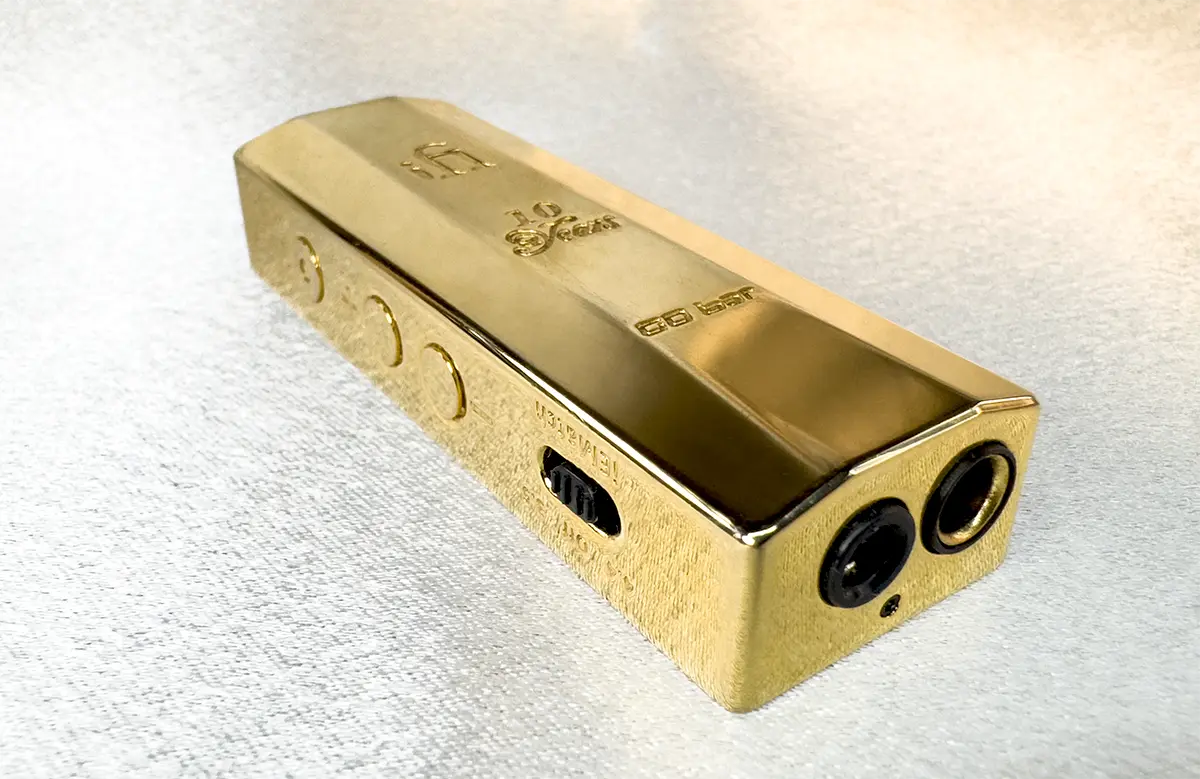
Last year iFi released a new dongle called the Go Bar, and to celebrate their 10th anniversary announced a 1000-unit limited edition many of us have since dubbed the ‘Gold Bar’ for obvious reasons.
The regular Go Bar has a significant USD $329 pricetag, but this limited edition version increases that to USD $499, making it the most expensive USB-C dongle on the market I believe.
So what are the differences? The gold version features a gold plated solid-copper chassis that doubles the weight, but provides superior shielding that could result in better sound, and also boasts extra power supply filtering capacitors.
Does the Gold Bar’s performance match its’ extravagant appearance? Read on to find out.
Packaging
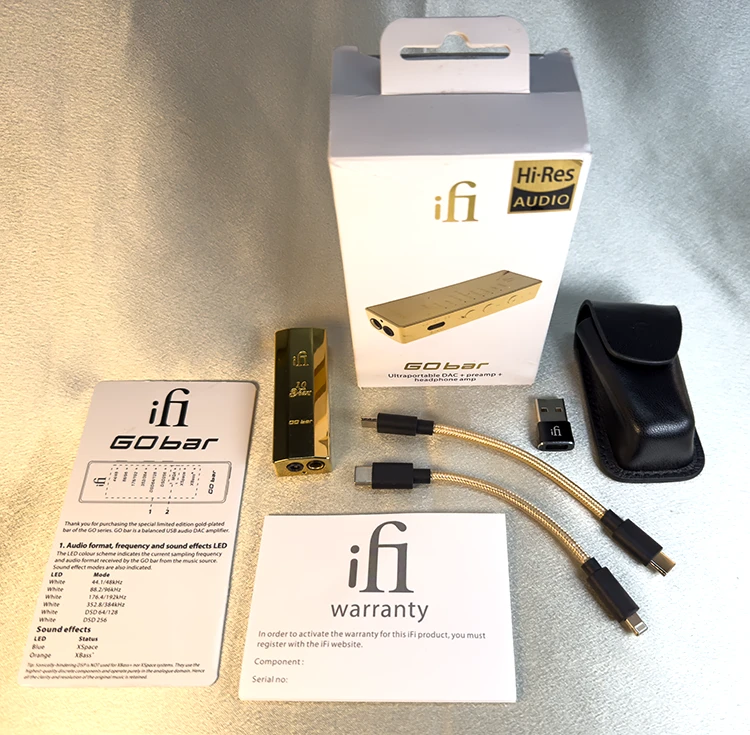
The USD $499 iFi Go Bar 10th Anniversary comes in a small cardboard box, and inside is a warranty card & instruction manual, USB-C to USB-C cable, USB-C to Lightning cable, USB-A to USB-C adapter, and finally a small leather travel pouch.
Sadly the leather pouch lacks cutouts for the output jacks & USB-C connector, so you can’t keep the 10th Anniversary inside it while it’s connected – making it a lot less useful, particularly since the 10th Anniversary’s mirror finish shows scratches easily.
Features & Ergonomics
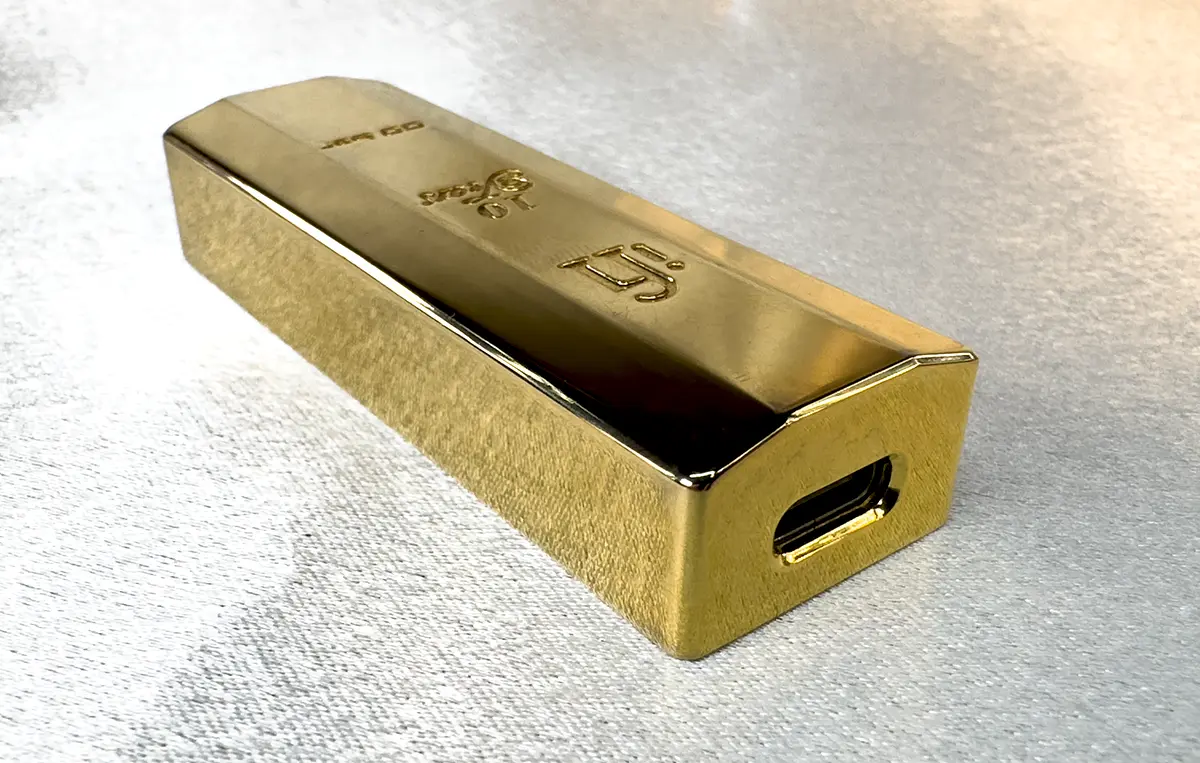
The Go Bar 10th Anniversary uses an unnamed Cirrus Logic DAC to deliver a hefty 475mW of output power to its’ 4.4mm balanced jack. PCM files up to 384 kHz & DSD up to DSD256 are supported, but where the Go Bar really shines is in features: For starters there’s a built-in IEMatch switch which effectively lets you change the dongle’s sensitivity level to potentially pair better with some IEMs.
Then there’s 4 different digital filters & two analogue filters: XBass which is a bass boost, and XSpace which expands the soundstage. Finally there’s a Turbo mode that adds 6db of extra gain for harder to drive IEMs or headphones. The sample rate is also shown via series of LEDs.
Ergonomically, one glance at the 10th Anniversary tells you this is very different to every other dongle. The gorgeous gold finish is exclusive to the limited-edition model (the ordinary Go Bar is plain black) and it looks & feels incredible.
The downside is the weight – because the chassis is pure copper that’s gold plated, at a staggering 63.9 grams it’s twice as heavy as most dongles, though this heft creates a feeling of luxury in the hand.
Sound Performance
I tested the Go Bar with a USB-C iPhone 15 Pro & M1 Macbook Air, using Noble Audio Spartacus IEMs.The first thing you’ll notice is how high the 10th Anniversary’s noise floor is – loud enough you can hear the background hiss during quiet passages in music. Engaging the built-in IEMatch switch can alleviate this to some extent, but if you’d find it distracting I’d recommend a different dongle.
The good news is the 10th Anniversary’s presentation is somewhat unique among dongles. The tonality is very warm, with very elevated levels of bass and sub bass in particular. This is a very analogue sound, and treble is also somewhat muted to almost provide an R2R feeling of softer transients that are less likely to fatigue you during long listening sessions.
I would almost liken the 10th Anniversary tonality to one leaning towards vintage speaker systems, and genres like rock music tend to be especially well-suited to this kind of sound. Bass texture in particular is very impressive, though being slower and somewhat looser than other dongles this more organic sound comes at the expense of detail retrieval to a small degree.
However dynamics are impressive, and the soundstage is impressively wide though not quite excelling in depth to the same degree. If you’ve ever heard Sony’s WM1Z digital audio player you may notice similarities here, and I can’t help but wonder if the 10th Anniversary’s pure copper chassis may be partly responsible as the WM1Z is clad in copper too.
Dongle Comparisons

Luxury & Precision W4 (USD $449)
In many ways the W4 is the antithesis to the 10th Anniversary – prioritising technical performance over tonality. Tonally it delivers a very “hi-fi” flavour that feels more neutral, and even slightly clinical at times. Whereas the 10th Anniversary is considerably warmer and more bass-driven.
The W4 has a much quieter background, with higher resolution, better separation & cleaner imaging, and a wider & deeper soundstage.
Cayin RU7 (USD $289)
The RU7 is a lot closer to the 10th Anniversary tonally, in fact it’s even smoother with a significantly thicker, fuller midrange whereas the 10th Anniversary can feel more raw by comparison – though that suits certain genres better.
The RU7’s midrange resolution is particularly impressive, treble isn’t as dark though it isn’t quite as bright as the W4 either, and note weight is even more impressive on the RU7. These two dongles actually share a lot in common, feeling a lot closer to one another than the W4 does to the 10th Anniversary.
Penon Tail (USD $74)
The Tail has a lower noise floor than the 10th Anniversary, and also emphasises the upper midrange & treble more to help it sound more neutral.
However the 10th Anniversary has that warm analogue tonality some will prefer, along with greater bass quantity and a more prevalent sense of fullness, though the Tail’s soundstage may be a little wider but also slightly shallower. The 10th Anniversary is far more coloured, but also more musical and engaging.
Conclusion

The iFi Go Bar 10th Anniversary is somewhat unique among dongles, and I’m always more inclined to review products favourably that demonstrate uniqueness.
It looks & feels different to everything else out there, though its’ substantial weight does render it less practical for portable use. However it feels like a premium device bristling with features, and also happens to sound quite distinctive.
Sonically the Gold Bar is reminiscent of Sony’s famous WM1Z, with a warm bottom-end focused sound that’s pleasingly analogue in its’ timbre. Background noise is higher than that of its’ rivals, though that can be mitigated with the built-in IEMatch switch which effectively lowers the noise floor.
Cost & limited availability count against the 10th Anniversary, with its’ price creeping towards that of a decent DAP that’s likely to sound better. However if it’s definitely a dongle you need, the Gold Bar is absolutely worth demoing if you get the chance.
Bosk
1000+ Head-Fier
Pros: Superb tonality
Capable feature list
4.4mm Line Out
Capable feature list
4.4mm Line Out
Cons: Expensive by dongle standards
Cayin RU7 Review

Last year Cayin announced their new N7 player, the first on the market to utilise a 1bit DSD DAC. Rather than employ an off-the-shelf DAC chip from AKM, Cirrus Logic or ESS, the N7 uses 128 precision resistors to convert PCM data into DSD format, in a manner reminiscent of, yet distinct from R2R players.
I’ve yet to try the N7 but have read positive reports of its’ tonality in particular, so when Cayin announced their new RU7 dongle would also feature the same 1bit approach I was intrigued.
The problem with dongles is there’s so little available space to innovate that most of them use lower-end DAC chips and end up sounding fairly similar. Whereas the RU7 takes a different approach, and even uses two PCB’s sandwiched together to facilitate a more complex circuit.
My expectations for RU7 were fairly high, and as you’ll discover they’ve not been let down!
Packaging
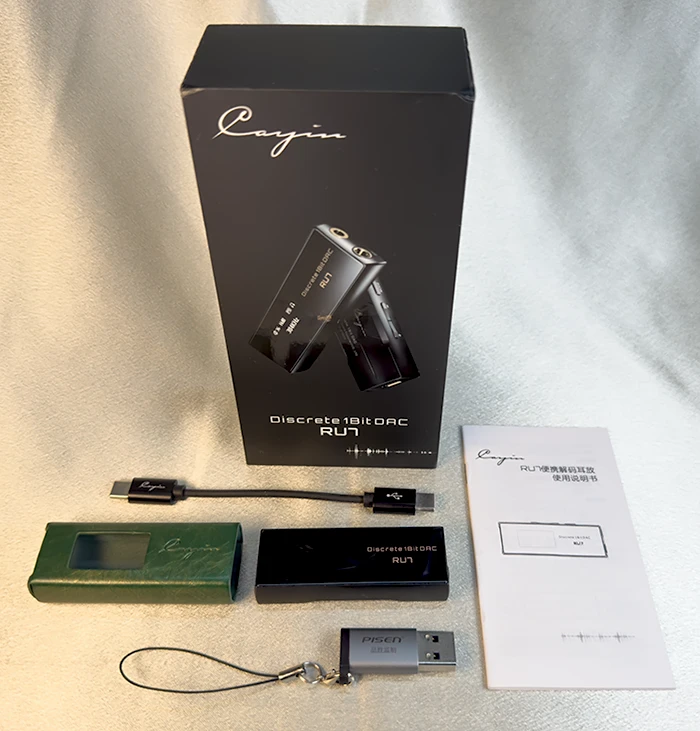
The USD $289 Cayin RU7 arrives in a small cardboard box which contains a manual, USB-C to USB-C cable, and a USB-A to USB-C adapter.
Cayin have also included a leather case which does a great job of protecting the RU7 during use. The leather is surprisingly supple though green wouldn’t be my preferred colour of choice, but it’s nice having a case right out of the box.
Features & Ergonomics
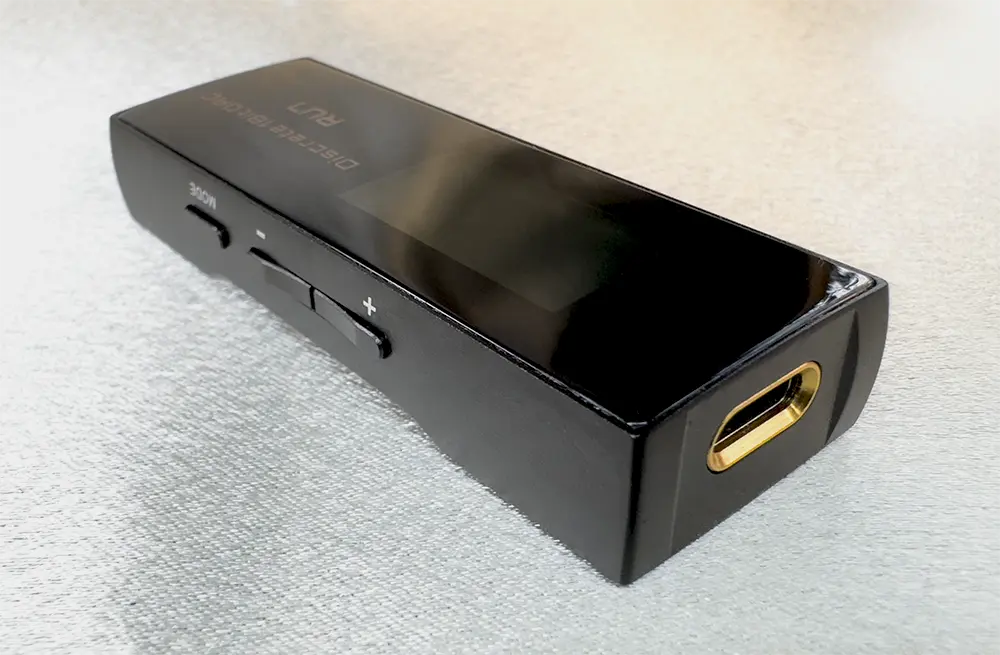
The RU7 is the first dongle on the market to utilise a 1bit DAC, which essentially uses precision-matched resistors rather than a DAC chip to process sound. It features two gain levels, a small screen that displays the current volume level & sample rate, and lets you to automatically convert PCM content into your choice of DSD64, 128 or 256. It supports PCM to 384 kHz and DSD up to DSD256, with 400mW of output power to its’ 4.4mm jack.
At 24.1 grams the RU7 is extremely light but feels very well-finished, with two physical buttons to control volume and another to activate & scroll through the menu system.
It’s worth mentioning the RU7 is the only dongle in this shootout to include a fully-fledged Line Out which functions from both the 4.4mm & 3.5mm jacks, bypassing the internal amplifier for when you choose to pair it with an external amp.
Sound Performance
I tested the RU7 with a USB-C iPhone 15 Pro & M1 Macbook Air, using Noble Audio Spartacus IEMs.The RU7 sports a terrific balance of tonality & technicality, and there’s something particularly special about the flavour of its’ 1bit DAC which no other dongle I’ve tried has captured.
This is best demonstrated in the midrange, where vocals on the RU7 are very forward – really grabbing your attention with rich sense of warm fullness and effortless resolution that’s at least on par with any other dongle out there.
Bass is biased more towards midbass and is impressive by dongle standards, though kept in check to avoid overshadowing the midrange. Treble is similarly impressive but again not so forward as to take any spotlight away from the midrange.
The RU7’s soundstage is wide and deep, dynamics are superb and imaging is very solid but this is not a dongle in which more treble-energy has been added purely to increase technical performance – instead my attention drifts back to the midrange thanks its’ superb tonality & resolution.
Dongle Comparisons

iFi Go Bar 10th Anniversary (USD $499)
After you notice the 10th Anniversary’s much higher noise floor, what jumps out is its’ bottom-up presentation with greater bass thump & more midbass quantity. Surprisingly the RU7’s bass feels a little more dynamic however, and despite its’ warmer tonality the RU7 retrieves more detail.
The RU7 midrange is undoubtedly richer and more resolving, leaving the 10th Anniversary sounding flatter & less dynamic by comparison.
Luxury & Precision W4 (USD $449)
The W4’s tonality is cooler and more neutral but this can come across as less organic & more “hi-fi” at times. The advantage of that approach is W4’s higher level of technical performance across the board, with a slightly deeper & taller soundstage, more precise imaging and more prominent treble that resolves details slightly better.
By contrast the RU7’s midrange is richer and more impressive, and it may be more dynamic overall. W4’s bass is tighter & better textured, though the RU7 has a little more bass quantity to compensate.
I find these two dongles complement one another, with the W4 pulling ahead on technical performance but the RU7 delivering a more special tonality especially in the midrange.
Penon Tail (USD $74)
The Tail has been tuned with a more bottom-up approach with greater bass quantity, and tends to sound more musical & groovy though this could be partly due to greater note-smearing.
Where the RU7 pulls ahead is with its’ larger & more spacious soundtage, improved dynamics, treble that feels a bit more sophisticated in its’ articulation, and midrange richness & resolution.
Conclusion

The easiest way to explain my feelings toward the Cayin RU7 is to reveal that I purchased one.
Does that mean it’s the best-sounding USB-C dongle to date? I think it sits alongside the L&P W4 which occupies a slightly higher rung of technical performance, but what the W4 lacks is the RU7’s amazing midrange tonality which is really something special.
Nor is the RU7 so far behind the W4 in terms of soundstage, resolution & imaging that these areas feel deficient, and the RU7’s 4.4mm Line Out is invaluable if you ever want to use an external amp.
As always in audio things are rarely clear-cut so I strongly recommend demoing both dongles to see which fits your preferences, but suspect you won’t be disappointed with either if they fit your budget.
In the meantime the RU7 has convinced me 1bit DAC technology has merit, so I can’t wait to try Cayin’s next 1bit DAP or dongle release.
Bosk
1000+ Head-Fier
Pros: Superb sound
Volume wheel
Fantastic build quality
Volume wheel
Fantastic build quality
Cons: Expensive
No Line Out
No Line Out
Luxury & Precision W4 Review

Luxury & Precision is a rather esoteric audio brand famous for R2R digital audio players with sublimely natural sound signatures & stratospheric price tags.
The W4 is the successor to L&P’s W2 dongle, and its’ USD $449 price attracts almost as much attention as the W4’s unique appearance that’s reminiscent of the Astell & Kern SR35 I recently reviewed.
This Luxury & Precision W4 was generously loaned to me for this review by Head-Fi poster grumpy123, and I’m extremely keen to see if it can live up to its’ steep asking price.
Packaging

The USD $449 Luxury & Precision W4 comes bundled with a user manual, warranty card, USB-C to USB-C cable, USB-C to Lightning cable & USB-A to USB-C adapter.
There’s also a leather case you can purchase separately.
Features & Ergonomics
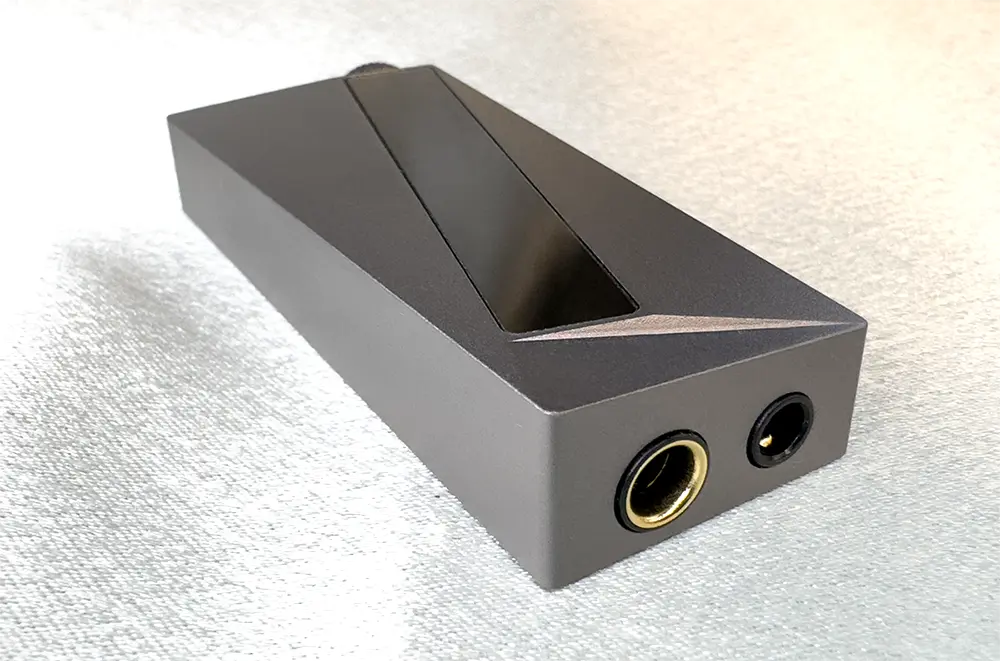
Powered by an LP5108 chip developed by Luxury & Precision themselves, the W4 features a hefty 420mW of output from its’ 4.4mm jack. Boasting two gain modes, 5 digital filters and 9 hardware EQ modes, it also features a SPDIF Line Out that functions from its’ 3.5mm jack only. PCM files up to 384kHz & DSD up to DSD256 are supported.
At 23.4 grams the W4 feels extremely light & made for genuine portable use, yet its’ machined aluminium case is extremely smooth & luxurious to the touch. It’s the only dongle I’ve tried that features a volume wheel, which feels lovely to turn with decisive tactile clicks reminiscent of Astell & Kern players.
The slanted screen shows you the current volume level & sample rate, and is decently readable despite being quite small.
Sound Performance
I tested the W4 with a USB-C iPhone 15 Pro & M1 Macbook Air, using Noble Audio Spartacus IEMs.The W4 paints a fairly neutral picture with an emphasis on maximising technical performance. There’s a slightly warm tonality to avoid the impression of being cold or clinical, but W4 is extremely clear & transparent with a sound that balances musicality with accuracy, leaning slightly towards the former.
Bass is tight and deep, with slightly enhanced quantity without drifting too far from neutrality.
The W4 midrange is satisfyingly rich & full but does not dominate the presentation, nor are vocals thrust forward excessively but instead the listener is positioned several rows back from the stage.
Treble is perhaps the best I’ve heard from any dongle, with articulation & detail approaching that of mid-level DAPs. However quantity is firmly kept in check if you’re treble sensitive, and if anything has been tastefully softened to avoid fatigue.
Most impressive are the W4’s technical capabilities which are the best of any dongle to date. Resolution is genuinely impressive and on par with many DAPs, the soundstage is not only broad but deeper than that of most dongles, and imaging is very precise. Dynamics & note weight are also excellent.
Dongle Comparisons

iFi Go Bar 10th Anniversary (USD $499)
The 10th Anniversary has a significantly higher noise floor which is evident during quiet passages of music, and its’ sound signature is much warmer and more bass driven whereas the W4 sounds cleaner and more neutral.
However the 10th Anniversary is also darker, with a smoother presentation that emphasises technical performance less so the soundstage isn’t as deep nor is resolution as high, but there is a little more body to the performance at the expense of neutrality.
Cayin RU7 (USD $289)
RU7 sports a more midrange-centric tonality that’s a bit smoother & more organic than W4 but does not mute the treble quite as much as the 10th Anniversary does.
RU7 also goes closest to W4’s technical capabilities though its’ soundstage is still slightly less deep with resolution being a touch diminished as well. I do prefer RU7’s more musical tonality to W4’s which sounds more ‘hi-fi’ by comparison, though W4 has slightly more impressive bass texture but can sound a bit more clinical when A/Bed with the RU7.
Penon Tail (USD $74)
The Tail is tuned with greater lower midrange prominence and more forward vocals, and more midbass emphasis to deliver a more fun, groovy sound.
The price difference between these two dongles is reflected in their performance gap however, with the W4 making the Tail feel a touch unrefined, lacking the same precision & cleanliness with treble in particular feels more simplified, resolution being lower and the soundstage lacking the same depth.
Conclusion

Given the Go Bar 10th Anniversary’s limited availability, the Luxury & Precision W4 is the most expensive dongle most enthusiasts will consider purchasing so it’s under pressure to deliver the goods – but it certainly does!
W4 is clearly the most capable dongle we’ve seen at enhancing IEM technical performance. Its’ ability to project a deep, three-dimensional soundstage in particular is reminiscent of high end DAPs, and of all dongles W4 comes closest to bridging the sonic gap between them, though some distance remains.
Of course no product is perfect and the W4’s high price counts against it, as does its’ tonality which is more neutral & “hi-fi” sounding than many other dongles, so I can imagine some users preferring the Cayin RU7’s more analogue timbre instead.
The W4 has raised the dongle bar & thrown down the gauntlet to other manufacturers, and made me even more eager to sample new Luxury & Precision products in future. Where dongles go from here in the coming years will be exciting to witness.
Bosk
1000+ Head-Fier
Pros: Terrific value
Highly musical tuning
Impressive power output
Convenient physical buttons
Highly musical tuning
Impressive power output
Convenient physical buttons
Cons: Lack of refinement compared to vastly more expensive dongles
Penon Tail Review

One of the nice things about this hobby is watching the endless march of technology render quality sound we would’ve paid a fortune for years ago become available for a mere fraction of the cost.
This is especially relevant to dongles, which have really gained popularity among audiophiles over the past several years.
It’s no surprise Penon have jumped onboard by developing their own Tail dongle. At under USD $75 its quite affordable, so when they offered to send me one in exchange for a review I was keen to learn how it stacks up against more expensive options.
What I’ve discovered is the Tail has all the sonic hallmarks of a Penon-tuned product.
Packaging

The USD $74 Penon Tail arrives in a small cardboard box, inside of which is a plastic hard case, a small leather accessories case and two cables, one USB-C to USB-C and the other USB-C to Lightning.
The plastic hard case is especially handy for carrying the dongle, a USB cable and perhaps a few sets of eartips and is something I wish other manufacturers included.
Features & Ergonomics

As you’d expect from its’ lower price the Tail isn’t as impressive from a tech perspective as some of its’ rivals, but is still a fully-fledged dongle with everything you need. Sporting dual CS43131 DACs the Tail delivers 290mW to its’ 4.4mm jack, and supports PCM to 384kHz and DSD up to DSD256.
The Tail has two gains modes that are switchable with a physical button, there’s also two buttons for volume up and down and another for play/pause.
At 17.9 grams the Tail is the lightest dongle I’ve tried, yet its’ aluminium case feels smooth & durable. There isn’t quite the visual panache we see from more expensive dongles, but given the Tail’s modest price that feels acceptable.
Sound Performance
I tested the Tail with a USB-C iPhone 15 Pro & M1 Macbook Air, using Noble Audio Spartacus IEMs.The Tail has a very neutral, clean signature with powerful bass output, that also delivers the kind of forward midrange performance Penon has become known for. Sub bass in particular is quite elevated and bass texture is impressive, but midbass is kept in check to prevent excessive warmth from robbing the presentation of its’ neutrality, though the Tail never sounds cold or clinical.
Typical of Penon’s tuning is the impressive midrange resolution which allows vocals to grab & hold your attention very effectively, though I wouldn’t go so far as to categorise the Tail as mid-centric. Treble is a touch muted, and lacks the polish more expensive dongles provide. As a result tiny details in the upper frequencies can be obscured which might otherwise provide a greater sense of refinement.
On the technical front the soundstage is quite wide but stage depth lags behind that of expensive dongles, imaging isn’t bad but could be a touch more defined, and note weight is average. Dynamics however are very good, and overall resolution is commendable in the midrange but less impressive at either end of the frequency spectrum, without being low enough to be a problem.
Dongle Comparisons

iFi Go Bar 10th Anniversary (USD $499)
Background noise is much higher on the 10th Anniversary, bass is punchier with more midbass output.
The 10th Anniversary is more coloured & less neutral, with more aggressiveness & note weight, slightly more soundstage depth, though resolution feels similar between the two as does imaging & dynamics.
Cayin RU7 (USD $289)
Despite the Tail’s impressive midrange the RU7 goes up another notch in that area with even richer, higher resolution vocals with greater lower midrange emphasis.
The RU7’s deeper soundstage feels more spacious, imaging is slightly clearer, dynamics are even higher despite the TAIL being no slouch in that area, and the RU7’s tonality is more relaxed and organic with slightly better note weight though the Tail may have a bit more groove & musicality.
Luxury & Precision W4 (USD $449)
The W4 really steps things up across the board with greater resolution across all frequencies, with higher quality treble being a particular standout.
In fact it’s the difference in technical performance rather than tonality that separates these two dongles as they’re both fairly neutral, with the W4 displaying clearer separation & imaging in a better organised stage, improved dynamics, more defined attack on individual notes and a deeper soundstage.
Conclusion

The Penon Tail is light on features but heavy on value. If you’re looking for a toe-tapping source with a great midrange to pair with your phone or laptop I’m not sure you can do much better for $75.
Penon’s tuning philosophy is one with broad-based appeal, ironically especially here in the West despite Penon being an Eastern brand. Western audiophiles tend to love deep bass with warmer lower mids & treble kept in check, which is often the flavour of Penon products.
The Tail remains neutral enough it should pair quite well with most IEMs you throw at it, but there’s enough of that Penon flavour that it’s easy to recommend.
You can spend 3 or 4 times as much on a different dongle and get a bit more refinement & slightly stronger technicalities, but unless you’ve already spent over $1000 on your earphones you’ll generally get more value saving on your source to spend more on better IEMs.
It’s nice to see Penon branching out into different areas because when it comes to tuning audio products they know their stuff… hopefully there’s a Penon portable amp or DAP on the horizon!
Bosk
1000+ Head-Fier
Pros: Reliably boosts IEM bass performance
Offers a host of other performance benefits
Feels like a high quality, premium cable in use
Offers a host of other performance benefits
Feels like a high quality, premium cable in use
Cons: Heavy 8 wire cables may not be ideal if you prioritise ergonomics over performance
Penon ASOS is an unashamedly chunky 8 wire, 24AWG OCC copper litz & SPC cable with a slightly higher price of USD $169.
Make no mistake, ASOS is a substantial cable that's thoroughly deserving of behemoth status. If the cable reminds you of Effect Audio's Cadmus 8 wire cable you're not alone, because hardware aside the appearance & weight of both are nearly identical.
I was surprised when Penon sent me the ASOS in exchange for a review because they've focused on smaller 2 or 4 wire cables lately, so it's nice seeing them release a proper 8 wire monster for a change!

ASOS arrives in a smallish cardboard box, inside is a fabric carry case that's decently sized but still pocketable, along with a shirt clip.
When purchasing the ASOS you can elect to have it terminated in a 4.4mm, 3.5mm or 2.5mm plug, or alternatively purchase the modular plug system where you'll get one of each to swap them around.
I'm usually more of a fixed plug guy since all my devices feature 4.4mm sockets and it's been a long time since I've used anything else, but the 3.5mm option is handy if you'd rather not use adapters.

At 54 grams ASOS is the heaviest cable in this roundup, but also the most flexible & supple, in part thanks to its' very soft PVC insulation.
If you're someone bothered by cable weight then a 4 wire option may suit you better, but I'm far more irritated by stiffness so I find the ASOS perfectly usable. That said the weight is significant and means the cable won't quite "disappear" in use as much as others will.
The finish of ASOS' hardware is a step-up in quality from other cables in this roundup, helping to lend it a premium feel. I would suggest purchasing the fixed-plug version if you prioritise performance & reliability, but the modular plug on mine hasn't given me any issues so far.

If you want more bass, especially midbass, ASOS should be on your shopping list. There's good reasons why chunky 8 wire cables like this exist - one is to boost the bottom end beyond smaller 4 wire offerings.
However ASOS isn't a one trick pony, also emphasising the lower midrange which can enhance the vocal resolution, doing it without adding the warmth a pure copper cable to keeps things more neutral.
The soundstage is usually expanded in a manner you'd expect from a large 8 wire cable, with most IEMs I usually notice an uptick in dynamics as well, and slightly more defined imaging in some cases.
Bear in mind ASOS does a great job of beefing up the lower frequencies without deviating too far from neutral, but won't boost treble quite as much as many pure silver cables out there.

Simgot EA1000 - 1xDD 1xPR (USD $219)
ASOS deepens bass with more midbass in particular being added, and I also notice a greater emphasis on the lower midrange as well with improved dynamics.
The soundstage is deeper & tonality shifts to one that's more bass focused. However treble is a little darker than using a silver cable, but ASOS does create a more powerful, earthier sound.
ISN EST50 – 2xBA, 1xDD, 2xEST (USD $449)
Bass is boosted with additional midbass, and again the lower midrange is given greater prominence which helps correct the EST50s' v-shaped tonality a little.
I also notice better dynamics and also a blacker background, but the soundstage dimensions don't seem to change very much.
Penon Turbo - 6xBA (USD $549)
In this satisfying pairing I notice more midbass impact with an uptick in note weight. The soundstage feels deeper but no wider, yet gives the impression of being more spacious & three dimensional.
Imaging is slightly improved, tonality isn't much different which is good if you enjoy the stock cable's tonality, though I miss the extra treble sparkle of the CS819 as the Turbos are tuned rather dark.
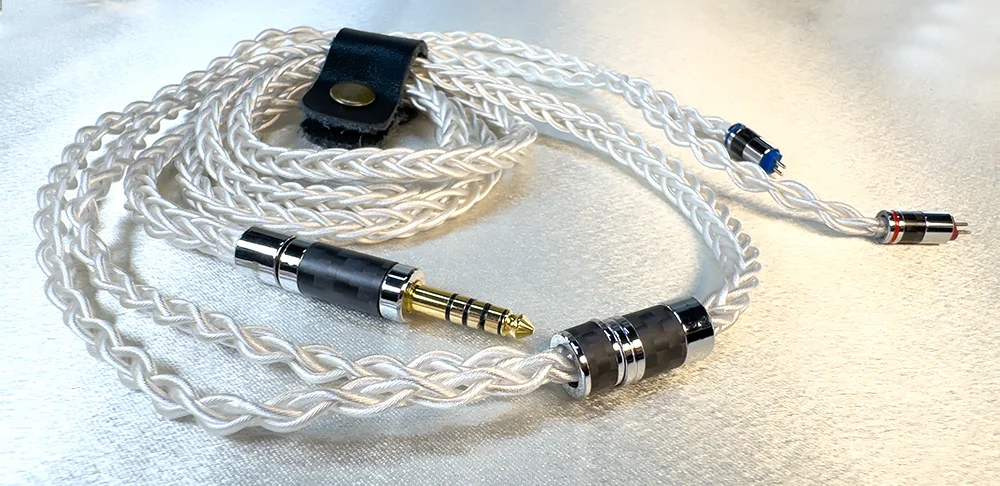
Cable manufacturers have experimented with all sorts of tricks like shielding, fancy geometries & alloys to elevate performance over the years, but the most surefire path to greatness seems to be building thick, heavy cables with huge numbers of wires in them.
More wires means more conductivity, which usually translates to better performance.
In the case of the Penon ASOS that means more bass, a deeper soundstage & better dynamics - you may also hear a number of other improvements depending on the IEM you pair it with.
Considering EA charge USD $299 for their Cadmus 8 Wire, at just over half the price the ASOS feels like a worthy rival that delivers a slightly less treble-intense, more bottom end focused sound without being excessively warm like a lot of copper 8 wire cables are.
Make no mistake, ASOS is a substantial cable that's thoroughly deserving of behemoth status. If the cable reminds you of Effect Audio's Cadmus 8 wire cable you're not alone, because hardware aside the appearance & weight of both are nearly identical.
I was surprised when Penon sent me the ASOS in exchange for a review because they've focused on smaller 2 or 4 wire cables lately, so it's nice seeing them release a proper 8 wire monster for a change!
Packaging

ASOS arrives in a smallish cardboard box, inside is a fabric carry case that's decently sized but still pocketable, along with a shirt clip.
When purchasing the ASOS you can elect to have it terminated in a 4.4mm, 3.5mm or 2.5mm plug, or alternatively purchase the modular plug system where you'll get one of each to swap them around.
I'm usually more of a fixed plug guy since all my devices feature 4.4mm sockets and it's been a long time since I've used anything else, but the 3.5mm option is handy if you'd rather not use adapters.
Ergonomics

At 54 grams ASOS is the heaviest cable in this roundup, but also the most flexible & supple, in part thanks to its' very soft PVC insulation.
If you're someone bothered by cable weight then a 4 wire option may suit you better, but I'm far more irritated by stiffness so I find the ASOS perfectly usable. That said the weight is significant and means the cable won't quite "disappear" in use as much as others will.
The finish of ASOS' hardware is a step-up in quality from other cables in this roundup, helping to lend it a premium feel. I would suggest purchasing the fixed-plug version if you prioritise performance & reliability, but the modular plug on mine hasn't given me any issues so far.
Sound Performance

If you want more bass, especially midbass, ASOS should be on your shopping list. There's good reasons why chunky 8 wire cables like this exist - one is to boost the bottom end beyond smaller 4 wire offerings.
However ASOS isn't a one trick pony, also emphasising the lower midrange which can enhance the vocal resolution, doing it without adding the warmth a pure copper cable to keeps things more neutral.
The soundstage is usually expanded in a manner you'd expect from a large 8 wire cable, with most IEMs I usually notice an uptick in dynamics as well, and slightly more defined imaging in some cases.
Bear in mind ASOS does a great job of beefing up the lower frequencies without deviating too far from neutral, but won't boost treble quite as much as many pure silver cables out there.
IEM Impressions

Simgot EA1000 - 1xDD 1xPR (USD $219)
ASOS deepens bass with more midbass in particular being added, and I also notice a greater emphasis on the lower midrange as well with improved dynamics.
The soundstage is deeper & tonality shifts to one that's more bass focused. However treble is a little darker than using a silver cable, but ASOS does create a more powerful, earthier sound.
ISN EST50 – 2xBA, 1xDD, 2xEST (USD $449)
Bass is boosted with additional midbass, and again the lower midrange is given greater prominence which helps correct the EST50s' v-shaped tonality a little.
I also notice better dynamics and also a blacker background, but the soundstage dimensions don't seem to change very much.
Penon Turbo - 6xBA (USD $549)
In this satisfying pairing I notice more midbass impact with an uptick in note weight. The soundstage feels deeper but no wider, yet gives the impression of being more spacious & three dimensional.
Imaging is slightly improved, tonality isn't much different which is good if you enjoy the stock cable's tonality, though I miss the extra treble sparkle of the CS819 as the Turbos are tuned rather dark.
Conclusion

Cable manufacturers have experimented with all sorts of tricks like shielding, fancy geometries & alloys to elevate performance over the years, but the most surefire path to greatness seems to be building thick, heavy cables with huge numbers of wires in them.
More wires means more conductivity, which usually translates to better performance.
In the case of the Penon ASOS that means more bass, a deeper soundstage & better dynamics - you may also hear a number of other improvements depending on the IEM you pair it with.
Considering EA charge USD $299 for their Cadmus 8 Wire, at just over half the price the ASOS feels like a worthy rival that delivers a slightly less treble-intense, more bottom end focused sound without being excessively warm like a lot of copper 8 wire cables are.
Bosk
1000+ Head-Fier
Pros: Terrific value, impressive audio performance, feels like a premium cable in use.
Cons: Some may prefer more pliable 4 wire cables
The Simgot LC7 is a fairly beefy 18AWG two wire combination of OFC & SPC wire conductors, with a modest price of USD $69.
The cable boasts a total of 732 individual cores, so there's quite a lot of metal here which should in theory conduct electrons very effectively. I've always found thicker & heavier cables deliver better IEM performance, though there's often an ergonomic price to be paid.
Simgot sent me the LC7 in exchange for a review and it's the first of their cables I've tried, so I've no idea what to expect... at first glance it certainly looks attractive if nothing else!
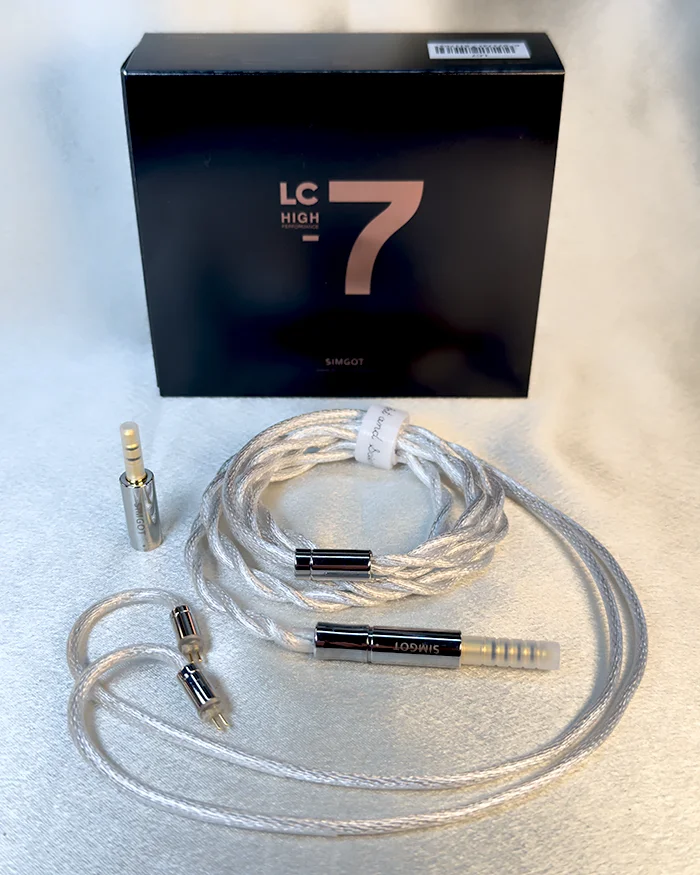
Arriving in a fairly minimalist cardboard box, the LC7 is actually a modular cable that's supplied with both 4.4mm & 3.5mm plugs, and a small plastic cable tie.
It's a fairly spartan package but I have no issues with it given the LC7 is only USD $69.
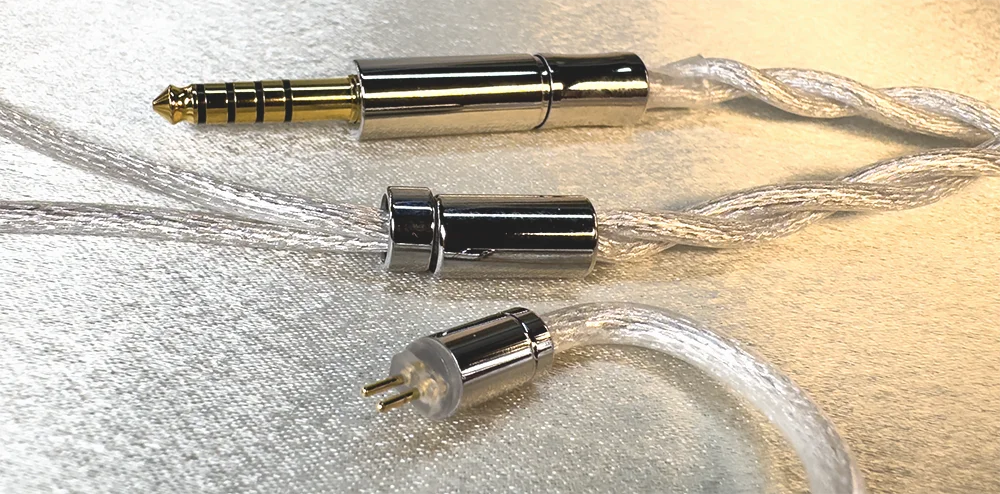
Weighing in at a middleweight 44 grams, the LC7 hits the sweetspot of being substantial enough to (hopefully) deliver great performance, whilst remaining acceptably light & flexible.
The soft PVC insulation helps improve comfort, and the cable drapes nicely without stiffness being an issue. There's no moulded earhooks which I find is the most comfortable approach, so I rate comfort as very good overall. It also helps that the Y-split is extremely light.
In terms of hardware the plug, splitter & 2pin connectors are fairly utilitarian, but there's a pleasingly minimalist appearance here without them coming across as cheap.
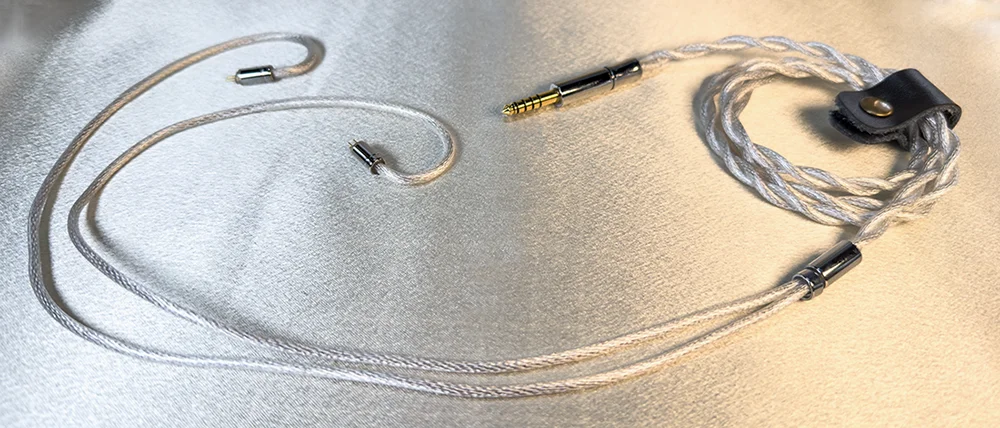
Despite being the lowest-cost cable in this roundup, you wouldn't know it based on performance.
Bass is one area I find the LC7 may not improve an IEM's performance quite as much as the other cables, whereas the midrange is where the LC7 really shines - bringing greater focus & emphasis to vocals on all IEMs I test it with, even enhancing detail throughout the mid frequencies in the process. Conversely treble isn't accentuated terribly much, so you can safely pair it with brighter IEMs.
I've also found the LC7 is very good at growing the soundstage to give your earphones a larger, more spacious presentation.
Mostly I find this is the perfect cable to 'correct' V-shaped IEMs by bringing vocals forward, as one of my pet-hates is budget V-shaped earphones with weak midranges that position voices annoyingly far away - to some extent the LC7 can solve that common issue.

Simgot EA1000 - 1xDD 1xPR (USD $219)
I'm not sure if Simgot tuned the LC7 for the EA1000, but it feels like they did. If you own an EA1000 I strongly recommend picking one up because it's obvious the synergy between them is terrific.
In this impressive pairing the vocals are shifted forward, and the midrange gains greater resolution to reach very impressive levels. Note weight and overall sense of heft is improved, which may be influenced by a greater emphasis on the lower midrange. Imaging is also that little bit more defined, and the LC7 + EA1000 combo is one I can listen to for hours without fatigue with great satisfaction.
ISN EST50 – 2xBA, 1xDD, 2xEST (USD $449)
This was another impressive pairing with the EST50s' stage growing wider & becoming more spherical, as opposed to flatter on the stock S8 cable. However there's a slight sense of diffuseness as well.
Vocals are also brought forward which helps correct the EST50's V-shaped tuning and midrange resolution is increased in the process.
Penon Turbo - 6xBA (USD $549)
I'm not quite as keen on this pairup. The Turbos' stage deepens but doesn't widen, and though I detect a little more midbass there isn't the sense of sub bass improvement I was hoping for.
Again the midrange is given greater emphasis and note weight increases, and I feel like the tuning is a bit more musical now with a little more groove, though the stock cable has slightly brighter treble performance which I prefer given the Turbos are relatively dark to begin with.

At just USD $69 the Simgot LC7 is a no-brainer if your IEMs require more midrange body & emphasis.
Comfort is perfectly decent and it doesn't look or feel cheap, yet performance improvements are well within the realm of being easy to hear compared to a lot of cables out there.
This isn't your typical copper cable that's going to strengthen the midrange with the caveat of adding a ton of extra warmth that may be too much to handle - the LC7 strikes a nice balance between maintaining neutrality & adding an increased sense sense of gravitas.
The cable boasts a total of 732 individual cores, so there's quite a lot of metal here which should in theory conduct electrons very effectively. I've always found thicker & heavier cables deliver better IEM performance, though there's often an ergonomic price to be paid.
Simgot sent me the LC7 in exchange for a review and it's the first of their cables I've tried, so I've no idea what to expect... at first glance it certainly looks attractive if nothing else!
Packaging

Arriving in a fairly minimalist cardboard box, the LC7 is actually a modular cable that's supplied with both 4.4mm & 3.5mm plugs, and a small plastic cable tie.
It's a fairly spartan package but I have no issues with it given the LC7 is only USD $69.
Ergonomics

Weighing in at a middleweight 44 grams, the LC7 hits the sweetspot of being substantial enough to (hopefully) deliver great performance, whilst remaining acceptably light & flexible.
The soft PVC insulation helps improve comfort, and the cable drapes nicely without stiffness being an issue. There's no moulded earhooks which I find is the most comfortable approach, so I rate comfort as very good overall. It also helps that the Y-split is extremely light.
In terms of hardware the plug, splitter & 2pin connectors are fairly utilitarian, but there's a pleasingly minimalist appearance here without them coming across as cheap.
Sound Performance

Despite being the lowest-cost cable in this roundup, you wouldn't know it based on performance.
Bass is one area I find the LC7 may not improve an IEM's performance quite as much as the other cables, whereas the midrange is where the LC7 really shines - bringing greater focus & emphasis to vocals on all IEMs I test it with, even enhancing detail throughout the mid frequencies in the process. Conversely treble isn't accentuated terribly much, so you can safely pair it with brighter IEMs.
I've also found the LC7 is very good at growing the soundstage to give your earphones a larger, more spacious presentation.
Mostly I find this is the perfect cable to 'correct' V-shaped IEMs by bringing vocals forward, as one of my pet-hates is budget V-shaped earphones with weak midranges that position voices annoyingly far away - to some extent the LC7 can solve that common issue.
IEM Impressions

Simgot EA1000 - 1xDD 1xPR (USD $219)
I'm not sure if Simgot tuned the LC7 for the EA1000, but it feels like they did. If you own an EA1000 I strongly recommend picking one up because it's obvious the synergy between them is terrific.
In this impressive pairing the vocals are shifted forward, and the midrange gains greater resolution to reach very impressive levels. Note weight and overall sense of heft is improved, which may be influenced by a greater emphasis on the lower midrange. Imaging is also that little bit more defined, and the LC7 + EA1000 combo is one I can listen to for hours without fatigue with great satisfaction.
ISN EST50 – 2xBA, 1xDD, 2xEST (USD $449)
This was another impressive pairing with the EST50s' stage growing wider & becoming more spherical, as opposed to flatter on the stock S8 cable. However there's a slight sense of diffuseness as well.
Vocals are also brought forward which helps correct the EST50's V-shaped tuning and midrange resolution is increased in the process.
Penon Turbo - 6xBA (USD $549)
I'm not quite as keen on this pairup. The Turbos' stage deepens but doesn't widen, and though I detect a little more midbass there isn't the sense of sub bass improvement I was hoping for.
Again the midrange is given greater emphasis and note weight increases, and I feel like the tuning is a bit more musical now with a little more groove, though the stock cable has slightly brighter treble performance which I prefer given the Turbos are relatively dark to begin with.
Conclusion

At just USD $69 the Simgot LC7 is a no-brainer if your IEMs require more midrange body & emphasis.
Comfort is perfectly decent and it doesn't look or feel cheap, yet performance improvements are well within the realm of being easy to hear compared to a lot of cables out there.
This isn't your typical copper cable that's going to strengthen the midrange with the caveat of adding a ton of extra warmth that may be too much to handle - the LC7 strikes a nice balance between maintaining neutrality & adding an increased sense sense of gravitas.
Bosk
1000+ Head-Fier
Pros: Exceptional build quality
Cons: Harman tuning
Does a recipe for making great art exist? If it does, wouldn't following it produce art that lacks originality and is no longer great?
As someone who enjoys earphones purely as a consumer I have no idea what goes into making them.
Is tuning IEMs a process of art or science, and is the final result all that matters?
Such thoughts occurred when SIMGOT reached out to me, offering to send a pair of their EM6L IEMs in exchange for a review. I assented, knowing nothing about the product and little of the brand. Whilst awaiting their arrival a friend casually mentioned a dreadful truth... the EM6L's are Harman Tuned.
If you choose to stop reading this review now you have my full understanding and forgiveness.
The Harman Curve was created by Dr Sean Olive at Harman International, and is essentially recipe for tuning IEMs & headphones in a way researchers think will please the average listener. However this article articulates many common objections to the Harman Curve, and though consumers can find the recipe pleasing experienced audiophiles often regard it with disdain.
One way or another, this is set to be an interesting review. Buckle up!

The USD $109 SIMGOT EM6Ls arrive in a small cardboard box, inside of which is an instruction manual, three sets of silicone eartips and a leather case that's intelligently sized - realistically pocketable, yet roomy enough if you upgrade to a chunky 8 wire cable you won't need something larger.
Speaking of cables the stock OFC silver-plated 2pin cable is disappointingly only available in a 3.5mm termination. I suppose that's not unusual for budget IEMs, but in a world of DAPs with 4.4mm balanced connections which tend to sound better than their 3.5mm counterparts one wonders if offering consumers the choice of a 4.4mm cable even at additional cost wouldn't have been appreciated.
I suppose the silver (excuse me, OFC) lining here is that only a relatively small percentage of the purchase price has been allocated to the cable, which is a fairly nondescript affair.

Ergonomically the EM6Ls are a bit of a mixed bag. On the one hand their polished shells are made of resin which you'd never guess from the weight which is quite substantial, and affords the EM6Ls a feeling of quality when handled. I can't say if their durability is higher than that of other IEMs but their heft in the hand certainly lends that impression and I did not expect IEMs of this price to be finished so impressively.
It's not all good news though. The 2pin sockets are raised, jutting out of the shells in a manner that mars their sleek appearance. The nozzles also lack raised lips to prevent eartips from sliding off, though thankfully they're quite thick which mitigates that possibility to some extent. I also note the shells are vented, so pressure build-up should not be an issue.
Though small and smooth, the EM6Ls' shells are not as sculpted to human ear geometry as we see in many IEMs, and this coupled with their weight renders obtaining a strong seal slightly more difficult, impacting comfort slightly. They definitely aren't uncomfortable for me, but I wouldn't claim comfort as one of their strengths either.

I'm using the Hiby R6 Pro II set to 28 volume in Hi-Gain, AB mode to test the EM6Ls and the first thing that hits me is the telltale sense of diffuseness I associate with the Harman Target curve they've been tuned to - but more on that later.
Bass is definitely not an EM6L strong suit given it comes across as fairly mushy with poor texture, though I can tell a DD is being used to produce it simply due to how slow it is. Bass quantity is fairly neutral with a bias towards midbass rather than sub, and I'd prefer a bit more quantity for my taste.
The midrange is where adhering to the Harman Target is heard most, with a palpable lack of warmth that lends vocals a nasal quality I don't particularly enjoy or find convincing. Strongly biased towards the upper rather than lower midrange, this may aid resolution as I can hear the intake of vocalists' breaths more easily, yet there's a real lack of weight & emotion here - the word I'm looking for is sterile.
I don't detect anything objectionable about the EM6L's high frequencies which are the least-offensive area of their presentation. Treble doesn't feel especially high quality but is kept in check enough that most listeners shouldn't find the EM6Ls fatiguing, but I'd prefer more upper-treble sparkle.

I can't review an IEM tuned to the Harman Target without a few more thoughts on the target itself.
In the case of the EM6Ls, the Harman tuning creates a sound that feels diffuse: Imagine the most precise, pinpoint imaging you've ever heard and then reverse it - that's a bit like how the EM6Ls feel, with a sense of vagueness as if there's a veil between yourself and the performance.
This does seem to artificially stretch the soundstage but results in a hollow tonality with very little note weight, that to my ears sounds lifeless and unconvincing. It's almost like crossfeed has been added and there's an odd sense of reverb, and it feels like I'm listening to a recording of a recording which severs my emotional connection with the performers.
Sadly many people think they enjoy this kind of sound - largely non-audiophiles with far less exposure to genuinelygreat sound than myself of course, but a market for Harman-tuned products persists for those who've never heard anything better.

You might assume the tradeoff for the Harman Target's unconvincing tonality might be superior technical performance, and to some extent you're correct.
Certainly the EM6Ls are quite resolving for an IEM with a modest price tag, and their soundstage is commendably wide though sadly it has very little depth. Unfortunately imaging is very diffuse & vague as I hinted at earlier, and dynamics are disappointingly flat.

I compared the EM6Ls with IEMs at hand to get a picture of how they fare against the competition.
Truthear Zero - 2xDD (USD $49)

Physically the Zeros are larger but quite a lot lighter than the EM6Ls, and stick out further. They also don't follow the contours of my ears much at all and I have difficulty obtaining a good seal. Requiring 29 volume on the R6P2 they're similarly easy to drive.
The Zero's feature higher bass quantity than the EM6L with an emphasis towards midbass, but bass is mushier with poorer texture and its also very noticeable how much more sluggish the Zero's bass driver is. With greater lower midrange presence I do find vocals on the Zeros more convincing, though having said that the can be a little shouty as well.
For technical performance the EM6Ls easily come out on top in most areas, with the Zeros demonstrating a much more congested sound with confused imaging, worse dynamics and lower resolution. Their soundstage is similarly wide, but in other respects they do sound like entry-level IEMs.
Kiwi Ears Quartet - 2xBA 2xDD (USD $109)

The Quartets are physically quite a bit larger than the EM6Ls but also lighter, and fit quite snugly in the ear to the extent I'd say the EM6Ls more comfortable but don't isolate quite as well. At 22 volume on the R6P2 the Quartets are bit easier to drive.
With the Quartets' tuning switches kept in their stock positions, they're much more midrange centric with more lower midrange presence in particular, and as a result I prefer their tonality. However in other areas they struggle, with sluggish bass that struggles to keep up with the music and more muted treble.
The Quartets have a similarly wide but flat stage, but in other ways compare poorly with lower resolution and much poorer dynamics in particular. They make the EM6Ls sound quite high-end in A/B testing.
ISN Neo5 - 4xBA 1x DD (USD $289)

Despite being similarly sized the Neo5s are physically much lighter & contoured to the ear more, though I find them more comfortable largely on the grounds of the weight difference. Needing 22 volume on the R6P2 they're slightly easier to drive.
The Neo5s deliver immensely higher quantities of bass with more visceral sub bass impact in particular, though bass very rarely feels bloated and is integrated into the rest of the presentation quite skillfully. Vocals have much more gravitas & presence and are more forward on the Neo5s, and although they're a little darker in the treble than the EM6Ls this doesn't seem to affect their technical performance.
The Neo5s boast a slightly deeper stage, greater midrange resolution, and have a way of portraying instruments that sound larger. Their overall tuning is one I find a lot more engaging, and indeed they're probably my favourite earphone under $500 so it's no surprise the EM6Ls suffer by comparison.
Penon Globe – 2xBA, 1xDD (USD $329)

Despite being slightly larger & sticking out quite a bit more I find the Globes lighter and a little more comfortable than the EM6Ls, and requiring just 21 volume on the R6P2 they're easier to drive.
The Globes boast greater bass quantity, though being biased towards midbass it can feel a tad hollow at times, but the EM6Ls bass' definitely feels mushier & slower by comparison. However the biggest difference between them lies in the midrange where the Globes render vocals that are far more forward, bodied and resolving to the extent they really fixates attention. Whereas the EM6Ls are more politely tuned with smoother & less aggressive vocals.
The Globes may have a slightly narrower stage but it feels a bit deeper, and they're much more dynamic with slightly higher resolution. However it's the Globes vastly superior tonality rather than any differences in technical performance that really sets the two IEMs apart.
ISN EST50 – 2xBA, 1xDD, 2xEST (USD $449)

The EST50s are much larger and also stick out a lot more, but are more sculpted to the ear & slightly lighter, though comfort is similar. Requiring 22 volume on the R6P2 they're a bit easier to drive.
The EST50s boasts deeper bass with more sub bass impact in particular, bass texture is also superior and its' DD bass driver is also faster. The EST50 has a fairly pronounced V-shaped tuning so treble is also more prominent than that of the EM6L, and thanks to its' EST drivers of higher quality as well.
Though the midrange is not the EST50's strength, it features more lower midrange prominence than the EM6L and I prefer the EST50 tonality as a result. Soundstage dimensions are similar between the two, though the EST50 has more pinpoint imaging and slightly higher resolution.
NiceHCK Blacksoul (USD $50)

BlackSoul provides a slight boost to the lower midrange which generates a slightly meatier sound and note weight seems to benefit. However the treble definitely takes a hit with this cable, making the EM6L's sound less airy.
The soundstage does expand slightly and the background may be a little blacker, but overall this is a fairly underwhelming pairing.
Penon Vocal (USD $69)

As always Vocal does what you think it would - shifts more focus to the midrange, and as a result the emphasis shifts from the upper to the lower midrange with more realistic sounding instruments the result. Midrange resolution even increases slightly.
The soundstage is slightly deeper though no wider, there's a minor improvement to bass impact and dynamics also feel a little bit better.
Penon Obsidian (USD $149)

The Obsidian is a modular cable, with both Rhodium and Purple Copper plugs available so you can alter its’ performance to some extent. I find regardless of which plug is used the Obsidian improves dynamics impressively, increases soundstage depth and presents cleaner more pinpoint imaging.
With the Rhodium plug in particular the higher frequencies are more heavily emphasised and the soundstage is wider, whereas swapping to the Gold plug yields slightly more pleasing tonality as the lower midrange is given a greater boost.
Effect Audio Ares S 4 Wire (USD $179)

This is an impressive pairing in which the midrange is more forward, with bass hitting with slightly more authority and the bass emphasis shifting more towards midbass. The lower midrange is also given a boost which "fixes" the Harman tonality to no small extent.
The soundstage now has actual depth, and although resolution doesn't seem to alter much dynamics are noticeably improved.
NiceHCK AceOrpheus (USD $258)
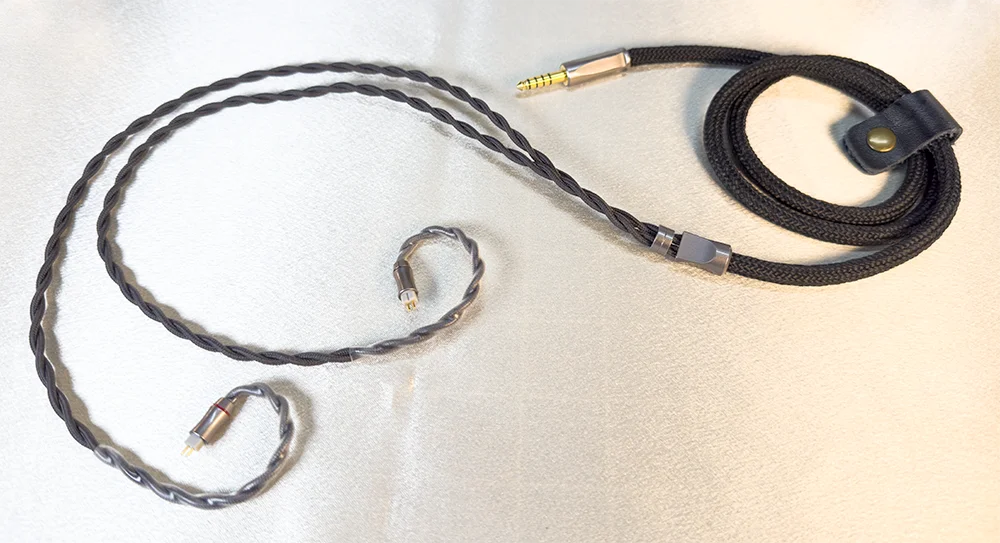
Another impressive pairing, soundstage depth improves markedly as AceOrpheus presents a much grander spherical stage for the performers. Instruments feel positioned further away, whereas the stock cable presents vocalists in particular closer to the listener.
Although bass impact does increase the improvement is minimal, however dynamics & background blackness also improve and midrange resolution feels substantially higher. AceOrpheus does dull the treble and even upper midrange frequencies however, though I find this leads to a more pleasing tonality.

Writing negative reviews isn't fun, particularly when a manufacturer sends a product to evaluate.
The EM6Ls aren't a "bad" pair of IEMs either, I've no doubt Harman Target fans will appreciate them. Build quality in particular is excellent, so if you value clarity over tonality you may like what they offer.
Unfortunately I'm not someone who enjoys Harman-tuned earphones.
To me the Harman sound is just too hollow & lifeless to be enjoyable, and I always come away suspecting the Harman Curve was designed to create an artificially enhanced sense of clarity & spaciousness at the cost of instruments that sound real - a "hack" to give cheaper earphones boosted technical performance without adding more drivers, or improving driver quality.
As an audiophile of nearly three decades experience I'd rather spend more money on IEMs that deliver great technical performance and believable tonality, but not everyone has that luxury. The Harman Curve lets manufacturers bring higher levels of technical performance to the masses without raising prices, but to me the tradeoff isn't worth it - at this price level I'd prioritise tonality instead.
Sadly the Harman Curve has a legion of followers manufacturers must find it tempting to tap into, so this won't be the last Harman IEM we see... but hopefully the industry moves away from Harman in future.
As someone who enjoys earphones purely as a consumer I have no idea what goes into making them.
Is tuning IEMs a process of art or science, and is the final result all that matters?
Such thoughts occurred when SIMGOT reached out to me, offering to send a pair of their EM6L IEMs in exchange for a review. I assented, knowing nothing about the product and little of the brand. Whilst awaiting their arrival a friend casually mentioned a dreadful truth... the EM6L's are Harman Tuned.
If you choose to stop reading this review now you have my full understanding and forgiveness.
The Harman Curve was created by Dr Sean Olive at Harman International, and is essentially recipe for tuning IEMs & headphones in a way researchers think will please the average listener. However this article articulates many common objections to the Harman Curve, and though consumers can find the recipe pleasing experienced audiophiles often regard it with disdain.
One way or another, this is set to be an interesting review. Buckle up!
Packaging

The USD $109 SIMGOT EM6Ls arrive in a small cardboard box, inside of which is an instruction manual, three sets of silicone eartips and a leather case that's intelligently sized - realistically pocketable, yet roomy enough if you upgrade to a chunky 8 wire cable you won't need something larger.
Speaking of cables the stock OFC silver-plated 2pin cable is disappointingly only available in a 3.5mm termination. I suppose that's not unusual for budget IEMs, but in a world of DAPs with 4.4mm balanced connections which tend to sound better than their 3.5mm counterparts one wonders if offering consumers the choice of a 4.4mm cable even at additional cost wouldn't have been appreciated.
I suppose the silver (excuse me, OFC) lining here is that only a relatively small percentage of the purchase price has been allocated to the cable, which is a fairly nondescript affair.
Ergonomics

Ergonomically the EM6Ls are a bit of a mixed bag. On the one hand their polished shells are made of resin which you'd never guess from the weight which is quite substantial, and affords the EM6Ls a feeling of quality when handled. I can't say if their durability is higher than that of other IEMs but their heft in the hand certainly lends that impression and I did not expect IEMs of this price to be finished so impressively.
It's not all good news though. The 2pin sockets are raised, jutting out of the shells in a manner that mars their sleek appearance. The nozzles also lack raised lips to prevent eartips from sliding off, though thankfully they're quite thick which mitigates that possibility to some extent. I also note the shells are vented, so pressure build-up should not be an issue.
Though small and smooth, the EM6Ls' shells are not as sculpted to human ear geometry as we see in many IEMs, and this coupled with their weight renders obtaining a strong seal slightly more difficult, impacting comfort slightly. They definitely aren't uncomfortable for me, but I wouldn't claim comfort as one of their strengths either.
Sound Impressions

I'm using the Hiby R6 Pro II set to 28 volume in Hi-Gain, AB mode to test the EM6Ls and the first thing that hits me is the telltale sense of diffuseness I associate with the Harman Target curve they've been tuned to - but more on that later.
Bass is definitely not an EM6L strong suit given it comes across as fairly mushy with poor texture, though I can tell a DD is being used to produce it simply due to how slow it is. Bass quantity is fairly neutral with a bias towards midbass rather than sub, and I'd prefer a bit more quantity for my taste.
The midrange is where adhering to the Harman Target is heard most, with a palpable lack of warmth that lends vocals a nasal quality I don't particularly enjoy or find convincing. Strongly biased towards the upper rather than lower midrange, this may aid resolution as I can hear the intake of vocalists' breaths more easily, yet there's a real lack of weight & emotion here - the word I'm looking for is sterile.
I don't detect anything objectionable about the EM6L's high frequencies which are the least-offensive area of their presentation. Treble doesn't feel especially high quality but is kept in check enough that most listeners shouldn't find the EM6Ls fatiguing, but I'd prefer more upper-treble sparkle.
Harman Target Thoughts

I can't review an IEM tuned to the Harman Target without a few more thoughts on the target itself.
In the case of the EM6Ls, the Harman tuning creates a sound that feels diffuse: Imagine the most precise, pinpoint imaging you've ever heard and then reverse it - that's a bit like how the EM6Ls feel, with a sense of vagueness as if there's a veil between yourself and the performance.
This does seem to artificially stretch the soundstage but results in a hollow tonality with very little note weight, that to my ears sounds lifeless and unconvincing. It's almost like crossfeed has been added and there's an odd sense of reverb, and it feels like I'm listening to a recording of a recording which severs my emotional connection with the performers.
Sadly many people think they enjoy this kind of sound - largely non-audiophiles with far less exposure to genuinelygreat sound than myself of course, but a market for Harman-tuned products persists for those who've never heard anything better.
Technical Performance

You might assume the tradeoff for the Harman Target's unconvincing tonality might be superior technical performance, and to some extent you're correct.
Certainly the EM6Ls are quite resolving for an IEM with a modest price tag, and their soundstage is commendably wide though sadly it has very little depth. Unfortunately imaging is very diffuse & vague as I hinted at earlier, and dynamics are disappointingly flat.
IEM Comparisons

I compared the EM6Ls with IEMs at hand to get a picture of how they fare against the competition.
Truthear Zero - 2xDD (USD $49)

Physically the Zeros are larger but quite a lot lighter than the EM6Ls, and stick out further. They also don't follow the contours of my ears much at all and I have difficulty obtaining a good seal. Requiring 29 volume on the R6P2 they're similarly easy to drive.
The Zero's feature higher bass quantity than the EM6L with an emphasis towards midbass, but bass is mushier with poorer texture and its also very noticeable how much more sluggish the Zero's bass driver is. With greater lower midrange presence I do find vocals on the Zeros more convincing, though having said that the can be a little shouty as well.
For technical performance the EM6Ls easily come out on top in most areas, with the Zeros demonstrating a much more congested sound with confused imaging, worse dynamics and lower resolution. Their soundstage is similarly wide, but in other respects they do sound like entry-level IEMs.
Kiwi Ears Quartet - 2xBA 2xDD (USD $109)

The Quartets are physically quite a bit larger than the EM6Ls but also lighter, and fit quite snugly in the ear to the extent I'd say the EM6Ls more comfortable but don't isolate quite as well. At 22 volume on the R6P2 the Quartets are bit easier to drive.
With the Quartets' tuning switches kept in their stock positions, they're much more midrange centric with more lower midrange presence in particular, and as a result I prefer their tonality. However in other areas they struggle, with sluggish bass that struggles to keep up with the music and more muted treble.
The Quartets have a similarly wide but flat stage, but in other ways compare poorly with lower resolution and much poorer dynamics in particular. They make the EM6Ls sound quite high-end in A/B testing.
ISN Neo5 - 4xBA 1x DD (USD $289)

Despite being similarly sized the Neo5s are physically much lighter & contoured to the ear more, though I find them more comfortable largely on the grounds of the weight difference. Needing 22 volume on the R6P2 they're slightly easier to drive.
The Neo5s deliver immensely higher quantities of bass with more visceral sub bass impact in particular, though bass very rarely feels bloated and is integrated into the rest of the presentation quite skillfully. Vocals have much more gravitas & presence and are more forward on the Neo5s, and although they're a little darker in the treble than the EM6Ls this doesn't seem to affect their technical performance.
The Neo5s boast a slightly deeper stage, greater midrange resolution, and have a way of portraying instruments that sound larger. Their overall tuning is one I find a lot more engaging, and indeed they're probably my favourite earphone under $500 so it's no surprise the EM6Ls suffer by comparison.
Penon Globe – 2xBA, 1xDD (USD $329)

Despite being slightly larger & sticking out quite a bit more I find the Globes lighter and a little more comfortable than the EM6Ls, and requiring just 21 volume on the R6P2 they're easier to drive.
The Globes boast greater bass quantity, though being biased towards midbass it can feel a tad hollow at times, but the EM6Ls bass' definitely feels mushier & slower by comparison. However the biggest difference between them lies in the midrange where the Globes render vocals that are far more forward, bodied and resolving to the extent they really fixates attention. Whereas the EM6Ls are more politely tuned with smoother & less aggressive vocals.
The Globes may have a slightly narrower stage but it feels a bit deeper, and they're much more dynamic with slightly higher resolution. However it's the Globes vastly superior tonality rather than any differences in technical performance that really sets the two IEMs apart.
ISN EST50 – 2xBA, 1xDD, 2xEST (USD $449)

The EST50s are much larger and also stick out a lot more, but are more sculpted to the ear & slightly lighter, though comfort is similar. Requiring 22 volume on the R6P2 they're a bit easier to drive.
The EST50s boasts deeper bass with more sub bass impact in particular, bass texture is also superior and its' DD bass driver is also faster. The EST50 has a fairly pronounced V-shaped tuning so treble is also more prominent than that of the EM6L, and thanks to its' EST drivers of higher quality as well.
Though the midrange is not the EST50's strength, it features more lower midrange prominence than the EM6L and I prefer the EST50 tonality as a result. Soundstage dimensions are similar between the two, though the EST50 has more pinpoint imaging and slightly higher resolution.
Cable Comparisons
As always I tested the EM6Ls with a number of cables to gauge their scope for potential improvement.NiceHCK Blacksoul (USD $50)

BlackSoul provides a slight boost to the lower midrange which generates a slightly meatier sound and note weight seems to benefit. However the treble definitely takes a hit with this cable, making the EM6L's sound less airy.
The soundstage does expand slightly and the background may be a little blacker, but overall this is a fairly underwhelming pairing.
Penon Vocal (USD $69)

As always Vocal does what you think it would - shifts more focus to the midrange, and as a result the emphasis shifts from the upper to the lower midrange with more realistic sounding instruments the result. Midrange resolution even increases slightly.
The soundstage is slightly deeper though no wider, there's a minor improvement to bass impact and dynamics also feel a little bit better.
Penon Obsidian (USD $149)

The Obsidian is a modular cable, with both Rhodium and Purple Copper plugs available so you can alter its’ performance to some extent. I find regardless of which plug is used the Obsidian improves dynamics impressively, increases soundstage depth and presents cleaner more pinpoint imaging.
With the Rhodium plug in particular the higher frequencies are more heavily emphasised and the soundstage is wider, whereas swapping to the Gold plug yields slightly more pleasing tonality as the lower midrange is given a greater boost.
Effect Audio Ares S 4 Wire (USD $179)

This is an impressive pairing in which the midrange is more forward, with bass hitting with slightly more authority and the bass emphasis shifting more towards midbass. The lower midrange is also given a boost which "fixes" the Harman tonality to no small extent.
The soundstage now has actual depth, and although resolution doesn't seem to alter much dynamics are noticeably improved.
NiceHCK AceOrpheus (USD $258)

Another impressive pairing, soundstage depth improves markedly as AceOrpheus presents a much grander spherical stage for the performers. Instruments feel positioned further away, whereas the stock cable presents vocalists in particular closer to the listener.
Although bass impact does increase the improvement is minimal, however dynamics & background blackness also improve and midrange resolution feels substantially higher. AceOrpheus does dull the treble and even upper midrange frequencies however, though I find this leads to a more pleasing tonality.
Conclusion

Writing negative reviews isn't fun, particularly when a manufacturer sends a product to evaluate.
The EM6Ls aren't a "bad" pair of IEMs either, I've no doubt Harman Target fans will appreciate them. Build quality in particular is excellent, so if you value clarity over tonality you may like what they offer.
Unfortunately I'm not someone who enjoys Harman-tuned earphones.
To me the Harman sound is just too hollow & lifeless to be enjoyable, and I always come away suspecting the Harman Curve was designed to create an artificially enhanced sense of clarity & spaciousness at the cost of instruments that sound real - a "hack" to give cheaper earphones boosted technical performance without adding more drivers, or improving driver quality.
As an audiophile of nearly three decades experience I'd rather spend more money on IEMs that deliver great technical performance and believable tonality, but not everyone has that luxury. The Harman Curve lets manufacturers bring higher levels of technical performance to the masses without raising prices, but to me the tradeoff isn't worth it - at this price level I'd prioritise tonality instead.
Sadly the Harman Curve has a legion of followers manufacturers must find it tempting to tap into, so this won't be the last Harman IEM we see... but hopefully the industry moves away from Harman in future.
o0genesis0o
Good work as usual, but I have two points:
But it’s equally foolish to throw objective target out and start making all kind of wacky sound in the name of art (certain American company comes to mind)
- The article you linked actually nullifies the common arguments against harman target rather than providing arguments against the target.
- I’m curious whether your EM6L is defective. The characteristic of Harman target, and this EM6L in particular, is focus and clarity. The fact that you hear a hollow and diffused sonic image is quite strange. If the IEM hits Harman, it’s (possibly overly) sharp. Otherwise, it might not hit the target at all.
But it’s equally foolish to throw objective target out and start making all kind of wacky sound in the name of art (certain American company comes to mind)
o0genesis0o
Btw, funny that you mentioned Neo5. That one follows Crinacle old target to a T from the midrange up. And Crinacle target is a more subdued version of Harman.
Seriously, what’s with audiophiles and their hate for frequency response of good speakers in a good room
Seriously, what’s with audiophiles and their hate for frequency response of good speakers in a good room

Bosk
1000+ Head-Fier
Pros: Great all-rounders with warm, fairly neutral sound with elevated & responsive DD bass
Cons: They're not Neo5s! 
I've often wondered why sequels invariably suck.
The's lots of ways following up a big success can go wrong:
So when I was offered a set of new Penon DOME IEMs in exchange for a review and saw they have virtually identical shells & nearly the same driver config and price... suddenly my excitement bubbled.
There's wasn't much to complain about with the Neo5s and lots to like, so I was skeptical they'd produce a better follow-up without ballooning the shells, driver count & price. Either way it'd be fascinating just to see the direction they took - stay true to the original, try something new or a slight variation?
It turns out the DOMEs are different to the Neo5s, and you're about to lean why.

The USD $349 Penon DOMEs arrive in the usual small yellow Penon cardboard box, inside of which is a fairly plush & well-made leather carry case that strikes a nice balance between being small enough to pocket but roomy enough to house the IEMs with a large 8 wire cable.
There's also a small leather accessories case, inside of which are three sets of silicone eartips in 3 sizes along with a shirt clip & cleaning tool.
The DOMEs come bundled with a very comfortable 8 wire silver-plated copper cable, in your choice of 4.4mm, 3.5mm or 2.5mm terminations.

The DOME's medical-grade resin shells are almost a carbon copy of the ISN Neo5s I've reviewed. They're tiny, very light & extremely well-sculpted to fit the ear, and are as effortlessly comfortable for prolonged use as any hybrid IEMs on the market I've tried.
They're also vented to alleviate pressure build-up, my only minor complaint is the metal nozzles – eartips don’t grip them as securely as nozzles sculpted from the resin itself, so my Spinfit W1 tips occasionally dislodge from the nozzles if I'm not careful to remove the DOMEs from my ears gently.
The stock cable is very light & flexible, with no microphonics or memory effect.

I've tested the DOMEs using a Hiby R6 Pro II set to Hi-gain in AB mode, with the DOMEs requiring a volume level of 22.
The DOMEs reveal themselves as moderately warm, well balanced all-rounders with tastefully elevated levels of bass - they don't do a lot wrong. They're tuned for musical enjoyment rather than 'accuracy' in a reference sense, but are neutral enough they get out of the way of the music quite well and avoid feeling excessively coloured, yet are warm & bassy enough they won't come across as lean or thin.
The DOMEs avoid earning those "flat" and "boring" monikers often levelled at IEMs like U12Ts or Monarch MKIIs, but don't quite possess their refinement either, and in the tradeoff between accuracy & musicality lean towards the latter.

There's a great balance between sub & midbass output, and which is more prevalent is determined more by each particular track or album. What's really impressive is how responsive DOME's DD bass driver is - having absolutely no issues keeping up with the fastest paced music you can throw at it. The downside is bass decay isn't as slow as bassheads may like, though bass slam & texture are still decent with quantity still well above neutral.
The midrange is tastefully warm without retreating too far from neutrality. I can imagine some listeners preferring even more warmth with a bit of extra lower midrange boost, but instead the DOME takes a measured approach to strike a balance between maintaining clarity without sounding lean.
Finally, treble is quite dark and it feels like Penon have deliberately reeled in this area to prevent the DOMEs fatiguing treble-sensitive ears. I'd prefer some extra upper-treble sparkle, and although DOME's treble is perfectly capable this is probably the area where quality suffers most in comparisons to IEMs with multi-thousand dollar price tags.

DOME's soundstage is decently wide & spacious for an IEM of this pricepoint, avoiding any feelings of congestion. Stage depth isn't as impressive, but isn't as wafer-thin as we often find with entry level IEMs. That said that I find soundstage depth is one of those attributes we rarely see in abundance from earphones under $500, so this isn't unusual.
Dynamics are excellent, with instruments distinguishing themselves from background noise levels commendably. It's a quality that enhances my enjoyment significantly and DOME has it in spades.
Imaging is decent for the price. There isn't the sense of razor-sharp pinpoint imaging we expect from top-tier IEMs with EST or BCD drivers, but nor is imaging vague enough to stand out as a problem.
Similarly resolution doesn't call attention to itself as exceptional, but I don't get the feeling important details are being obscured. The addition of ESTs (and more upper treble sparkle in general) would be nice, but then the DOMEs shells & price would grow considerably.

I compared the DOMEs with a number of earphones using the Hiby R6 Pro II set to Hi-gain in AB mode, with the DOME's requiring a volume level of 22.
ISN Neo5 – 4xBA 1xDD (USD $289)

The Neo5's shells are almost identical to those of the DOMEs, as are comfort levels between them. The Neo5s require 21 volume on the R6P2 so they're similarly easy to drive.
The Neo5s are more unashamedly bass dominant with bass that goes deeper with more satisfying decay, though their DD is slower than the DOME's so bass isn't kept as tightly in check, clouding the rest of the presentation with additional rumble though note weight does seem to benefit.
Neo5's midrange is more biased towards lower rather than upper mids, and I prefer their tonality which sound earthier. Both IEMs feature similarly dark treble, and though the Neo5s boast a slightly wider stage the DOME's may be a little deeper. They're both very dynamic & similarly resolving, however the DOMEs separate instruments better during complex passages thanks to their faster DD.
The two IEMs share a lot in common - the DOMEs feel like cleaner, more polite & less bassy Neo5s.
Penon Globe – 2xBA, 1xDD (USD $329)

The Globes are slightly larger & stick out more but comfort is very similar. Needing 21 volume on the R6P2 they're similarly easy to drive.
Much more of a midrange specialist, the Globes have very forward vocals impressively spotlit against the rest of the presentation that really grab you with their presence & resolution while everything else takes a backseat. The DOMEs are more balanced across all frequencies, with the Globes' bass in particular being lower in quantity and a bit limp in texture.
The Globes aren't quite as warm either, with the DOMEs displaying better note weight and a slightly deeper soundstage. The Globes' stage is a little wider, but feels stretched in a way I don't like and they can come across as slightly diffuse at times though resolution between the two IEMs feels similar.
The DOMEs are better all-rounders, but the Globe midrange has a magic the DOMEs lack though much is sacrificed for it.
ISN EST50 – 2xBA, 1xDD, 2xEST (USD $449)

The EST50s are quite a bit larger and stick out further, but the DOMEs are only slightly more comfortable. Requiring 20 volume on the R6P2 they're similarly easy to drive.
Surprisingly the DOMEs demonstrate better bass texture as EST50 bass feels a tad pillowy, and their DD bass driver is much slower. The EST50s are more V-shaped and bass dominant, whereas the DOMEs feel flatter and more tonally balanced. Treble on the EST50s is not only more prevalent but is of higher quality thanks to its' EST drivers.
Perhaps in part thanks to their brighter presentation the EST50s deliver more microdetail & higher resolution, with a soundstage that feels narrower but a touch deeper, thought instruments are separated better on the DOMEs with a stage that feels less congested. The DOMEs are the safer option if treble sensitivity is something you have an issue with.
Penon Turbo - 6xBA (USD $549)

Turbo's shells are similarly sized and equally as comfortable though their rounder shells seal slightly more strongly, but requiring 27 volume on the R6P2 they're a bit harder to drive. I keep Turbo's tuning switches in their stock positions.
I immediately notice Turbos feature much greater bass quantity though it's largely extra midbass. Unfortunately bass texture is a little mushier on the Turbos with slightly less slam. The DOMEs are warmer with Turbos emphasising the upper midrange more, and both are similarly dark in the treble.
Interestingly I don't notice the Turbos being much faster when it comes to busy passages of music, though they are a little more dynamic with a blacker background, slightly higher resolution, sharper imaging and they also layer sounds better than the DOMEs.
Thieaudio Monarch MKIII - 6xBA, 2xDD, 2xEST (USD $999)

I also compared the DOMEs to IEMs at Addicted to Audio during a recent Head-Fi members meetup.
Monarch MKIII's are quite chunky and fit me very snugly. They isolate a bit better than the DOMEs but aren't quite as comfortable, and also require quite a bit more power at 30 volume on the R6P2.
The DOMEs may have a slightly deeper soundstage and a minor edge in dynamics, but in other facets the Monarch MKIII's pull ahead with a bit more sub bass though overall bass quantity is similar, a midrange that's biased more towards the lower rather upper midrange & consequently has a more natural tonality than the DOME's, and higher quality EST-fuelled treble with a greater feeling of refinement.
Monarch MKIII's stage is wider, imaging more precise, resolution is higher & instruments sound larger.
Campfire Andromeda Emerald Sea - 5xBA (USD $1399)

Andromeda Emerald Sea have some of the most beautiful, exquisitely smooth-finished metal shells of any IEM I've tried. They're about the same size as the DOMEs, don't feel much heavier and are similarly comfortable. Requiring 18 volume on the R6P2 they're a bit easier to drive.
Unfortunately Emerald Sea are second only to the Blessing 3s as the worst IEMs I've demoed this year, they're an irredeemable trainwreck. The first thing I notice is how boomy they sound, almost as if a wonky reverb filter has been added to the music. They're incredibly coloured & muddy, with excessive lower midrange boost and bass that sounds very hollow.
Emerald Sea also feel embarrassingly lacking in resolution with excessive warmth clouding the presentation, and though their soundstage is deeper than DOME's it also feels narrower. Emerald Sea feel like a failed attempt to emulate the unique FIR XE6 tuning, and make the vastly less expensive DOMEs feel smoother & more refined by comparison.

I recently received a Mass Kobo 475 portable earphone amp and am keen to learn how the DOMEs scale with better amplification. I rate the 475 as simply the best portable amp money can buy, it’s fully balanced with 4.4mm input & output, delivering 2.3V RMS from its’ balanced jack.
It's obvious at once the DOMEs love amplification. Dynamics improve substantially & so does note weight, two areas the DOMEs weren't lacking in so they're now pushed into seriously impressive territory.
Soundstage depth & layering improve quite a bit, by contrast these are areas the DOMEs underperform without the extra grunt. However where I really notice the biggest change is how much richer & more effortlessly resolving vocals are - it almost feels like a handful of extra Sonion BAs have been jammed in there, and the DOMEs transform from having a midrange that's pleasant enough without being spectacular, to one I find immensely more engaging.
Of course the stage is also wider, the background is blacker and imaging is more defined, but it's mostly those stage depth & midrange improvements that transform the DOME experience for me. Admittedly the 475 amp is as good as it gets by portable standards so lesser amps won't deliver benefits of quite the same magnitude, but this gives you some idea of how much for potential for scaling is there.
I've noted improvements in many areas by rolling cables but the magnitude of those changes is slightly down on what I'm used to seeing, though it's difficult know if that's the result of DOME's driver configuration, tuning or both.
ISN S4 (USD $55)

I was keen to learn if the Neo5's stock cable would make the DOME's sound more similar to them.
The S4 makes the DOME midrange feel slightly more resolving and bass may be a bit more impactful, there's also a tiny bit more treble sparkle. It feels like the stage is being stretched a little wider, though it also feels a touch shallower. Tonally the balance shifts away from the lower midrange with a slightly cooler tonality, and I do prefer the stock cable in that department.
NiceHCK FirstTouch (USD $89)

This cable reduces DOME's treble to produce a darker tonality, with bass hitting a bit harder. Thanks to a blacker background midrange resolution is more impressive which is FirstTouch's standout quality.
The soundstage also feels slightly wider & deeper and dynamics are enhanced a little. FirstTouch's sonic improvements aren't as dramatic DragonScale's below, but this is a far better cable ergonomically with very soft nylon braiding - as opposed to DragonScale being quite stiff below the Y-split due to what feels like additional shielding.
NiceHCK DragonScale (USD $157)

DragonScale grows the soundstage in all directions, making everything feel larger with a greater sense of scale that's easily noticeable, with what feels like more space between notes to give the performance much more room to breathe.
Although resolution & dynamics are also improved, the downside is the tonality shifts upwards with greater emphasis on the upper midrange & treble that doesn't feel quite as earthy, and vocals are pushed back in a way I don't care for though there's no doubting the stage improvements.
Effect Audio Ares S 4 Wire (USD $179)

This is an impressive pairing, with Ares S delivering slightly more bass punch through an increase to midbass, generating a warmer tone yet surprisingly also makes vocals feel a bit more resolving.
The DOME stock cable feels slightly brighter by comparison, but Ares S boasts a slightly blacker background with both a wider & deeper stage and I'm surprised how much more spacious it feels even though the dimensions aren't drastically different.
Effect Audio Code 23 (USD $599)

With some of the most questionable ergonomics of any cable, Code 23 is certainly unique. I immediately notice the soundstage improvements this cable is famed for, with the stage both widening & deepening though not quite to the extent I'd hoped.
Vocals are more forward on Code 23, with enhanced midrange resolution, slightly deeper bass and improved dynamics. However I find the amount of improvement in each department to be very minor, which makes this pairing feel like a letdown given the cable's cost & excessive stiffness.

It's tough to know if expecting the Penon DOMEs to emulate the Neo5s is an unfair comparison I'm making because they look the same, and I'd give anything for a Neo5 on steroids.
Some listeners are going to love that the DOMEs are a more polite & 'correct' sounding offshoot of the the Neo5 formula, and there's no doubting they're capable & versatile all-rounders in their own right. I just happen to prefer the more exaggerated & fun tuning of the Neo5s, though there's no doubt the DOME's DD is much faster which does address one of the Neo5's few shortcomings.
Penon sell a range of IEMs that cater to an assortment of tastes, so this is another solid option which doesn't do a lot wrong.
Meanwhile a true Neo5 successor remains high on the list of stuff I can't wait for in 2024... so which title do you like for the sequel - The Empire Strikes Bass or Return of the Boom?
The's lots of ways following up a big success can go wrong:
- Temptation to duplicate your previous formula... risk of producing a similar but inferior copy.
- Desire to try something completely different... risk it won't match your existing fans' taste.
- Pressure to add a new selling point but keep things the same... risk questionable stuff gets added just to differentiate from the original.
So when I was offered a set of new Penon DOME IEMs in exchange for a review and saw they have virtually identical shells & nearly the same driver config and price... suddenly my excitement bubbled.
There's wasn't much to complain about with the Neo5s and lots to like, so I was skeptical they'd produce a better follow-up without ballooning the shells, driver count & price. Either way it'd be fascinating just to see the direction they took - stay true to the original, try something new or a slight variation?
It turns out the DOMEs are different to the Neo5s, and you're about to lean why.
Packaging

The USD $349 Penon DOMEs arrive in the usual small yellow Penon cardboard box, inside of which is a fairly plush & well-made leather carry case that strikes a nice balance between being small enough to pocket but roomy enough to house the IEMs with a large 8 wire cable.
There's also a small leather accessories case, inside of which are three sets of silicone eartips in 3 sizes along with a shirt clip & cleaning tool.
The DOMEs come bundled with a very comfortable 8 wire silver-plated copper cable, in your choice of 4.4mm, 3.5mm or 2.5mm terminations.
Ergonomics

The DOME's medical-grade resin shells are almost a carbon copy of the ISN Neo5s I've reviewed. They're tiny, very light & extremely well-sculpted to fit the ear, and are as effortlessly comfortable for prolonged use as any hybrid IEMs on the market I've tried.
They're also vented to alleviate pressure build-up, my only minor complaint is the metal nozzles – eartips don’t grip them as securely as nozzles sculpted from the resin itself, so my Spinfit W1 tips occasionally dislodge from the nozzles if I'm not careful to remove the DOMEs from my ears gently.
The stock cable is very light & flexible, with no microphonics or memory effect.
Sound Impressions

I've tested the DOMEs using a Hiby R6 Pro II set to Hi-gain in AB mode, with the DOMEs requiring a volume level of 22.
The DOMEs reveal themselves as moderately warm, well balanced all-rounders with tastefully elevated levels of bass - they don't do a lot wrong. They're tuned for musical enjoyment rather than 'accuracy' in a reference sense, but are neutral enough they get out of the way of the music quite well and avoid feeling excessively coloured, yet are warm & bassy enough they won't come across as lean or thin.
The DOMEs avoid earning those "flat" and "boring" monikers often levelled at IEMs like U12Ts or Monarch MKIIs, but don't quite possess their refinement either, and in the tradeoff between accuracy & musicality lean towards the latter.

There's a great balance between sub & midbass output, and which is more prevalent is determined more by each particular track or album. What's really impressive is how responsive DOME's DD bass driver is - having absolutely no issues keeping up with the fastest paced music you can throw at it. The downside is bass decay isn't as slow as bassheads may like, though bass slam & texture are still decent with quantity still well above neutral.
The midrange is tastefully warm without retreating too far from neutrality. I can imagine some listeners preferring even more warmth with a bit of extra lower midrange boost, but instead the DOME takes a measured approach to strike a balance between maintaining clarity without sounding lean.
Finally, treble is quite dark and it feels like Penon have deliberately reeled in this area to prevent the DOMEs fatiguing treble-sensitive ears. I'd prefer some extra upper-treble sparkle, and although DOME's treble is perfectly capable this is probably the area where quality suffers most in comparisons to IEMs with multi-thousand dollar price tags.
Technical Performance

DOME's soundstage is decently wide & spacious for an IEM of this pricepoint, avoiding any feelings of congestion. Stage depth isn't as impressive, but isn't as wafer-thin as we often find with entry level IEMs. That said that I find soundstage depth is one of those attributes we rarely see in abundance from earphones under $500, so this isn't unusual.
Dynamics are excellent, with instruments distinguishing themselves from background noise levels commendably. It's a quality that enhances my enjoyment significantly and DOME has it in spades.
Imaging is decent for the price. There isn't the sense of razor-sharp pinpoint imaging we expect from top-tier IEMs with EST or BCD drivers, but nor is imaging vague enough to stand out as a problem.
Similarly resolution doesn't call attention to itself as exceptional, but I don't get the feeling important details are being obscured. The addition of ESTs (and more upper treble sparkle in general) would be nice, but then the DOMEs shells & price would grow considerably.
IEM Comparisons

I compared the DOMEs with a number of earphones using the Hiby R6 Pro II set to Hi-gain in AB mode, with the DOME's requiring a volume level of 22.
ISN Neo5 – 4xBA 1xDD (USD $289)

The Neo5's shells are almost identical to those of the DOMEs, as are comfort levels between them. The Neo5s require 21 volume on the R6P2 so they're similarly easy to drive.
The Neo5s are more unashamedly bass dominant with bass that goes deeper with more satisfying decay, though their DD is slower than the DOME's so bass isn't kept as tightly in check, clouding the rest of the presentation with additional rumble though note weight does seem to benefit.
Neo5's midrange is more biased towards lower rather than upper mids, and I prefer their tonality which sound earthier. Both IEMs feature similarly dark treble, and though the Neo5s boast a slightly wider stage the DOME's may be a little deeper. They're both very dynamic & similarly resolving, however the DOMEs separate instruments better during complex passages thanks to their faster DD.
The two IEMs share a lot in common - the DOMEs feel like cleaner, more polite & less bassy Neo5s.
Penon Globe – 2xBA, 1xDD (USD $329)

The Globes are slightly larger & stick out more but comfort is very similar. Needing 21 volume on the R6P2 they're similarly easy to drive.
Much more of a midrange specialist, the Globes have very forward vocals impressively spotlit against the rest of the presentation that really grab you with their presence & resolution while everything else takes a backseat. The DOMEs are more balanced across all frequencies, with the Globes' bass in particular being lower in quantity and a bit limp in texture.
The Globes aren't quite as warm either, with the DOMEs displaying better note weight and a slightly deeper soundstage. The Globes' stage is a little wider, but feels stretched in a way I don't like and they can come across as slightly diffuse at times though resolution between the two IEMs feels similar.
The DOMEs are better all-rounders, but the Globe midrange has a magic the DOMEs lack though much is sacrificed for it.
ISN EST50 – 2xBA, 1xDD, 2xEST (USD $449)

The EST50s are quite a bit larger and stick out further, but the DOMEs are only slightly more comfortable. Requiring 20 volume on the R6P2 they're similarly easy to drive.
Surprisingly the DOMEs demonstrate better bass texture as EST50 bass feels a tad pillowy, and their DD bass driver is much slower. The EST50s are more V-shaped and bass dominant, whereas the DOMEs feel flatter and more tonally balanced. Treble on the EST50s is not only more prevalent but is of higher quality thanks to its' EST drivers.
Perhaps in part thanks to their brighter presentation the EST50s deliver more microdetail & higher resolution, with a soundstage that feels narrower but a touch deeper, thought instruments are separated better on the DOMEs with a stage that feels less congested. The DOMEs are the safer option if treble sensitivity is something you have an issue with.
Penon Turbo - 6xBA (USD $549)

Turbo's shells are similarly sized and equally as comfortable though their rounder shells seal slightly more strongly, but requiring 27 volume on the R6P2 they're a bit harder to drive. I keep Turbo's tuning switches in their stock positions.
I immediately notice Turbos feature much greater bass quantity though it's largely extra midbass. Unfortunately bass texture is a little mushier on the Turbos with slightly less slam. The DOMEs are warmer with Turbos emphasising the upper midrange more, and both are similarly dark in the treble.
Interestingly I don't notice the Turbos being much faster when it comes to busy passages of music, though they are a little more dynamic with a blacker background, slightly higher resolution, sharper imaging and they also layer sounds better than the DOMEs.
Thieaudio Monarch MKIII - 6xBA, 2xDD, 2xEST (USD $999)

I also compared the DOMEs to IEMs at Addicted to Audio during a recent Head-Fi members meetup.
Monarch MKIII's are quite chunky and fit me very snugly. They isolate a bit better than the DOMEs but aren't quite as comfortable, and also require quite a bit more power at 30 volume on the R6P2.
The DOMEs may have a slightly deeper soundstage and a minor edge in dynamics, but in other facets the Monarch MKIII's pull ahead with a bit more sub bass though overall bass quantity is similar, a midrange that's biased more towards the lower rather upper midrange & consequently has a more natural tonality than the DOME's, and higher quality EST-fuelled treble with a greater feeling of refinement.
Monarch MKIII's stage is wider, imaging more precise, resolution is higher & instruments sound larger.
Campfire Andromeda Emerald Sea - 5xBA (USD $1399)

Andromeda Emerald Sea have some of the most beautiful, exquisitely smooth-finished metal shells of any IEM I've tried. They're about the same size as the DOMEs, don't feel much heavier and are similarly comfortable. Requiring 18 volume on the R6P2 they're a bit easier to drive.
Unfortunately Emerald Sea are second only to the Blessing 3s as the worst IEMs I've demoed this year, they're an irredeemable trainwreck. The first thing I notice is how boomy they sound, almost as if a wonky reverb filter has been added to the music. They're incredibly coloured & muddy, with excessive lower midrange boost and bass that sounds very hollow.
Emerald Sea also feel embarrassingly lacking in resolution with excessive warmth clouding the presentation, and though their soundstage is deeper than DOME's it also feels narrower. Emerald Sea feel like a failed attempt to emulate the unique FIR XE6 tuning, and make the vastly less expensive DOMEs feel smoother & more refined by comparison.
Amplification Performance

I recently received a Mass Kobo 475 portable earphone amp and am keen to learn how the DOMEs scale with better amplification. I rate the 475 as simply the best portable amp money can buy, it’s fully balanced with 4.4mm input & output, delivering 2.3V RMS from its’ balanced jack.
It's obvious at once the DOMEs love amplification. Dynamics improve substantially & so does note weight, two areas the DOMEs weren't lacking in so they're now pushed into seriously impressive territory.
Soundstage depth & layering improve quite a bit, by contrast these are areas the DOMEs underperform without the extra grunt. However where I really notice the biggest change is how much richer & more effortlessly resolving vocals are - it almost feels like a handful of extra Sonion BAs have been jammed in there, and the DOMEs transform from having a midrange that's pleasant enough without being spectacular, to one I find immensely more engaging.
Of course the stage is also wider, the background is blacker and imaging is more defined, but it's mostly those stage depth & midrange improvements that transform the DOME experience for me. Admittedly the 475 amp is as good as it gets by portable standards so lesser amps won't deliver benefits of quite the same magnitude, but this gives you some idea of how much for potential for scaling is there.
Cable Comparisons
Naturally I tested the DOMEs with a number of cables from my collection, and interestingly find they don't scale with cables quite as dramatically as other Penon IEMs.I've noted improvements in many areas by rolling cables but the magnitude of those changes is slightly down on what I'm used to seeing, though it's difficult know if that's the result of DOME's driver configuration, tuning or both.
ISN S4 (USD $55)

I was keen to learn if the Neo5's stock cable would make the DOME's sound more similar to them.
The S4 makes the DOME midrange feel slightly more resolving and bass may be a bit more impactful, there's also a tiny bit more treble sparkle. It feels like the stage is being stretched a little wider, though it also feels a touch shallower. Tonally the balance shifts away from the lower midrange with a slightly cooler tonality, and I do prefer the stock cable in that department.
NiceHCK FirstTouch (USD $89)

This cable reduces DOME's treble to produce a darker tonality, with bass hitting a bit harder. Thanks to a blacker background midrange resolution is more impressive which is FirstTouch's standout quality.
The soundstage also feels slightly wider & deeper and dynamics are enhanced a little. FirstTouch's sonic improvements aren't as dramatic DragonScale's below, but this is a far better cable ergonomically with very soft nylon braiding - as opposed to DragonScale being quite stiff below the Y-split due to what feels like additional shielding.
NiceHCK DragonScale (USD $157)

DragonScale grows the soundstage in all directions, making everything feel larger with a greater sense of scale that's easily noticeable, with what feels like more space between notes to give the performance much more room to breathe.
Although resolution & dynamics are also improved, the downside is the tonality shifts upwards with greater emphasis on the upper midrange & treble that doesn't feel quite as earthy, and vocals are pushed back in a way I don't care for though there's no doubting the stage improvements.
Effect Audio Ares S 4 Wire (USD $179)

This is an impressive pairing, with Ares S delivering slightly more bass punch through an increase to midbass, generating a warmer tone yet surprisingly also makes vocals feel a bit more resolving.
The DOME stock cable feels slightly brighter by comparison, but Ares S boasts a slightly blacker background with both a wider & deeper stage and I'm surprised how much more spacious it feels even though the dimensions aren't drastically different.
Effect Audio Code 23 (USD $599)

With some of the most questionable ergonomics of any cable, Code 23 is certainly unique. I immediately notice the soundstage improvements this cable is famed for, with the stage both widening & deepening though not quite to the extent I'd hoped.
Vocals are more forward on Code 23, with enhanced midrange resolution, slightly deeper bass and improved dynamics. However I find the amount of improvement in each department to be very minor, which makes this pairing feel like a letdown given the cable's cost & excessive stiffness.
Conclusion

It's tough to know if expecting the Penon DOMEs to emulate the Neo5s is an unfair comparison I'm making because they look the same, and I'd give anything for a Neo5 on steroids.
Some listeners are going to love that the DOMEs are a more polite & 'correct' sounding offshoot of the the Neo5 formula, and there's no doubting they're capable & versatile all-rounders in their own right. I just happen to prefer the more exaggerated & fun tuning of the Neo5s, though there's no doubt the DOME's DD is much faster which does address one of the Neo5's few shortcomings.
Penon sell a range of IEMs that cater to an assortment of tastes, so this is another solid option which doesn't do a lot wrong.
Meanwhile a true Neo5 successor remains high on the list of stuff I can't wait for in 2024... so which title do you like for the sequel - The Empire Strikes Bass or Return of the Boom?
Bosk
1000+ Head-Fier
Pros: Superb sound in a small form factor for relatively low cost
Cons: Quirky non-Android interface
One of the hobby's great ironies is how many of us spent years, even decades assembling vast music collections... that now gather dust while we use streaming platforms instead.
This year I became a convert of Apple Music and have hardly touched my FLAC/DSD albums since. So weeks ago when I was offered a free Xuelin Clear in exchange for a review I wondered if it'd be worth it.
No android?
No streaming??
No touchscreen?!?
I try to keep an open mind but it didn't seem promising. Then the Clear arrived, so I grudgingly took it out of the box, plugged in some IEMs and began to listen...
Suddenly my perspective changed.
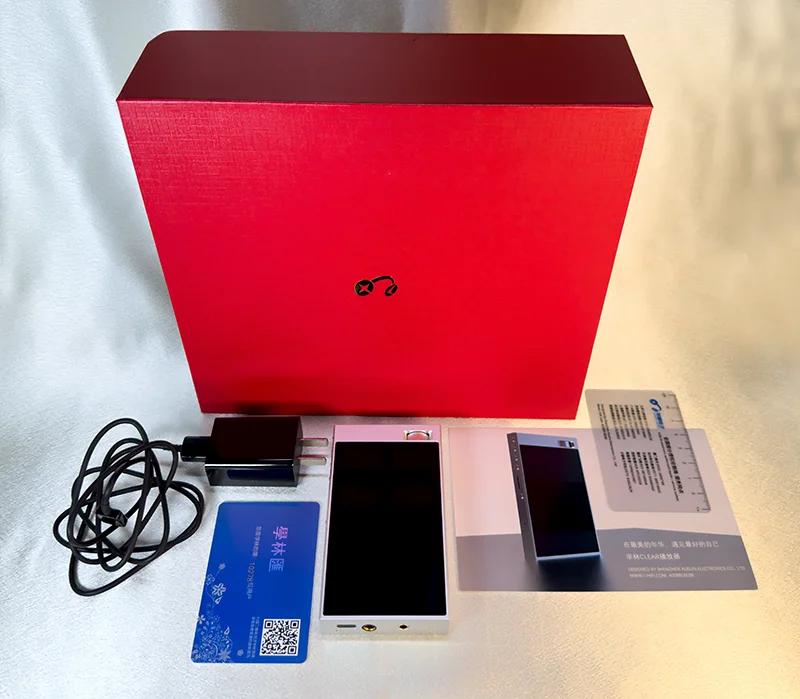
The USD $549 Xuelin Clear arrives in a large, high quality cardboard box that belies its' modest price.
Inside is a fairly spartan instruction manual in English & Chinese, a USB-A > USB-C cable & wall plug for charging, and a few warranty cards.
The inclusion of a leather case & screen protector would've been welcome additions, but I can understand they were probably omitted to keep costs down.
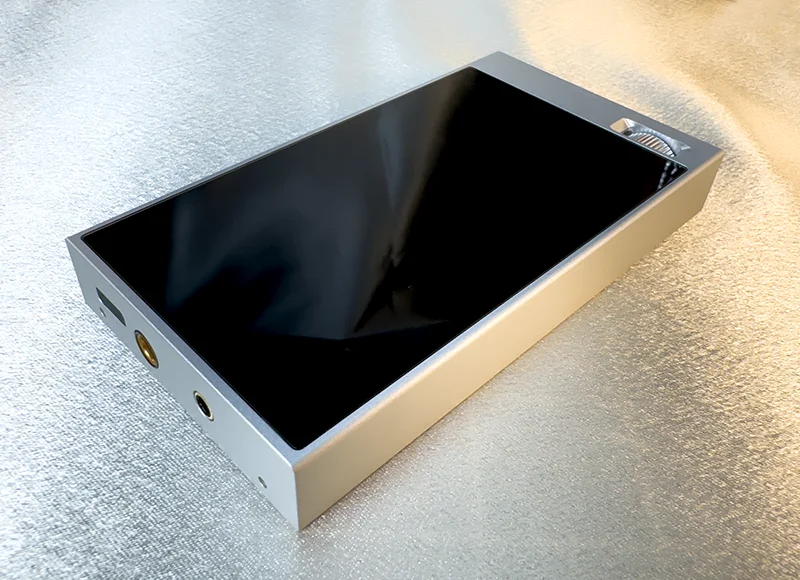
Xuelin Clear utilises a pair of ES9038Q DACs & twin OP1622's op-amps to generate 5.2V from its' 4.4mm balanced jack, and 2.6V of 3.5mm output. USB-C charging & Micro-SD cards up to 2TB are supported, with 64 or 128GB of built-in storage depending on the option you choose.
Clear supports file formats such as FLAC up to 192kHz, WAV to 192kHz, MP3 to 48kHz and DSD 2.8MHz but sadly no higher DSD resolutions.
Battery life is quoted as 8 hours but you may get a little less depending on how much you use the screen, though the 3100mAh internal battery charges quickly.
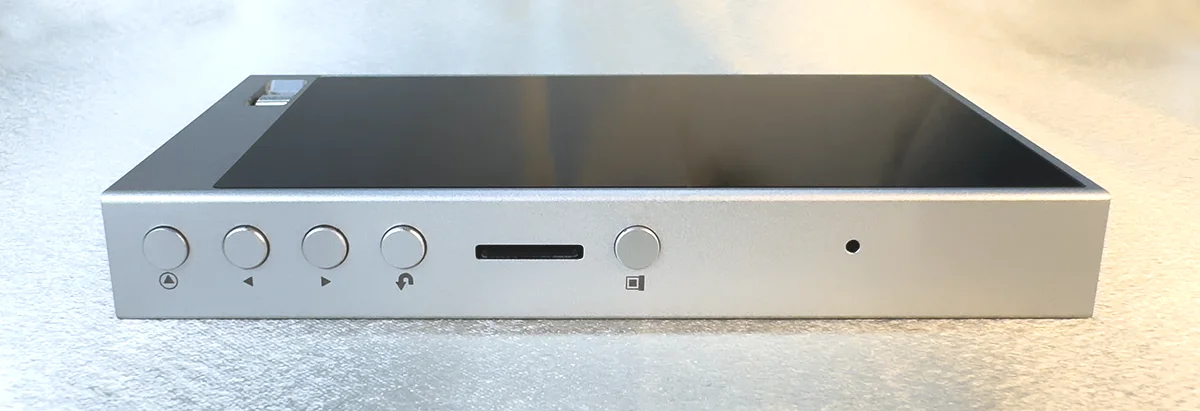
At a mere 157 grams, with very small 10 x 6 x 1.6 cm dimensions the Clear is tiny & extremely lightweight by modern DAP standards.
This isn't quite micro-player territory but isn't far off. In my recent Astell & Kern SR35 Review I spoke of the pleasurable experience of using a smaller player that glides in & out of a pocket, particularly when you're out & about. There really is nothing like it, and I dearly love smaller players for this reason.
The ballooning of modern DAP weights & form-factors in recent years (with screens up to 6 inches!) has conditioned us to become accustomed to bulkier, clunkier devices that deliver horsepower & features we don't end up using much of the time. Going back to simpler, smaller gadgets feels liberating and may leave us wondering if we really do need to lug those expensive bricks around.
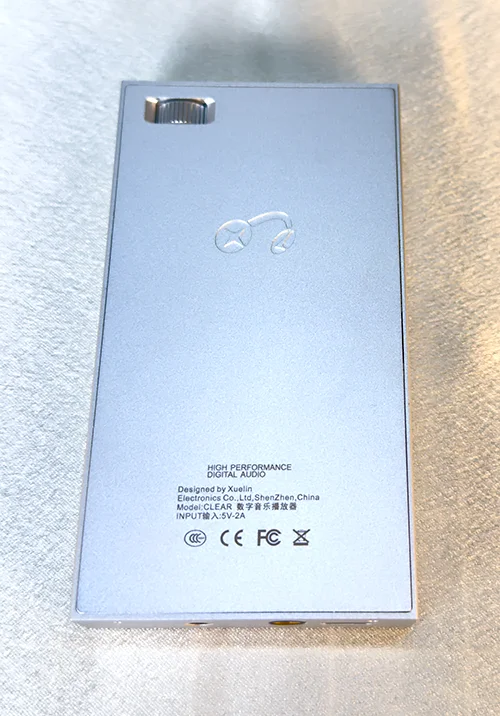
The magnesium alloy case has somewhat angular edges in the hand but they're rounded off enough to not be uncomfortable, and the level of machining is such it feels like you're holding a premium device.
The volume wheel clicks smoothly & precisely and the round aluminium buttons are easy to locate "blind" with the device in a pocket. I certainly have no build quality issues with the Clear, and for this price think you'd have to be pretty fussy to fault its' construction.

If I told you USD $549 is all you need to spend on a DAP that sounds superb & weighs just 157 grams, you'd probably ask "what's the catch?"
The catch is this is a simple device with a bare bones approach to prioritise sound quality - there's no Android here which means no streaming, nor is there a fancy touchscreen. Instead the interface is extremely utilitarian & spartan, and is controlled through the player's side buttons & volume wheel.
To minimise battery consumption the display uses four tiny OLED screens - top left is a spectrum analyser, below that shows the current bitrate, bottom right is the time position in the current track & total number of tracks, and top right is the main display where you control the player.
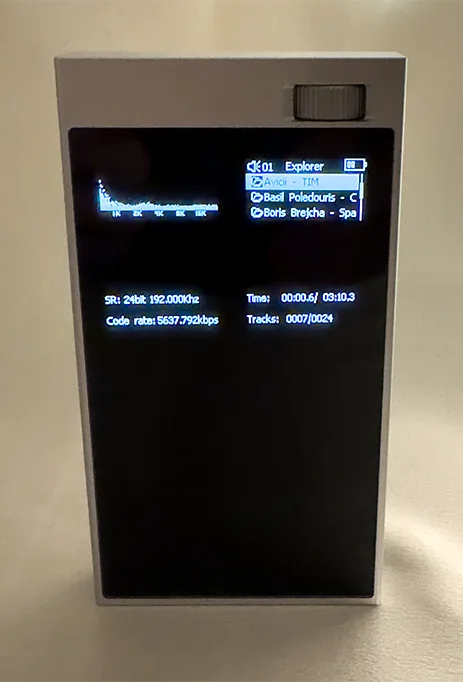
The control window in the upper right is small & can only fit a limited amount of information, which makes scrolling through lists of albums & tracks less enjoyable because only 3 can be visible at a time.
The narrow width of the window also means only some of each album or track name is visible - they do automatically scroll horizontally to display the full name, but it's a compromise. The control window also displays volume level & battery life (represented by 1-4 bars) at all times.
FWD & BCK buttons or the volume wheel are used to scroll, while PLAY button makes selections and the BACK button does what it says. Another downside is Clear's modest CPU runs at 400MHz so although scrolling through albums & tracks is very fluid, loading a song after you hit play can take several seconds.
By stark contrast omitting Android's bloat means Clear boots up in a mere three seconds, whereas Android DAPs can take up to a minute or more. The player's fifth button turns the screen on or off, which feels redundant given it turns off automatically if no buttons are pressed for awhile, and back on the moment any of other buttons are tapped. Pity that button isn't programmable.
For such a simple player there's a few goodies in the Settings menu - a Line Out option (sadly it only seems to apply to the 3.5mm jack), four built-in DAC filters which I personally can't hear any difference between, adjustable screen brightness and auto screen-off & power-off durations, even the ability to format the inserted Micro-SD card.
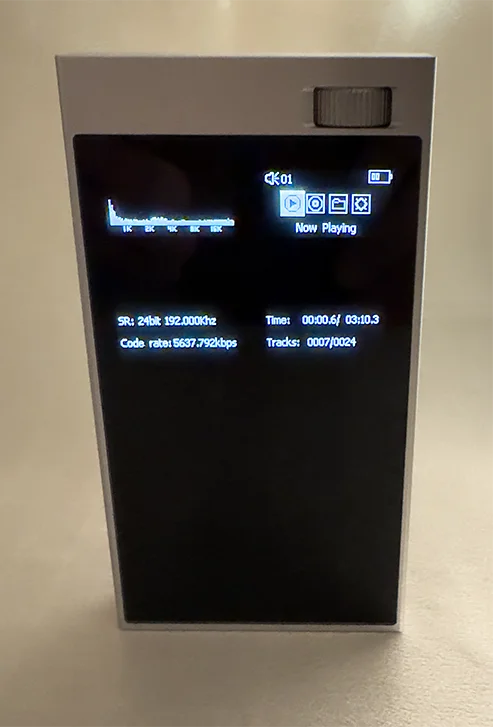
Another quirk is playback won't automatically pause when the earphone plug is removed, which makes A/Bing interesting but otherwise hasn't affected me. Lastly, gapless playback is not supported as there is a short pause between tracks.
It's a fairly fluid system once you overcome the initial learning curve, and given the player's weight & dimensions is one I'm willing to excuse in no small part thanks to how terrific Clear sounds. Having said all that, being able operating the player with just one hand is a refreshing change from larger, heavier DAPs where two can be required just to hold them without spraining a wrist.
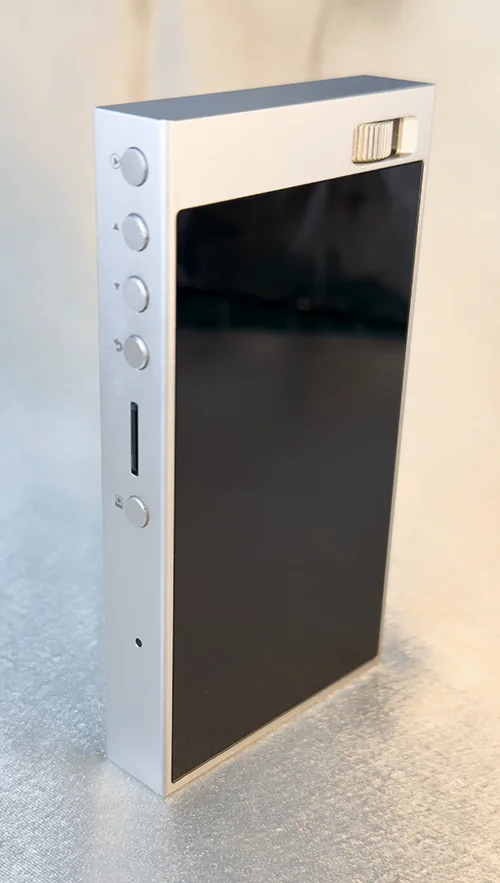
This little player has really shocked me with how good it sounds.
At just 157 grams with a pair of ESS DACs my expectations were low, if anything I was mentally prepared for something that might sound terrible - boy was I wrong!
There's an organic quality to the Clear's playback I don't quite get from any of the recent Android DAPs I've tried. It could best be described as an extra dose of PRAT (Pace, Rhythm And Timing) with a feeling of directness that leaves Android alternatives sounding slightly more artificial by comparison.
It's the polar opposite of what I expected. ESS DACs are famous for the dreaded "Sabre glare" which can impart a metallic sheen on the presentation, and I experienced that first hand with the DX240.
I'm not sure how Xuelin managed to overcome it but thankfully Clear is free of such artefacts to my ears, if anything it sounds more natural than my Android players - could Android itself be adding extra jitter which degrades playback? I don't know enough to answer that, but it would be my guess.
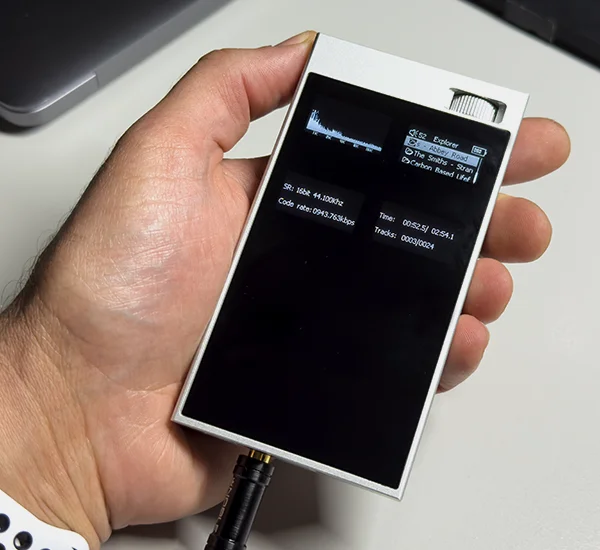
The first thing you notice listening to the Xuelin Clear is the bass. It's seriously impressive.
You'd think a diminutive player might be wimpy in this area but instead it delivers powerful, elevated levels of bass without sounding bloated. This gives the sound a real sense of gravitas with impressive note weight & drive.
Moving to the midrange Clear boasts a warm tonality with enough lower midrange emphasis to make music sound satisfyingly bodied & full. I wouldn't say it strays too far from neutral to impede technical performance, though it's possible a leaner sound would create a slightly higher perception of detail at the cost of the Clear's superb tonality.
Treble is the one area where Clear sacrifices extra presence to maintain that tonality and lower the potential of fatigue, and most Android DAPs I've tried definitely possess more treble sheen. Although even classical string instruments come through cleanly & distinctly on the Clear, that final bit of upper treble tizz is slightly muted. Nor do I think treble is rendered with quite the same delicacy as it is on more expensive Android players, though the difference is minor.
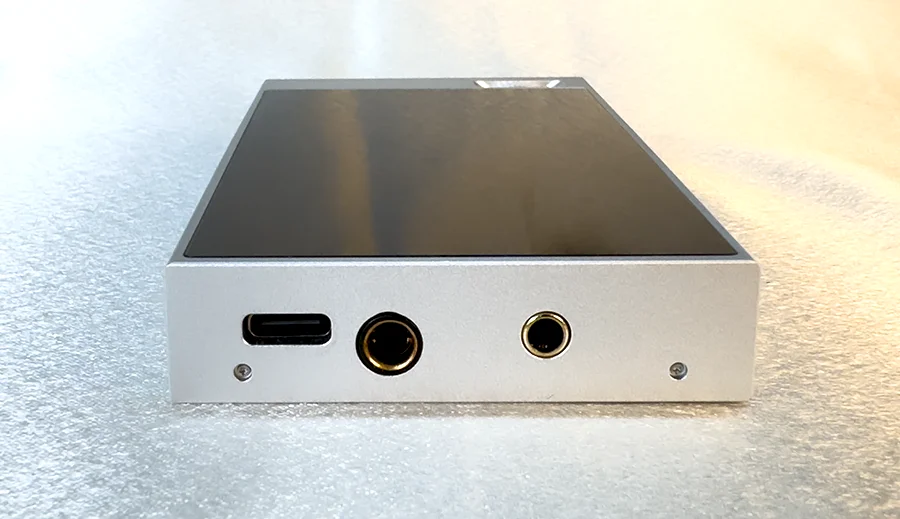
Clear boasts a respectably wide soundstage for such a tiny player. Stage depth is less impressive, better than most similarly-sized players yet still below that of many larger DAPs and I would nominate stage depth as one of Clear's sonic shortcomings.
Similarly resolution is acceptable, but doesn't quite deliver the same effortless rendition of tiny nuances as some of its' Android rivals, and Clear's more rolled-off treble may be partly responsible. By stark contrast Clear is hugely dynamic, with dynamic swings that really pop out and contribute massively to the player's palpable sense of groove.
Imaging & background blackness are similarly okay without being anything spectacular. Listening to the Clear I'm usually too busy getting caught up in the music itself to focus on technical performance, and it's mostly when critically A/Bing against Android players that I notice those deficiencies.
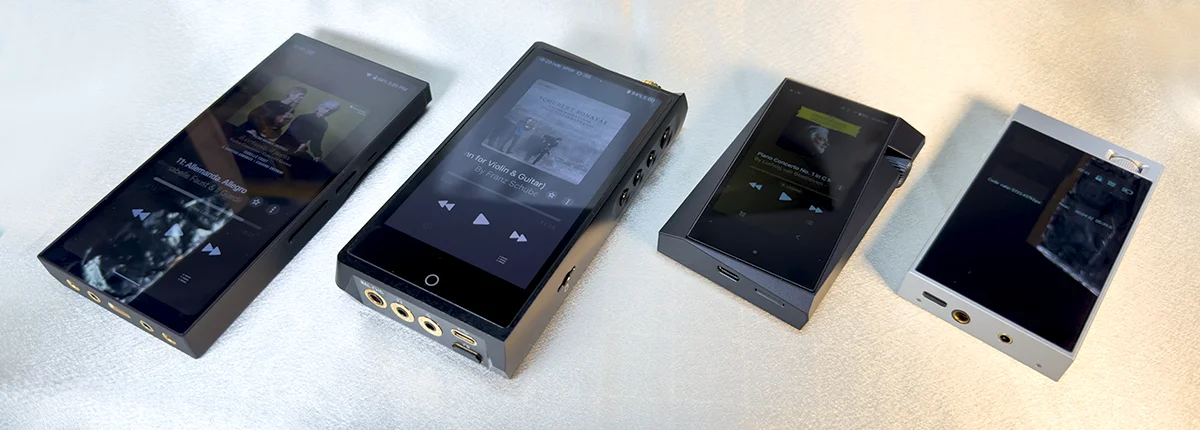
Astell & Kern SR35 (USD $799)
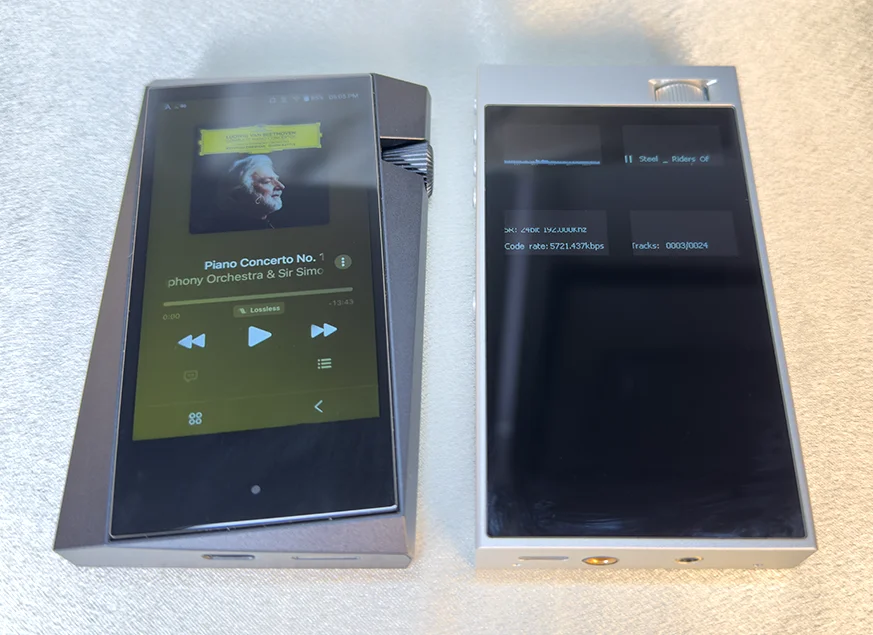
For this comparison the SR35 is in hi-gain mode with quad DACs enabled. I immediately notice the SR35 is a step down in most sonic departments, with bass that's not as impactful or deep and is much less satisfying. Overall note weight is also lower, with a tonality that isn't as warm or full as the Clear.
The SR35 does has more treble presence, but that doesn't seem to translate into a greater level of detail or superior technical performance, in fact the SR35's soundstage is definitely shallower and maybe even slightly narrower than Clear's although there's little difference in width.
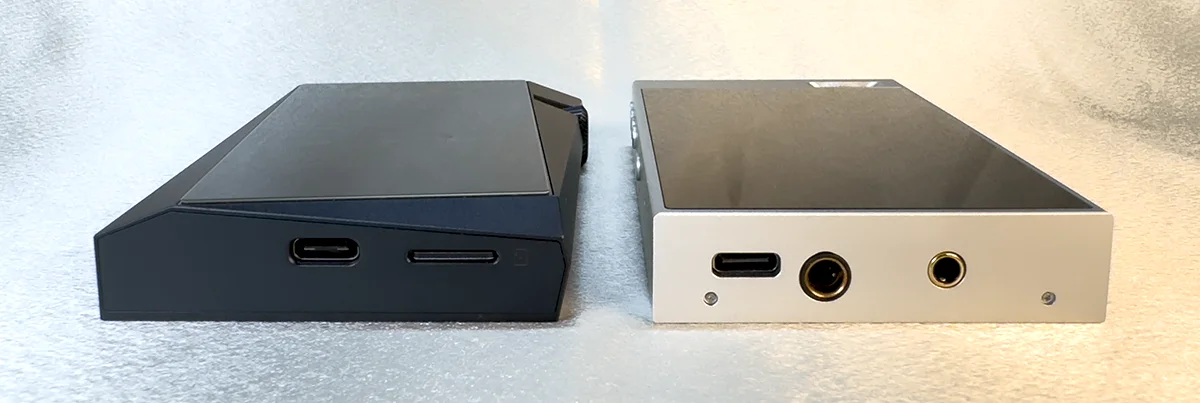
The Clear boasts superior dynamics and makes instruments sound larger. The SR35 also sounds more digital, with music that doesn't flow quite as well. You'd have a far easier time guessing the SR35's diminutive size blindfolded by listening to it to it than you would the Clear which sounds like a much larger device, even though it's almost 30 grams lighter than the SR35 & significantly cheaper.
With full streaming and (an admittedly very small) touchscreen the SR35 is a much easier device to use, and I find the difference in weight & bulk between it and Clear to be fairly negligible. However sonically I'm really struggling to pick out any aspect of the SR35's presentation I prefer over the Clear.
Hiby R6 Pro II (USD $749)
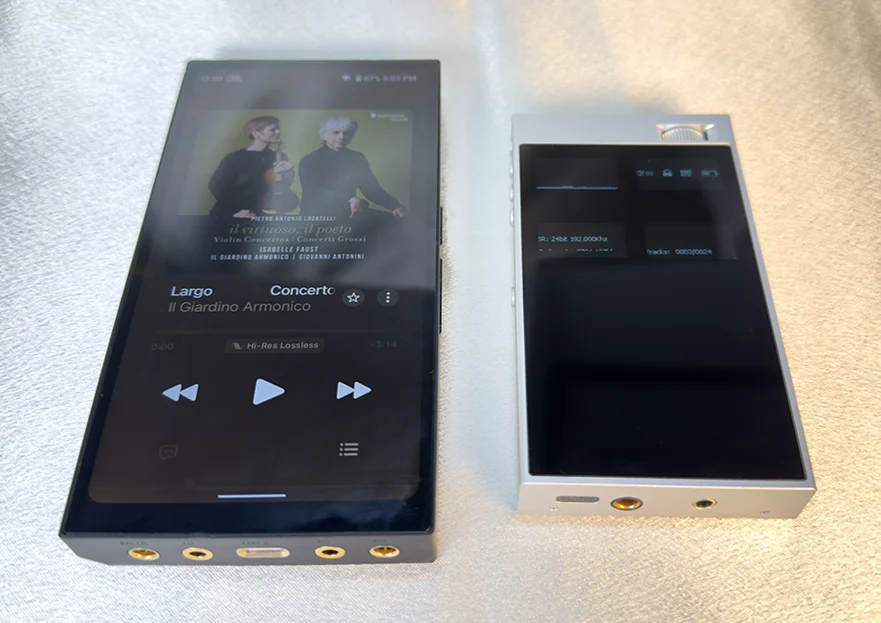
Run in Hi-gain, class AB mode I'm surprised that the R6P2's bass is much weaker & less impactful than the Clear which delivers a much more satisfying bass performance. The Clear is also significantly warmer with more lower midrange emphasis, and delivers a smoother more analogue tonality without giving me the impression important details are being obscured.
The R6P2 is quite a bit brighter though, and presents a deeper soundstage in which instruments feel larger with a background that's slightly blacker. However note weight is better on Clear, as are dynamics to a small extent which is surprising because I rate dynamics as one of the R6P2's great strengths.

The R6P2 is definitely resolving more information, with the trailing off of notes easier to pickup and instruments being a tiny bit more clearly delineated in space. However I do find the R6P2's extra treble energy potentially fatiguing, and prefer Clear's tonality which feels more natural.
Weighing 285 grams, at close to twice the size & weight of Clear the R6P2 isn't a device I'd want to carry around, and the lack of a volume wheel isn't something I'm crazy about. Its' huge touchscreen & fast CPU render it a pleasure to use though, almost making it feel like a device built for a different purpose.
Cayin N8ii (USD $3499)
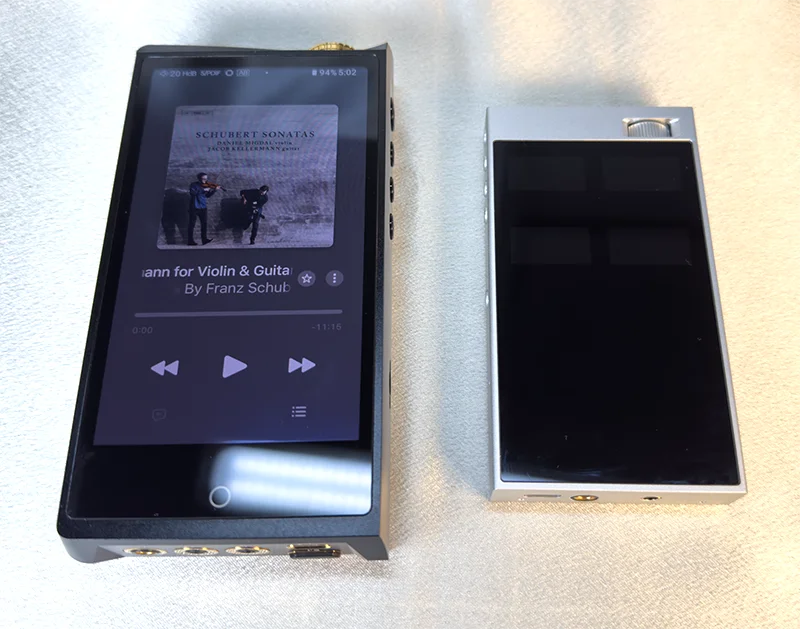
In high gain, P+ mode the N8ii is a player I've always felt has some of the deepest sub bass of any DAP on the market, yet to my surprise both players are very close in bass output with Clear perhaps demonstrating a tiny bit more bass rumble.
Then N8ii is significantly brighter, though I'm not sure merely the extra treble is responsible for the N8ii resolving significantly higher levels of detail, with tiny inflections on notes much more apparent in its' vastly deeper stage that feels significantly more three-dimensional.
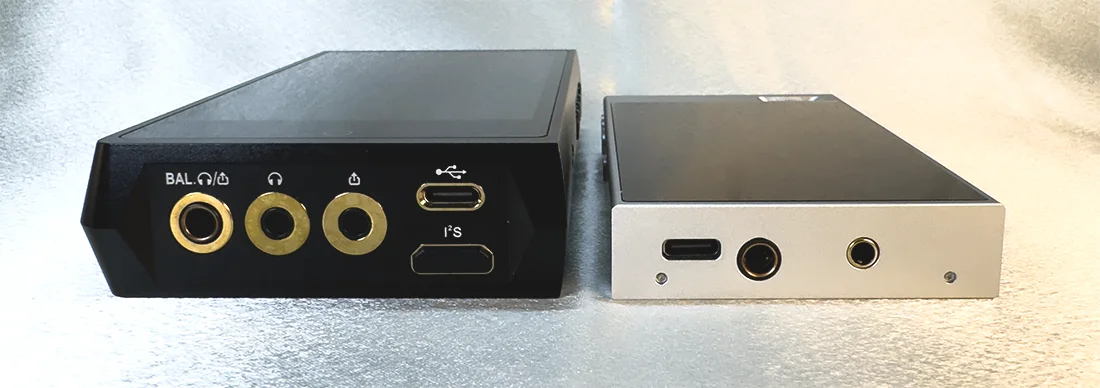
Multiple instruments are delineated more distinctly in complex tracks on the N8ii, perhaps thanks to its' beefier built-in amplifier, with imaging being sharper & the presentation more alive with tiny nuances.
In direct A/B comparisons the Clear sounds a bit mushier and more sluggish, though its' warmer tonality allows me to groove to the music a bit more it's clearly a major step down sonically from the N8ii as reflected by the enormous differences in price & weight, with the N8ii coming in at a chunky 442 grams.
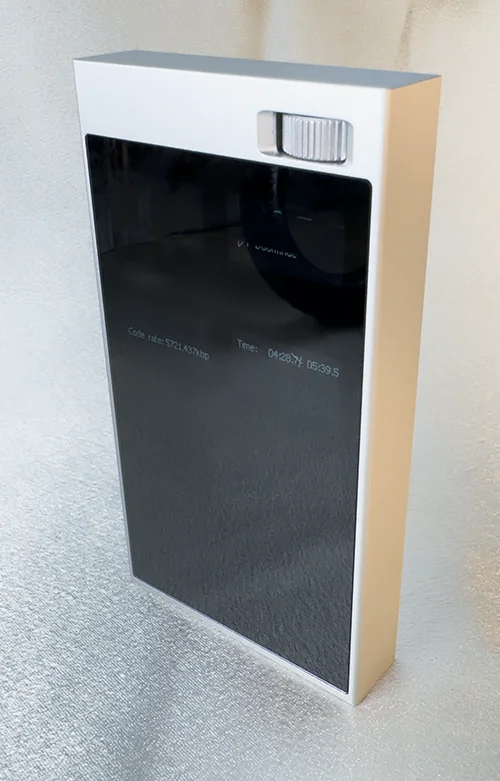
I wasn't sure what to expect with the Xuelin Clear, in fact I wasn't really expecting much at all.
Would it be worth bothering with a player that lacks streaming or a touchscreen? To my total surprise the answer is a resounding yes!
It's difficult to put into words why the Xuelin sounds so impressive for such a tiny gadget. Awesome bass is part of it, but that's not the full story. There's a calmness to Clear's presentation that lets me relax when I listen, whereas something about the sound of delta-sigma Android players puts me on edge.
Ironically, relaxed is the last word I'd use to describe the Clear's sound. No, it's far too toe-tapping for that. There's a naturalness however which was the last thing expected from ESS DACs - I still have no idea how Xuelin pulled that off.
The elephant in the room is Clear's interface and non-Android quirks, is it worth the trouble or would a small Android DAP be a better choice? My Astell & Kern SR35 has been gathering dust since Clear arrived which probably tells you something, but you'll need to find your own answer.
I've changed my mind about non-Android players, and will pay a lot more attention to them in future.
This year I became a convert of Apple Music and have hardly touched my FLAC/DSD albums since. So weeks ago when I was offered a free Xuelin Clear in exchange for a review I wondered if it'd be worth it.
No android?
No streaming??
No touchscreen?!?
I try to keep an open mind but it didn't seem promising. Then the Clear arrived, so I grudgingly took it out of the box, plugged in some IEMs and began to listen...
Suddenly my perspective changed.
Packaging

The USD $549 Xuelin Clear arrives in a large, high quality cardboard box that belies its' modest price.
Inside is a fairly spartan instruction manual in English & Chinese, a USB-A > USB-C cable & wall plug for charging, and a few warranty cards.
The inclusion of a leather case & screen protector would've been welcome additions, but I can understand they were probably omitted to keep costs down.
Tech Specs & Battery Life

Xuelin Clear utilises a pair of ES9038Q DACs & twin OP1622's op-amps to generate 5.2V from its' 4.4mm balanced jack, and 2.6V of 3.5mm output. USB-C charging & Micro-SD cards up to 2TB are supported, with 64 or 128GB of built-in storage depending on the option you choose.
Clear supports file formats such as FLAC up to 192kHz, WAV to 192kHz, MP3 to 48kHz and DSD 2.8MHz but sadly no higher DSD resolutions.
Battery life is quoted as 8 hours but you may get a little less depending on how much you use the screen, though the 3100mAh internal battery charges quickly.
Ergonomics

At a mere 157 grams, with very small 10 x 6 x 1.6 cm dimensions the Clear is tiny & extremely lightweight by modern DAP standards.
This isn't quite micro-player territory but isn't far off. In my recent Astell & Kern SR35 Review I spoke of the pleasurable experience of using a smaller player that glides in & out of a pocket, particularly when you're out & about. There really is nothing like it, and I dearly love smaller players for this reason.
The ballooning of modern DAP weights & form-factors in recent years (with screens up to 6 inches!) has conditioned us to become accustomed to bulkier, clunkier devices that deliver horsepower & features we don't end up using much of the time. Going back to simpler, smaller gadgets feels liberating and may leave us wondering if we really do need to lug those expensive bricks around.

The magnesium alloy case has somewhat angular edges in the hand but they're rounded off enough to not be uncomfortable, and the level of machining is such it feels like you're holding a premium device.
The volume wheel clicks smoothly & precisely and the round aluminium buttons are easy to locate "blind" with the device in a pocket. I certainly have no build quality issues with the Clear, and for this price think you'd have to be pretty fussy to fault its' construction.
Interface & Usability

If I told you USD $549 is all you need to spend on a DAP that sounds superb & weighs just 157 grams, you'd probably ask "what's the catch?"
The catch is this is a simple device with a bare bones approach to prioritise sound quality - there's no Android here which means no streaming, nor is there a fancy touchscreen. Instead the interface is extremely utilitarian & spartan, and is controlled through the player's side buttons & volume wheel.
To minimise battery consumption the display uses four tiny OLED screens - top left is a spectrum analyser, below that shows the current bitrate, bottom right is the time position in the current track & total number of tracks, and top right is the main display where you control the player.

The control window in the upper right is small & can only fit a limited amount of information, which makes scrolling through lists of albums & tracks less enjoyable because only 3 can be visible at a time.
The narrow width of the window also means only some of each album or track name is visible - they do automatically scroll horizontally to display the full name, but it's a compromise. The control window also displays volume level & battery life (represented by 1-4 bars) at all times.
FWD & BCK buttons or the volume wheel are used to scroll, while PLAY button makes selections and the BACK button does what it says. Another downside is Clear's modest CPU runs at 400MHz so although scrolling through albums & tracks is very fluid, loading a song after you hit play can take several seconds.
By stark contrast omitting Android's bloat means Clear boots up in a mere three seconds, whereas Android DAPs can take up to a minute or more. The player's fifth button turns the screen on or off, which feels redundant given it turns off automatically if no buttons are pressed for awhile, and back on the moment any of other buttons are tapped. Pity that button isn't programmable.
For such a simple player there's a few goodies in the Settings menu - a Line Out option (sadly it only seems to apply to the 3.5mm jack), four built-in DAC filters which I personally can't hear any difference between, adjustable screen brightness and auto screen-off & power-off durations, even the ability to format the inserted Micro-SD card.

Another quirk is playback won't automatically pause when the earphone plug is removed, which makes A/Bing interesting but otherwise hasn't affected me. Lastly, gapless playback is not supported as there is a short pause between tracks.
It's a fairly fluid system once you overcome the initial learning curve, and given the player's weight & dimensions is one I'm willing to excuse in no small part thanks to how terrific Clear sounds. Having said all that, being able operating the player with just one hand is a refreshing change from larger, heavier DAPs where two can be required just to hold them without spraining a wrist.
Sound Performance

This little player has really shocked me with how good it sounds.
At just 157 grams with a pair of ESS DACs my expectations were low, if anything I was mentally prepared for something that might sound terrible - boy was I wrong!
There's an organic quality to the Clear's playback I don't quite get from any of the recent Android DAPs I've tried. It could best be described as an extra dose of PRAT (Pace, Rhythm And Timing) with a feeling of directness that leaves Android alternatives sounding slightly more artificial by comparison.
It's the polar opposite of what I expected. ESS DACs are famous for the dreaded "Sabre glare" which can impart a metallic sheen on the presentation, and I experienced that first hand with the DX240.
I'm not sure how Xuelin managed to overcome it but thankfully Clear is free of such artefacts to my ears, if anything it sounds more natural than my Android players - could Android itself be adding extra jitter which degrades playback? I don't know enough to answer that, but it would be my guess.

The first thing you notice listening to the Xuelin Clear is the bass. It's seriously impressive.
You'd think a diminutive player might be wimpy in this area but instead it delivers powerful, elevated levels of bass without sounding bloated. This gives the sound a real sense of gravitas with impressive note weight & drive.
Moving to the midrange Clear boasts a warm tonality with enough lower midrange emphasis to make music sound satisfyingly bodied & full. I wouldn't say it strays too far from neutral to impede technical performance, though it's possible a leaner sound would create a slightly higher perception of detail at the cost of the Clear's superb tonality.
Treble is the one area where Clear sacrifices extra presence to maintain that tonality and lower the potential of fatigue, and most Android DAPs I've tried definitely possess more treble sheen. Although even classical string instruments come through cleanly & distinctly on the Clear, that final bit of upper treble tizz is slightly muted. Nor do I think treble is rendered with quite the same delicacy as it is on more expensive Android players, though the difference is minor.
Technical Performance

Clear boasts a respectably wide soundstage for such a tiny player. Stage depth is less impressive, better than most similarly-sized players yet still below that of many larger DAPs and I would nominate stage depth as one of Clear's sonic shortcomings.
Similarly resolution is acceptable, but doesn't quite deliver the same effortless rendition of tiny nuances as some of its' Android rivals, and Clear's more rolled-off treble may be partly responsible. By stark contrast Clear is hugely dynamic, with dynamic swings that really pop out and contribute massively to the player's palpable sense of groove.
Imaging & background blackness are similarly okay without being anything spectacular. Listening to the Clear I'm usually too busy getting caught up in the music itself to focus on technical performance, and it's mostly when critically A/Bing against Android players that I notice those deficiencies.
Source Comparisons

Astell & Kern SR35 (USD $799)

For this comparison the SR35 is in hi-gain mode with quad DACs enabled. I immediately notice the SR35 is a step down in most sonic departments, with bass that's not as impactful or deep and is much less satisfying. Overall note weight is also lower, with a tonality that isn't as warm or full as the Clear.
The SR35 does has more treble presence, but that doesn't seem to translate into a greater level of detail or superior technical performance, in fact the SR35's soundstage is definitely shallower and maybe even slightly narrower than Clear's although there's little difference in width.

The Clear boasts superior dynamics and makes instruments sound larger. The SR35 also sounds more digital, with music that doesn't flow quite as well. You'd have a far easier time guessing the SR35's diminutive size blindfolded by listening to it to it than you would the Clear which sounds like a much larger device, even though it's almost 30 grams lighter than the SR35 & significantly cheaper.
With full streaming and (an admittedly very small) touchscreen the SR35 is a much easier device to use, and I find the difference in weight & bulk between it and Clear to be fairly negligible. However sonically I'm really struggling to pick out any aspect of the SR35's presentation I prefer over the Clear.
Hiby R6 Pro II (USD $749)

Run in Hi-gain, class AB mode I'm surprised that the R6P2's bass is much weaker & less impactful than the Clear which delivers a much more satisfying bass performance. The Clear is also significantly warmer with more lower midrange emphasis, and delivers a smoother more analogue tonality without giving me the impression important details are being obscured.
The R6P2 is quite a bit brighter though, and presents a deeper soundstage in which instruments feel larger with a background that's slightly blacker. However note weight is better on Clear, as are dynamics to a small extent which is surprising because I rate dynamics as one of the R6P2's great strengths.

The R6P2 is definitely resolving more information, with the trailing off of notes easier to pickup and instruments being a tiny bit more clearly delineated in space. However I do find the R6P2's extra treble energy potentially fatiguing, and prefer Clear's tonality which feels more natural.
Weighing 285 grams, at close to twice the size & weight of Clear the R6P2 isn't a device I'd want to carry around, and the lack of a volume wheel isn't something I'm crazy about. Its' huge touchscreen & fast CPU render it a pleasure to use though, almost making it feel like a device built for a different purpose.
Cayin N8ii (USD $3499)

In high gain, P+ mode the N8ii is a player I've always felt has some of the deepest sub bass of any DAP on the market, yet to my surprise both players are very close in bass output with Clear perhaps demonstrating a tiny bit more bass rumble.
Then N8ii is significantly brighter, though I'm not sure merely the extra treble is responsible for the N8ii resolving significantly higher levels of detail, with tiny inflections on notes much more apparent in its' vastly deeper stage that feels significantly more three-dimensional.

Multiple instruments are delineated more distinctly in complex tracks on the N8ii, perhaps thanks to its' beefier built-in amplifier, with imaging being sharper & the presentation more alive with tiny nuances.
In direct A/B comparisons the Clear sounds a bit mushier and more sluggish, though its' warmer tonality allows me to groove to the music a bit more it's clearly a major step down sonically from the N8ii as reflected by the enormous differences in price & weight, with the N8ii coming in at a chunky 442 grams.
Conclusion

I wasn't sure what to expect with the Xuelin Clear, in fact I wasn't really expecting much at all.
Would it be worth bothering with a player that lacks streaming or a touchscreen? To my total surprise the answer is a resounding yes!
It's difficult to put into words why the Xuelin sounds so impressive for such a tiny gadget. Awesome bass is part of it, but that's not the full story. There's a calmness to Clear's presentation that lets me relax when I listen, whereas something about the sound of delta-sigma Android players puts me on edge.
Ironically, relaxed is the last word I'd use to describe the Clear's sound. No, it's far too toe-tapping for that. There's a naturalness however which was the last thing expected from ESS DACs - I still have no idea how Xuelin pulled that off.
The elephant in the room is Clear's interface and non-Android quirks, is it worth the trouble or would a small Android DAP be a better choice? My Astell & Kern SR35 has been gathering dust since Clear arrived which probably tells you something, but you'll need to find your own answer.
I've changed my mind about non-Android players, and will pay a lot more attention to them in future.
soundblast75
received this dap , i cannot express the maximum frustration i experience , basically ive spent hours trying to get this going with 4 different sd cards from a macbook, formatting, trying everything i know and at best it will load some random tracks with tracks missing and the ususall mac crap files in between, it wouldn't load the internal memory,128gb as Penon didnt have the 64 left, i cannot even see or use it, when it played, what i heard was good but nothing special so definitely not worth all the pain!
Update!
On a further little listen i have to say that i am liking what i hear and would like to know how to deal with the pita file situation
Update!
On a further little listen i have to say that i am liking what i hear and would like to know how to deal with the pita file situation
ilmothedude
Great review! How you describe the sound characteristics feels pretty similiar to my Xuelin H6. Seems like that might be Xuelin's house sound. It's a very captivating sound. What's not captivating is that firmware. It looks very similiar with H6 firmware, expect with two screens more. Looks like those extra screens don't even show any new information. Seems pointless having two screens just to show codec and file properties.
Bosk
1000+ Head-Fier
Pros: Fast, bombastic sound with tremendous technical performance
Cons: Aggressive tonality & superb BA bass, but BA bass nonetheless
Once in awhile something special comes along in this hobby, and you usually know it right away.
During a recent visit to my local dealer Addicted to Audio, a staff member happened to mention trying a pre-release Noble Audio earphone called Spartacus, and being floored by its' performance for a relatively modest price by high-end IEM standards.
Having never owned a Noble IEM my curiosity was piqued, but I'll admit to being skeptical the staffer's vaunted praise was warranted - we've all been impressed by an audio gadget that wowed us on first listen, only to later reveal its' flaws.
A fortnight later the chance to try Spartacus came, and it's fair to say I was immediately smitten. Bells started ringing in my ears that this was "the one" and my wallet would've let out a long, mournful sigh if it could've. Spartacus' massive bass & soundstage, coupled with a fast, incisive sound and incredibly rich vocals grabbed me by the collar from the first second.
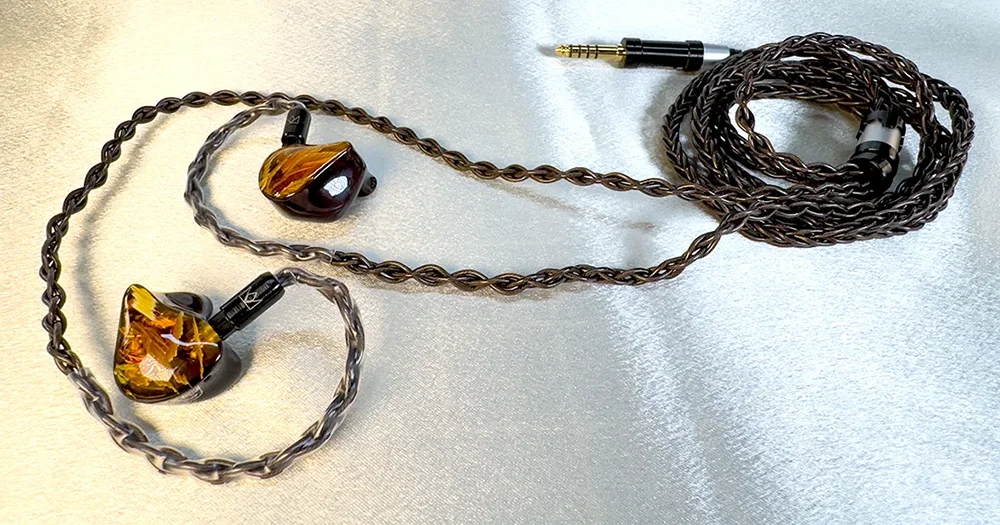
After some friendly negotiations (that may or may not have included me begging) Addicted to Audio generously agreed to provide a discount in exchange for the review you're now reading.
So then, the USD $1799 Noble Audio Spartacus are as visually distinctive with fibre composite faceplates as their 4x BA / 2x BCD driver config is unusual, and I was curious for that reason alone.
They utilise Sonion Bone Conduction Drivers which I'm glad to see becoming prevalent in the market, as prior to acquiring Mest MKIII's I'd never owned a set of BCD earphones but have immediately become a fan. There's something special about BCD imaging & staging which feels almost impossible to duplicate in IEMs without them, and I noted Spartacus contain not one but two BCDs in each earpiece.
Would twin BCDs mean double the magic? With a gleam in my eyes I tore the wrapping off the box, eager to discover the answer!
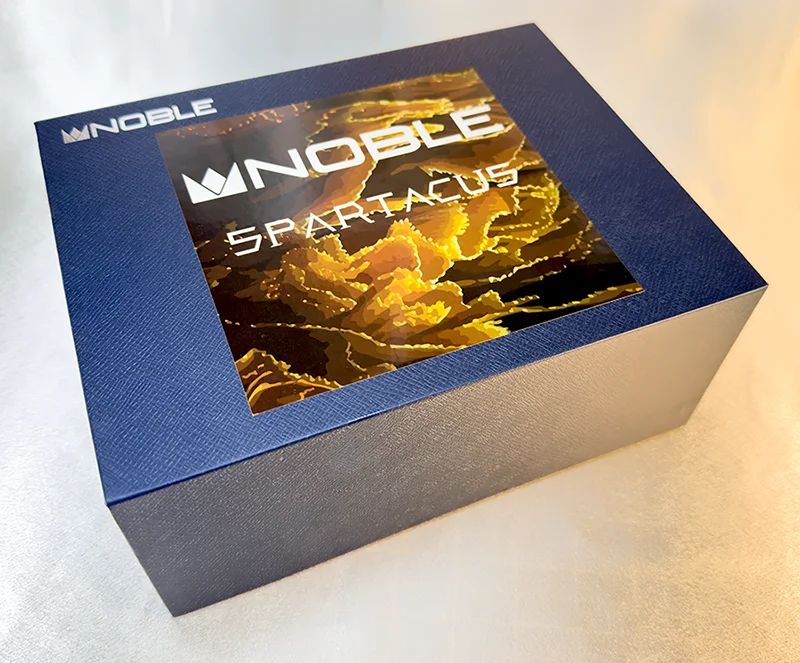
Spartacus arrive in a large, high quality foam-lined composition board box that feels suitably premium.
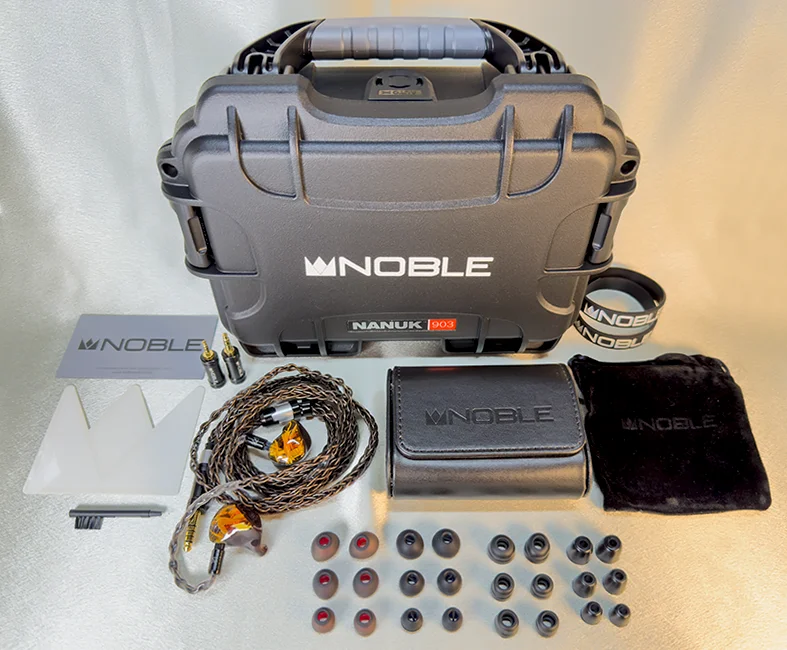
Upon opening the box you'll be greeted with a genuine Nanuk 903 waterproof hardcase that feels like it's been built to house delicate scientific instruments or plutonium fuel rods.
Inside you'll find an assortment of goodies - firstly a velvet drawstring pouch, a small leather carry case, warranty card, Noble emblem sticker, a pair of Noble branded elastic bands for strapping a portable amp to your DAP, a shirt clip, and four sets of eartips in three sizes.
...along with the stuff that matters: The earpieces & stock cable - a modular 8 wire silver-plated copper cable with 4.4, 3.5 & 2.5mm terminations I've since found to be extremely sonically impressive.
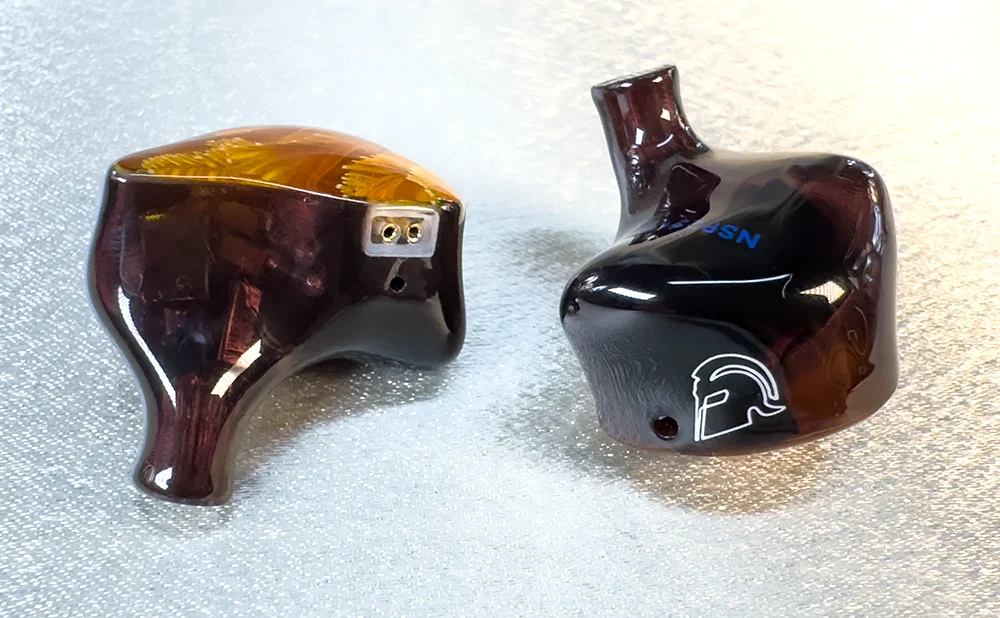
Ergonomically Spartacus are reminiscent of previous Noble Audio IEMs - vented resin shells on the larger end of the scale, but well-sculpted to the natural shape of the human ear.
I was initially concerned size would be a problem, but having lived with them for weeks this hasn't proved to be the case. They're large, and I don't quite forget I'm wearing them as is the case with smaller hybrids, but to my ears they're not uncomfortable.
One consequence of that bulk is they're one of the best-isolating universal earphones I've worn, and the amount of background noise they can drown out on noisy trains lies close to the noise cancellation provided by second generation Airpod Pros.
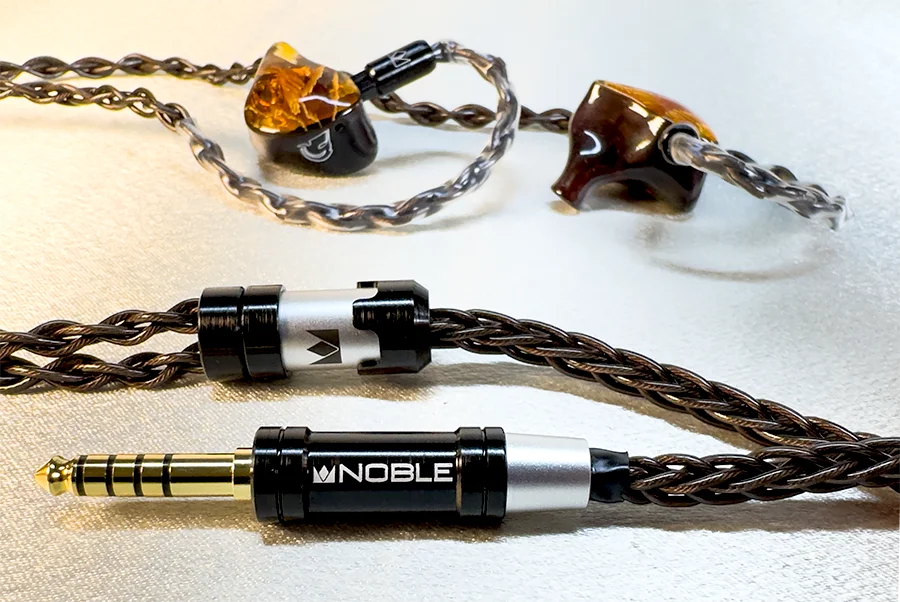
The stock cable feels ergonomically appropriate being a beefy 8 wire affair, yet light enough that I wouldn't say ergonomics are a problem. Effect Audio's Eros S feel similar in girth to this, though thankfully the Spartacus stock cable has a much lighter Y-split.
The modular plug holds in place magnetically, and has thus far given the impression of being better designed than most modular plugs on the market, only detaching unwantedly on very rare occasions.
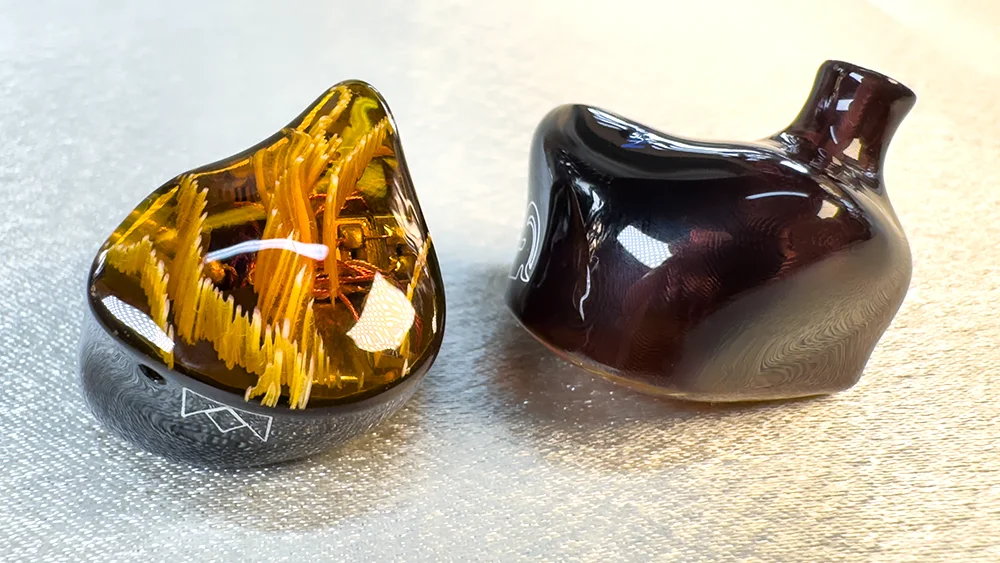
Spartacus delivers a big, muscular sound yet provides all the audiophile niceties you demand. Let's start from the bottom.
Bass is enormously impressive given it's produced by a pair of BA drivers, with highly elevated quantity and seriously impressive texture.
At times I need to remind myself there isn't a dynamic driver in there, and although the slam & rumble can't quite measure up to the best DD-fuellled basshead IEMs, on many tracks I actually prefer Spartacus' bass output to that of Mest MKIII for instance.
In fact at first listen it's easy to get the impression Spartacus is a bass-first IEM where the lower frequencies are prioritised with north-of-neutral quantity, but the more you listen the more you'll marvel at how little has been sacrificed from the rest of the frequency spectrum to achieve this.
Bass is clean in the sense it does not bleed into the midrange, and despite possessing superb texture by BA standards is incredibly responsive so Spartacus will effortlessly keep up with fast-paced music.
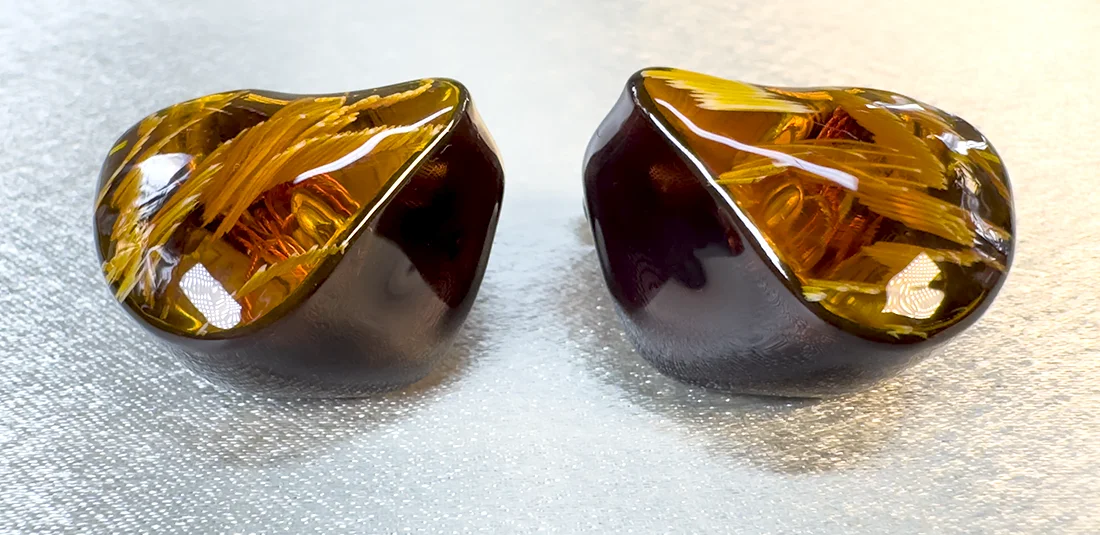
Moving to the middle, Spartacus' midrange has a huge amount of presence and warmth with tremendous resolution worthy of a flagship IEM. Vocals are positioned aggressively forward with impressive note weight, and instruments in general are rendered very large.
Combined with the voluminous bass output, this helps create a bold, brash sound that's loaded with excitement. The downside is if you happen to find forward vocals fatiguing, but for my taste they provide a massive sense of engagement.
Spartacus' lower treble is very prominent, aided by its' silver-plated copper stock cable, so if you're into electronic or classical music like me you won't find Spartacus too dark to do such genres justice.
Having said that, upper treble can at times feel slightly restrained, and though I'm reluctant to label Spartacus' treble a weakness it's definitely an area where some more expensive IEMs are able to render violins with greater delicacy - most commonly those with EST drivers.
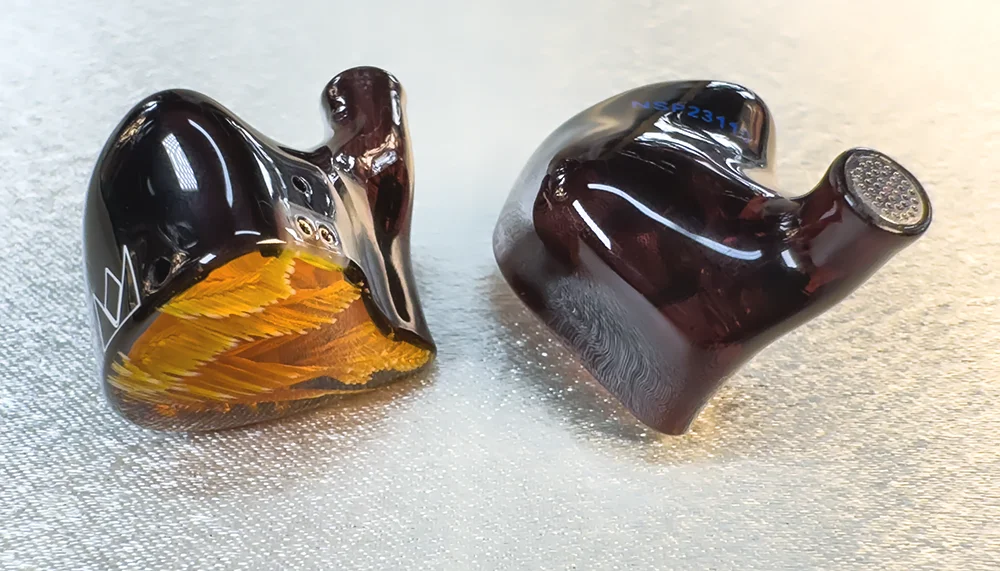
The first thing I notice about Spartacus is the impressive width of their soundstage. It isn't the absolute widest I've ever heard (Elysian Annihilator earns that trophy) it isn't far off, and is a standout attribute.
Stage depth isn't as impressive - slightly above average without being exceptional, though not so shallow as to present itself as a weakness. Actually Spartacus' stage dimensions are somewhat unusual in that it feels like I'm 'looking down' on the stage from slightly above more than normal.
Spartacus' dynamics are nothing short of superb, and greatly contribute to their excitement. Dynamics go a long way towards enhancing my musical enjoyment (a reason I advocate for portable amplifiers which boost this area) and those awesome dynamics help generate Spartacus' bold presentation.
Imaging is very solid without jumping out as special, likely Spartacus' more restrained upper treble is the reason this isn't a greater strength. The addition of EST drivers would've helped, and though I do not hear Spartacus' imaging as deficient it isn't spectacular enough that I'd pick them up purely for the joy of how they render pinpoint instruments in space. Similarly, though their background is acceptably black I wouldn't say its' quite as dark as class-leading IEMs in this area.
Finally, deserving special mention is Spartacus' tremendous speed. Without a dynamic driver to slow things down they're blisteringly quick at rendering complex musical passages cleanly with instruments remaining distinct, yet still delivering a brash & bold presentation with gobs of deep bass.
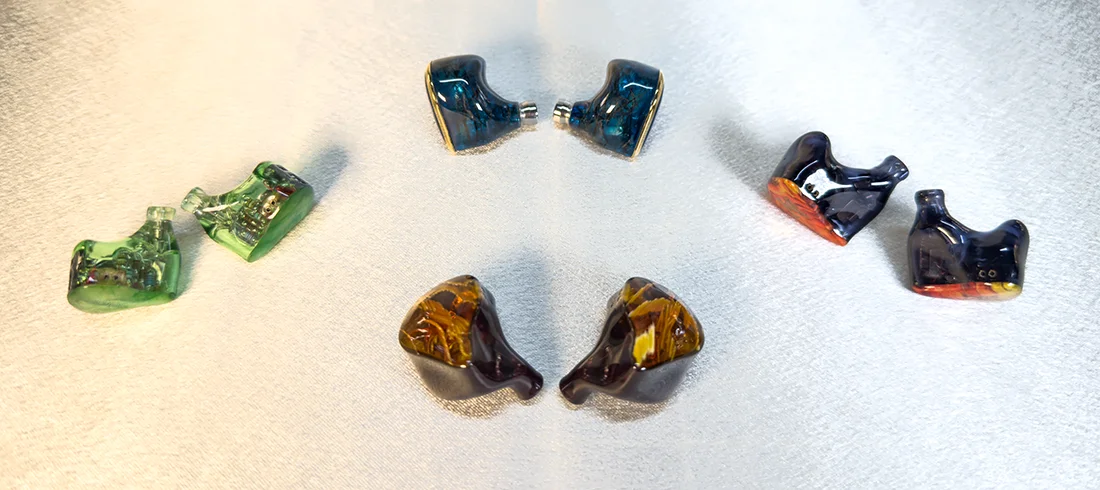
I compared Spartacus with a number of IEMs at hand using the Hiby R6 Pro II I recently reviewed, with Spartacus requiring a volume level of 21 in hi-gain, AB mode.
ISN EST50 (USD $449)

The EST50s are slightly smaller and stick out a bit less. I also find their shells are narrower in the areas near the nozzle that makes contact with my ear so they don’t fit as snugly as Spartacus, which makes them slightly more comfortable but they don’t seal as strongly. Requiring 19 volume on the R6P2 they're similarly easy to drive.
It's immediately obvious the EST50s' DD-fuelled bass is much slower than that of Spartacus and struggles to keep up with fast paced music, but the EST50s' bass does boast more satisfying slam & texture. However the EST50s sound more congested with a soundstage that's both narrower & shallower. They're also darker, with a warmer, lower-resolution presentation that can get a little boomy at times.
Like Spartacus the EST50s are a bass-first IEM, but it feels like so many other aspects of their presentation have been sacrificed to achieve this whereas Spartacus is feels far more open, resolving and refined despite bass quantity being fairly similar.
Penon Turbo (USD $549)

The Turbos are much smaller, lighter & far more comfortable than Spartacus but don't isolate nearly as well thanks to less bulk blocking the ear opening. Requiring 25 volume on the R6P2 they're slightly harder to drive.
The Turbos' are more midbass-emphasised and their bass texture isn't as impressive, feeling a little mushier than that of Spartacus. Turbos' midrange is positioned further back and their overall tonality is more polite than Spartacus' who's midrange is much richer and more forward, but can feel more aggressive as a result. The Turbos are also tuned darker, which is perhaps responsible for their imaging being less defined.
Spartacus definitely have a blacker background with superior dynamics & better note weight, and although they're more resolving the resolution gap isn't massive. Spartacus' soundstage is also wider, and I find their tonality a lot more musical & engaging whereas the Turbos come across as a little more tonally "hi-fi" & artificial.
Unique Melody Mest MKIII (USD $1899)
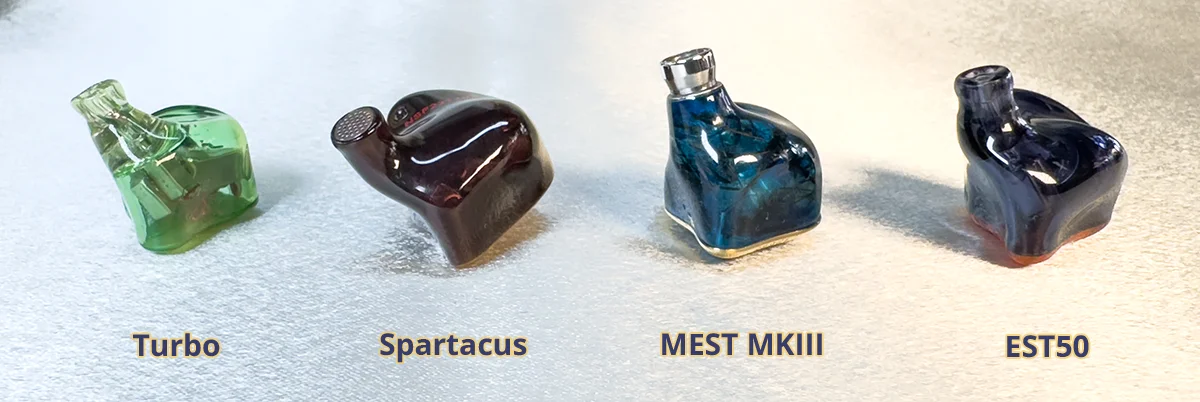
MEST MKIII is about the same size as Spartacus but a little thinner in the section that makes contact with my ear so they're slightly more comfortable but don't isolate as effectively. It must be said the MKIII stock cable has some of the worst ergonomics of any cable I've tried, being especially stiff below the Y-split. Requiring 23 volume on the R6P2 MEST is similarly easy to drive.
MEST MKIII's dynamic driver is much faster than the EST50s' so there isn't the issue of it struggling to keep up, but bass quantity is definitely lower with much less sub bass presence in particular than Spartacus, though MEST's DD bass texture is slightly superior but Spartacus comes awfully close.
MEST's presentation is quite v-shaped and its' weakness is its' midrange, with a cooler tonality that feels fairly thin & emotionally unengaging as opposed to Spartacus' midrange being warmer and much more forward with instruments that sound larger. When it comes to treble the tables are turned, with MEST's much higher quality treble (particularly upper treble) exposing Spartacus' shortcoming in this area.
MEST's stage is deeper with a blacker background but Spartacus' is wider, and though resolution between them is similar it feels like MEST is resolving slightly more detail simply by pushing more treble at me. MEST's imaging does feel marginally more precise, though both IEMs appear to utilise their BCDs really well and I wonder if MEST's slightly higher technical performance is the result of being tuned to prioritise technicality over tonality.
Thieaudio Monarch MKIII (USD $999)
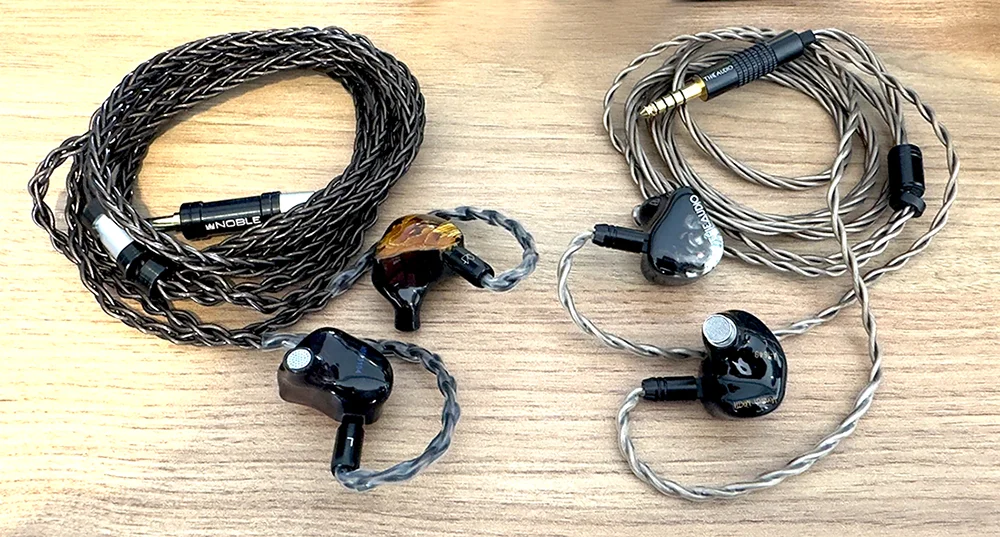
Similarly sized to Spartacus, the Monarch MKIIIs require a volume of 30 on the R6P2 so they're more difficult to drive.
The MKIIIs have less bass quantity than Spartacus with midbass emphasised over sub bass, and overall sound more refined with a smoother presentation that's less warm & visceral than Spartacus. The MKIII's maintain much of the Monarch MKII's flat tonality that's very neutral & uncoloured, but thankfully they are a little more lively this time around.
The soundstage of both IEMs is similarly wide but Spartacus' stage is deeeper, and Spartacus also comes across as brighter with a more forward & aggressively-tuned midrange. Spartacus is perhaps a touch more resolving but the MKIII competes well in this area given its' more modest price.
64 Audio U12T (USD $1799)
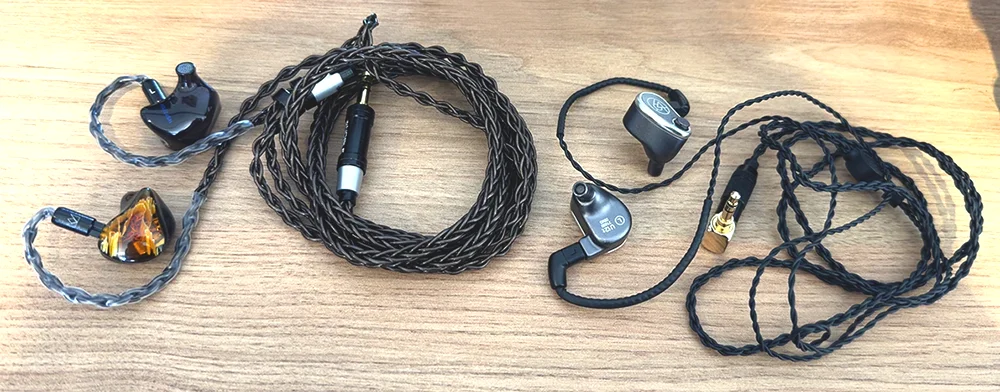
The U12T's shells are far smaller but much less sculpted to fit one's ear geometry, and thanks to their metal construction they're about as heavy as Spartacus. Requiring a volume of 31 from the R6P2's more underpowered 3.5mm jack the U12Ts are similarly easy to drive.
U12T bass quantity is far lower and their bass texture is not as satisfying either, so this feels like an area where Spartacus is considerably more capable. The U12T have a smoother, more neutral presentation and their midrange feels less aggressive & better balanced than Spartacus', however their treble is also more muted which perhaps contributes to accusations of a "boring" tonality some reviews have thrown at them.
Spartacus' stage is deeper and slightly wider, though both IEMs feel similarly resolving. To me the U12Ts stand up really well even in today's market, and I find them more engaging than say the Monarch MKIIIs which perhaps try to emulate a similar sound, but having said direct comparisons to Spartacus definitely have them showing their age.
Fir Audio RN6 (USD $3299)
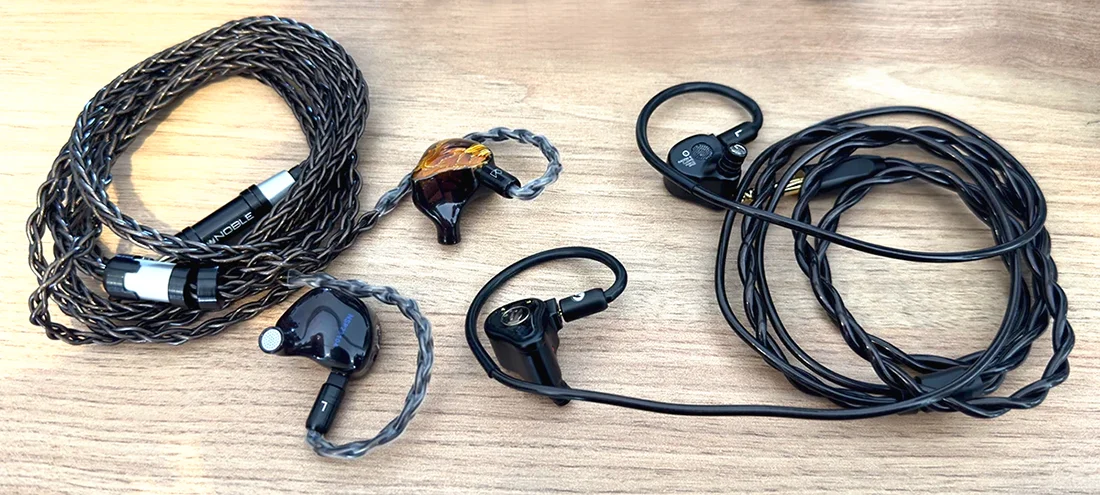
Much like the U12Ts, the RNs' shells are much smaller than Spartacus but less sculpted to one's ears. Requiring 23 volume on the RN6 they're about as easy to drive.
The RN6's feature considerably less bass quantity than Spartacus but their bass quality is excellent. They're fairly midrange-emphasised, and I notice more upper midrange bias on the RN6s whereas Spartacus has a more bodied midrange stemming from its' lower midrange boost. RN6 has a more polite, smoother tonality and is impressively well-balanced overall, with more lower treble present.
RN6's stage is slightly deeper but not quite as wide, though they aren't as dynamic as Spartacus which I find more exciting as a result of their tuning, though RN6 is probably the safer choice for most people.
Noble Audio Ronin (USD $3900)
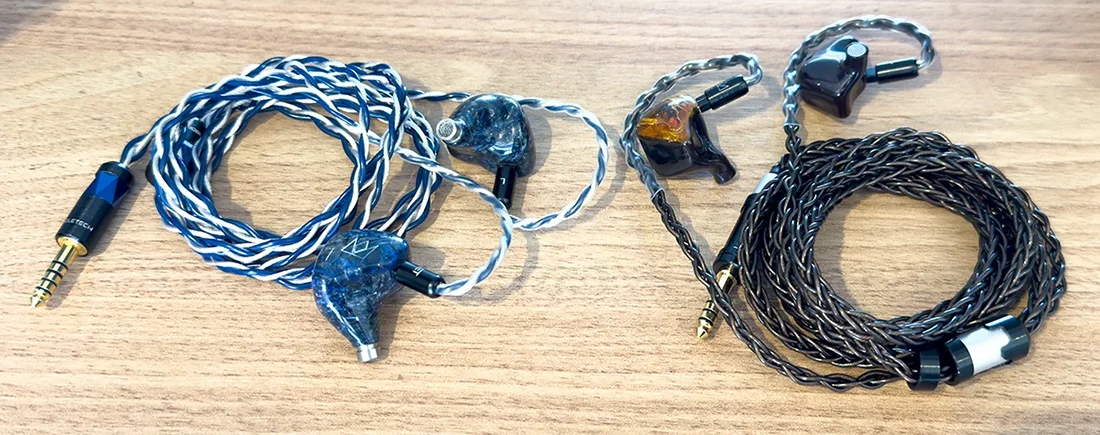
Ronin are physically much larger than Spartacus and stick out a proverbial mile, and though I don't find them uncomfortable they surprisingly don't isolate quite as well as Spartacus. Requiring 23 on the R6P2 they're similarly easy to drive.
Ronin's bass quantity is considerably lower than Spartacus' and is textually a little mushier. Reminiscent of the RN6, Ronin are quite midrange-centric with one of the most spectacularly beautiful midranges I've heard, reminiscent of the Penon Impacts. Treble is less accentuated on Ronin, and despite feeling much more refined than Spartacus I can hear Noble's house sound coming through in both.
Ronin's stage is about as wide but deeper than Spartacus', and both IEMs are similarly dynamic & resolving. Spartacus comes across as more v-shaped and exciting which is a tuning I prefer, but Ronin may prove less fatiguing during long listening sessions.

I recently received a Mass Kobo 475 portable headphone amplifier and have been keen to learn how Spartacus scales with beefier amplification. Having previously owned the Aroma A100TB, ALO Audio Continental Dual Mono and demoed the Cayin C9 & Brise Audio Tsuranagi, I rate the 475 as simply the best portable amp money can buy. It's fully balanced with 4.4mm input & output, and delivers 2.3V RMS from its’ balanced jack.
To make the test more interesting I paired the 475 with the Cayin N8ii, which already possesses one of the most impressive built-in amplifiers of any DAP on the market, and compared Spartacus' performance from the N8ii/475 combo to the N8ii on it's own, set to hi-gain, solid state mode with P+ enabled.
The 475 has a v-shaped tonality, so as expected it transforms Spartacus' bass to feel much larger & more impactful, though I do feel it shift slightly towards a midbass rather than sub bass emphasis. Spartacus' midrange doesn't seem to be altered significantly, but treble is definitely more prominent now which is problematic given Spartacus already leaned towards brightness.
Improvements to technical performance are hugely substantial, which is where 475 comes into its own - Spartacus' soundstage grows in both width and depth, resolution goes up dramatically with tiny nuances rendered more effortlessly, note weight increases, imaging is more precise, dynamics improve, and control during busy passages increases which helps instruments remain distinct when many are playing at once. Many of these are existing Spartacus strengths that are made even stronger.
Admittedly the N8ii isn't the best tonal pairing given it's already quite bright which 475 only accentuates, so a warmer source is recommended if you choose to pair a 475 amp with Spartacus. However the experiment proves Spartacus' driver configuration (lacking dynamic or EST drivers) absolutely does not prevent it scaling massively with better amplification.
Penon Obsidian (USD $149)

In my recent review of the Obsidian I talked about how this novel modular cable can be sonically tweaked by swapping plugs made from different materials.
With the Purple Copper plug in place the Obsidian creates a warmer sound, with a slightly narrower & flatter stage though imaging does not feel less precise. Bass impact is lower, though tonality has improved as treble feels more restrained than on the stock cable without any perceptive loss of detail.
Swapping to the Rhodium plug this feels closer to stock with added treble presence, now the stage feels slightly wider, sub bass has a bit more impact and background blackness has improved. Rhodium is my preferred plug for Spartacus though I still like the stock cable pairing better.
NiceHCK AceOrpheus (USD $260)

NiceHCK's cheeky branding aside, I'm saddened to report this cable does not match PW Audio's Orpheus at 4% of the price.
AceOrpheus is an interesting cable which almost has a way of slowing down Spartacus' bass to make it feel more analogue, yet bass is definitely more impactful on the stock cable. AceOrpheus feels quite diffuse with vaguer imaging and comes across as a bit wooly, yet it does project a deeper & taller stage that can even make instruments feel larger, although treble is definitely muted.
Everything seems to tighten up going back to the stock cable which also boasts a blacker background, but AceOrpheus does create a sense of scale that's quite unique for such a modestly priced cable - I just wish it weren't so deficient in other areas.
Hakugei Sky-bolt (USD $884)

The Sky-bolt has been my go-to cable for enhancing IEM technical performance for some time now, so my expectations for this pairing were high.
Sky-bolt makes bass actually feel less impactful than on the stock cable, though treble feels more prominent and resolution may correspondingly be slightly higher. Dynamics are less impressive, and although the stage is deeper it doesn't seem much wider, though Sky-bolt does provide the feeling of being seated further back from the performers.
This pairing is disappointing given the dramatic improvement Sky-bolt has made to many other IEMs, but that says something about the impressive technical performance of Spartacus' stock cable.
PW Audio 1950s clone (USD $2149)
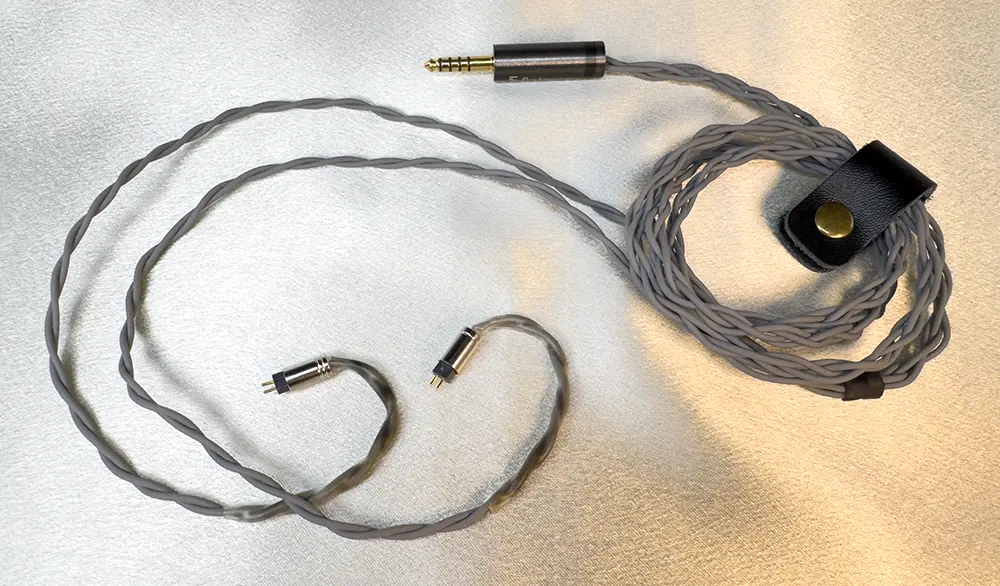
My DIY Cardas Clear clone of PWA's 1950s cable is probably the best all-round cable in my collection, so I was very excited to try it with Spartacus.
Cardas Clear's bass is slightly less impactful than the stock cable's and overall bass feels more tightly integrated into the rest of the presentation, with a smoother tonality that's a bit more polite. High frequencies aren't as sharp & potentially fatiguing as they are on the stock cable either, yet resolution is actually slightly higher on the Cardas Clear - perhaps aided by its' blacker background.
The stock cable's stage is actually slightly wider and although Cardas Clear's is deeper, it really doesn't feel as though the 1950s clone has brought technical performance to a higher level across the board. I do find the 1950s clone less fatiguing, but find the more v-shaped sound of the stock cable more exciting, rendering this cable pairing less successful than its' been with other IEMs.
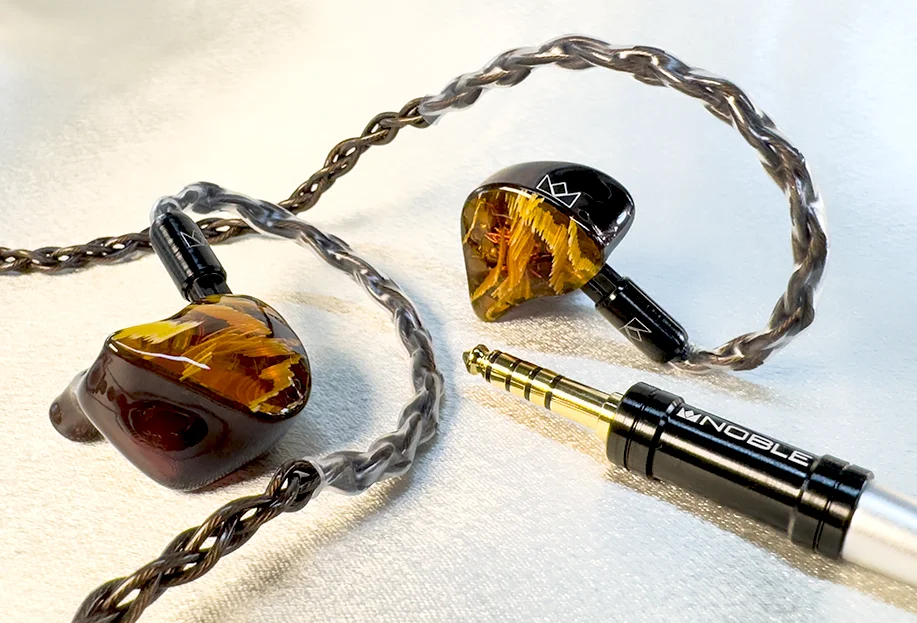
It's tough to be objective in a hobby as subjective as ours, and even harder when you fall madly in love.
Yes, I'm in love. I want to have Spartacus' babies even if that involves growing ovaries.
To my ears they offer the perfect mix of massive bass, incredible resolution, enormous soundstage and a midrange to die for. Most of all though, they're fun. They're bombastic, groovy and in-your-face in a way that earphones with great technical chops generally aren't. They're not trying to be "accurate" or authentic to whatever the artist supposedly intended, they just want you to have a really good time.
It's entirely possible you may not like Spartacus as much as I do. You may insist on your IEMs containing a dynamic driver, or you may find Spartacus a bit too aggressive and prefer something more laidback. There's no way to know except by trying them, and I strongly encourage you to do so.
These are by far my favourite Noble IEMs so far, and I'd love to see them tune more earphones similarly in future. Thanks to Addicted to Audio for making this review possible!
During a recent visit to my local dealer Addicted to Audio, a staff member happened to mention trying a pre-release Noble Audio earphone called Spartacus, and being floored by its' performance for a relatively modest price by high-end IEM standards.
Having never owned a Noble IEM my curiosity was piqued, but I'll admit to being skeptical the staffer's vaunted praise was warranted - we've all been impressed by an audio gadget that wowed us on first listen, only to later reveal its' flaws.
A fortnight later the chance to try Spartacus came, and it's fair to say I was immediately smitten. Bells started ringing in my ears that this was "the one" and my wallet would've let out a long, mournful sigh if it could've. Spartacus' massive bass & soundstage, coupled with a fast, incisive sound and incredibly rich vocals grabbed me by the collar from the first second.

After some friendly negotiations (that may or may not have included me begging) Addicted to Audio generously agreed to provide a discount in exchange for the review you're now reading.
So then, the USD $1799 Noble Audio Spartacus are as visually distinctive with fibre composite faceplates as their 4x BA / 2x BCD driver config is unusual, and I was curious for that reason alone.
They utilise Sonion Bone Conduction Drivers which I'm glad to see becoming prevalent in the market, as prior to acquiring Mest MKIII's I'd never owned a set of BCD earphones but have immediately become a fan. There's something special about BCD imaging & staging which feels almost impossible to duplicate in IEMs without them, and I noted Spartacus contain not one but two BCDs in each earpiece.
Would twin BCDs mean double the magic? With a gleam in my eyes I tore the wrapping off the box, eager to discover the answer!
Packaging

Spartacus arrive in a large, high quality foam-lined composition board box that feels suitably premium.

Upon opening the box you'll be greeted with a genuine Nanuk 903 waterproof hardcase that feels like it's been built to house delicate scientific instruments or plutonium fuel rods.
Inside you'll find an assortment of goodies - firstly a velvet drawstring pouch, a small leather carry case, warranty card, Noble emblem sticker, a pair of Noble branded elastic bands for strapping a portable amp to your DAP, a shirt clip, and four sets of eartips in three sizes.
...along with the stuff that matters: The earpieces & stock cable - a modular 8 wire silver-plated copper cable with 4.4, 3.5 & 2.5mm terminations I've since found to be extremely sonically impressive.
Ergonomics

Ergonomically Spartacus are reminiscent of previous Noble Audio IEMs - vented resin shells on the larger end of the scale, but well-sculpted to the natural shape of the human ear.
I was initially concerned size would be a problem, but having lived with them for weeks this hasn't proved to be the case. They're large, and I don't quite forget I'm wearing them as is the case with smaller hybrids, but to my ears they're not uncomfortable.
One consequence of that bulk is they're one of the best-isolating universal earphones I've worn, and the amount of background noise they can drown out on noisy trains lies close to the noise cancellation provided by second generation Airpod Pros.

The stock cable feels ergonomically appropriate being a beefy 8 wire affair, yet light enough that I wouldn't say ergonomics are a problem. Effect Audio's Eros S feel similar in girth to this, though thankfully the Spartacus stock cable has a much lighter Y-split.
The modular plug holds in place magnetically, and has thus far given the impression of being better designed than most modular plugs on the market, only detaching unwantedly on very rare occasions.
Sound Impressions

Spartacus delivers a big, muscular sound yet provides all the audiophile niceties you demand. Let's start from the bottom.
Bass is enormously impressive given it's produced by a pair of BA drivers, with highly elevated quantity and seriously impressive texture.
At times I need to remind myself there isn't a dynamic driver in there, and although the slam & rumble can't quite measure up to the best DD-fuellled basshead IEMs, on many tracks I actually prefer Spartacus' bass output to that of Mest MKIII for instance.
In fact at first listen it's easy to get the impression Spartacus is a bass-first IEM where the lower frequencies are prioritised with north-of-neutral quantity, but the more you listen the more you'll marvel at how little has been sacrificed from the rest of the frequency spectrum to achieve this.
Bass is clean in the sense it does not bleed into the midrange, and despite possessing superb texture by BA standards is incredibly responsive so Spartacus will effortlessly keep up with fast-paced music.

Moving to the middle, Spartacus' midrange has a huge amount of presence and warmth with tremendous resolution worthy of a flagship IEM. Vocals are positioned aggressively forward with impressive note weight, and instruments in general are rendered very large.
Combined with the voluminous bass output, this helps create a bold, brash sound that's loaded with excitement. The downside is if you happen to find forward vocals fatiguing, but for my taste they provide a massive sense of engagement.
Spartacus' lower treble is very prominent, aided by its' silver-plated copper stock cable, so if you're into electronic or classical music like me you won't find Spartacus too dark to do such genres justice.
Having said that, upper treble can at times feel slightly restrained, and though I'm reluctant to label Spartacus' treble a weakness it's definitely an area where some more expensive IEMs are able to render violins with greater delicacy - most commonly those with EST drivers.
Technical Performance

The first thing I notice about Spartacus is the impressive width of their soundstage. It isn't the absolute widest I've ever heard (Elysian Annihilator earns that trophy) it isn't far off, and is a standout attribute.
Stage depth isn't as impressive - slightly above average without being exceptional, though not so shallow as to present itself as a weakness. Actually Spartacus' stage dimensions are somewhat unusual in that it feels like I'm 'looking down' on the stage from slightly above more than normal.
Spartacus' dynamics are nothing short of superb, and greatly contribute to their excitement. Dynamics go a long way towards enhancing my musical enjoyment (a reason I advocate for portable amplifiers which boost this area) and those awesome dynamics help generate Spartacus' bold presentation.
Imaging is very solid without jumping out as special, likely Spartacus' more restrained upper treble is the reason this isn't a greater strength. The addition of EST drivers would've helped, and though I do not hear Spartacus' imaging as deficient it isn't spectacular enough that I'd pick them up purely for the joy of how they render pinpoint instruments in space. Similarly, though their background is acceptably black I wouldn't say its' quite as dark as class-leading IEMs in this area.
Finally, deserving special mention is Spartacus' tremendous speed. Without a dynamic driver to slow things down they're blisteringly quick at rendering complex musical passages cleanly with instruments remaining distinct, yet still delivering a brash & bold presentation with gobs of deep bass.
IEM Comparisons

I compared Spartacus with a number of IEMs at hand using the Hiby R6 Pro II I recently reviewed, with Spartacus requiring a volume level of 21 in hi-gain, AB mode.
ISN EST50 (USD $449)

The EST50s are slightly smaller and stick out a bit less. I also find their shells are narrower in the areas near the nozzle that makes contact with my ear so they don’t fit as snugly as Spartacus, which makes them slightly more comfortable but they don’t seal as strongly. Requiring 19 volume on the R6P2 they're similarly easy to drive.
It's immediately obvious the EST50s' DD-fuelled bass is much slower than that of Spartacus and struggles to keep up with fast paced music, but the EST50s' bass does boast more satisfying slam & texture. However the EST50s sound more congested with a soundstage that's both narrower & shallower. They're also darker, with a warmer, lower-resolution presentation that can get a little boomy at times.
Like Spartacus the EST50s are a bass-first IEM, but it feels like so many other aspects of their presentation have been sacrificed to achieve this whereas Spartacus is feels far more open, resolving and refined despite bass quantity being fairly similar.
Penon Turbo (USD $549)

The Turbos are much smaller, lighter & far more comfortable than Spartacus but don't isolate nearly as well thanks to less bulk blocking the ear opening. Requiring 25 volume on the R6P2 they're slightly harder to drive.
The Turbos' are more midbass-emphasised and their bass texture isn't as impressive, feeling a little mushier than that of Spartacus. Turbos' midrange is positioned further back and their overall tonality is more polite than Spartacus' who's midrange is much richer and more forward, but can feel more aggressive as a result. The Turbos are also tuned darker, which is perhaps responsible for their imaging being less defined.
Spartacus definitely have a blacker background with superior dynamics & better note weight, and although they're more resolving the resolution gap isn't massive. Spartacus' soundstage is also wider, and I find their tonality a lot more musical & engaging whereas the Turbos come across as a little more tonally "hi-fi" & artificial.
Unique Melody Mest MKIII (USD $1899)

MEST MKIII is about the same size as Spartacus but a little thinner in the section that makes contact with my ear so they're slightly more comfortable but don't isolate as effectively. It must be said the MKIII stock cable has some of the worst ergonomics of any cable I've tried, being especially stiff below the Y-split. Requiring 23 volume on the R6P2 MEST is similarly easy to drive.
MEST MKIII's dynamic driver is much faster than the EST50s' so there isn't the issue of it struggling to keep up, but bass quantity is definitely lower with much less sub bass presence in particular than Spartacus, though MEST's DD bass texture is slightly superior but Spartacus comes awfully close.
MEST's presentation is quite v-shaped and its' weakness is its' midrange, with a cooler tonality that feels fairly thin & emotionally unengaging as opposed to Spartacus' midrange being warmer and much more forward with instruments that sound larger. When it comes to treble the tables are turned, with MEST's much higher quality treble (particularly upper treble) exposing Spartacus' shortcoming in this area.
MEST's stage is deeper with a blacker background but Spartacus' is wider, and though resolution between them is similar it feels like MEST is resolving slightly more detail simply by pushing more treble at me. MEST's imaging does feel marginally more precise, though both IEMs appear to utilise their BCDs really well and I wonder if MEST's slightly higher technical performance is the result of being tuned to prioritise technicality over tonality.
More IEM Comparisons
I also compared Spartacus with IEMs at Addicted to Audio in Melbourne, and again the Hiby R6 Pro II was used with Spartacus requiring a volume level of 21 in hi-gain, AB mode. These impressions are more abstract in light of the difficulty of picking up subtle nuances in a noisier environment.Thieaudio Monarch MKIII (USD $999)

Similarly sized to Spartacus, the Monarch MKIIIs require a volume of 30 on the R6P2 so they're more difficult to drive.
The MKIIIs have less bass quantity than Spartacus with midbass emphasised over sub bass, and overall sound more refined with a smoother presentation that's less warm & visceral than Spartacus. The MKIII's maintain much of the Monarch MKII's flat tonality that's very neutral & uncoloured, but thankfully they are a little more lively this time around.
The soundstage of both IEMs is similarly wide but Spartacus' stage is deeeper, and Spartacus also comes across as brighter with a more forward & aggressively-tuned midrange. Spartacus is perhaps a touch more resolving but the MKIII competes well in this area given its' more modest price.
64 Audio U12T (USD $1799)

The U12T's shells are far smaller but much less sculpted to fit one's ear geometry, and thanks to their metal construction they're about as heavy as Spartacus. Requiring a volume of 31 from the R6P2's more underpowered 3.5mm jack the U12Ts are similarly easy to drive.
U12T bass quantity is far lower and their bass texture is not as satisfying either, so this feels like an area where Spartacus is considerably more capable. The U12T have a smoother, more neutral presentation and their midrange feels less aggressive & better balanced than Spartacus', however their treble is also more muted which perhaps contributes to accusations of a "boring" tonality some reviews have thrown at them.
Spartacus' stage is deeper and slightly wider, though both IEMs feel similarly resolving. To me the U12Ts stand up really well even in today's market, and I find them more engaging than say the Monarch MKIIIs which perhaps try to emulate a similar sound, but having said direct comparisons to Spartacus definitely have them showing their age.
Fir Audio RN6 (USD $3299)

Much like the U12Ts, the RNs' shells are much smaller than Spartacus but less sculpted to one's ears. Requiring 23 volume on the RN6 they're about as easy to drive.
The RN6's feature considerably less bass quantity than Spartacus but their bass quality is excellent. They're fairly midrange-emphasised, and I notice more upper midrange bias on the RN6s whereas Spartacus has a more bodied midrange stemming from its' lower midrange boost. RN6 has a more polite, smoother tonality and is impressively well-balanced overall, with more lower treble present.
RN6's stage is slightly deeper but not quite as wide, though they aren't as dynamic as Spartacus which I find more exciting as a result of their tuning, though RN6 is probably the safer choice for most people.
Noble Audio Ronin (USD $3900)

Ronin are physically much larger than Spartacus and stick out a proverbial mile, and though I don't find them uncomfortable they surprisingly don't isolate quite as well as Spartacus. Requiring 23 on the R6P2 they're similarly easy to drive.
Ronin's bass quantity is considerably lower than Spartacus' and is textually a little mushier. Reminiscent of the RN6, Ronin are quite midrange-centric with one of the most spectacularly beautiful midranges I've heard, reminiscent of the Penon Impacts. Treble is less accentuated on Ronin, and despite feeling much more refined than Spartacus I can hear Noble's house sound coming through in both.
Ronin's stage is about as wide but deeper than Spartacus', and both IEMs are similarly dynamic & resolving. Spartacus comes across as more v-shaped and exciting which is a tuning I prefer, but Ronin may prove less fatiguing during long listening sessions.
Amplification Performance

I recently received a Mass Kobo 475 portable headphone amplifier and have been keen to learn how Spartacus scales with beefier amplification. Having previously owned the Aroma A100TB, ALO Audio Continental Dual Mono and demoed the Cayin C9 & Brise Audio Tsuranagi, I rate the 475 as simply the best portable amp money can buy. It's fully balanced with 4.4mm input & output, and delivers 2.3V RMS from its’ balanced jack.
To make the test more interesting I paired the 475 with the Cayin N8ii, which already possesses one of the most impressive built-in amplifiers of any DAP on the market, and compared Spartacus' performance from the N8ii/475 combo to the N8ii on it's own, set to hi-gain, solid state mode with P+ enabled.
The 475 has a v-shaped tonality, so as expected it transforms Spartacus' bass to feel much larger & more impactful, though I do feel it shift slightly towards a midbass rather than sub bass emphasis. Spartacus' midrange doesn't seem to be altered significantly, but treble is definitely more prominent now which is problematic given Spartacus already leaned towards brightness.
Improvements to technical performance are hugely substantial, which is where 475 comes into its own - Spartacus' soundstage grows in both width and depth, resolution goes up dramatically with tiny nuances rendered more effortlessly, note weight increases, imaging is more precise, dynamics improve, and control during busy passages increases which helps instruments remain distinct when many are playing at once. Many of these are existing Spartacus strengths that are made even stronger.
Admittedly the N8ii isn't the best tonal pairing given it's already quite bright which 475 only accentuates, so a warmer source is recommended if you choose to pair a 475 amp with Spartacus. However the experiment proves Spartacus' driver configuration (lacking dynamic or EST drivers) absolutely does not prevent it scaling massively with better amplification.
Cable Comparisons
Despite being extremely impressed with Spartacus' stock cable I couldn't resist testing how they paired with others in my collection.Penon Obsidian (USD $149)

In my recent review of the Obsidian I talked about how this novel modular cable can be sonically tweaked by swapping plugs made from different materials.
With the Purple Copper plug in place the Obsidian creates a warmer sound, with a slightly narrower & flatter stage though imaging does not feel less precise. Bass impact is lower, though tonality has improved as treble feels more restrained than on the stock cable without any perceptive loss of detail.
Swapping to the Rhodium plug this feels closer to stock with added treble presence, now the stage feels slightly wider, sub bass has a bit more impact and background blackness has improved. Rhodium is my preferred plug for Spartacus though I still like the stock cable pairing better.
NiceHCK AceOrpheus (USD $260)

NiceHCK's cheeky branding aside, I'm saddened to report this cable does not match PW Audio's Orpheus at 4% of the price.
AceOrpheus is an interesting cable which almost has a way of slowing down Spartacus' bass to make it feel more analogue, yet bass is definitely more impactful on the stock cable. AceOrpheus feels quite diffuse with vaguer imaging and comes across as a bit wooly, yet it does project a deeper & taller stage that can even make instruments feel larger, although treble is definitely muted.
Everything seems to tighten up going back to the stock cable which also boasts a blacker background, but AceOrpheus does create a sense of scale that's quite unique for such a modestly priced cable - I just wish it weren't so deficient in other areas.
Hakugei Sky-bolt (USD $884)

The Sky-bolt has been my go-to cable for enhancing IEM technical performance for some time now, so my expectations for this pairing were high.
Sky-bolt makes bass actually feel less impactful than on the stock cable, though treble feels more prominent and resolution may correspondingly be slightly higher. Dynamics are less impressive, and although the stage is deeper it doesn't seem much wider, though Sky-bolt does provide the feeling of being seated further back from the performers.
This pairing is disappointing given the dramatic improvement Sky-bolt has made to many other IEMs, but that says something about the impressive technical performance of Spartacus' stock cable.
PW Audio 1950s clone (USD $2149)

My DIY Cardas Clear clone of PWA's 1950s cable is probably the best all-round cable in my collection, so I was very excited to try it with Spartacus.
Cardas Clear's bass is slightly less impactful than the stock cable's and overall bass feels more tightly integrated into the rest of the presentation, with a smoother tonality that's a bit more polite. High frequencies aren't as sharp & potentially fatiguing as they are on the stock cable either, yet resolution is actually slightly higher on the Cardas Clear - perhaps aided by its' blacker background.
The stock cable's stage is actually slightly wider and although Cardas Clear's is deeper, it really doesn't feel as though the 1950s clone has brought technical performance to a higher level across the board. I do find the 1950s clone less fatiguing, but find the more v-shaped sound of the stock cable more exciting, rendering this cable pairing less successful than its' been with other IEMs.
Conclusion

It's tough to be objective in a hobby as subjective as ours, and even harder when you fall madly in love.
Yes, I'm in love. I want to have Spartacus' babies even if that involves growing ovaries.
To my ears they offer the perfect mix of massive bass, incredible resolution, enormous soundstage and a midrange to die for. Most of all though, they're fun. They're bombastic, groovy and in-your-face in a way that earphones with great technical chops generally aren't. They're not trying to be "accurate" or authentic to whatever the artist supposedly intended, they just want you to have a really good time.
It's entirely possible you may not like Spartacus as much as I do. You may insist on your IEMs containing a dynamic driver, or you may find Spartacus a bit too aggressive and prefer something more laidback. There's no way to know except by trying them, and I strongly encourage you to do so.
These are by far my favourite Noble IEMs so far, and I'd love to see them tune more earphones similarly in future. Thanks to Addicted to Audio for making this review possible!
ruffandruff
Excellent review man!!!
benjifx19
Will the Spartacus fit me if the Thieaudio Monarch MKIII shell is too big






















Enjoyed reading it!